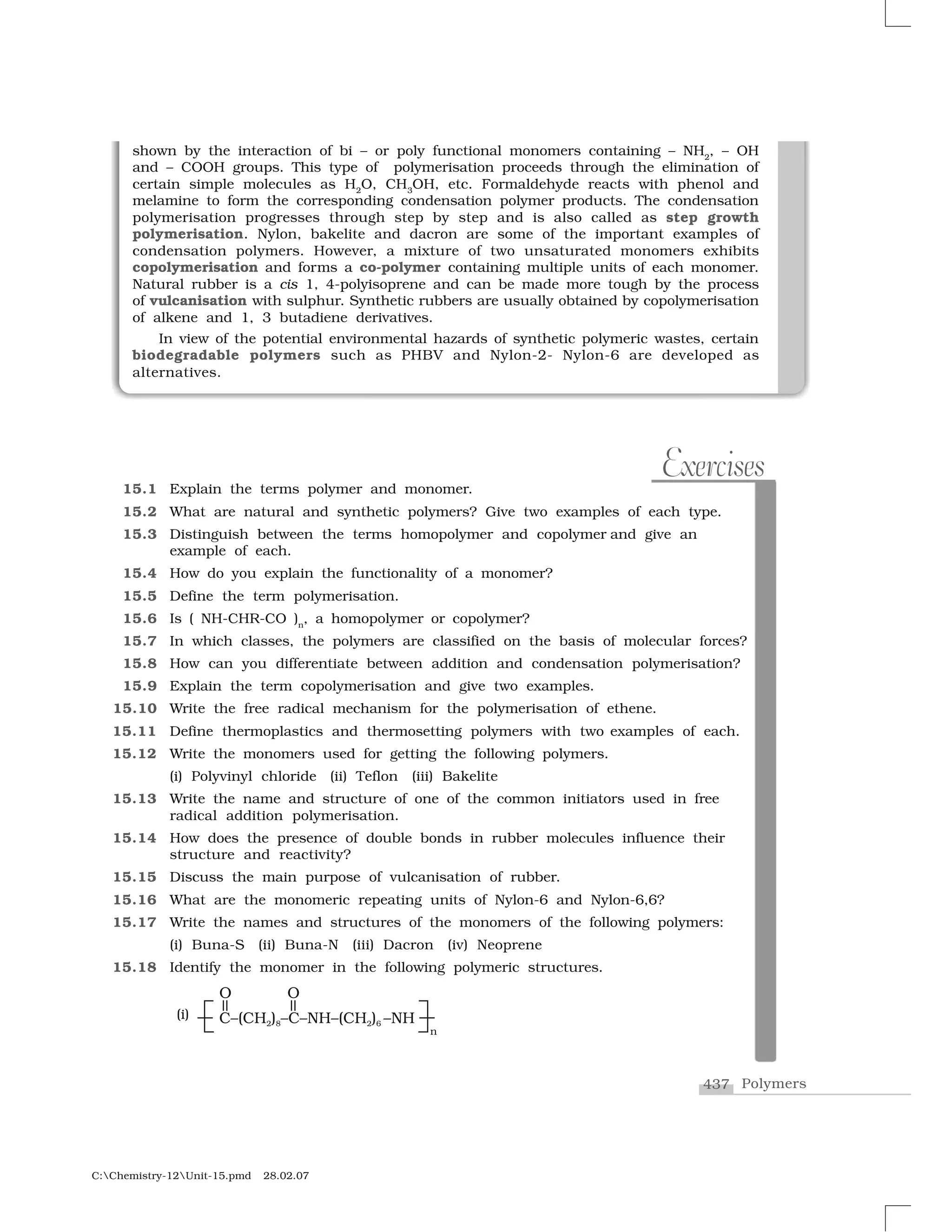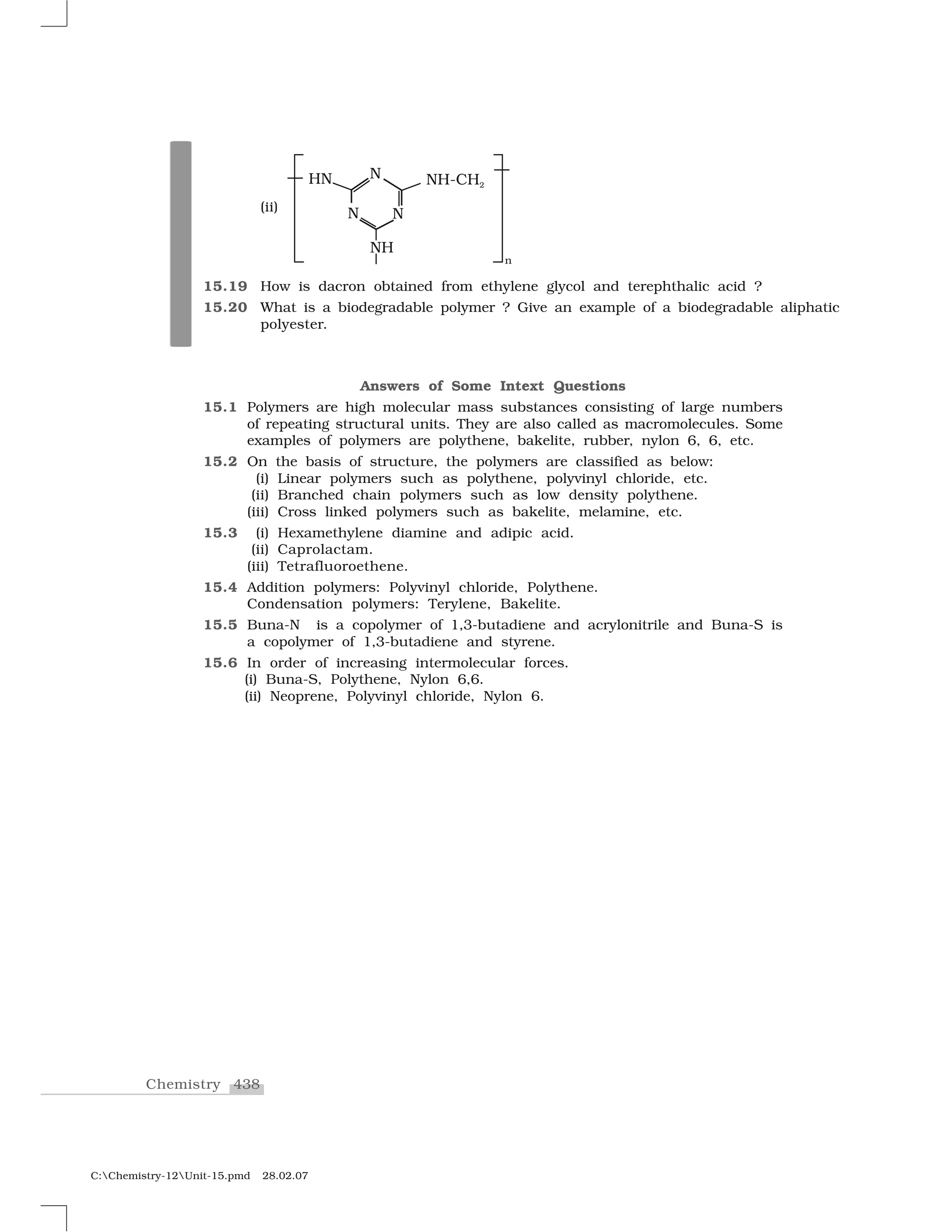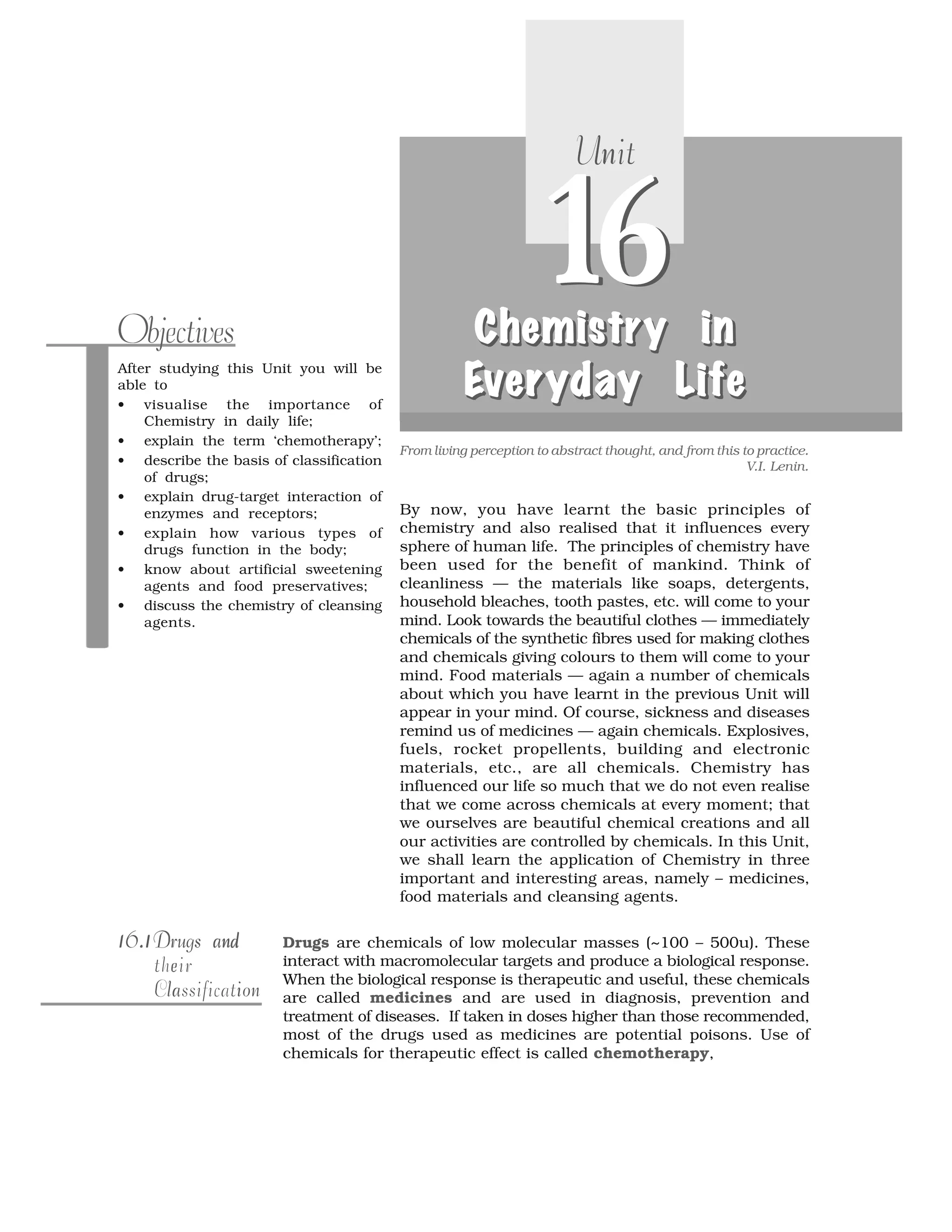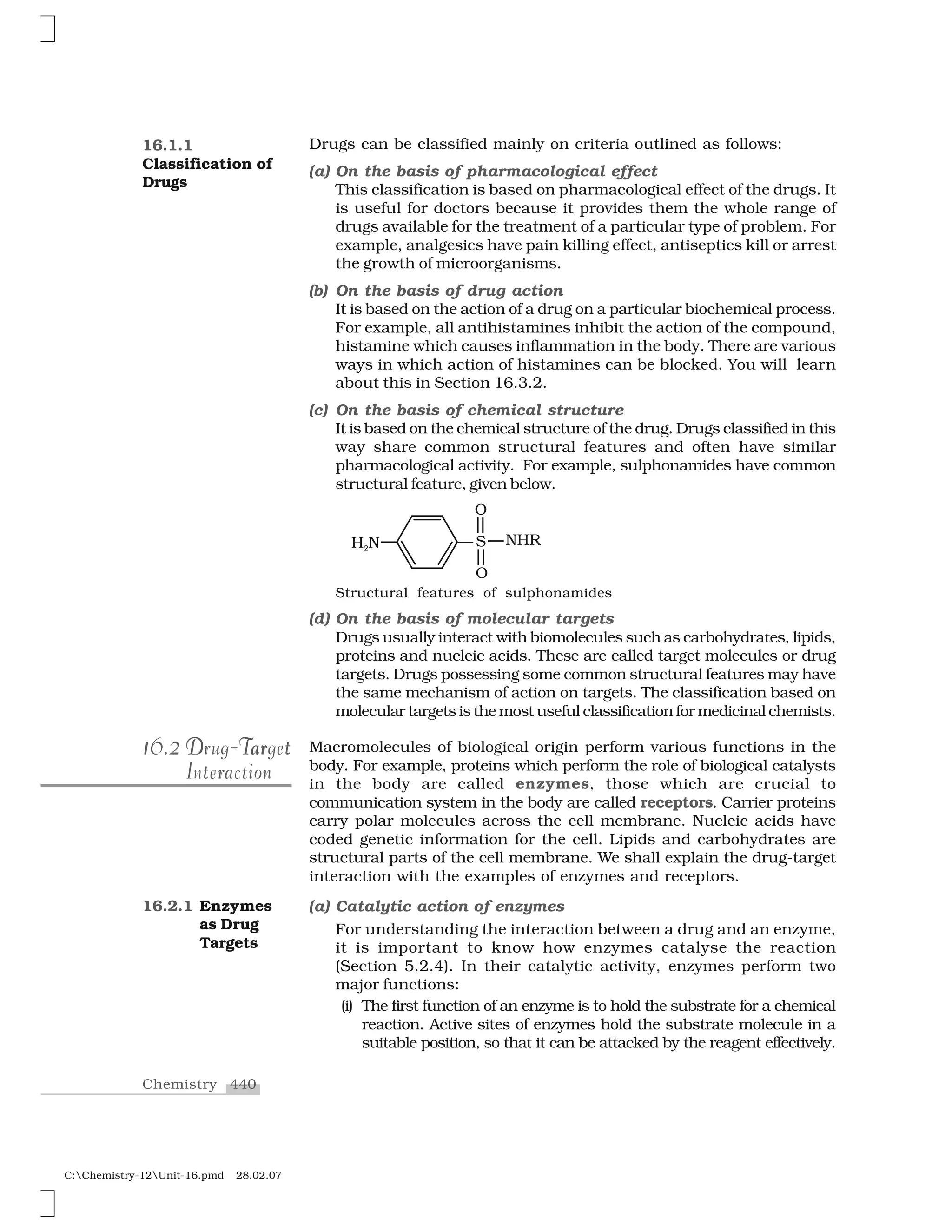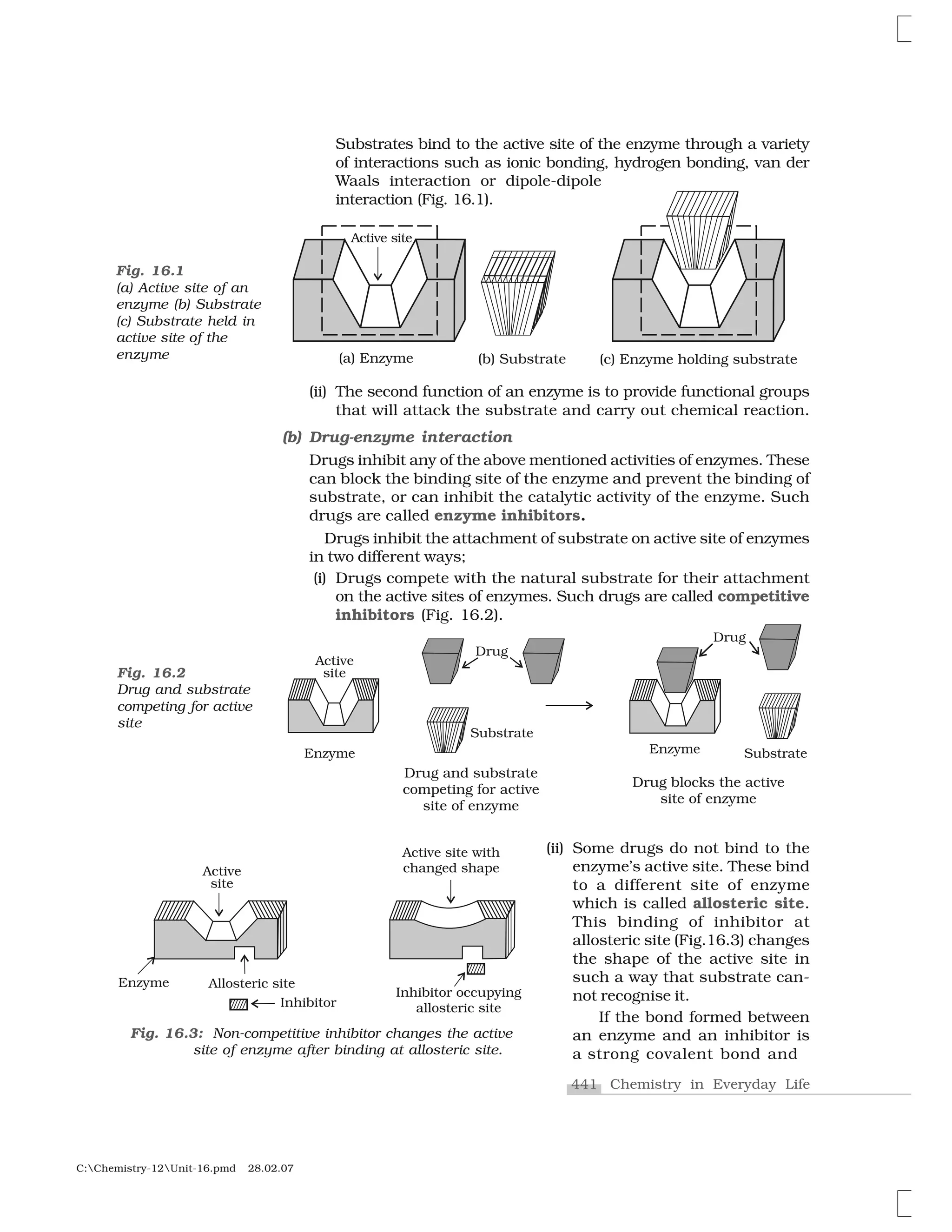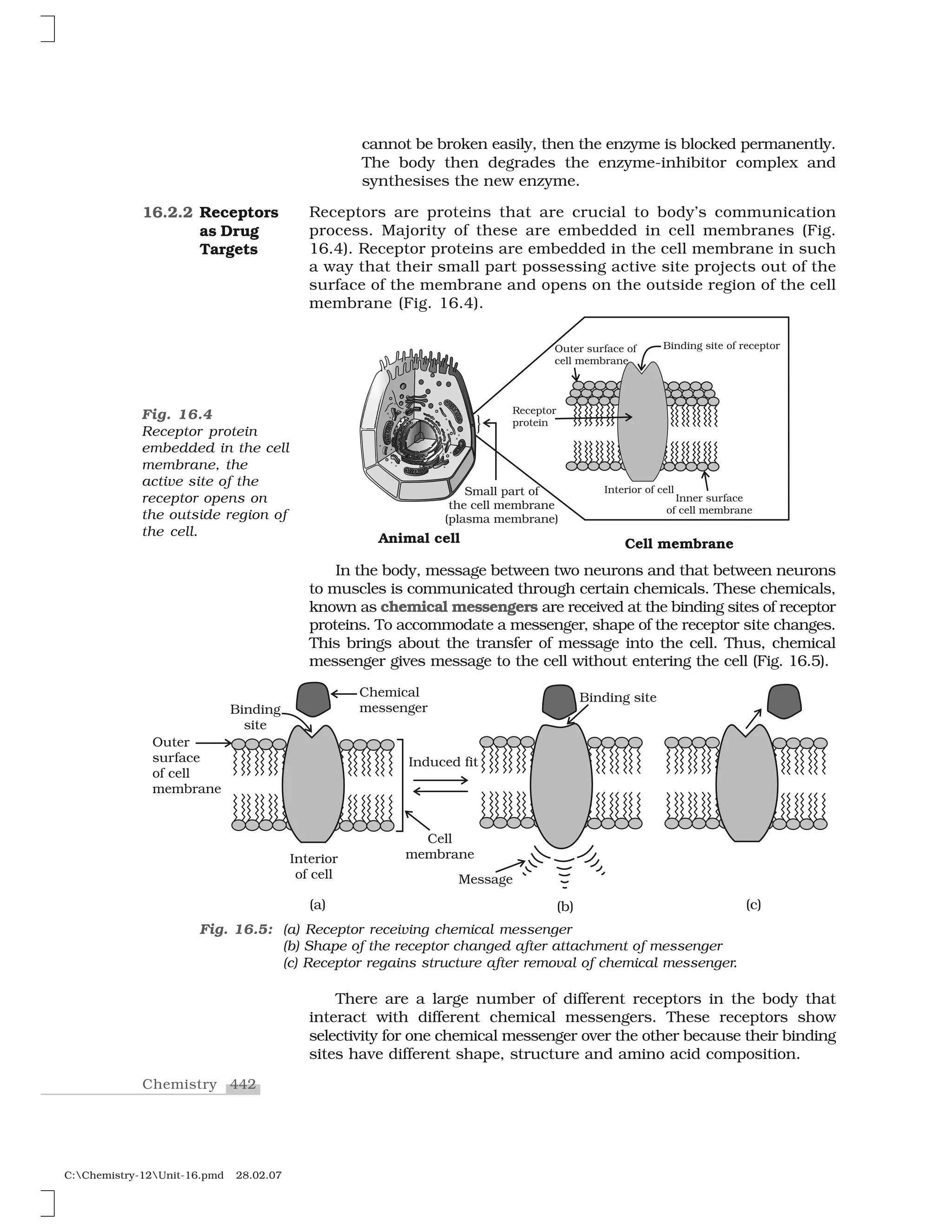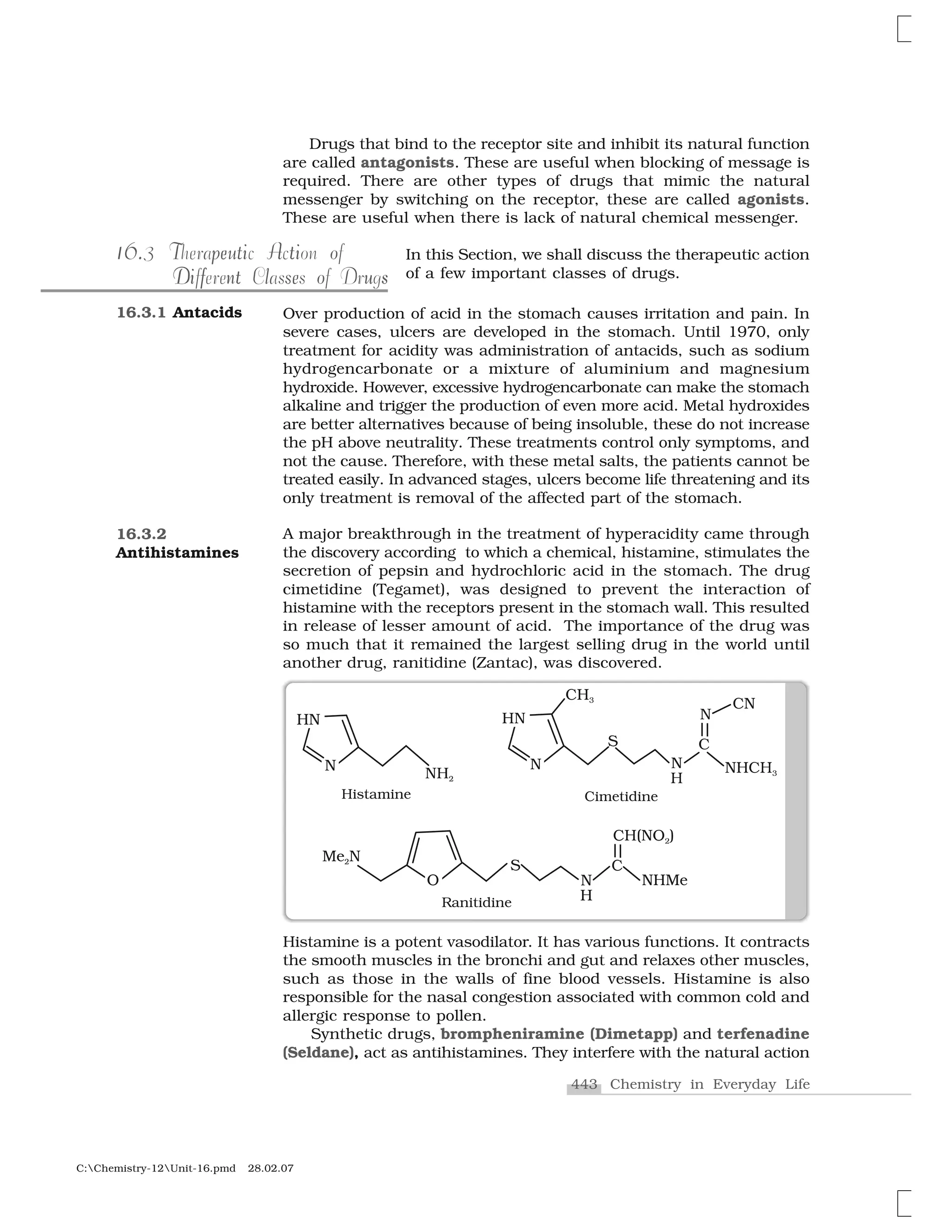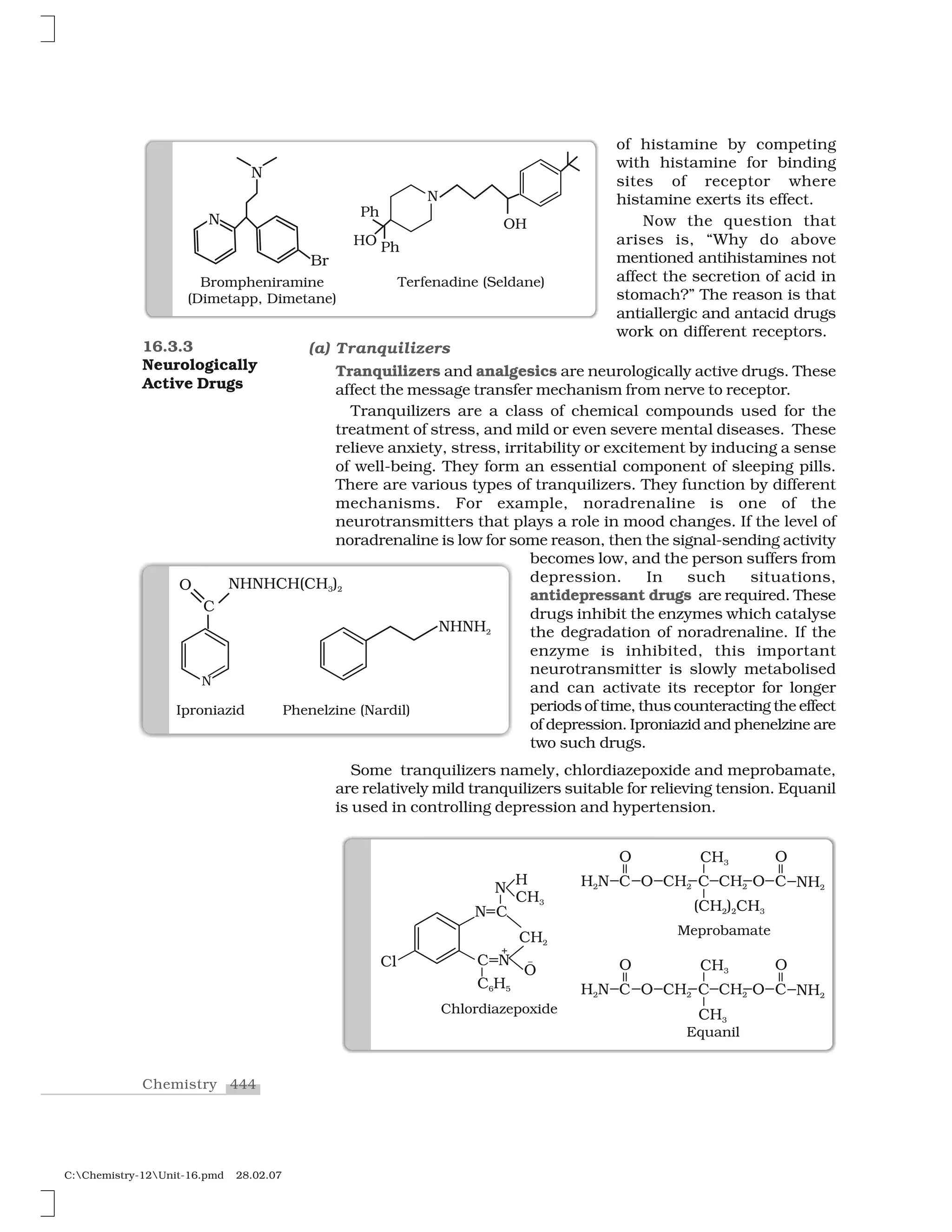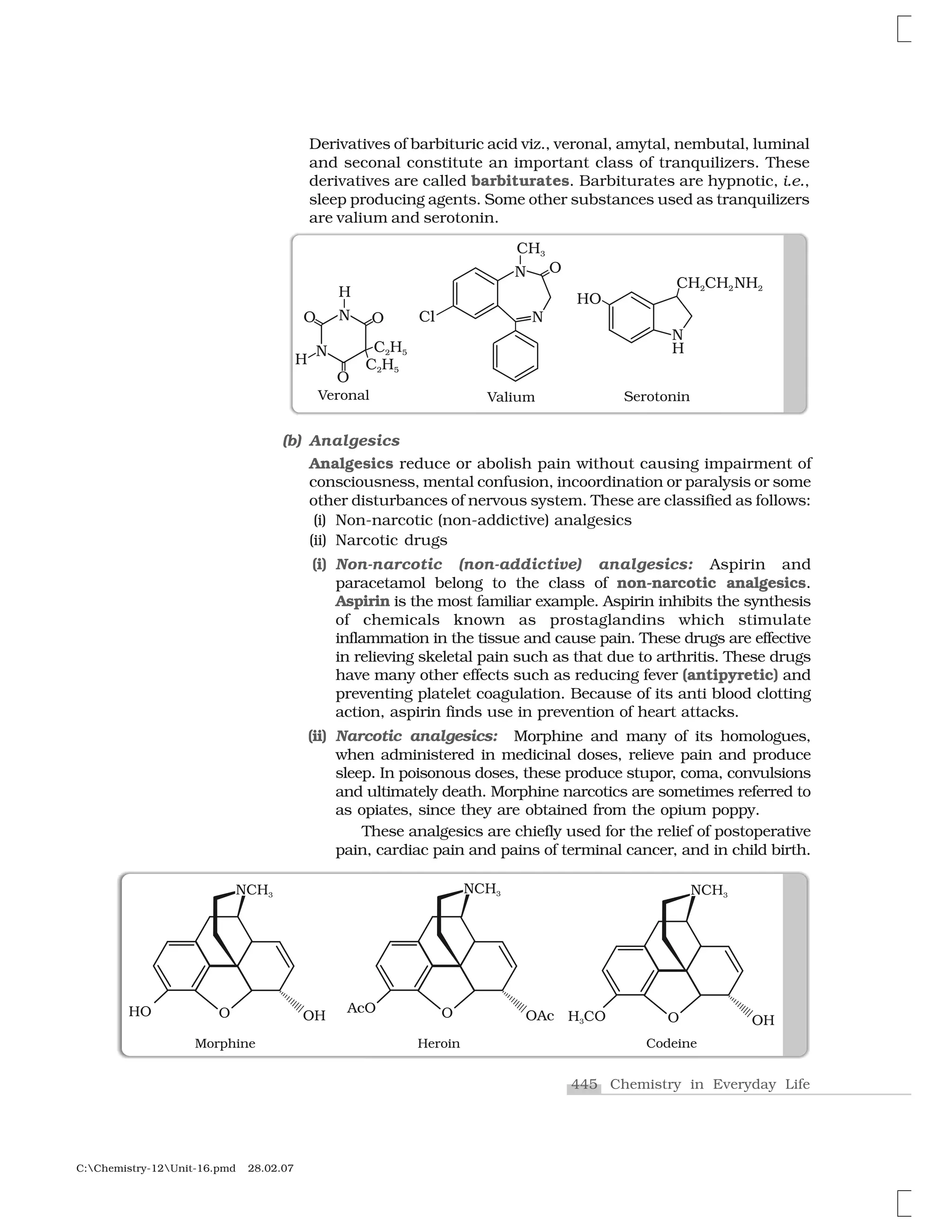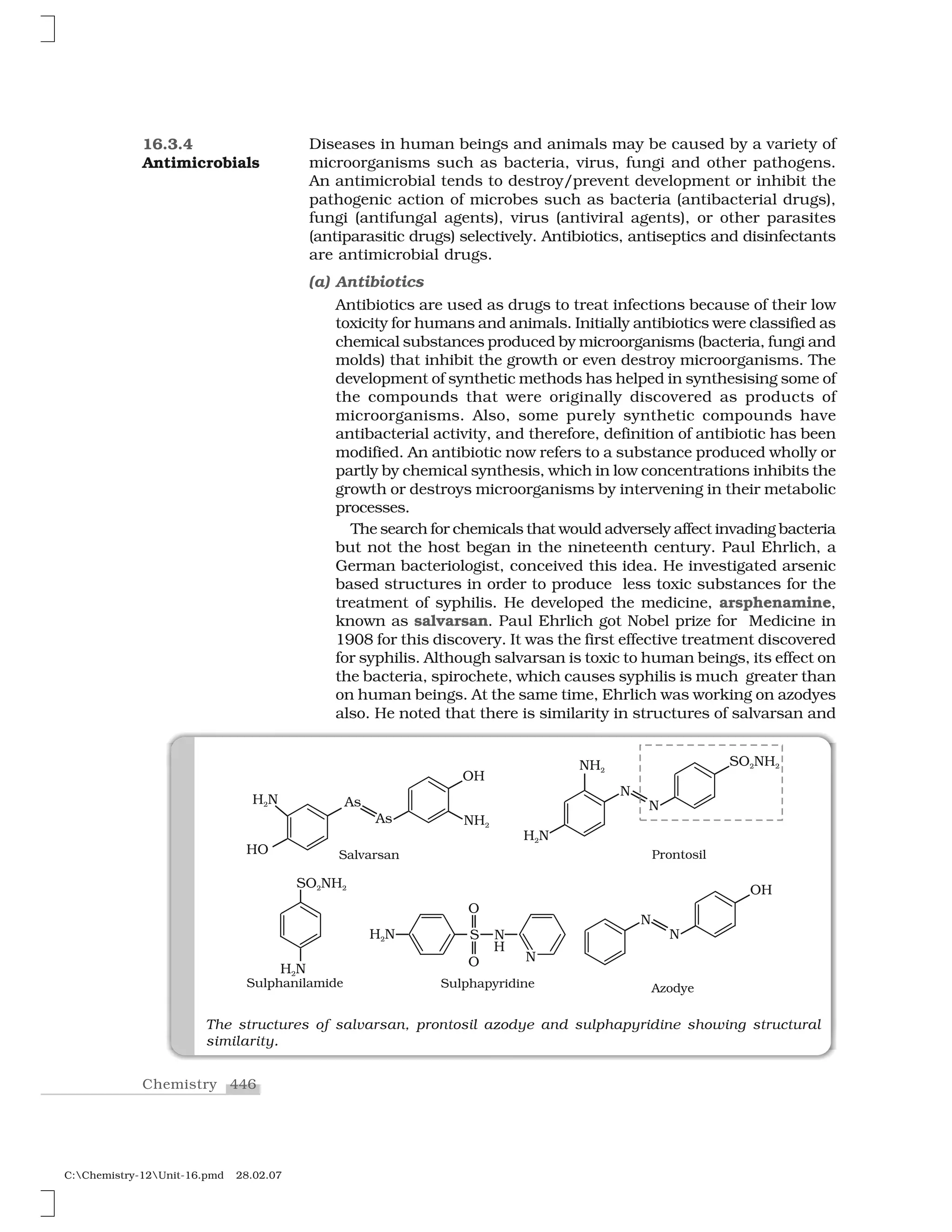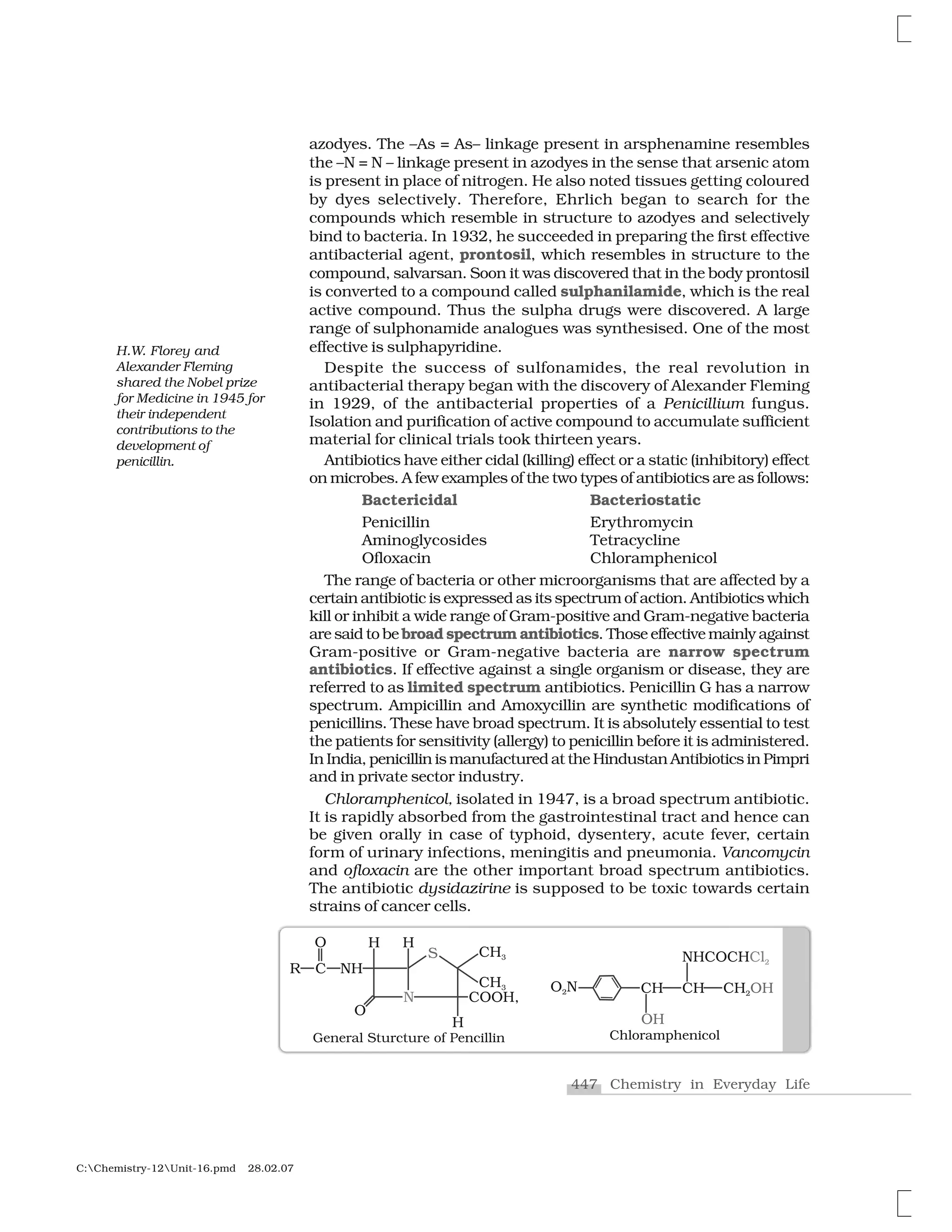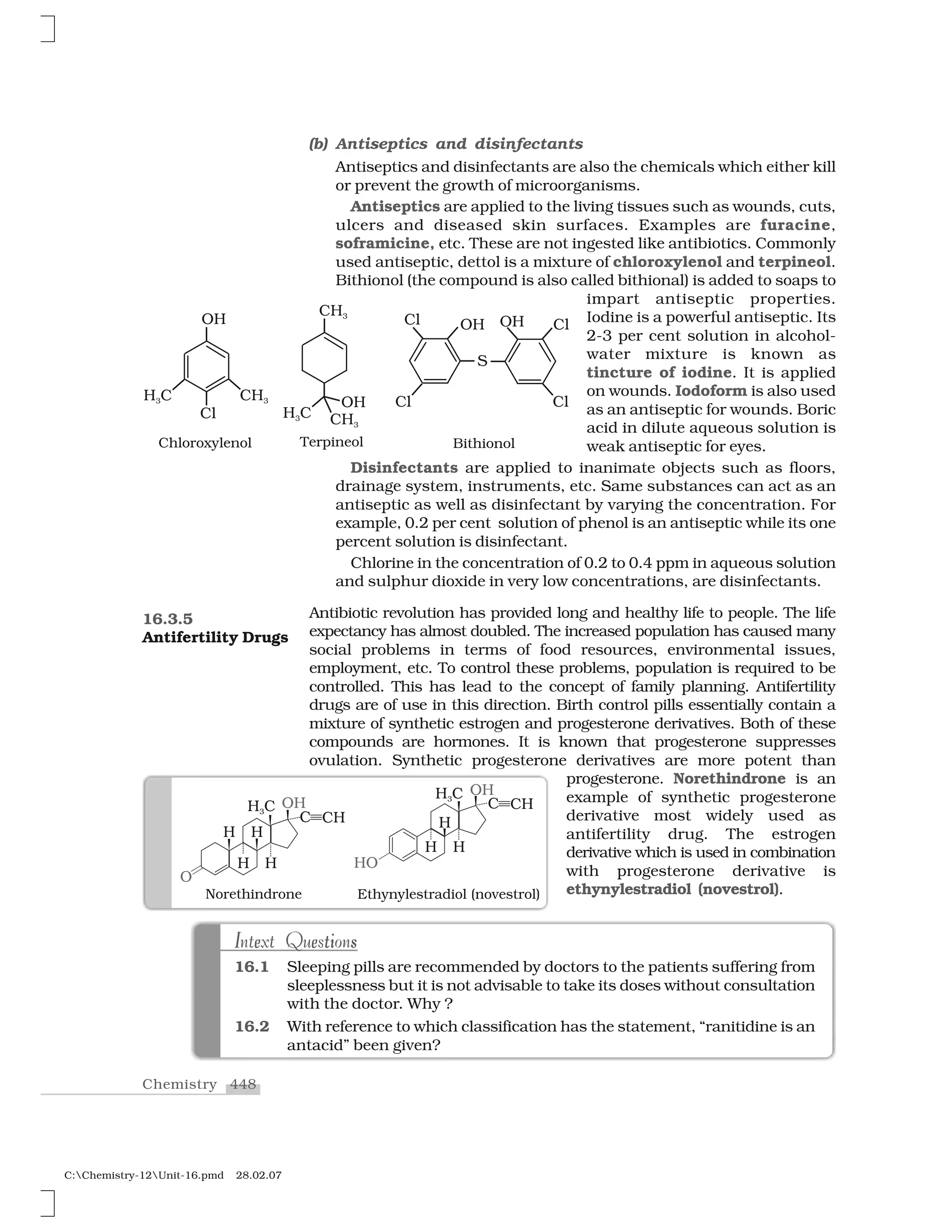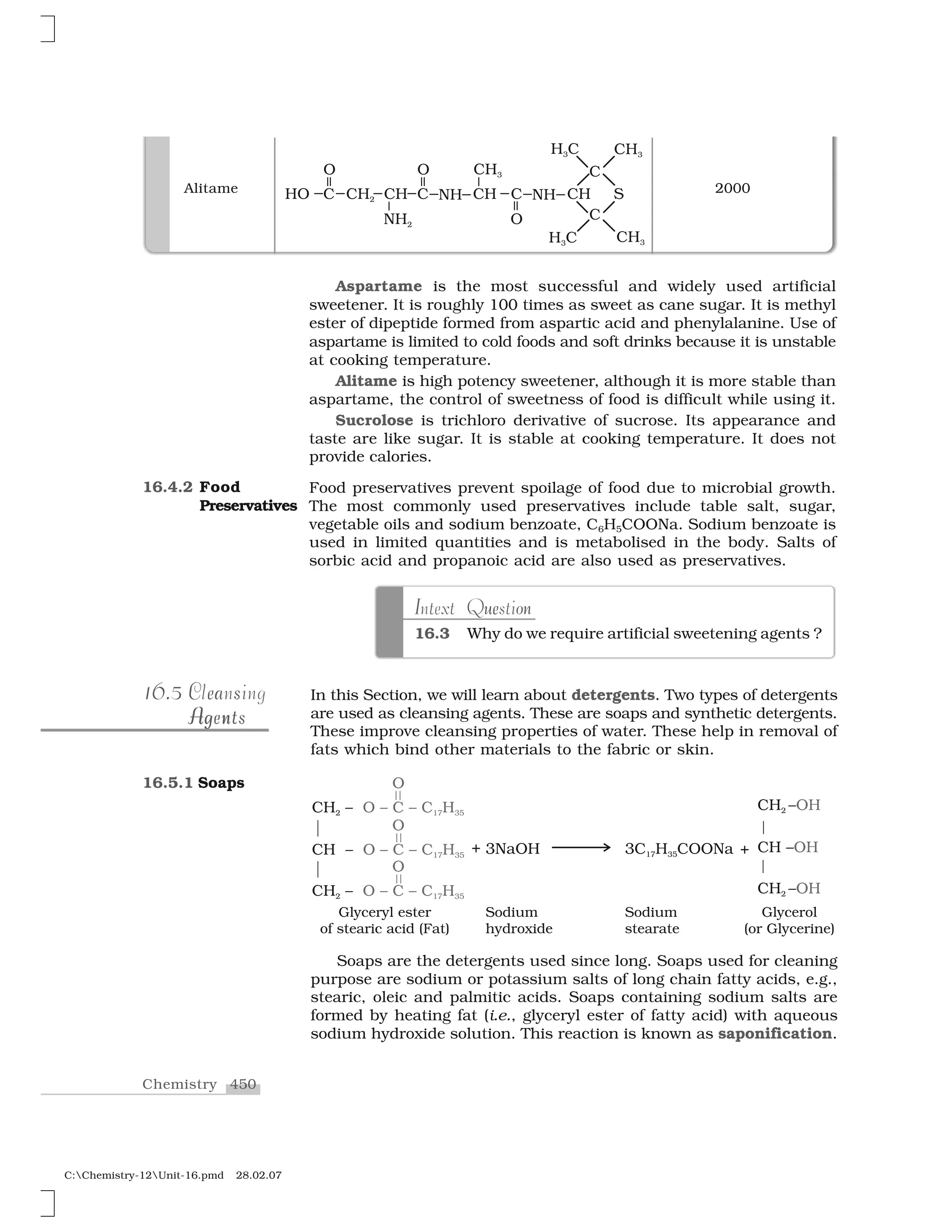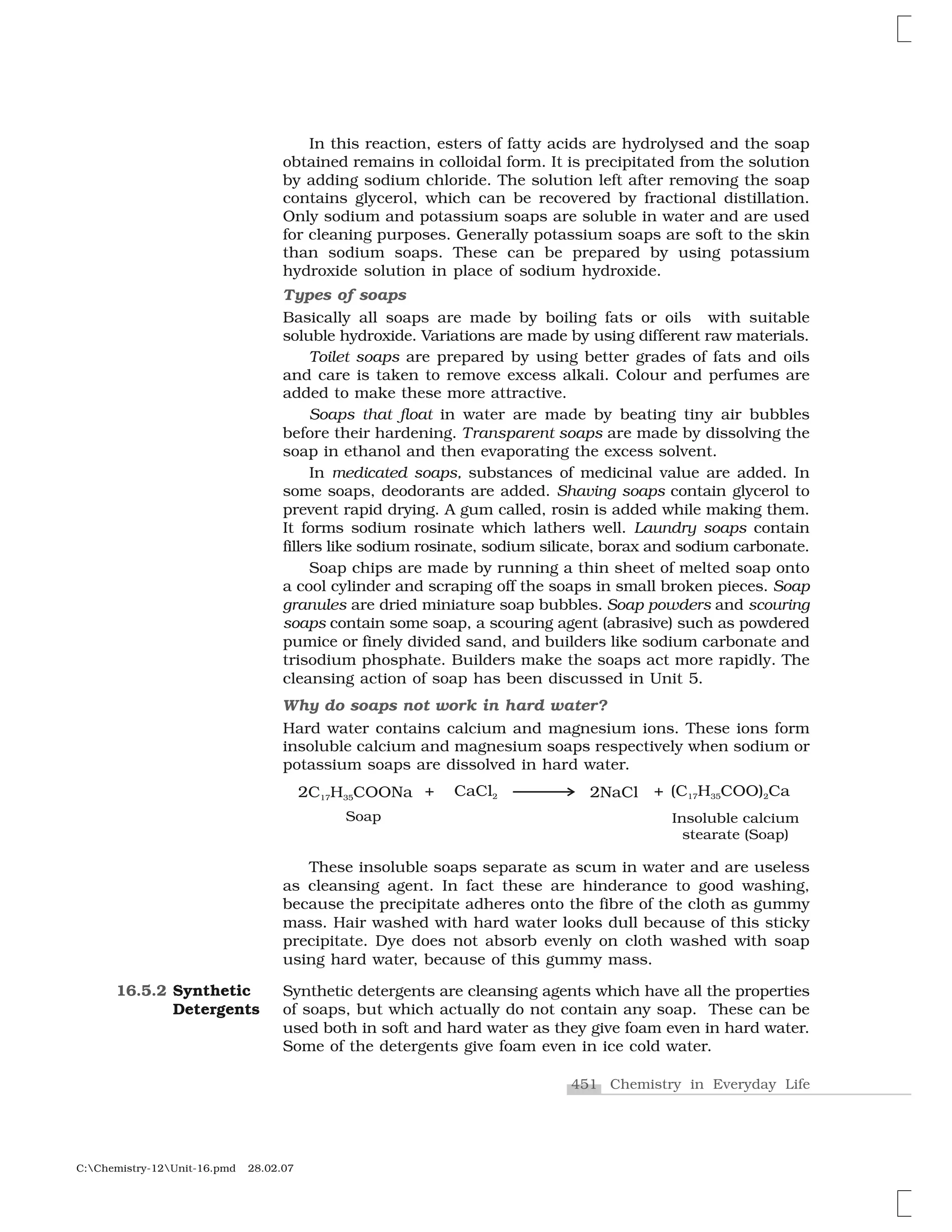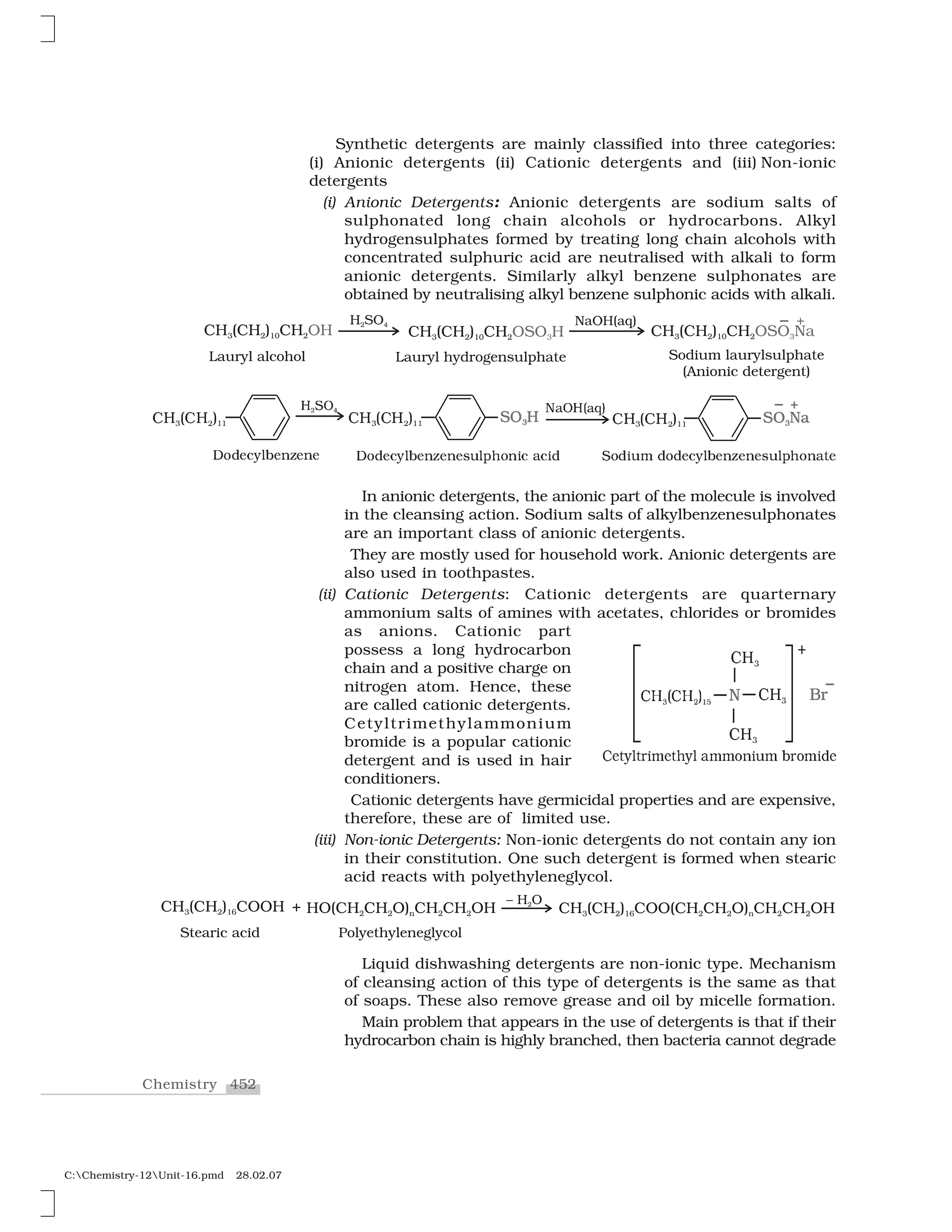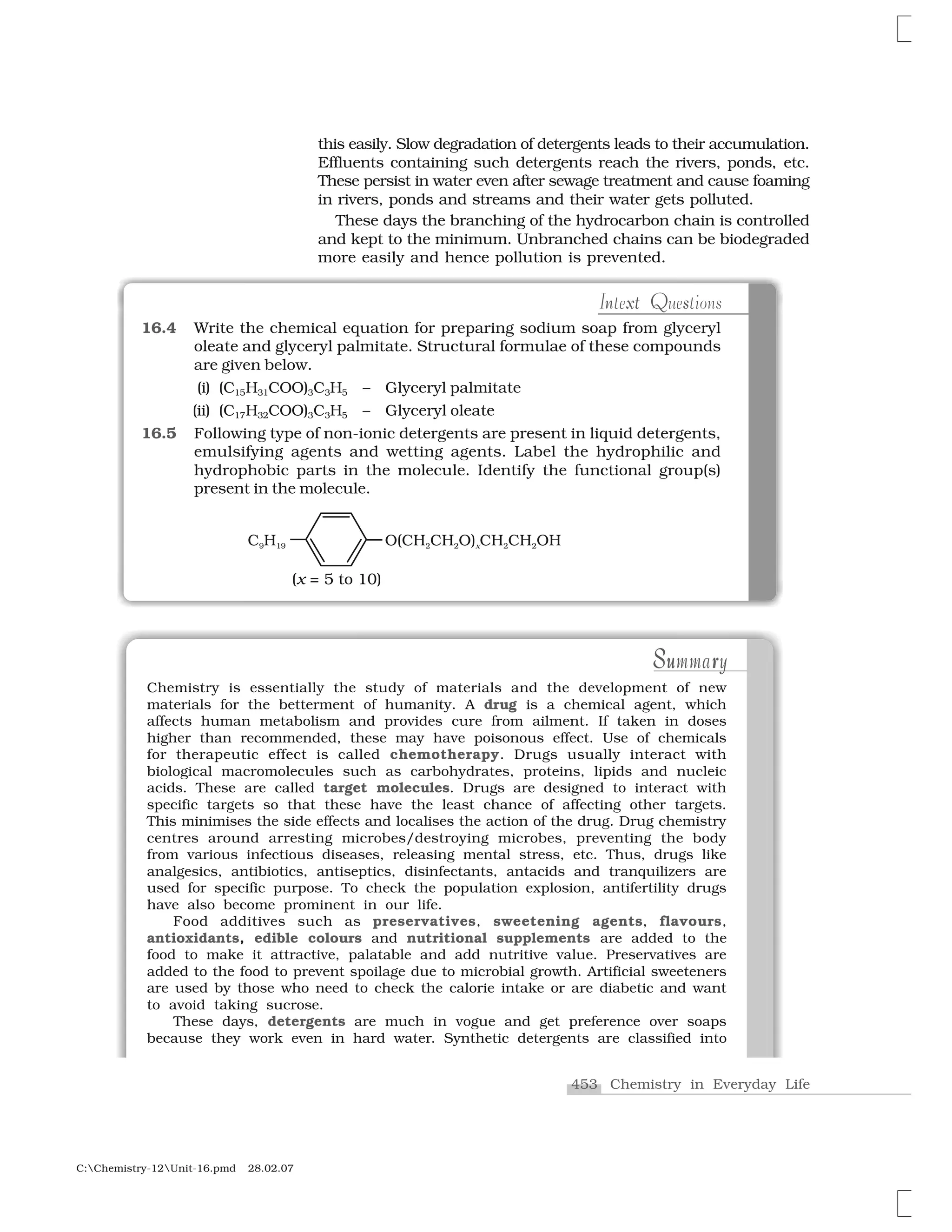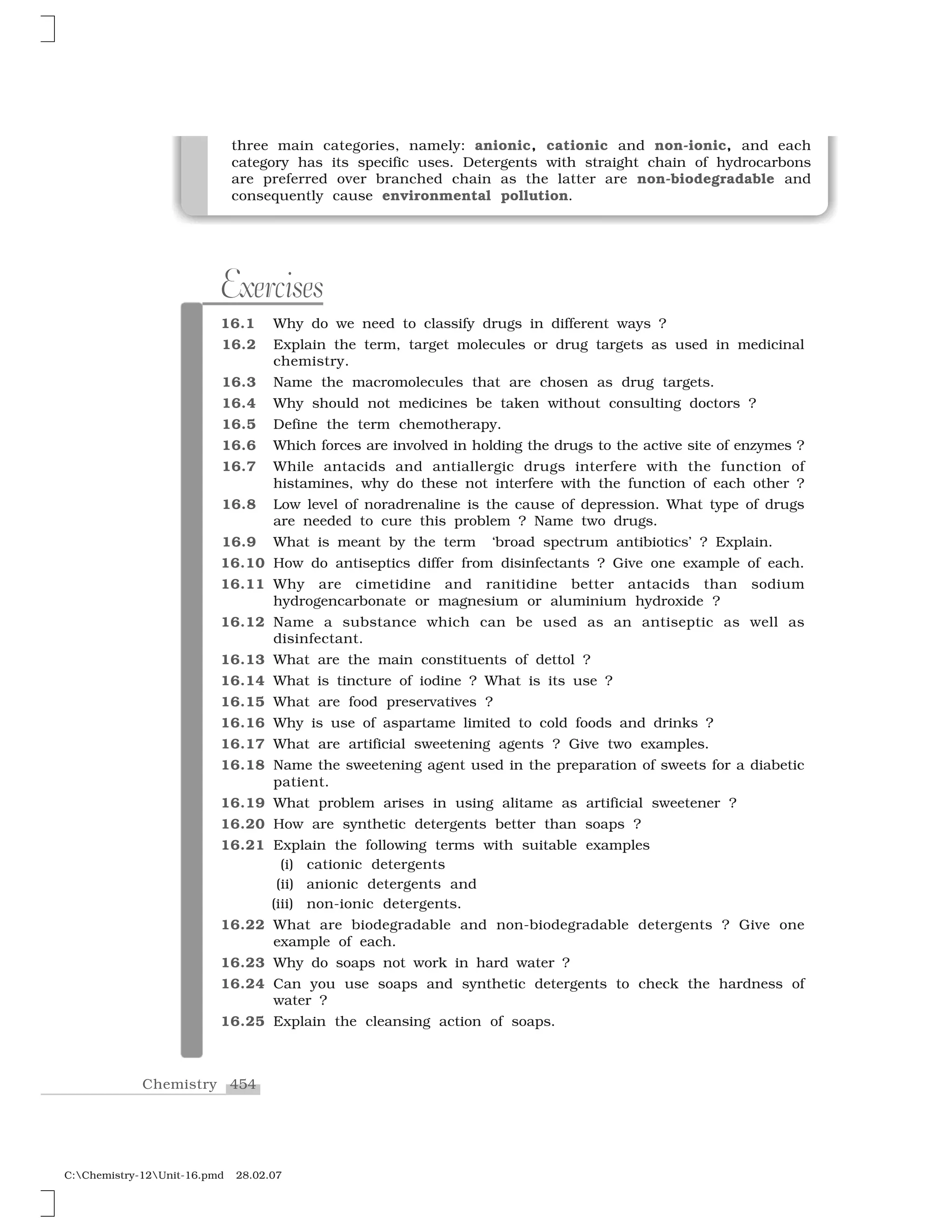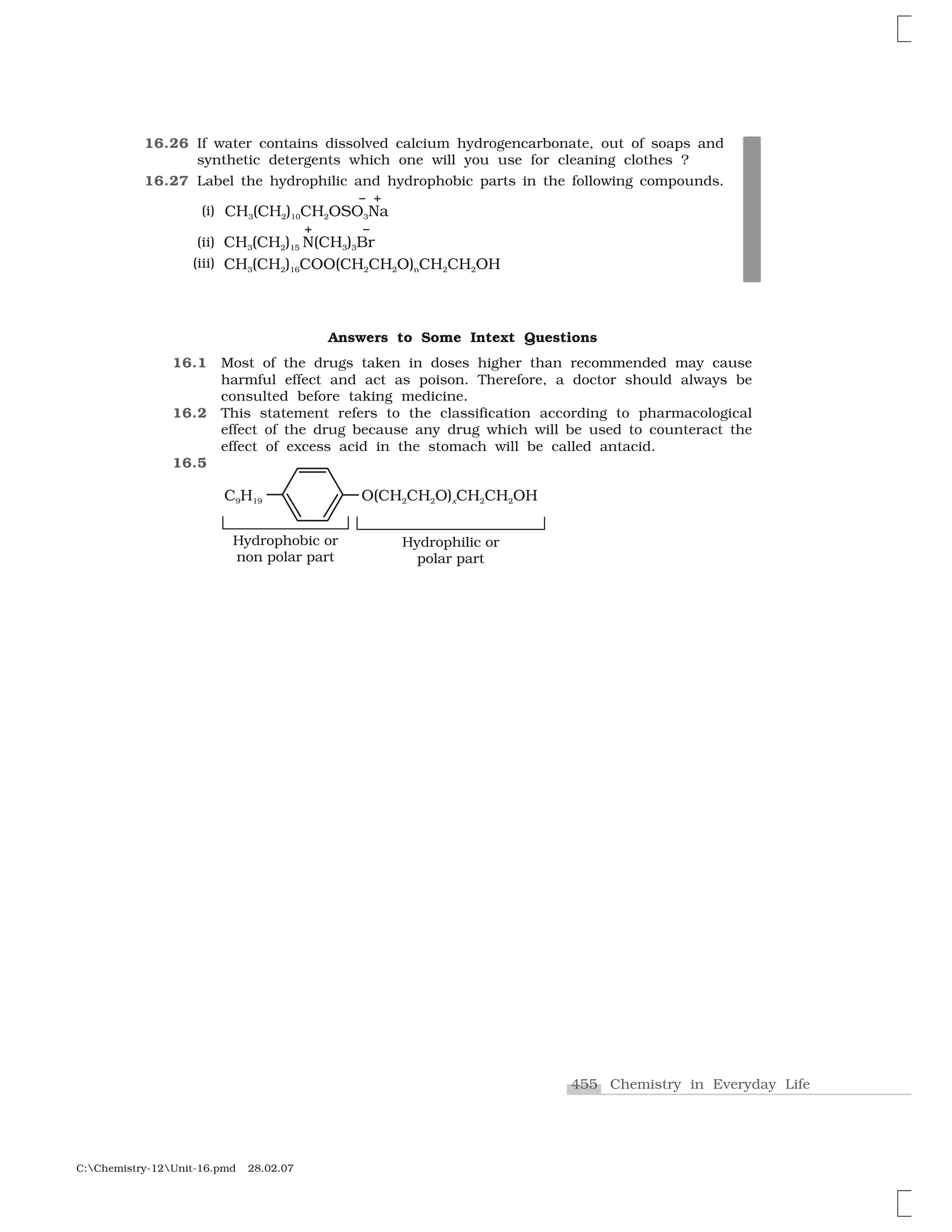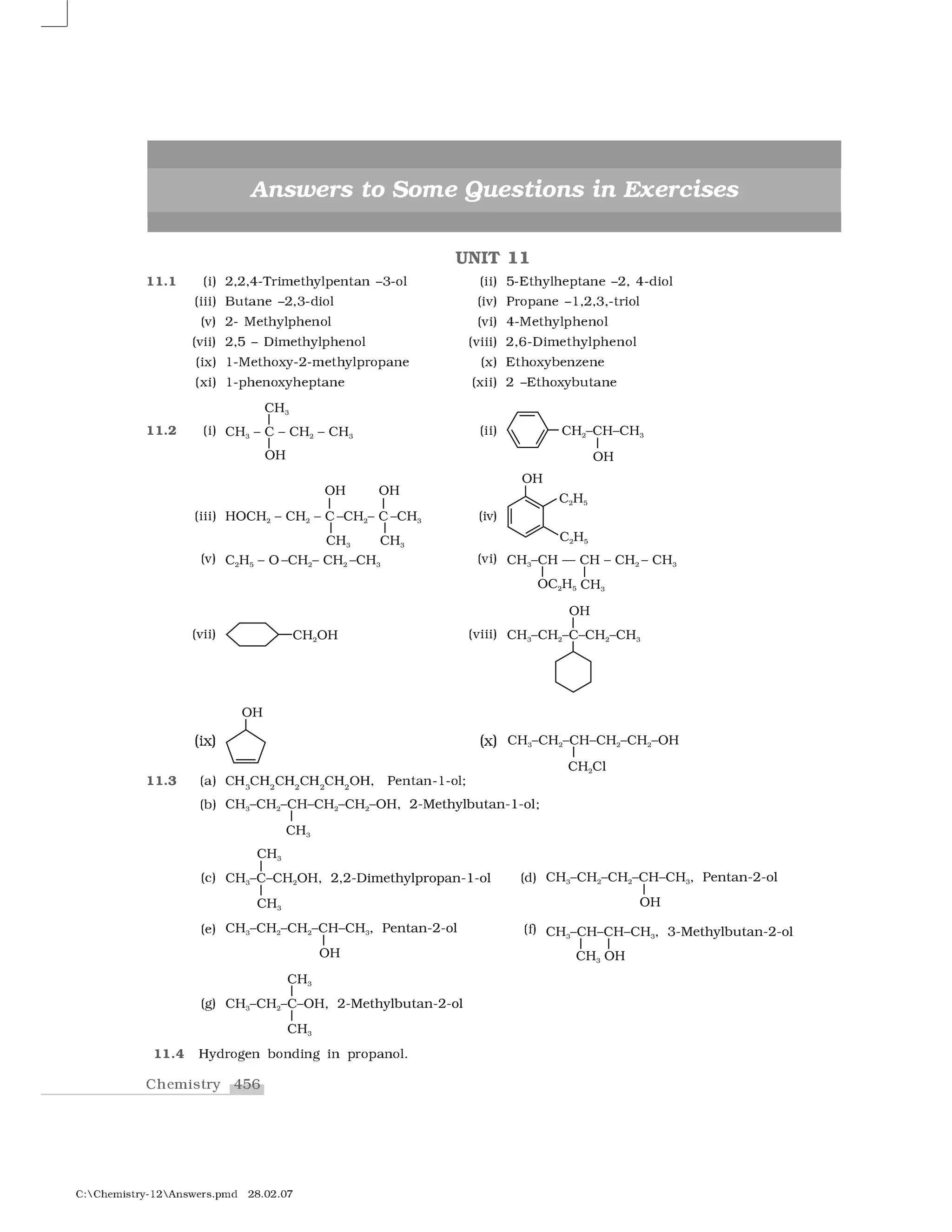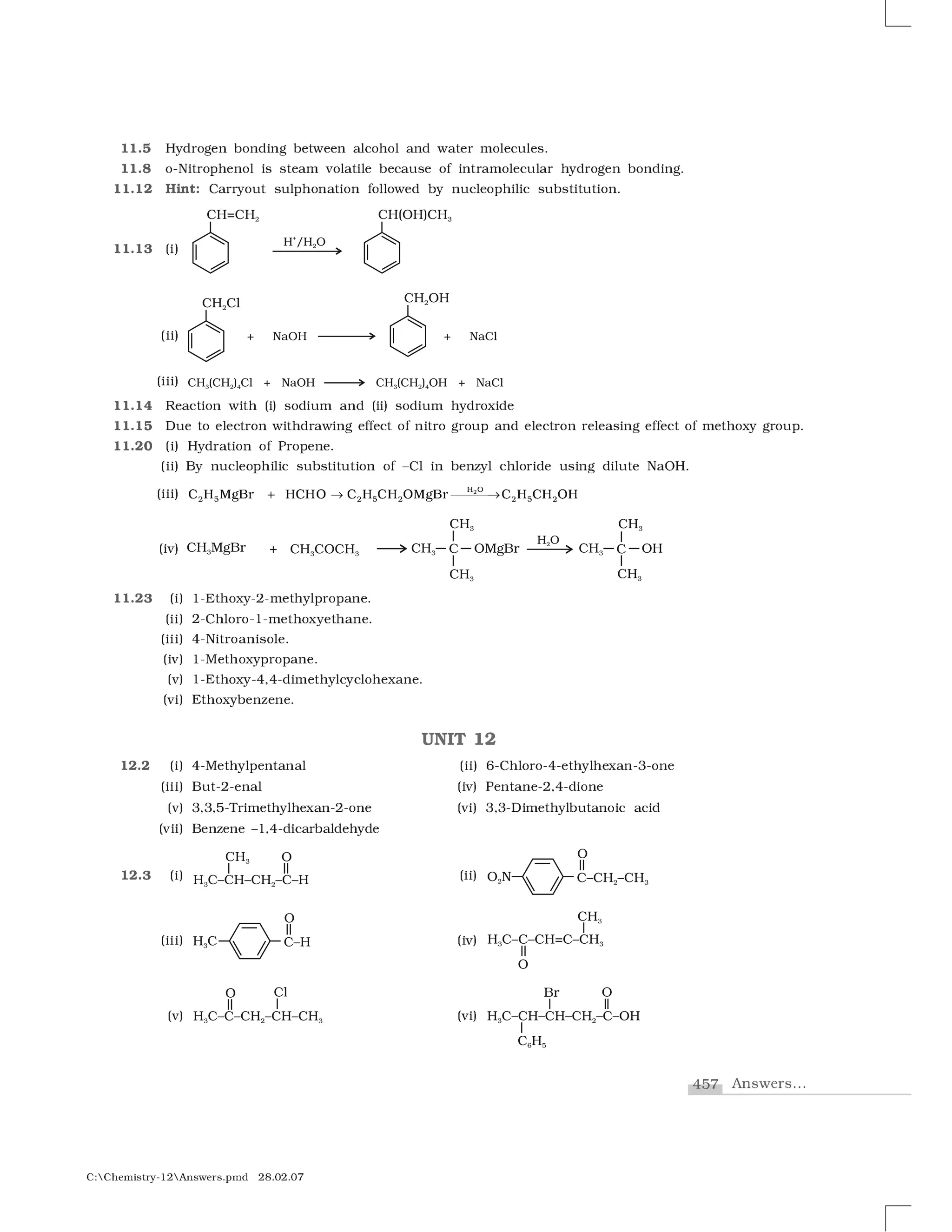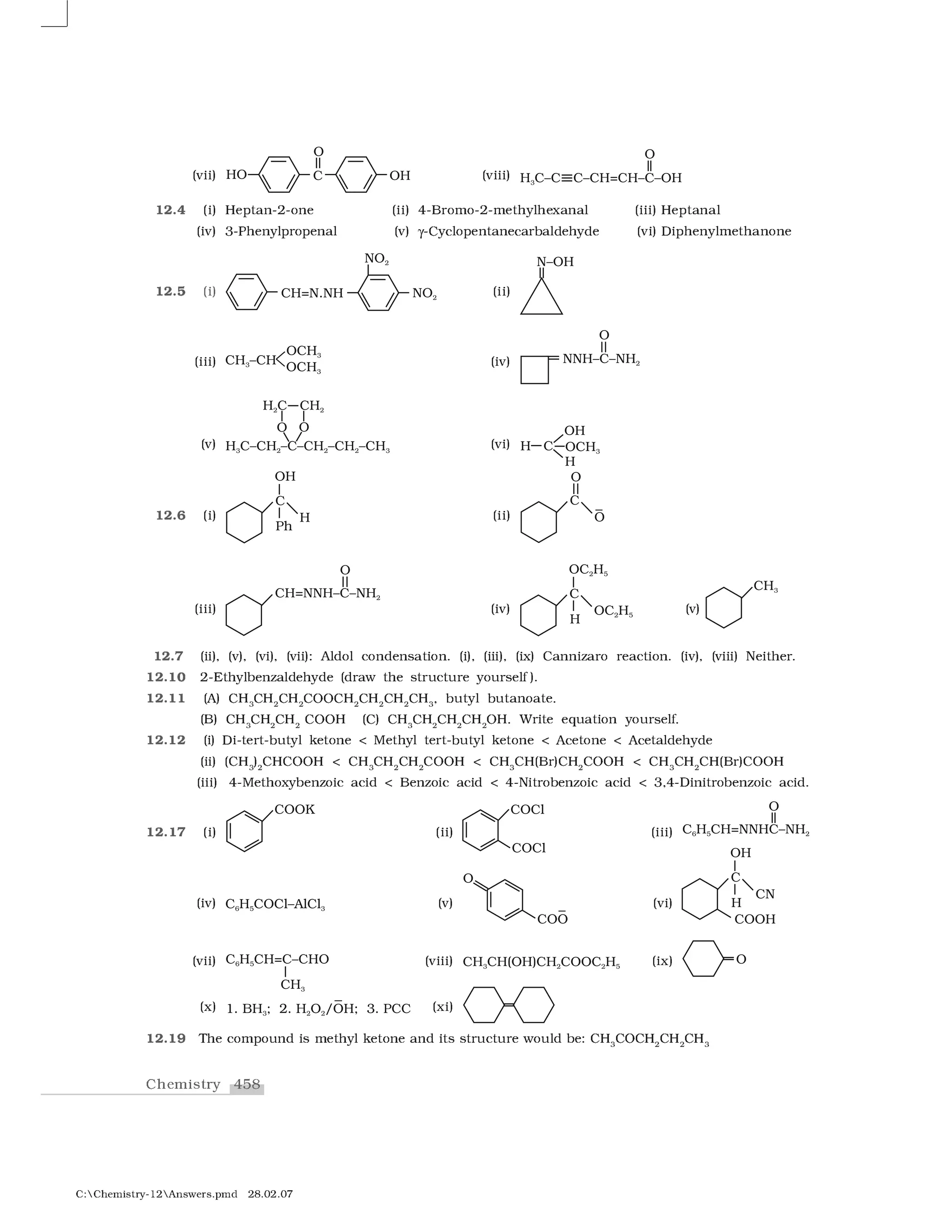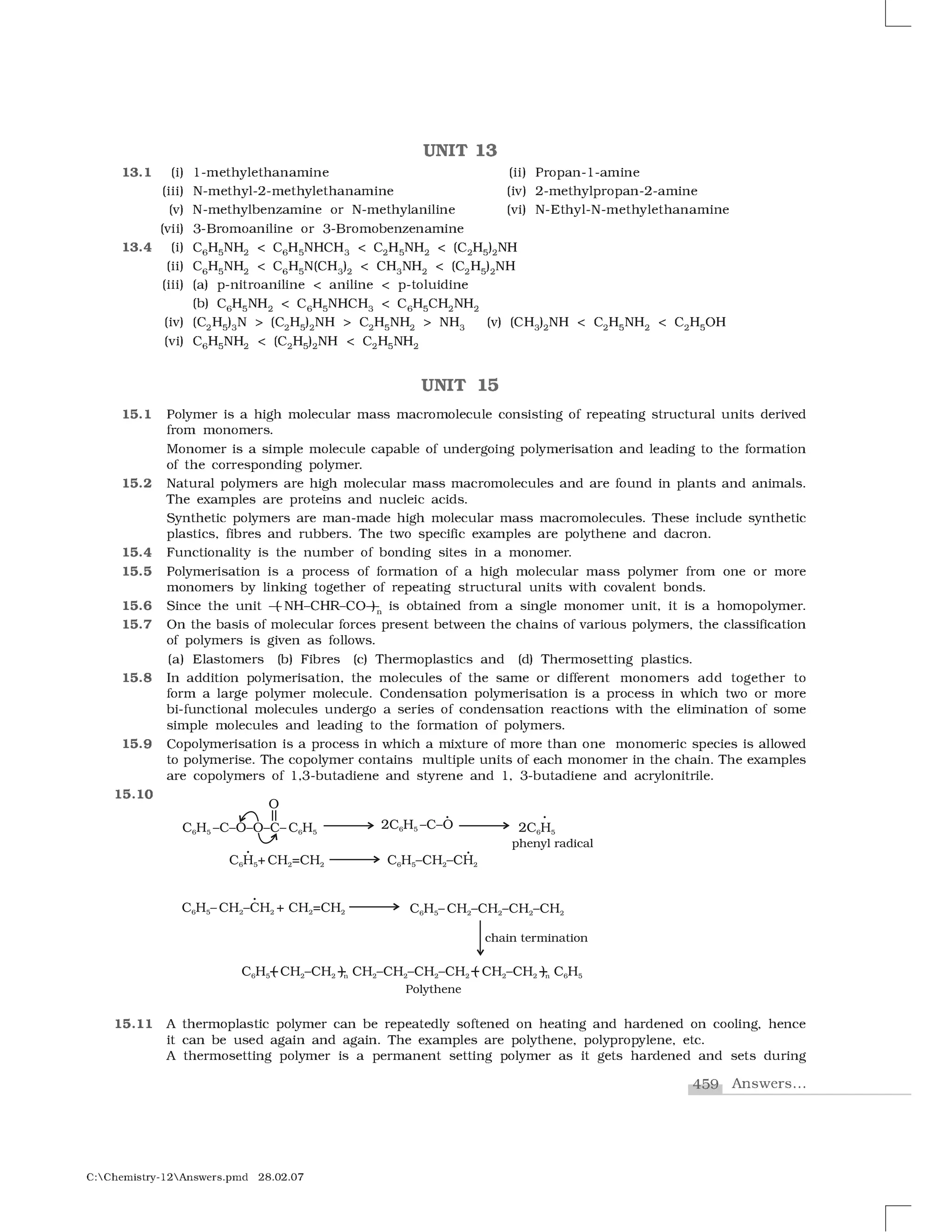Haloalkanes and haloarenes are halogenated organic compounds classified based on the hybridization of the carbon atom bonded to the halogen. Haloalkanes contain halogen atoms bonded to sp3-hybridized carbon atoms of alkyl groups, while haloarenes have halogen atoms bonded to sp2-hybridized carbon atoms of aryl groups. These classes of compounds are important in industry and medicine, with many occurring naturally and some used as drugs, solvents, and starting materials for organic synthesis.
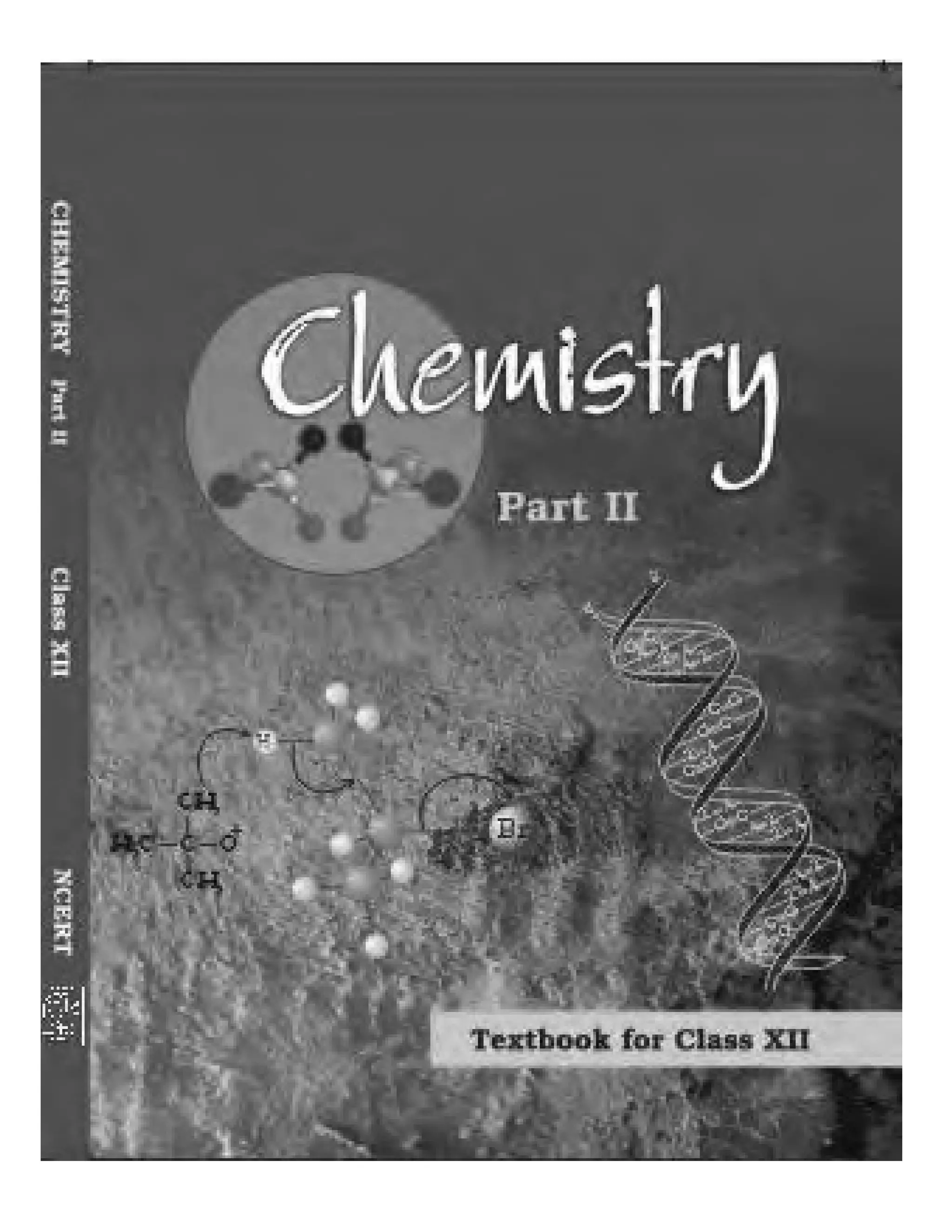
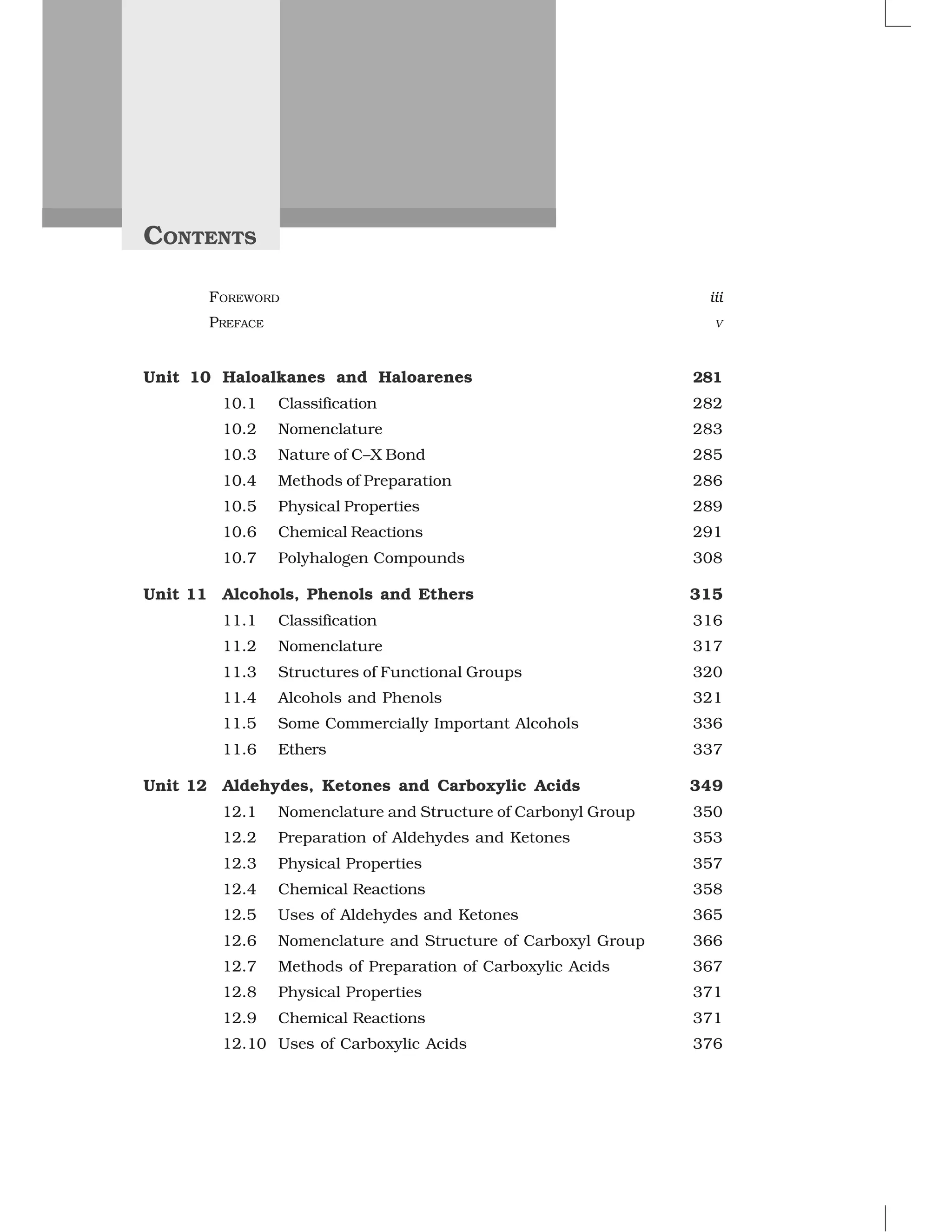
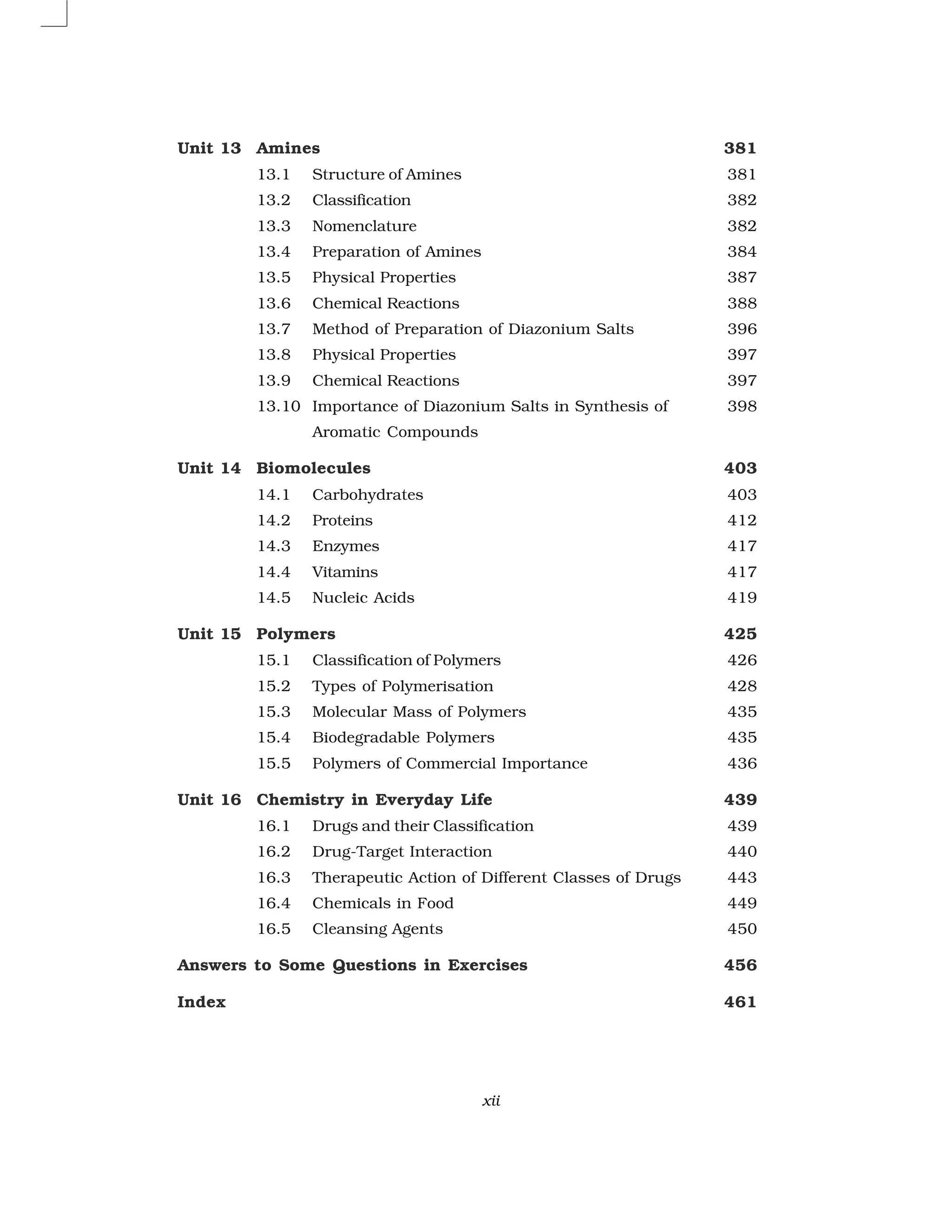
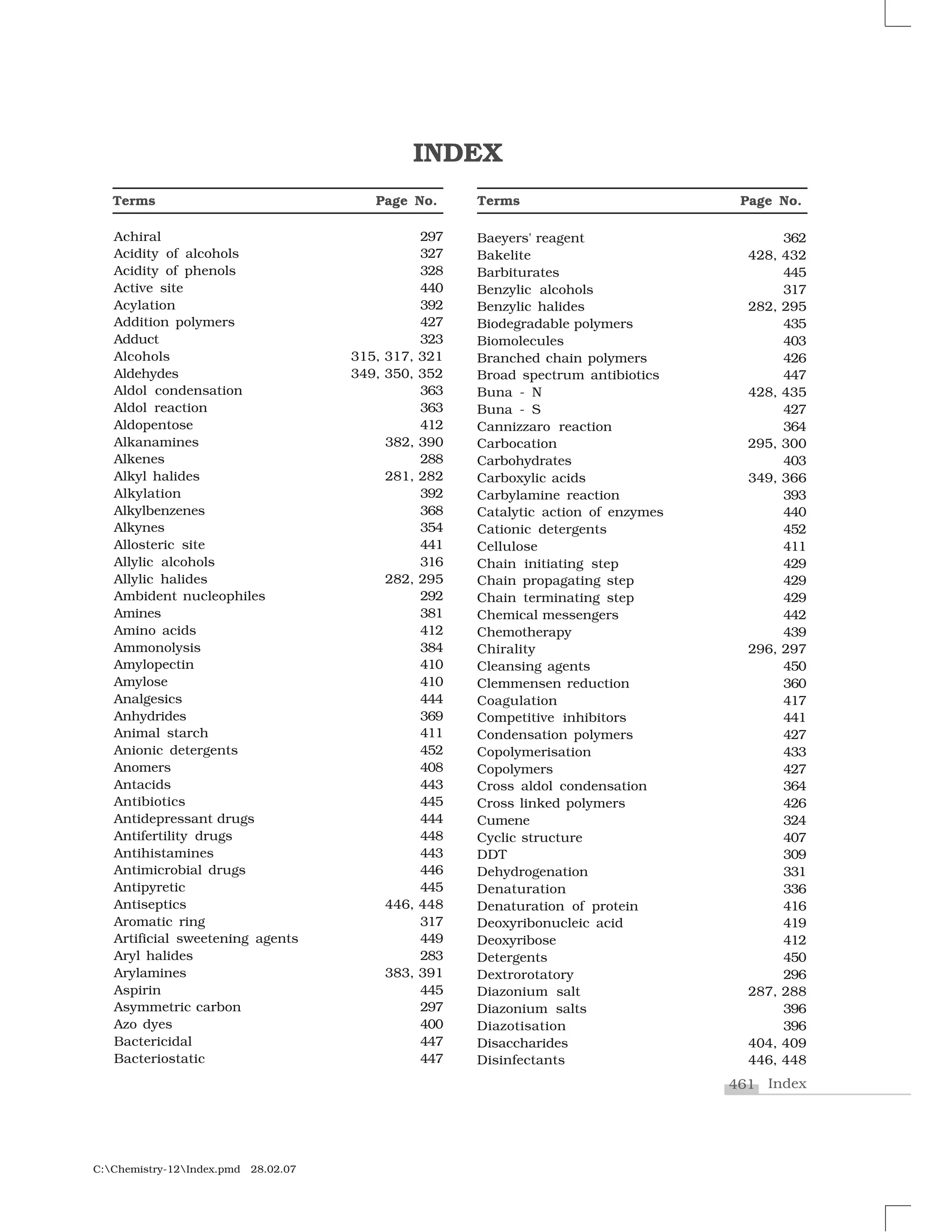
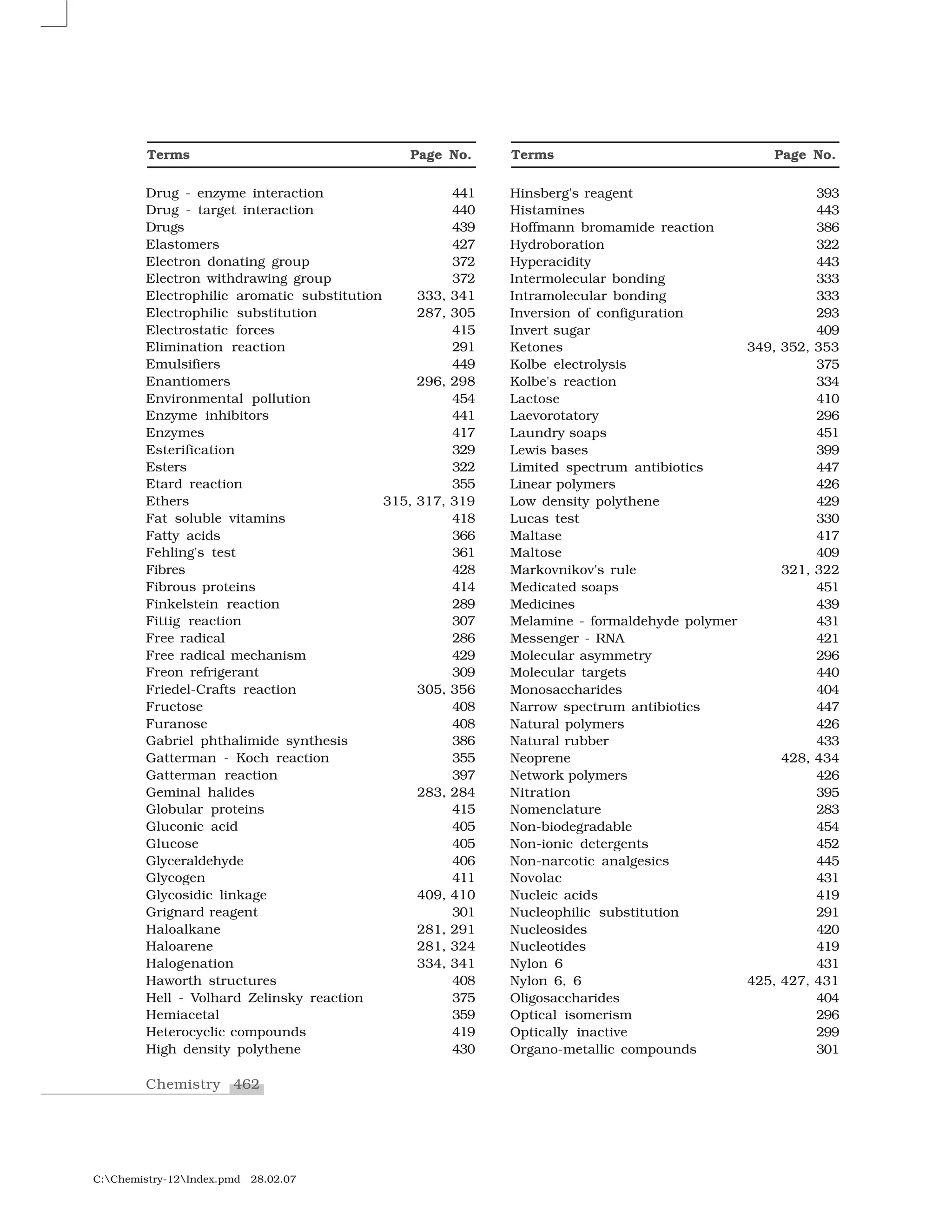
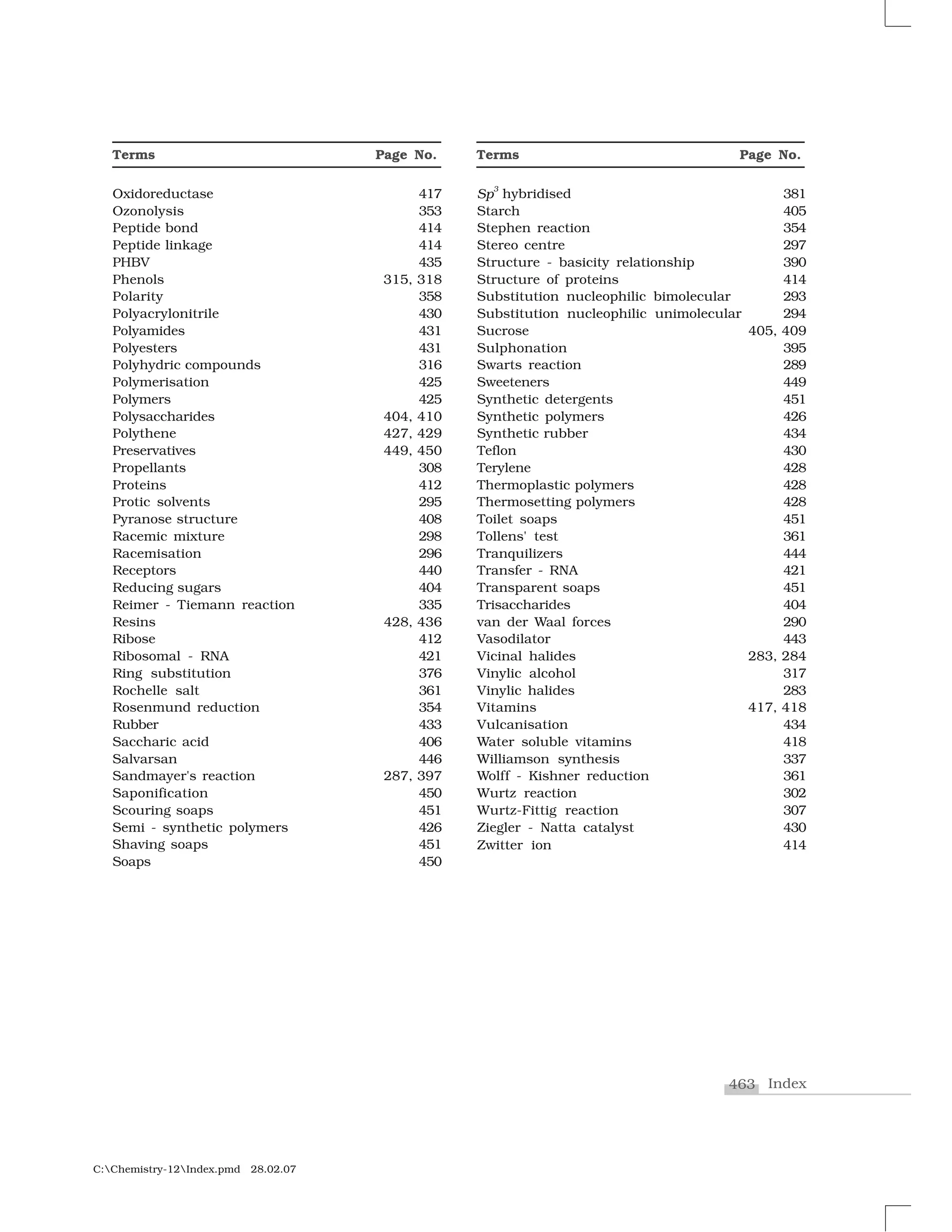
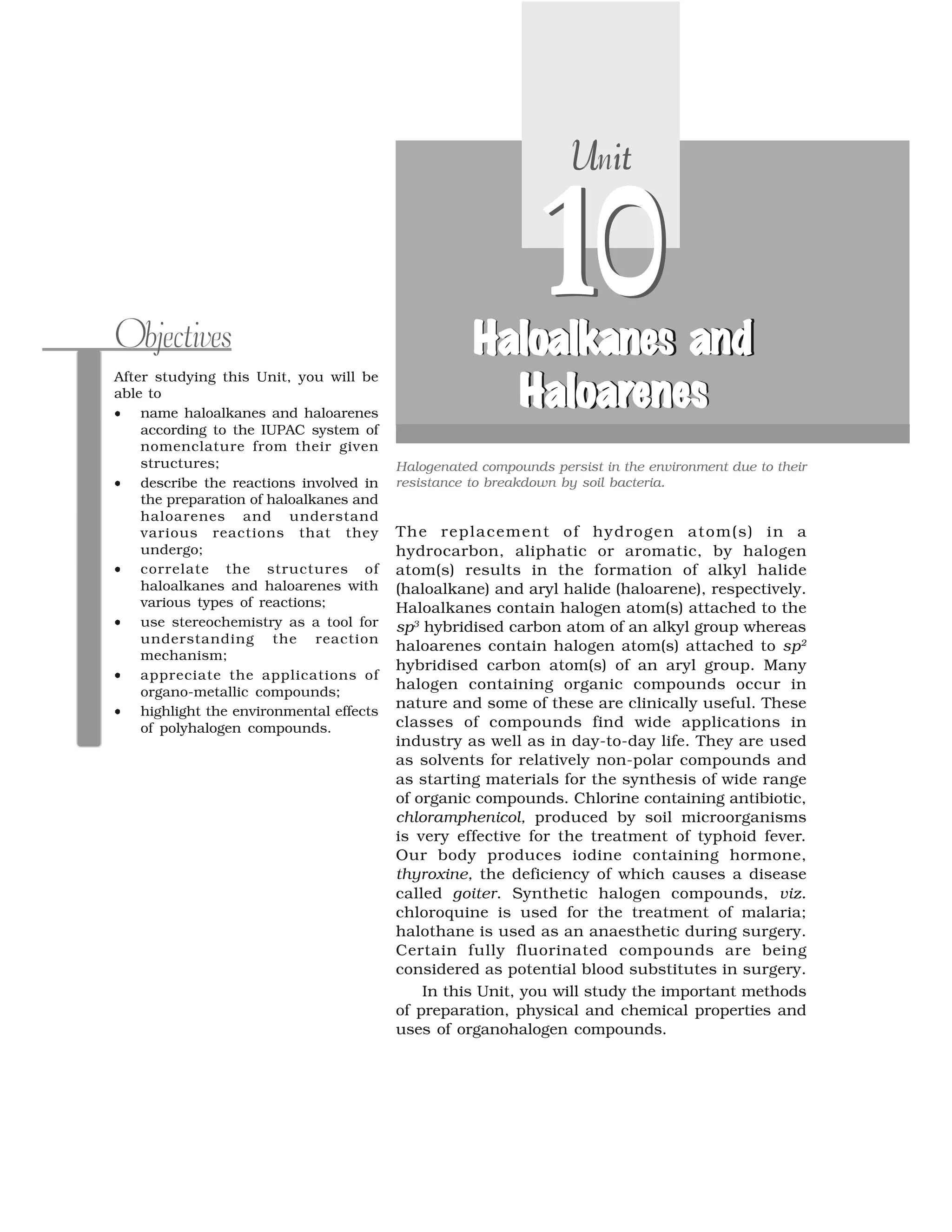
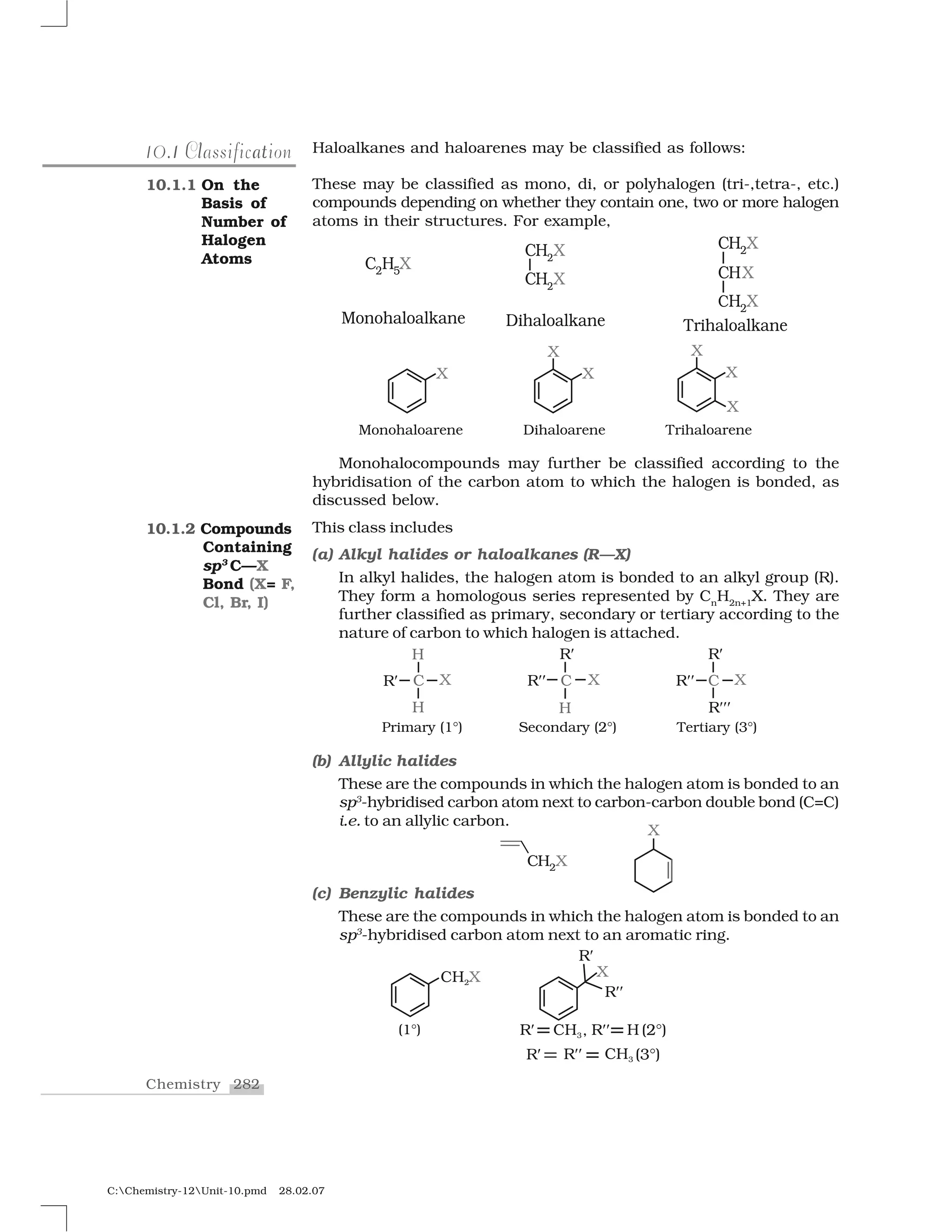
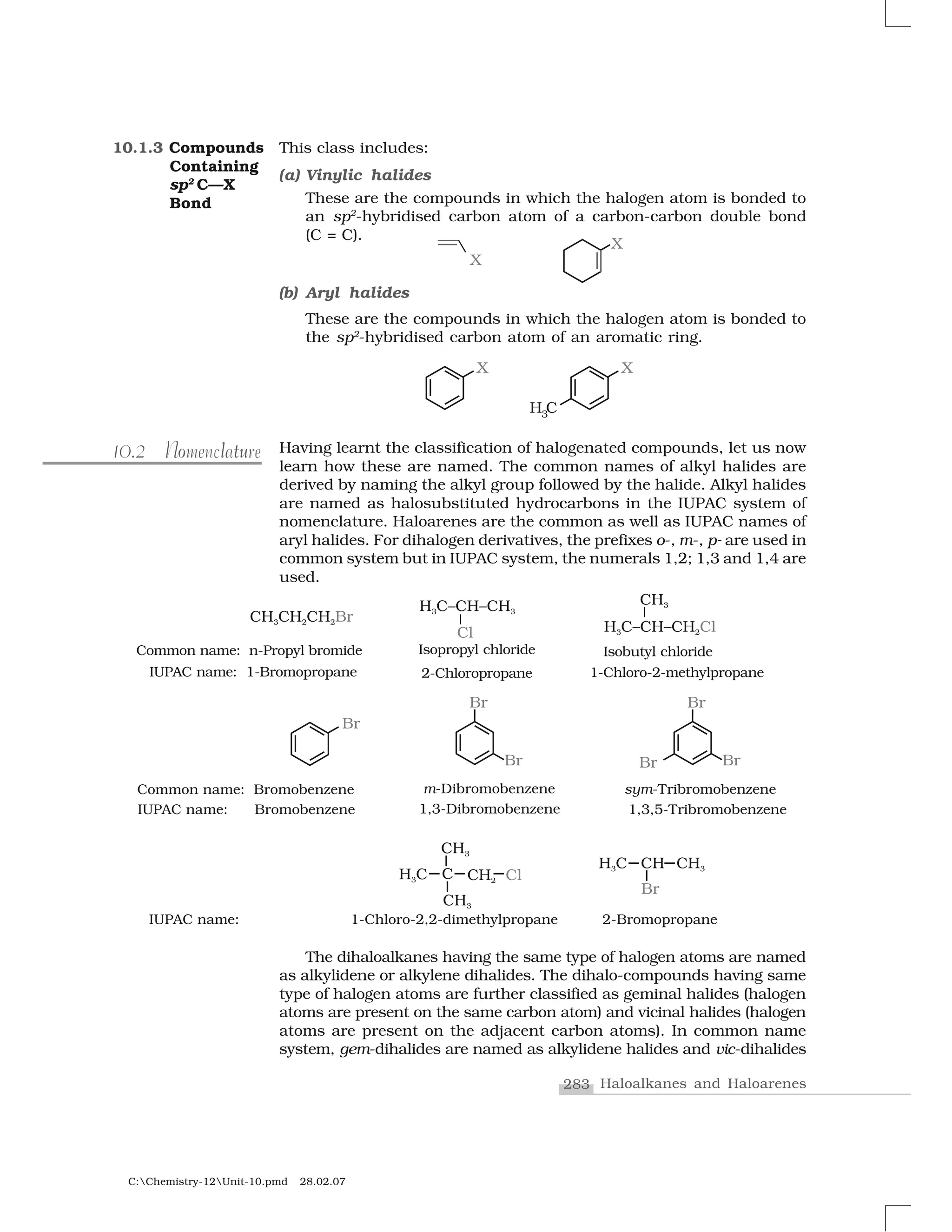
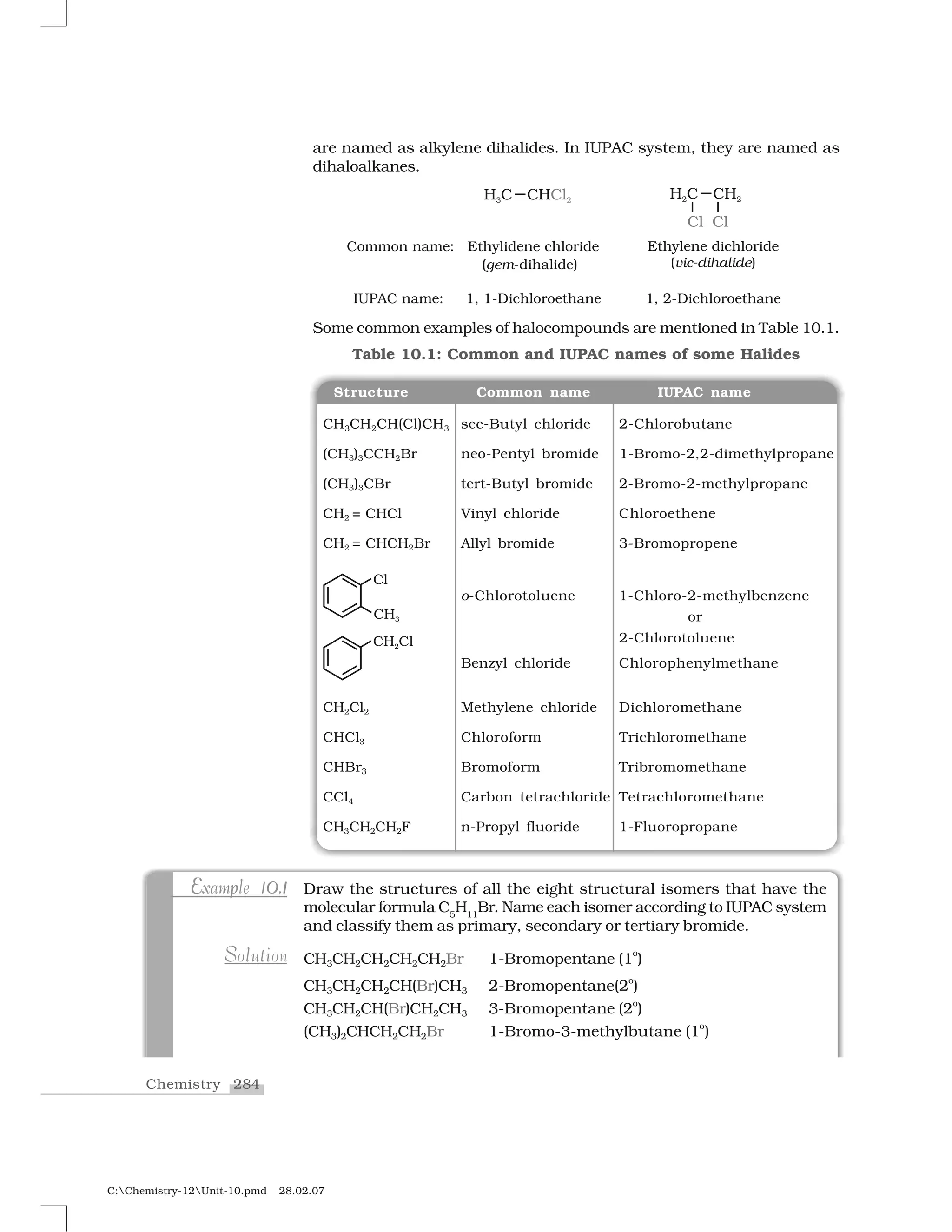

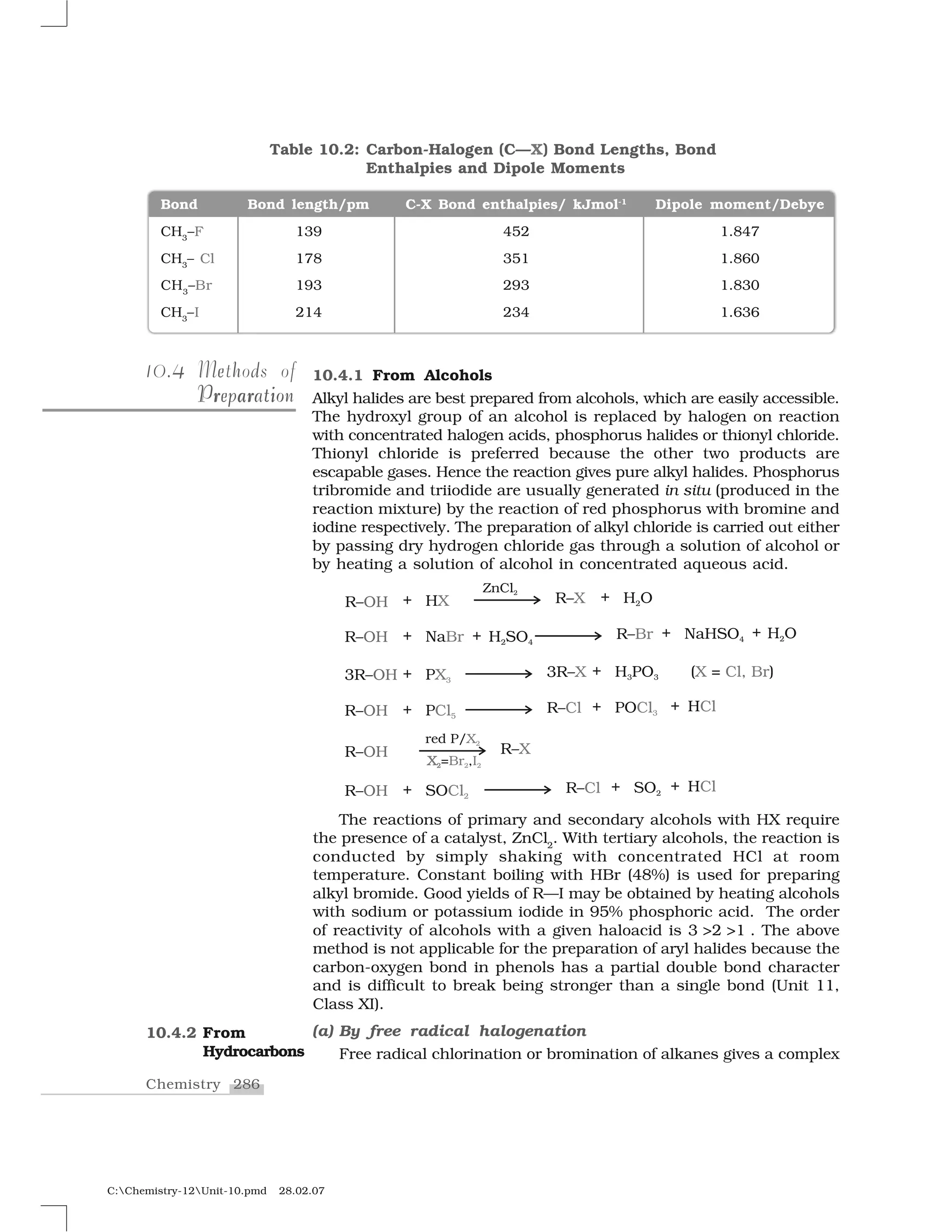
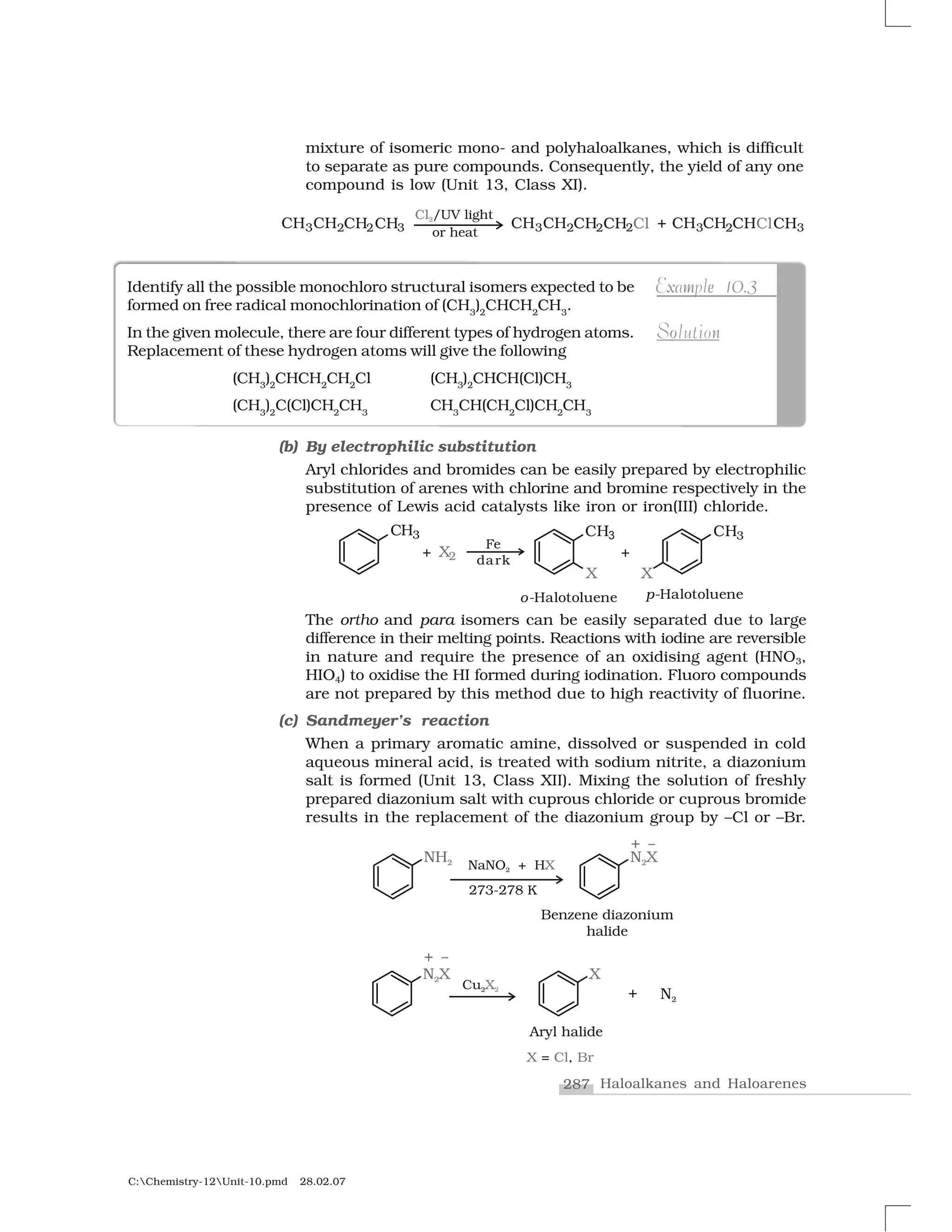
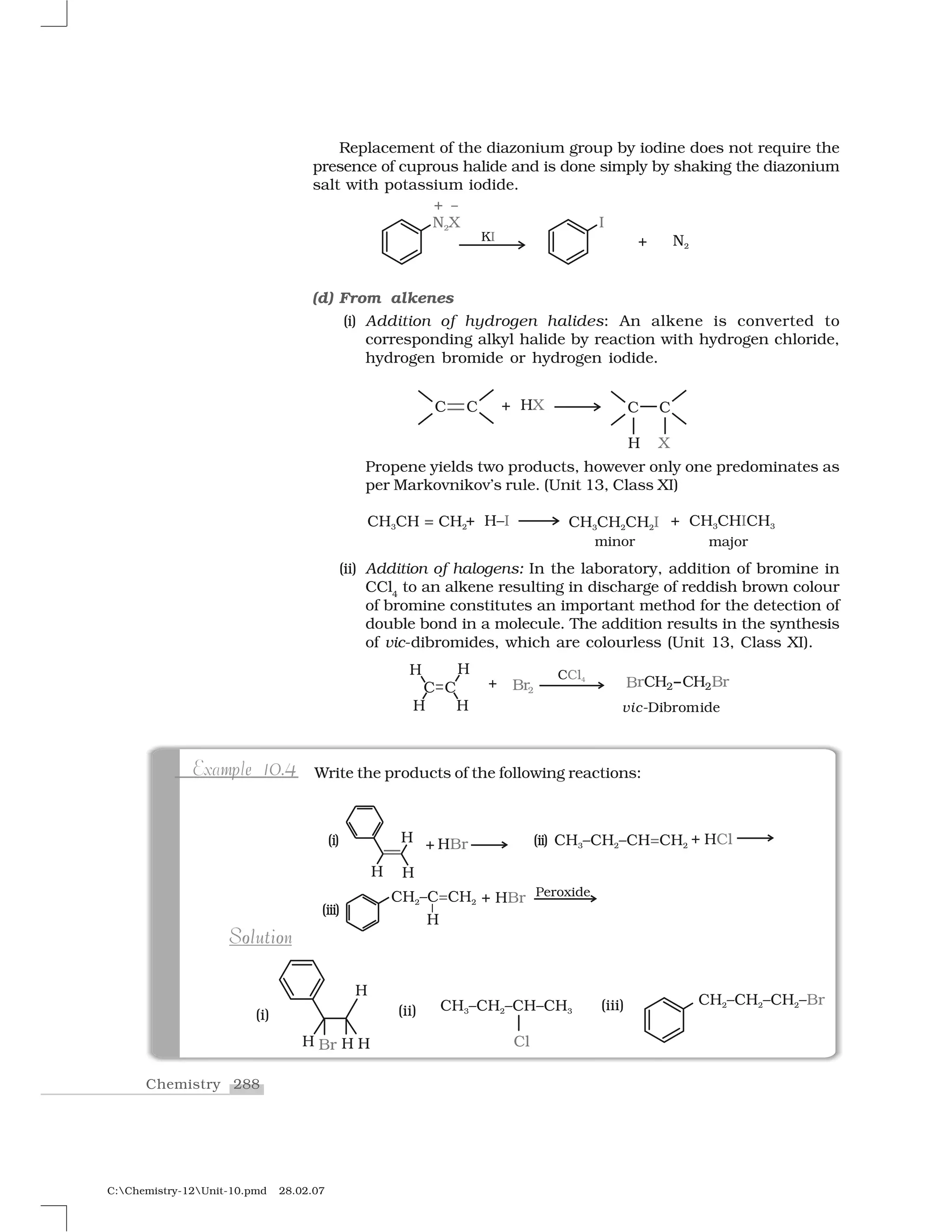
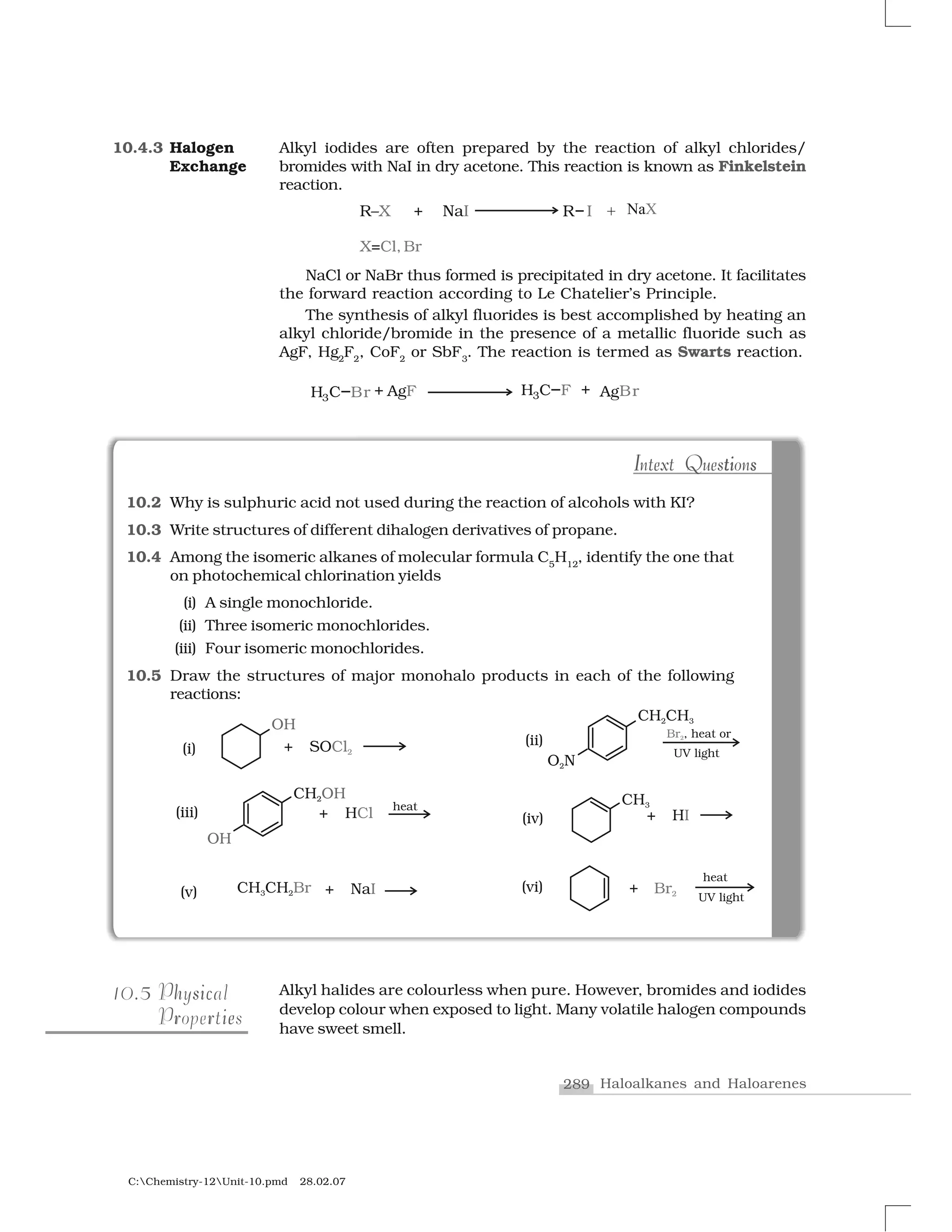
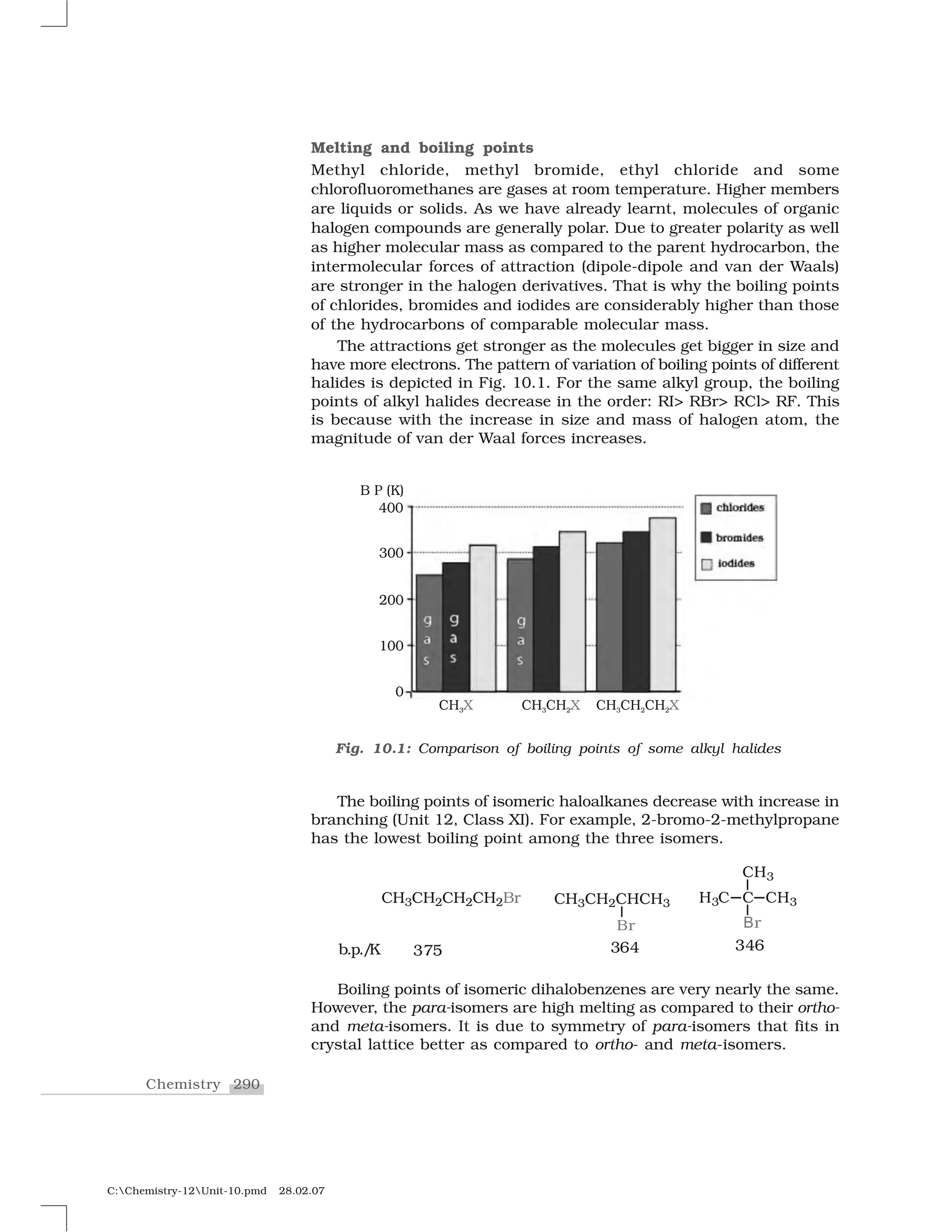
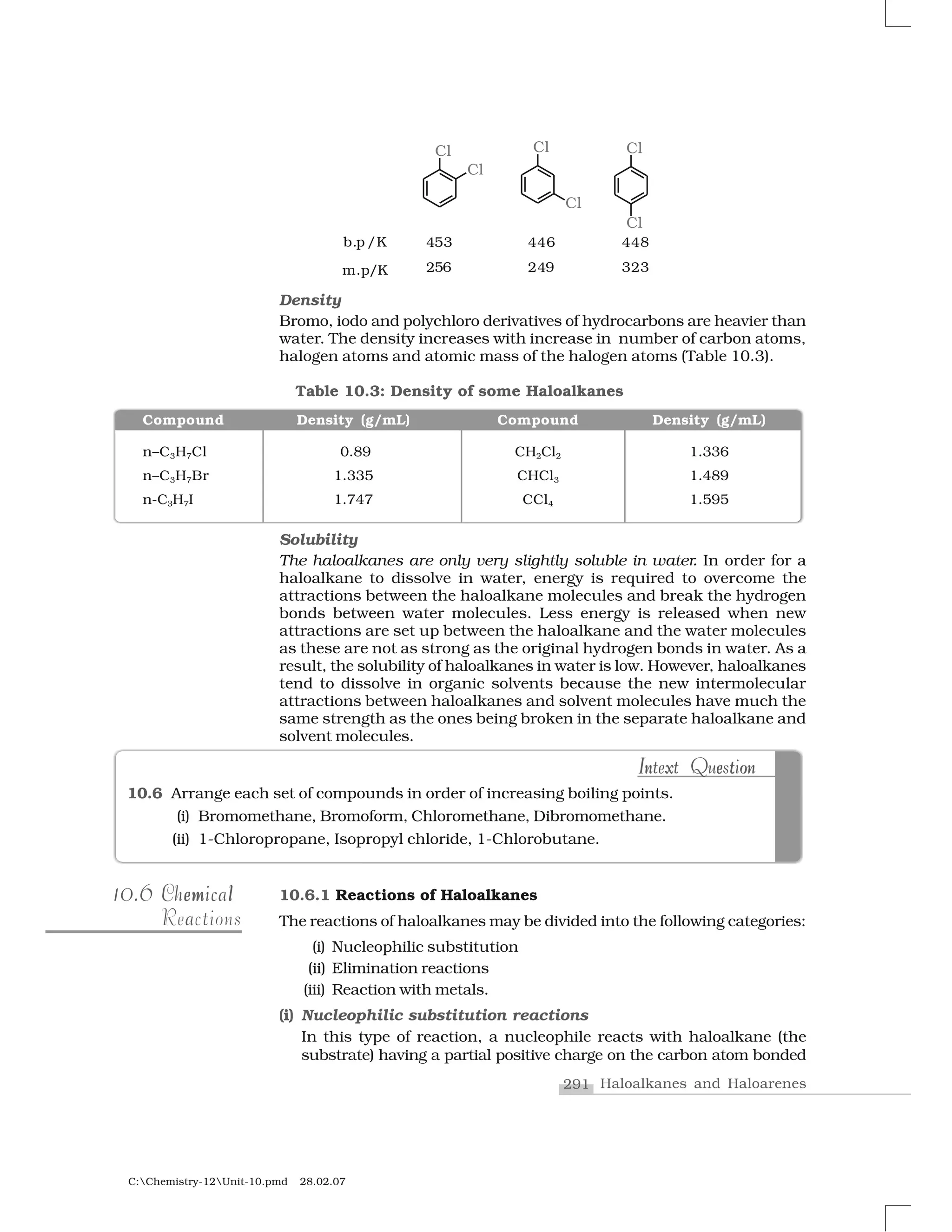
![292Chemistry
C:Chemistry-12Unit-10.pmd 28.02.07
to halogen. A substitution reaction takes place and halogen atom,
called leaving group departs as halide ion. Since the substitution
reaction is initiated by a nucleophile, it is called nucleophilic
substitution reaction.
It is one of the most useful classes of organic reactions of alkyl
halides in which halogen is bonded to sp3
hybridised carbon. The
products formed by the reaction of haloalkanes with some common
nucleophiles are given in Table 10.4.
Table 10.4: Nucleophilic Substitution of Alkyl Halides (R–X)
Reagent Nucleophile Substitution Class of main
(Nu–
) product R–Nu product
NaOH (KOH) HO–
ROH Alcohol
H2
O H2
O ROH Alcohol
NaOR✂ R O–
ROR✂ Ether
NaI I–
R—I Alkyl iodide
NH3
NH3
RNH2
Primary amine
R✂NH2
R✂NH2
RNHR✂ Sec. amine
R✂R✂✂NH R✂R✂✂H RNR✂R✂✂ Tert. amine
KCN RCN Nitrile
(cyanide)
AgCN Ag-CN: RNC Isonitrile
(isocyanide)
KNO2
O=N—O R—O—N=O Alkyl nitrite
AgNO2
Ag—Ö—N=O R—NO2
Nitroalkane
R✂COOAg R✂COO–
R✂COOR Ester
LiAlH4
H RH Hydrocarbon
R✂
–
M+
R✂
–
RR✂ Alkane
Groups like cyanides and nitrites possess two nucleophilic centres
and are called ambident nucleophiles. Actually cyanide group is a
hybrid of two contributing structures and therefore can act as a
nucleophile in two different ways [✁
C✄N ☎ :C=N✁
], i.e., linking through
carbon atom resulting in alkyl cyanides and through nitrogen atom
leading to isocyanides. Similarly nitrite ion also represents an ambident
nucleophile with two different points of linkage [–
O— ◆
✆ ✆
=O]. The linkage
through oxygen results in alkyl nitrites while through nitrogen atom,
it leads to nitroalkanes.](https://image.slidesharecdn.com/ncert-class-12-chemistry-part-2-161112165510/75/Ncert-class-12-chemistry-part-2-18-2048.jpg)
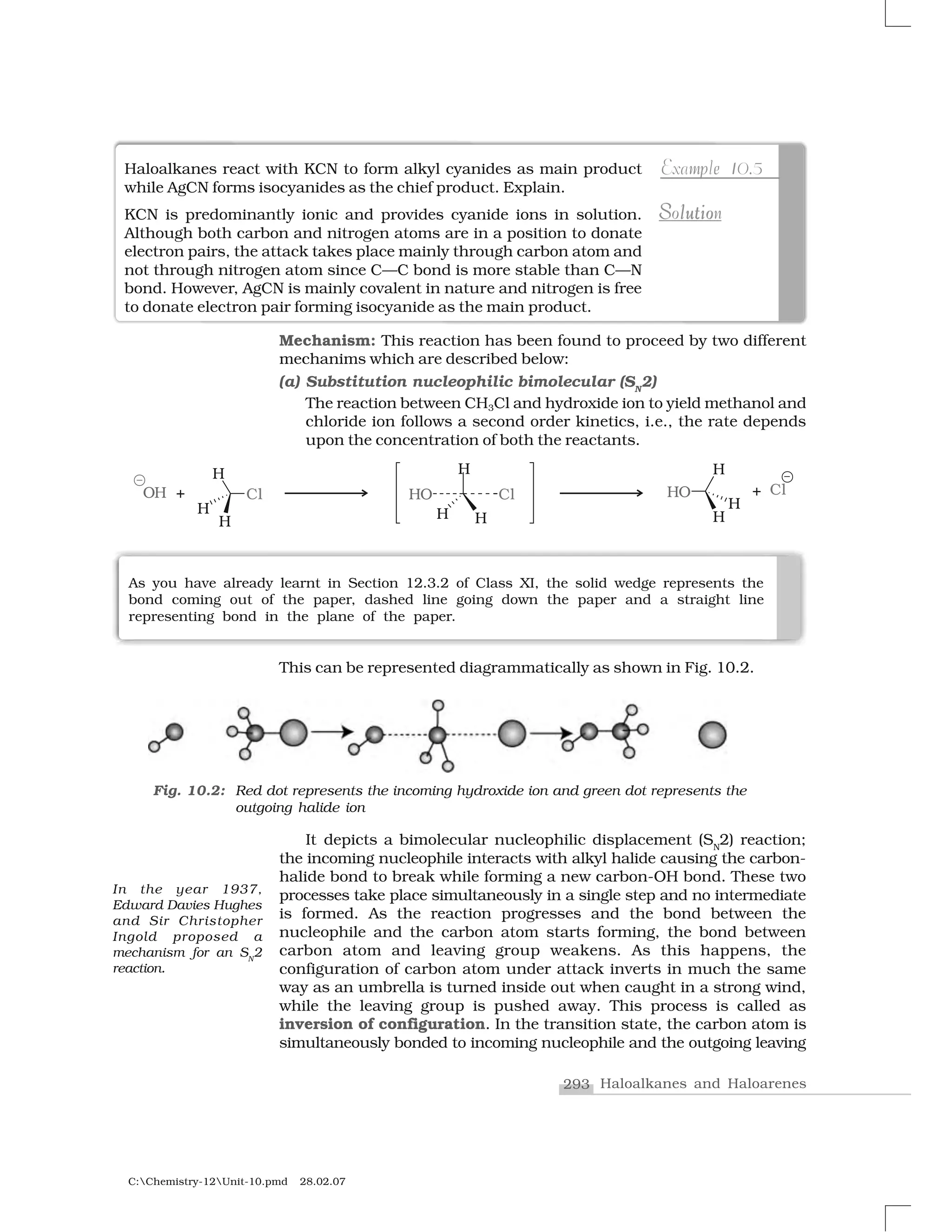
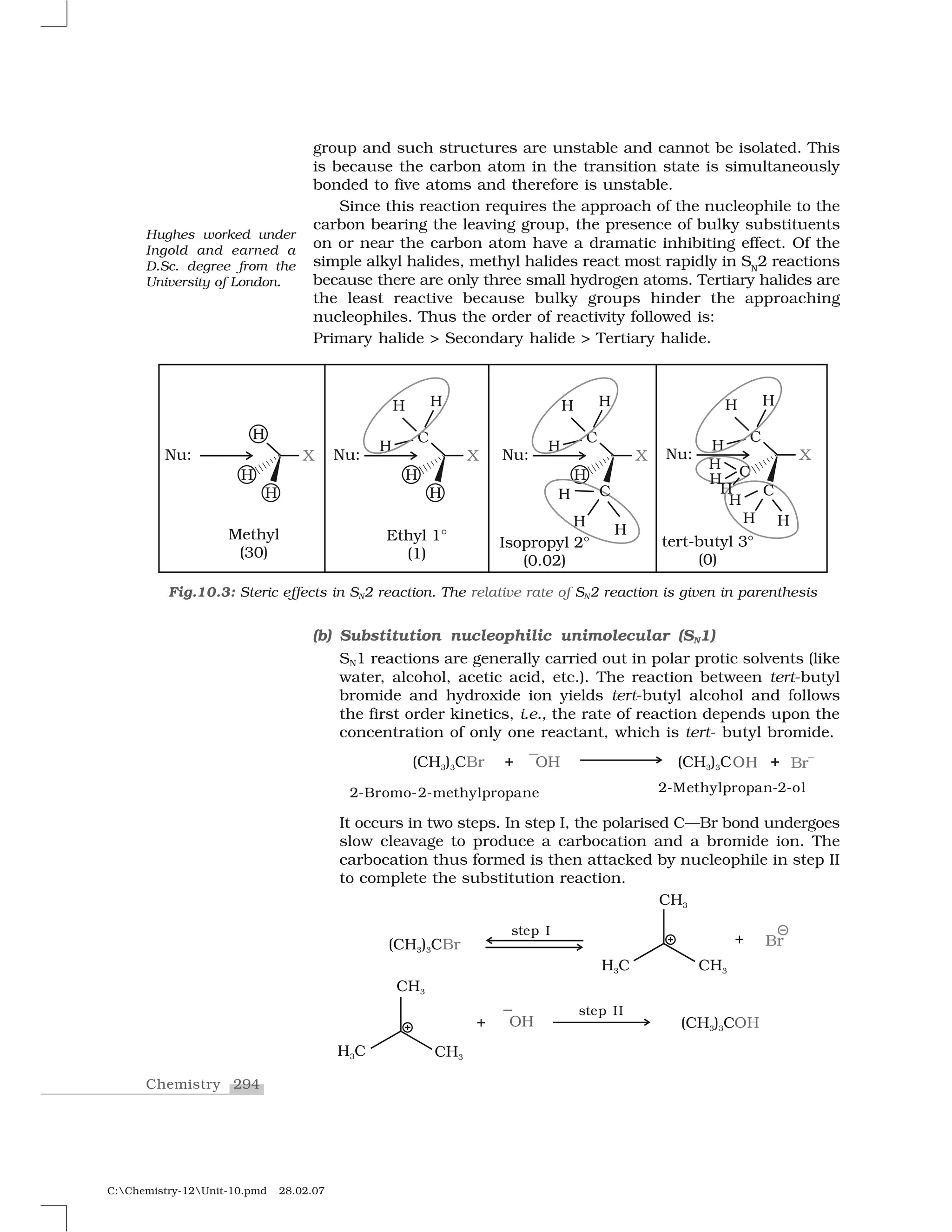
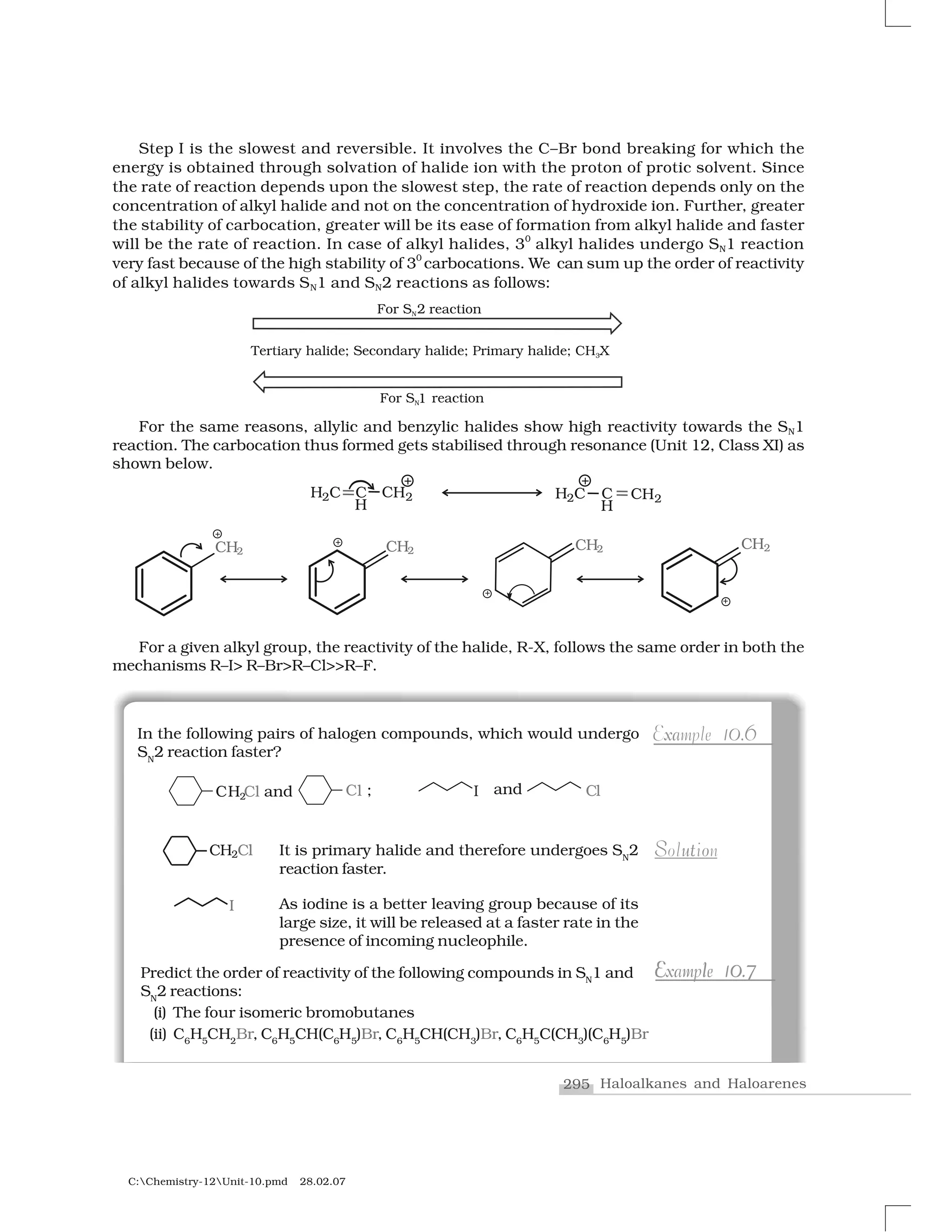
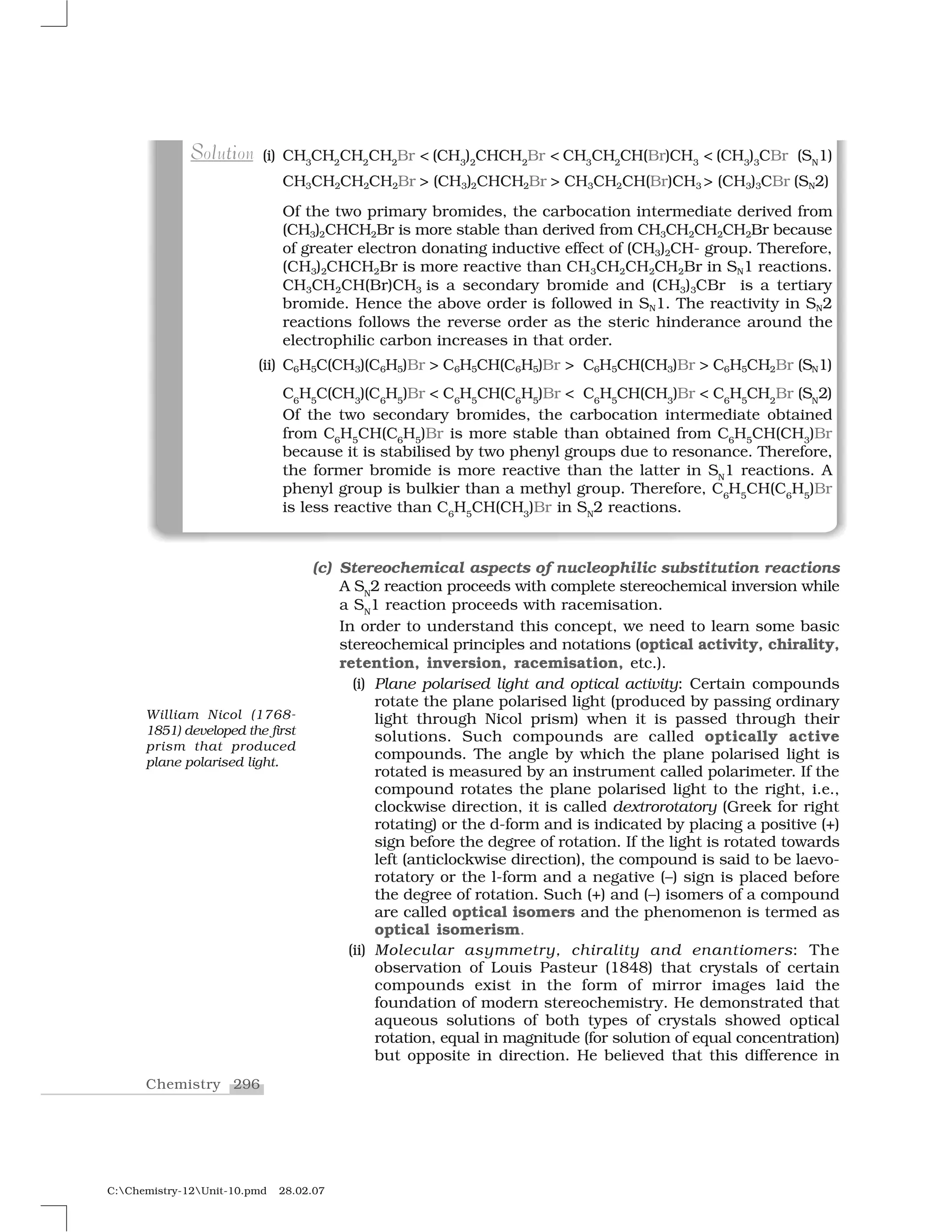
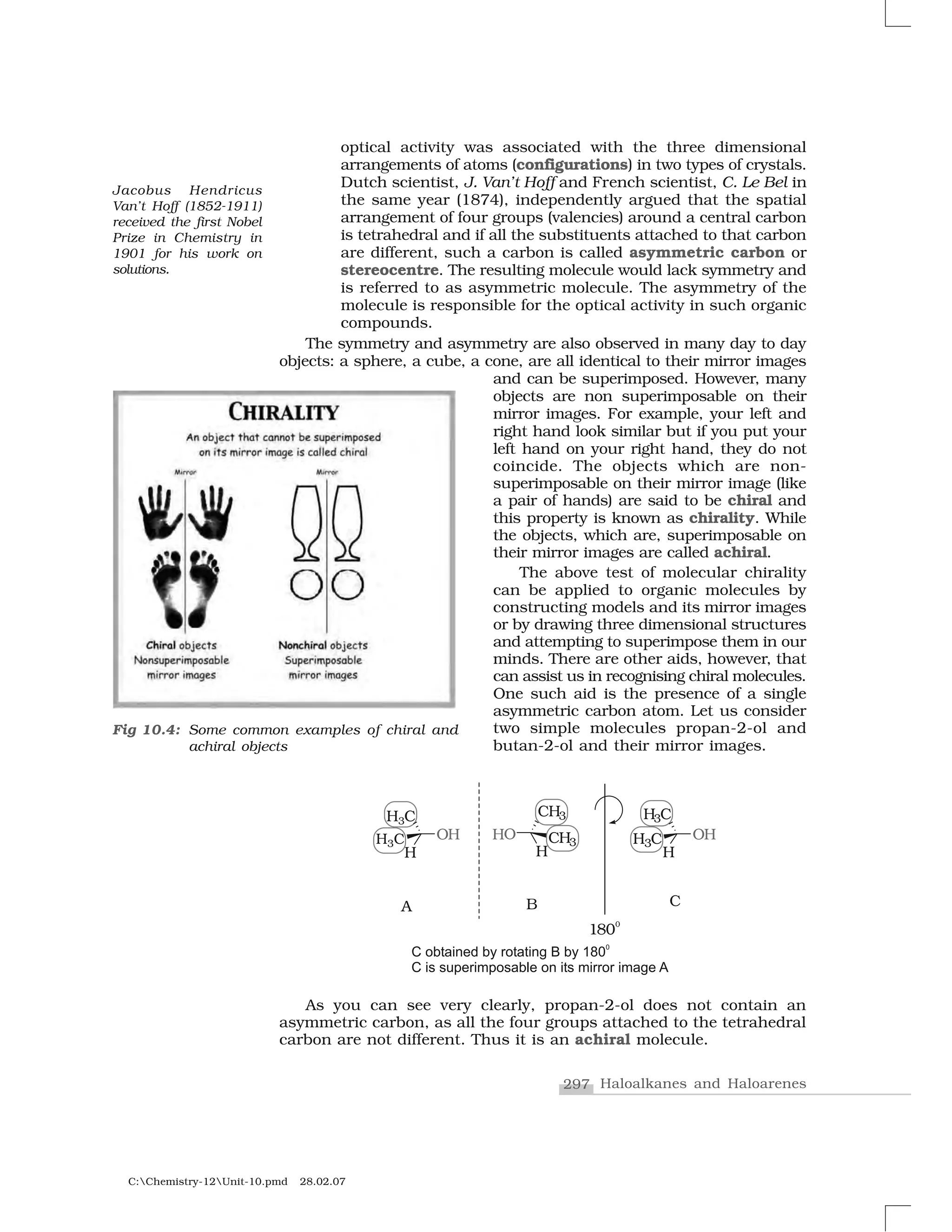
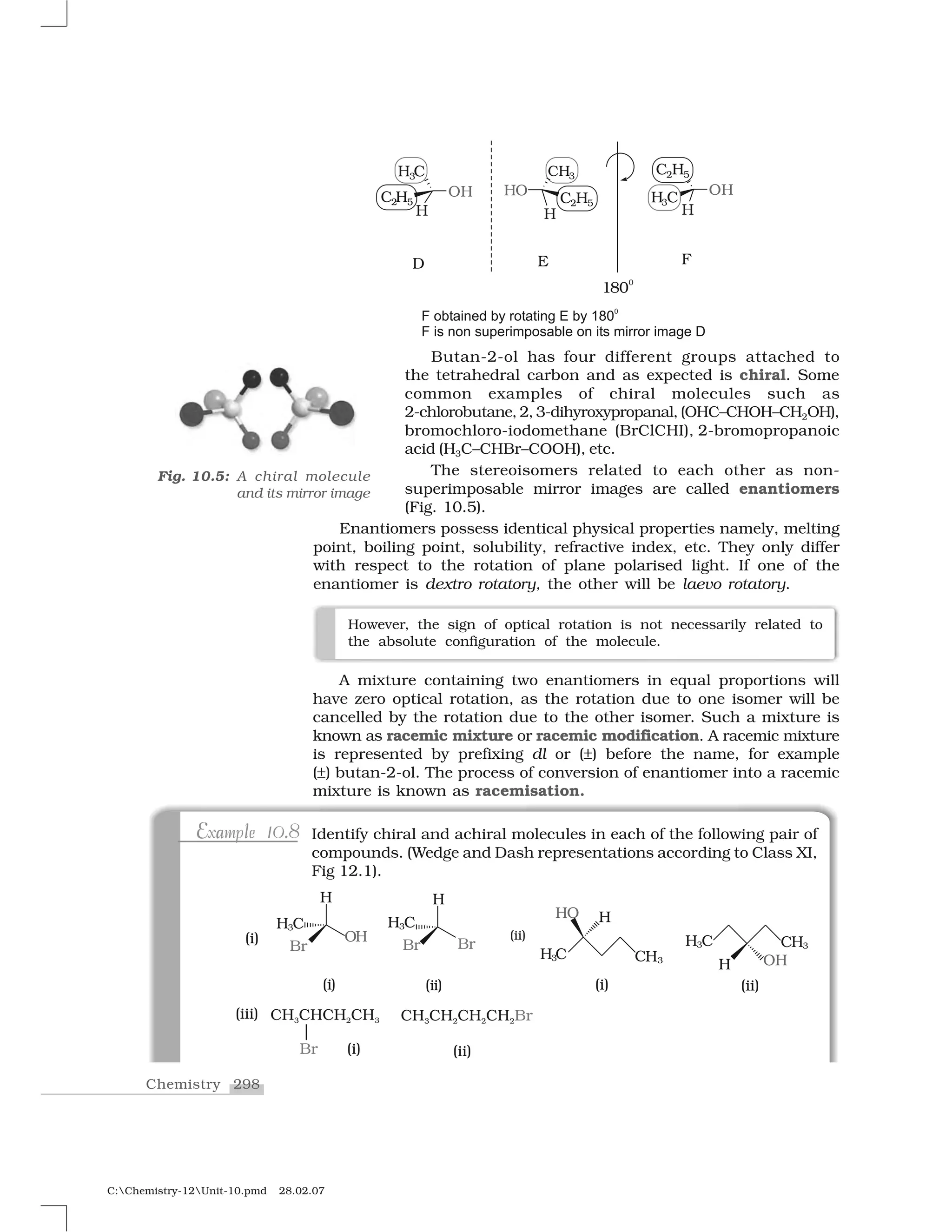
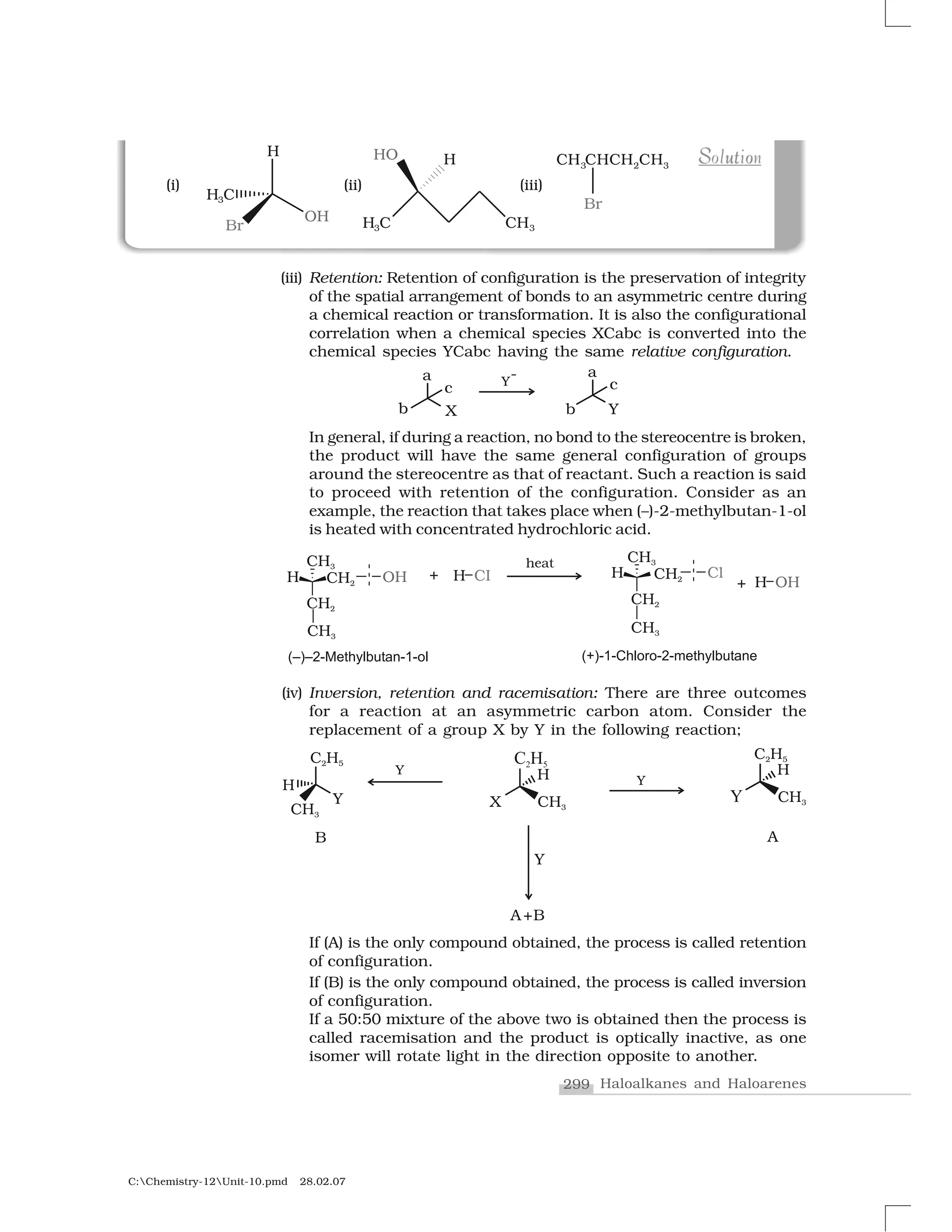
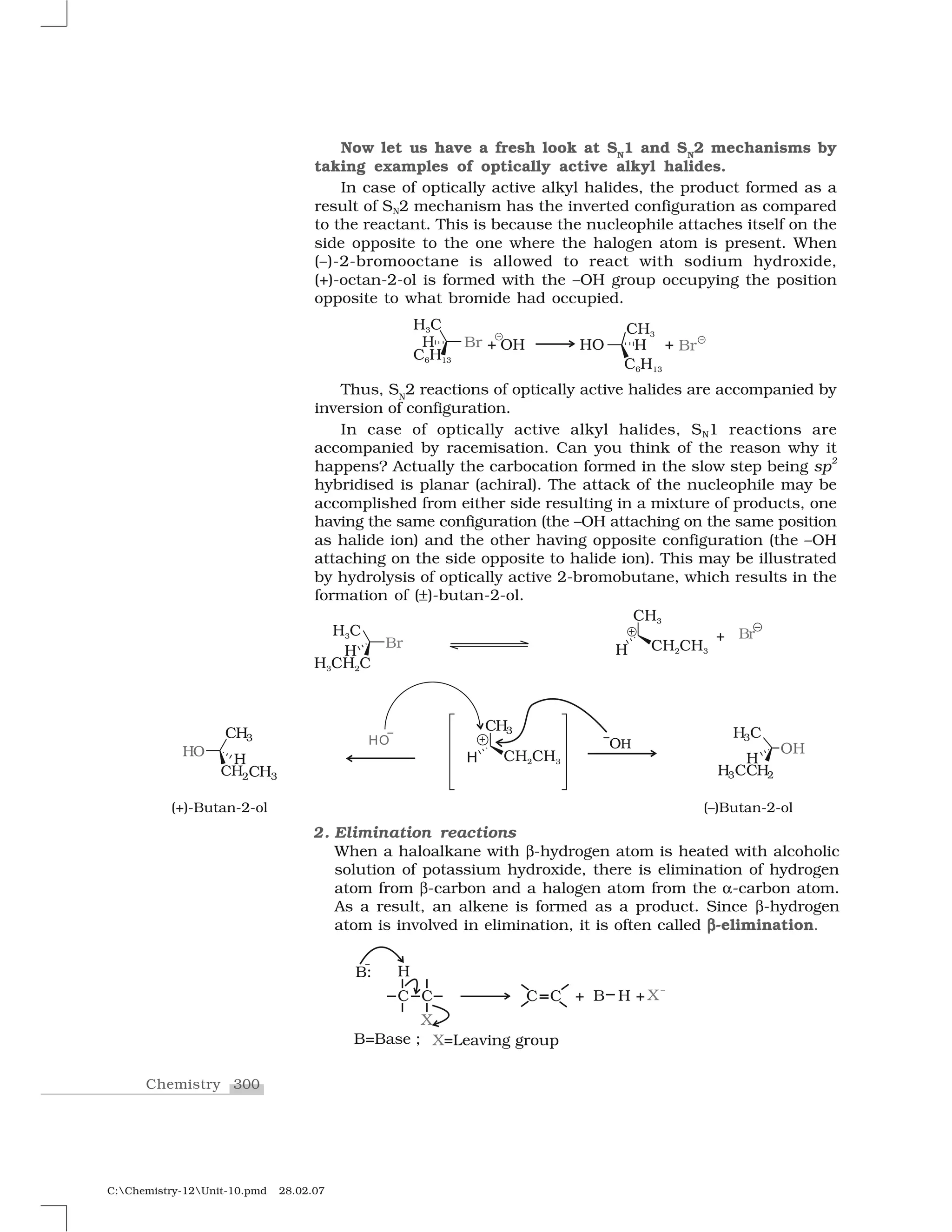

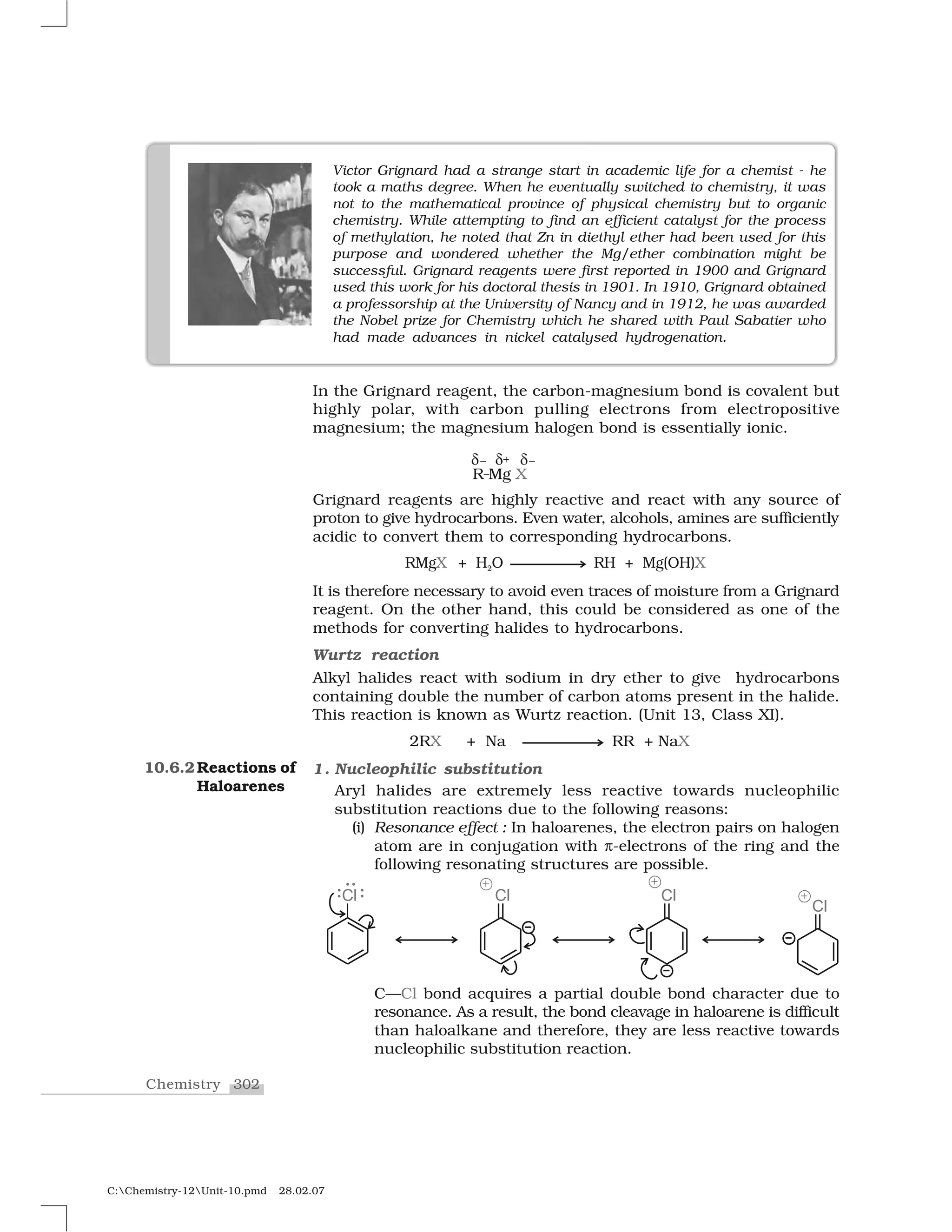

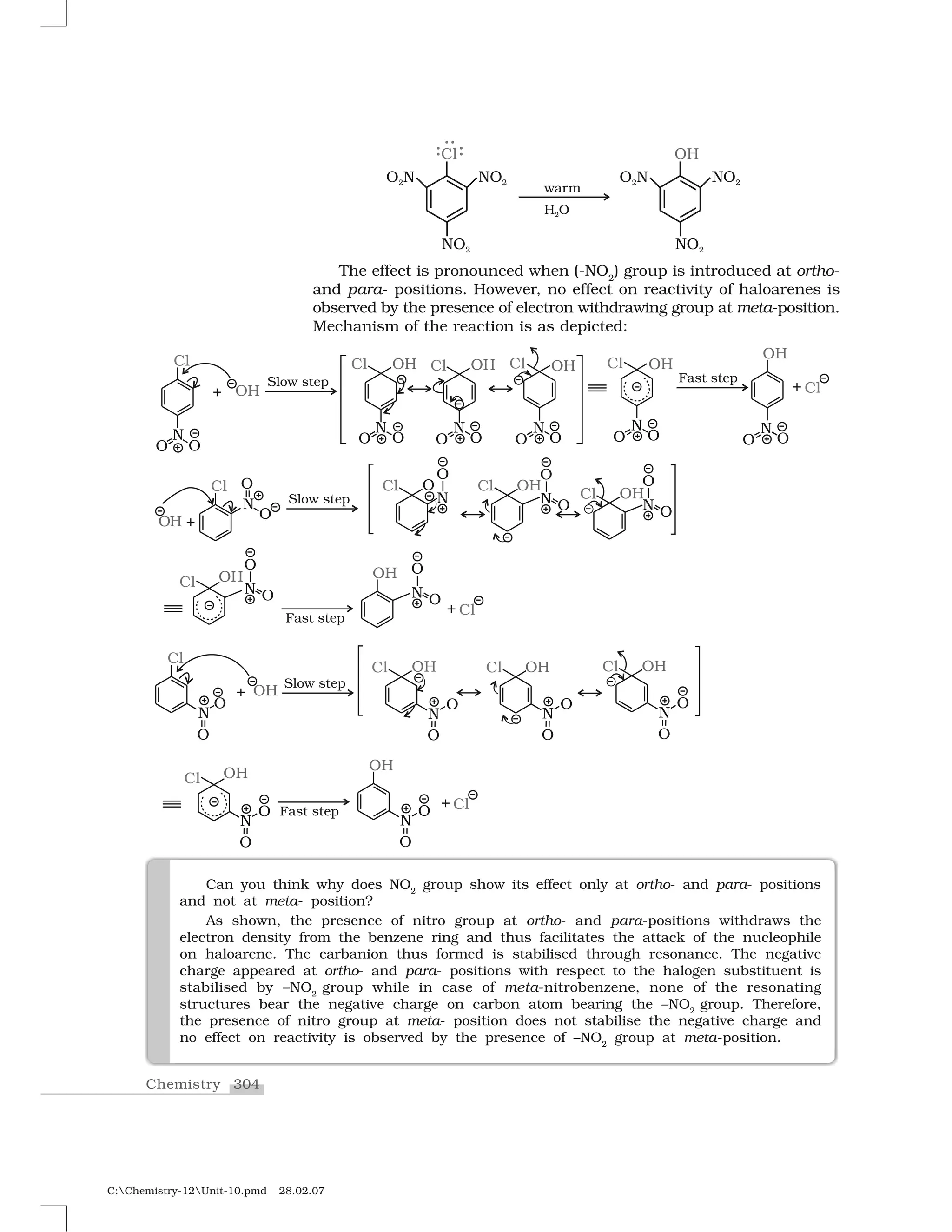
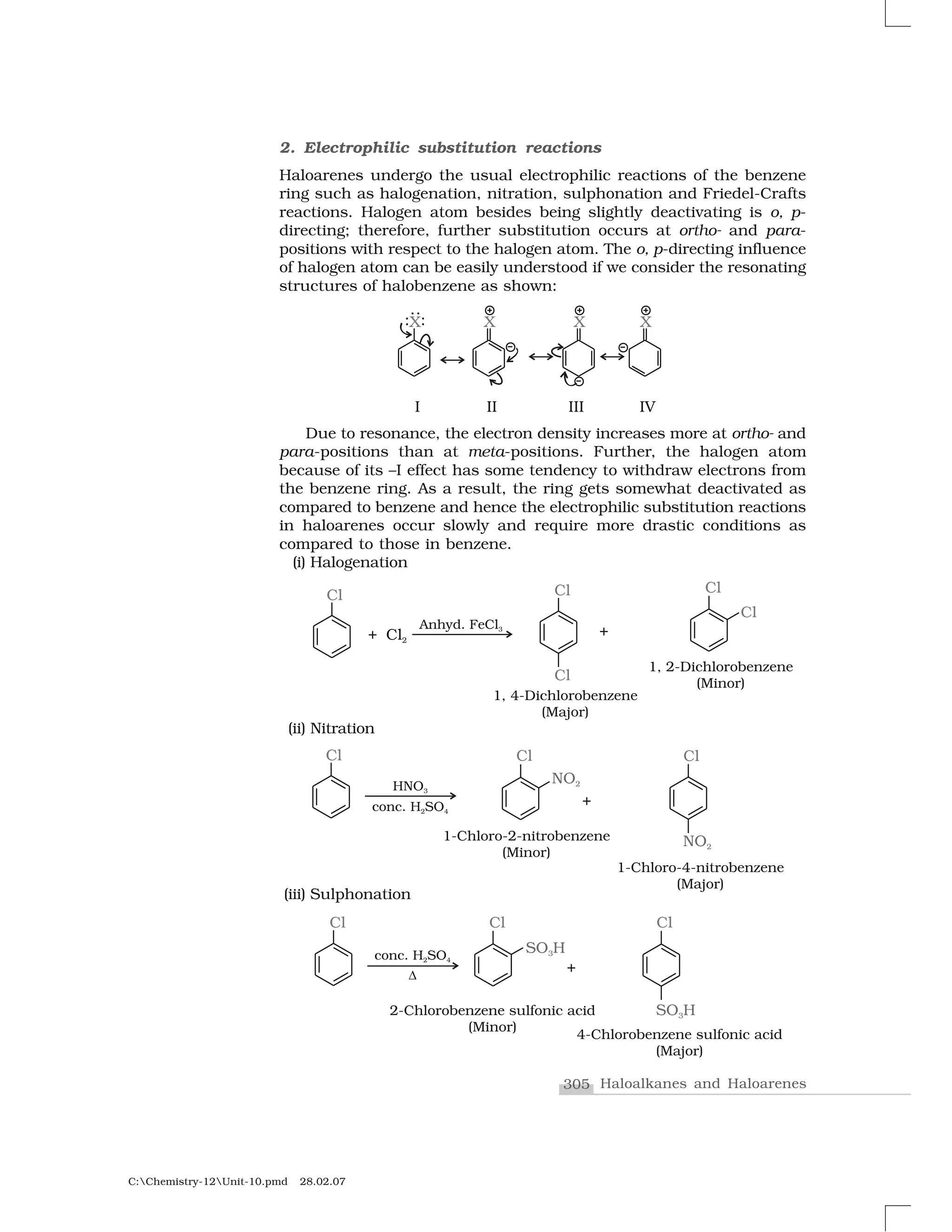
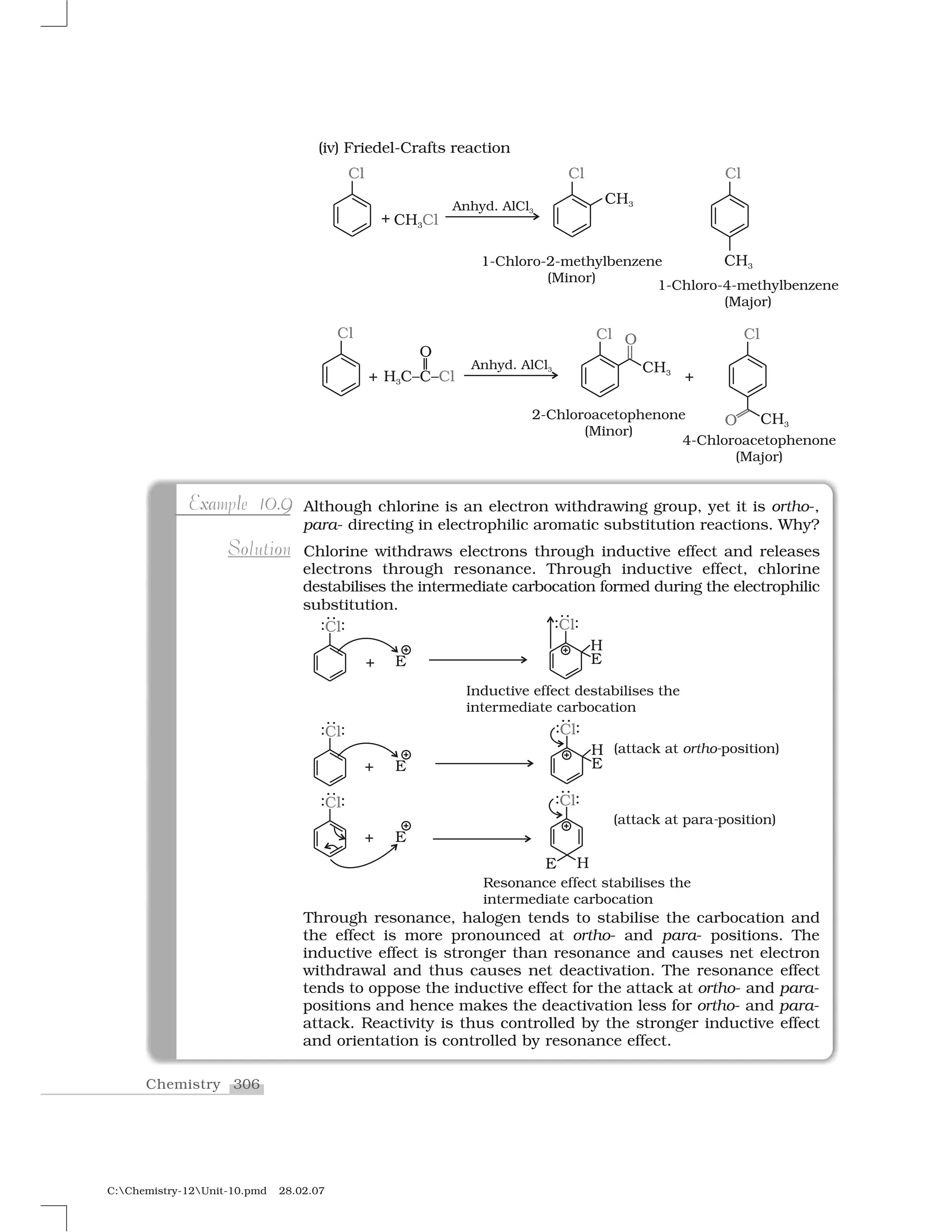
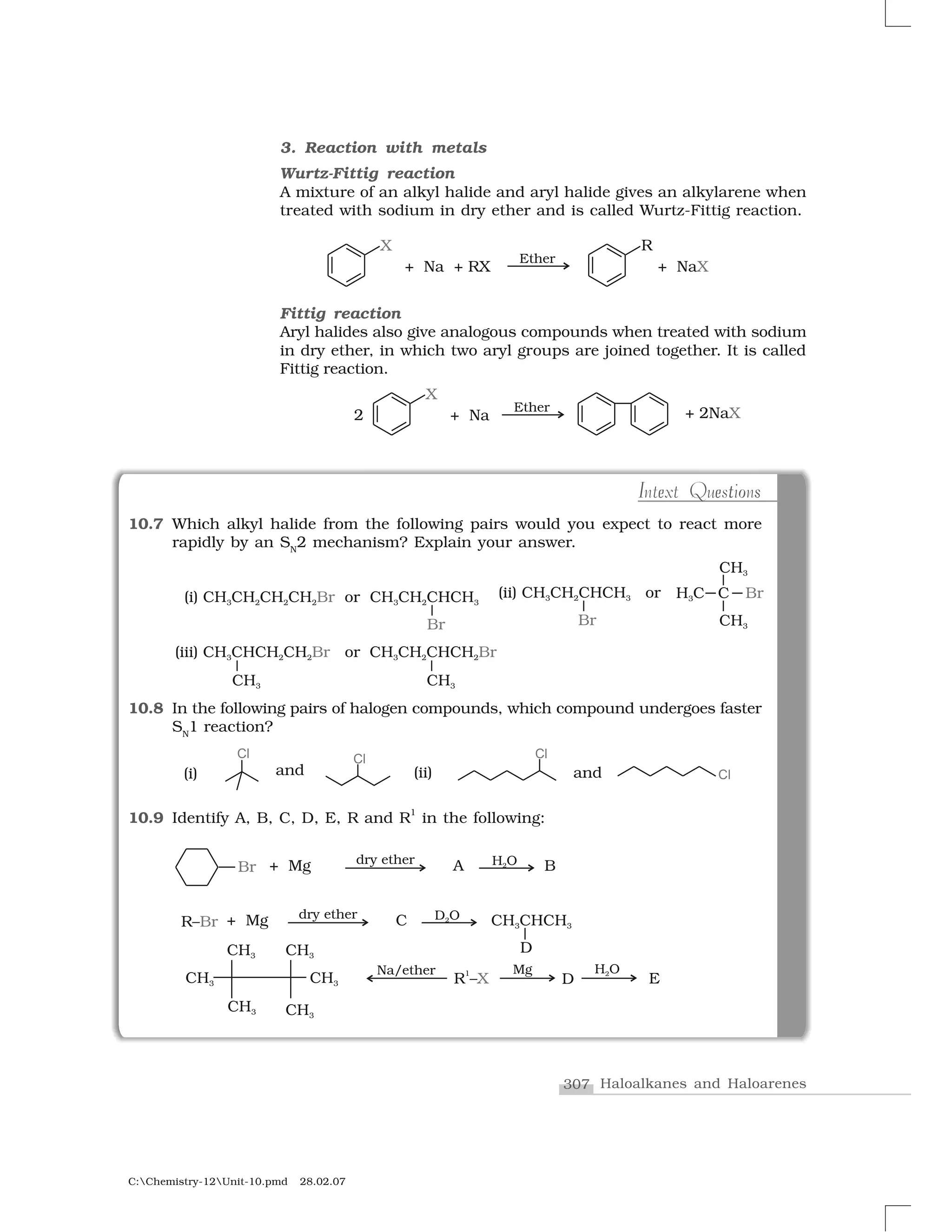
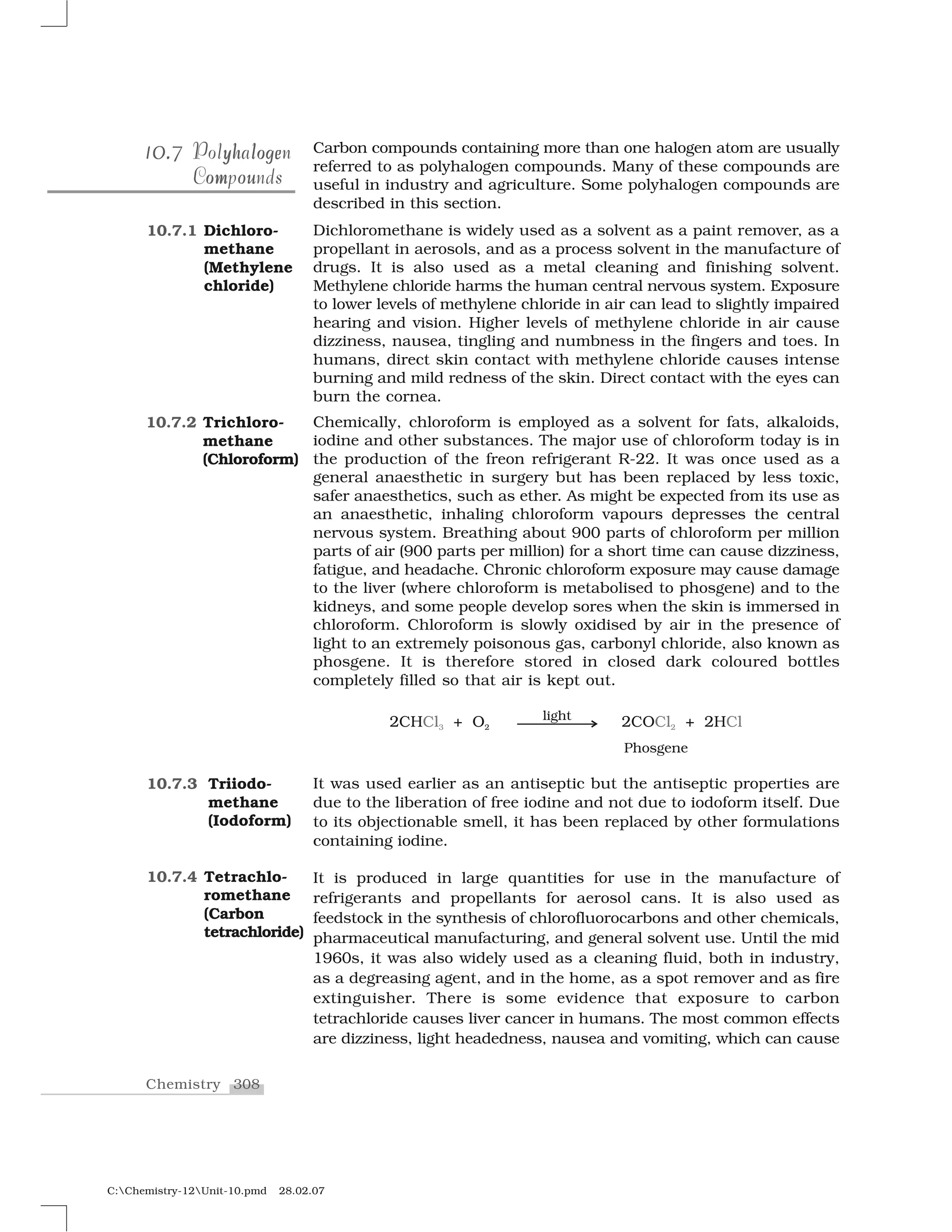

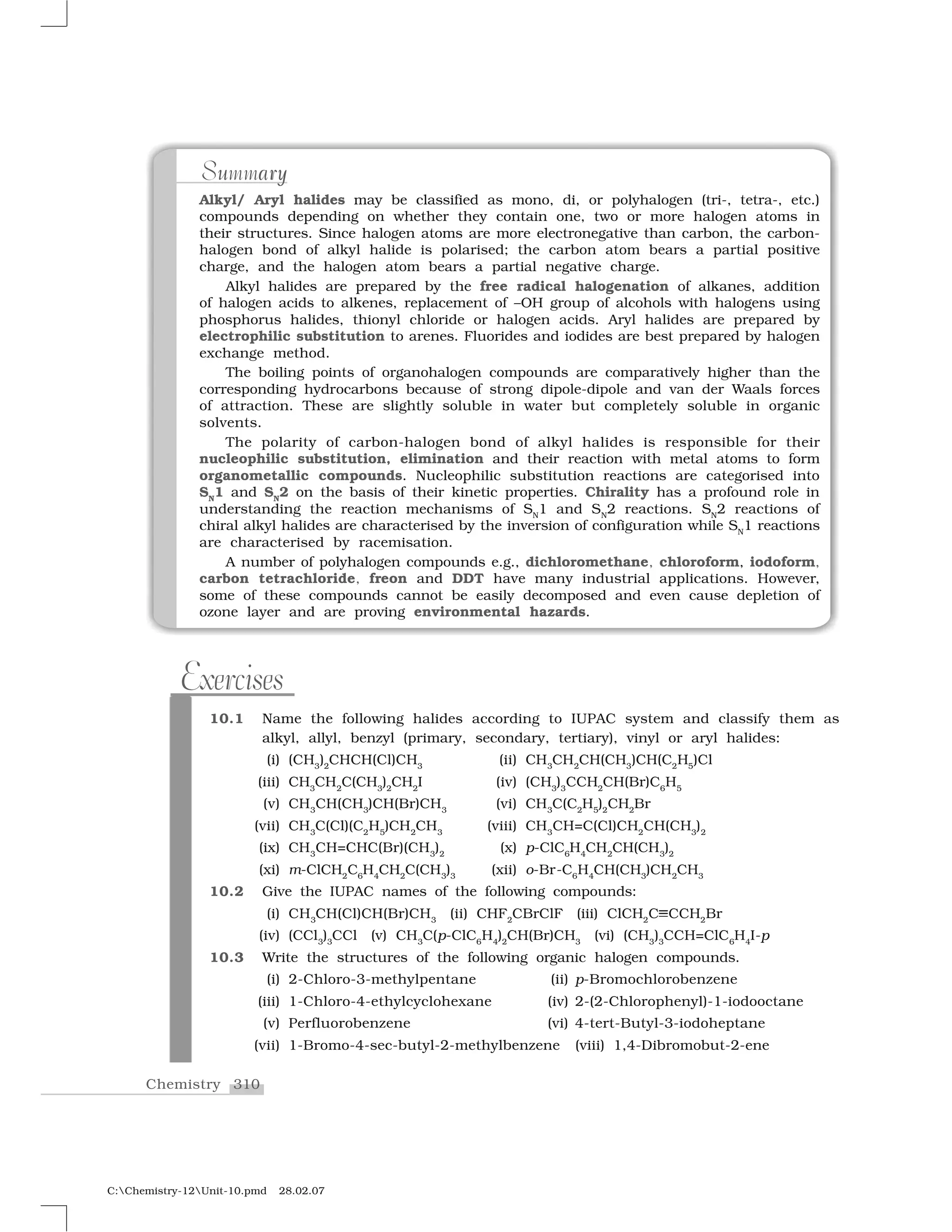
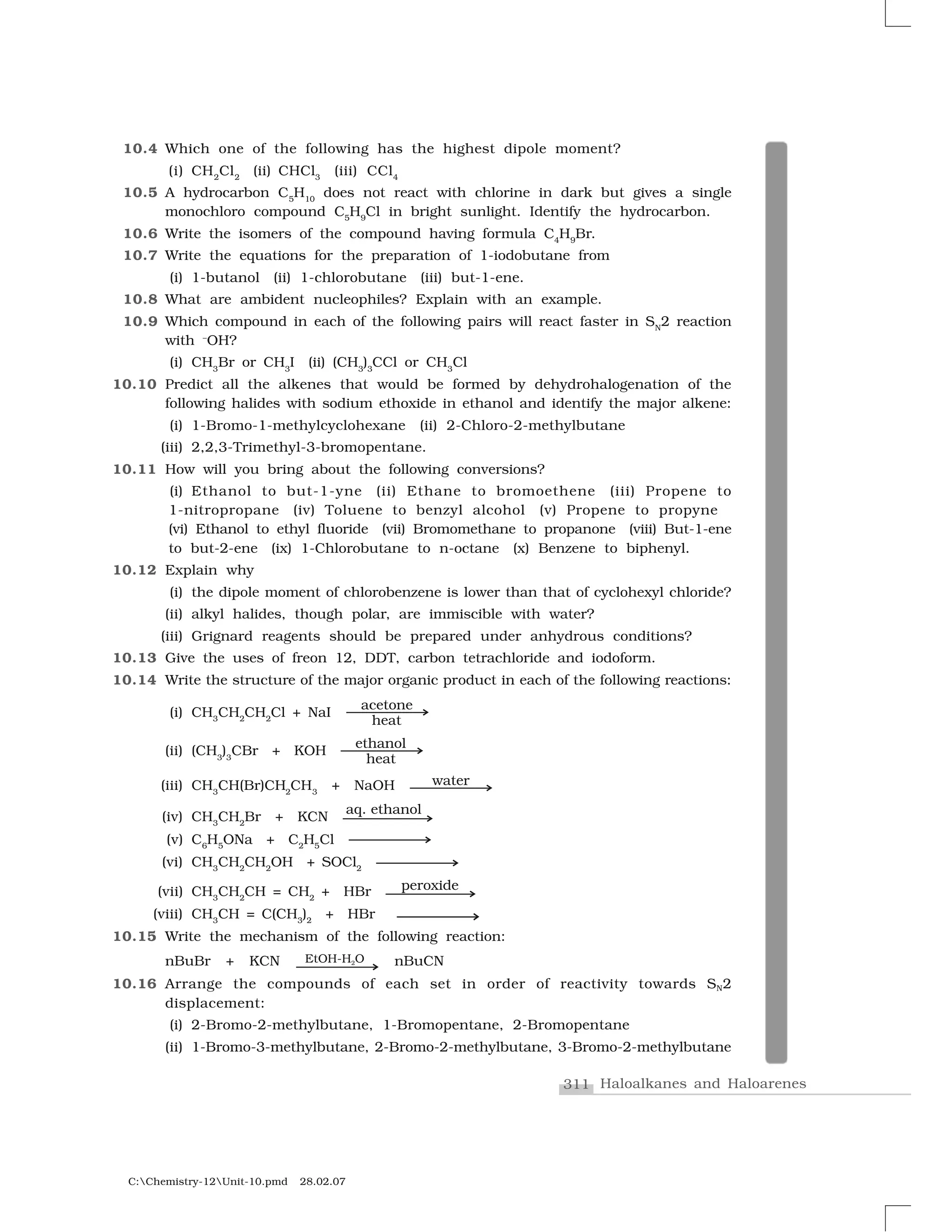
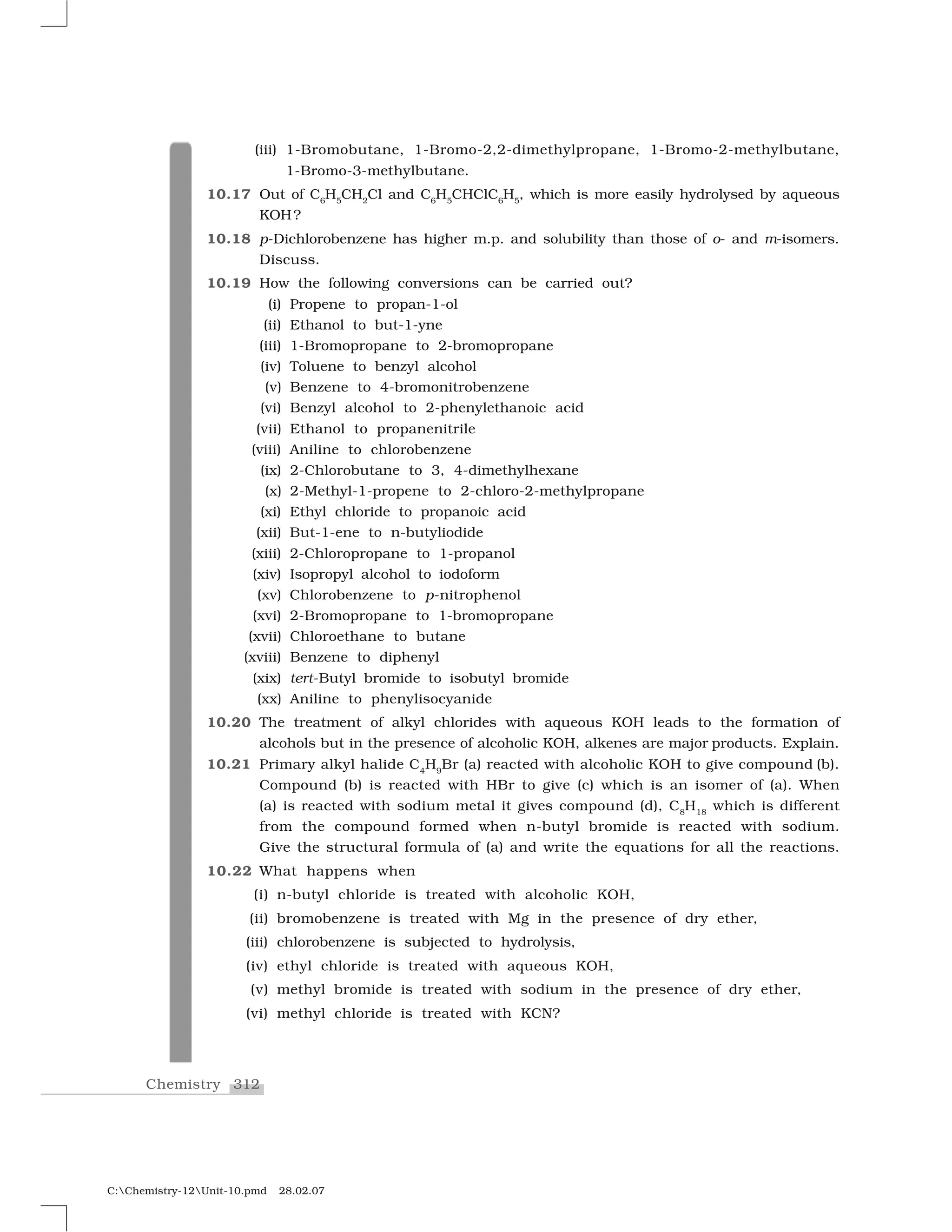
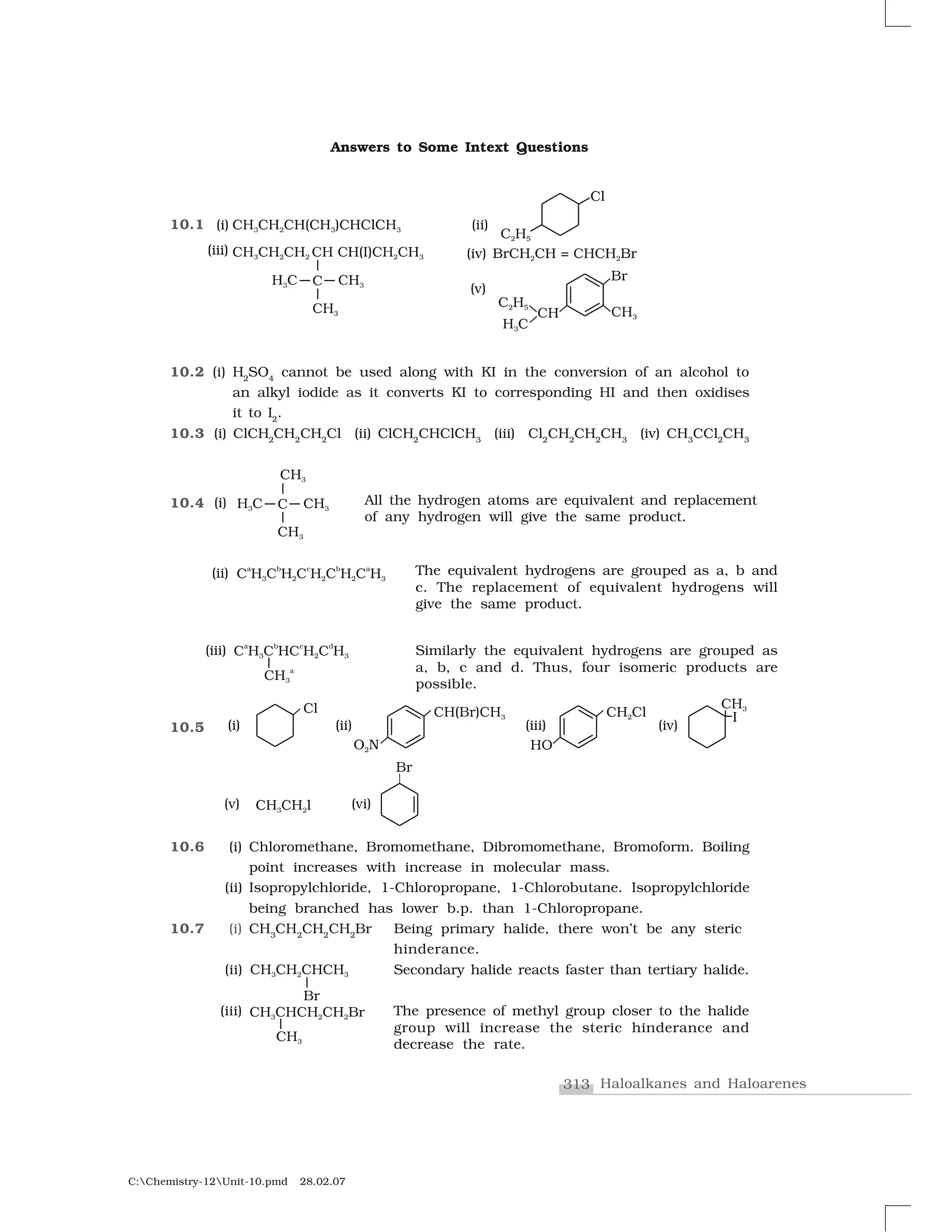
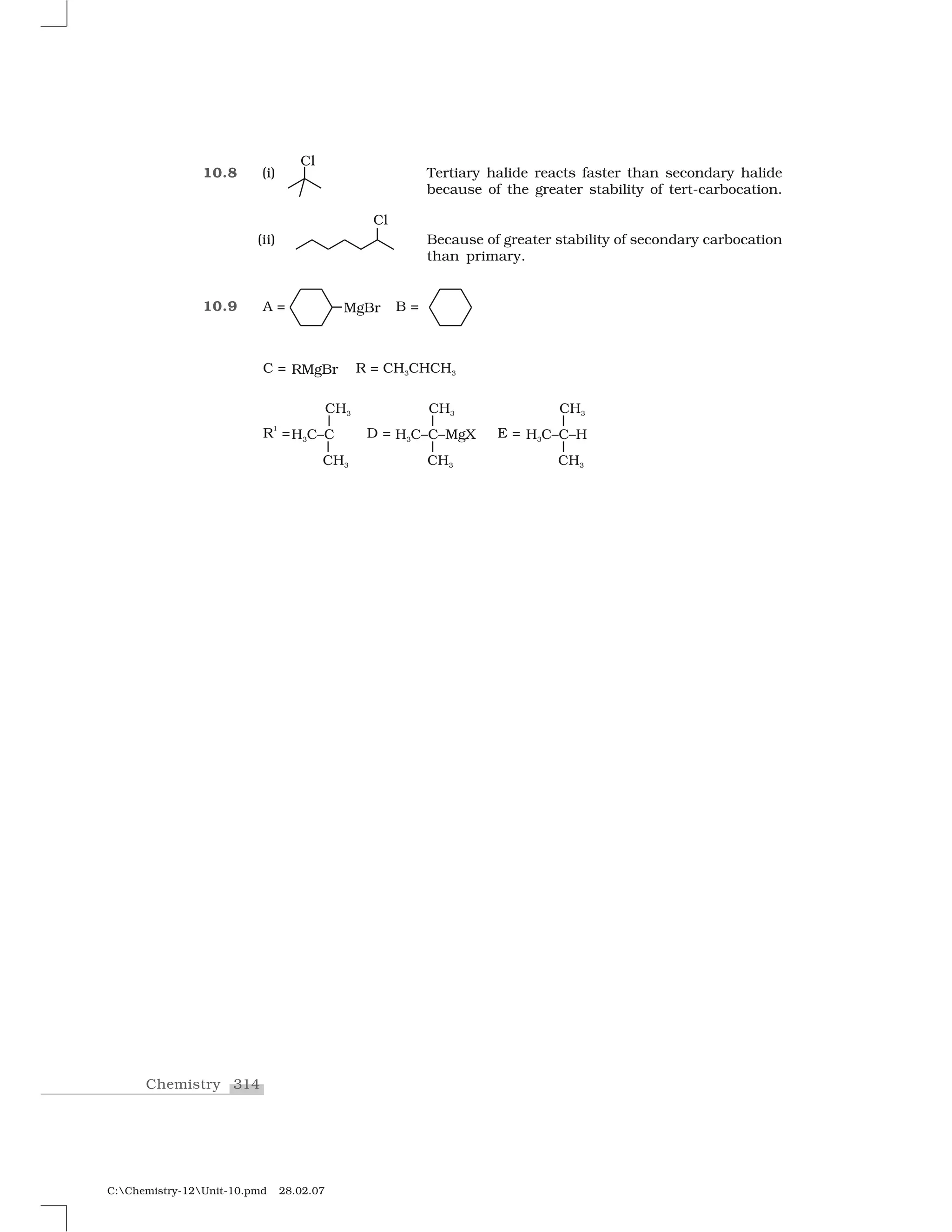
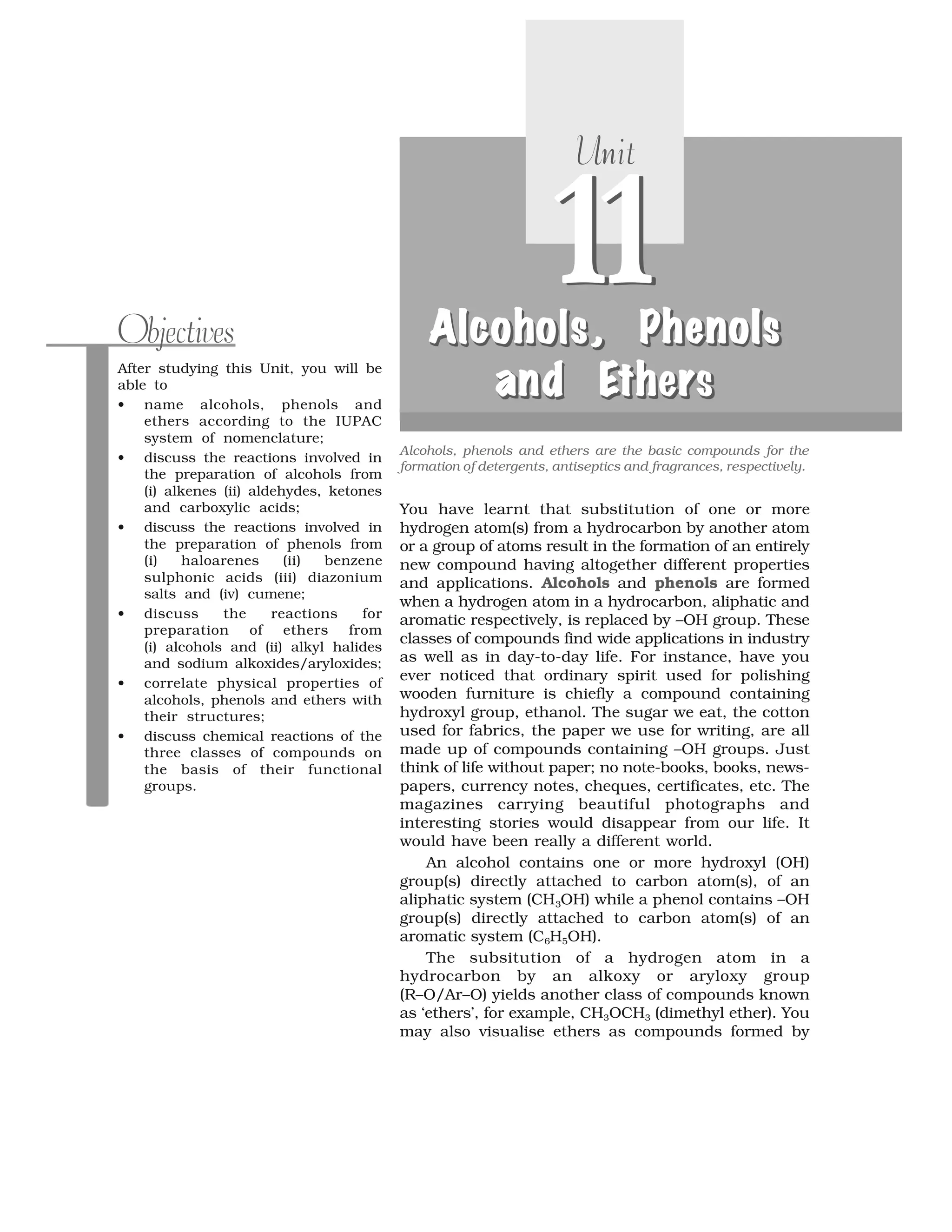
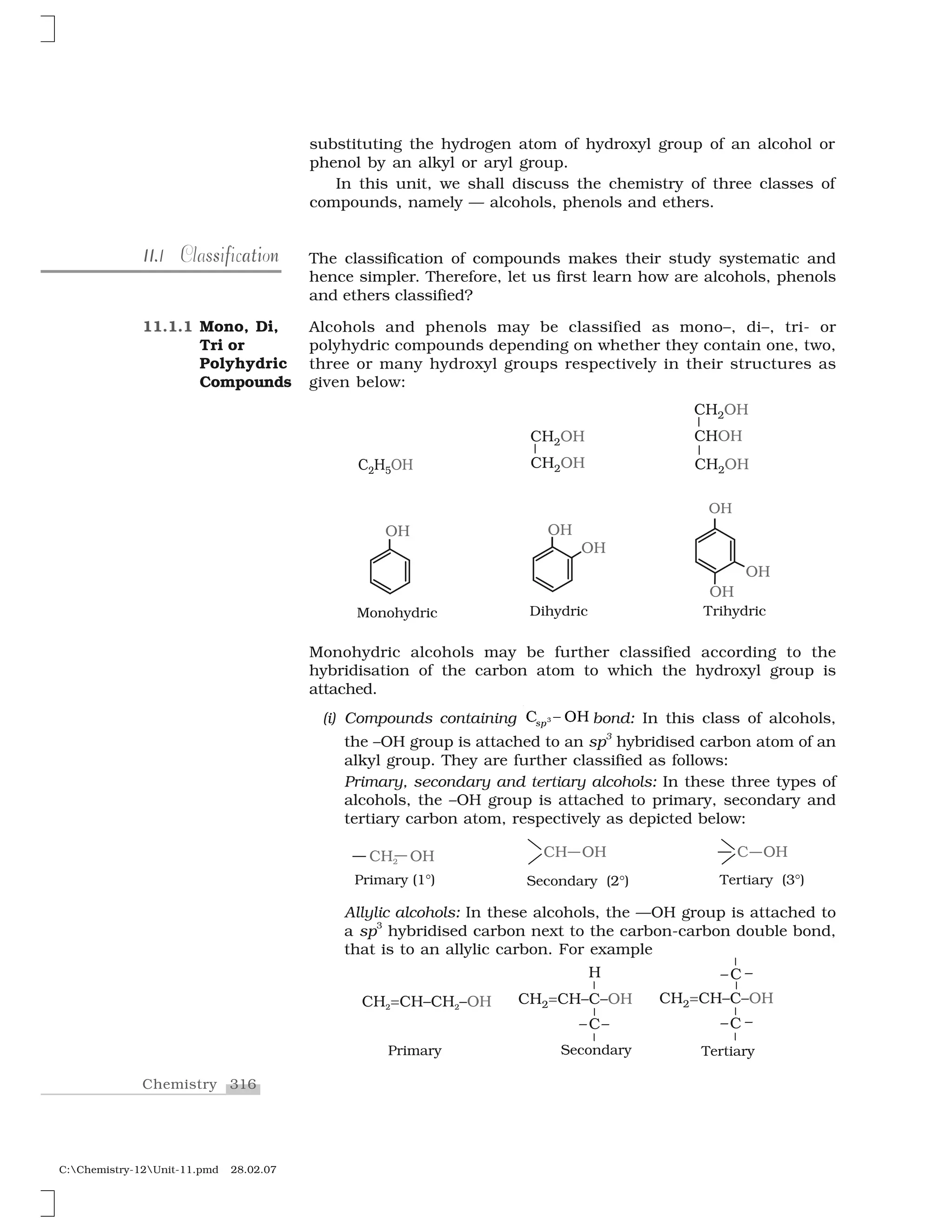
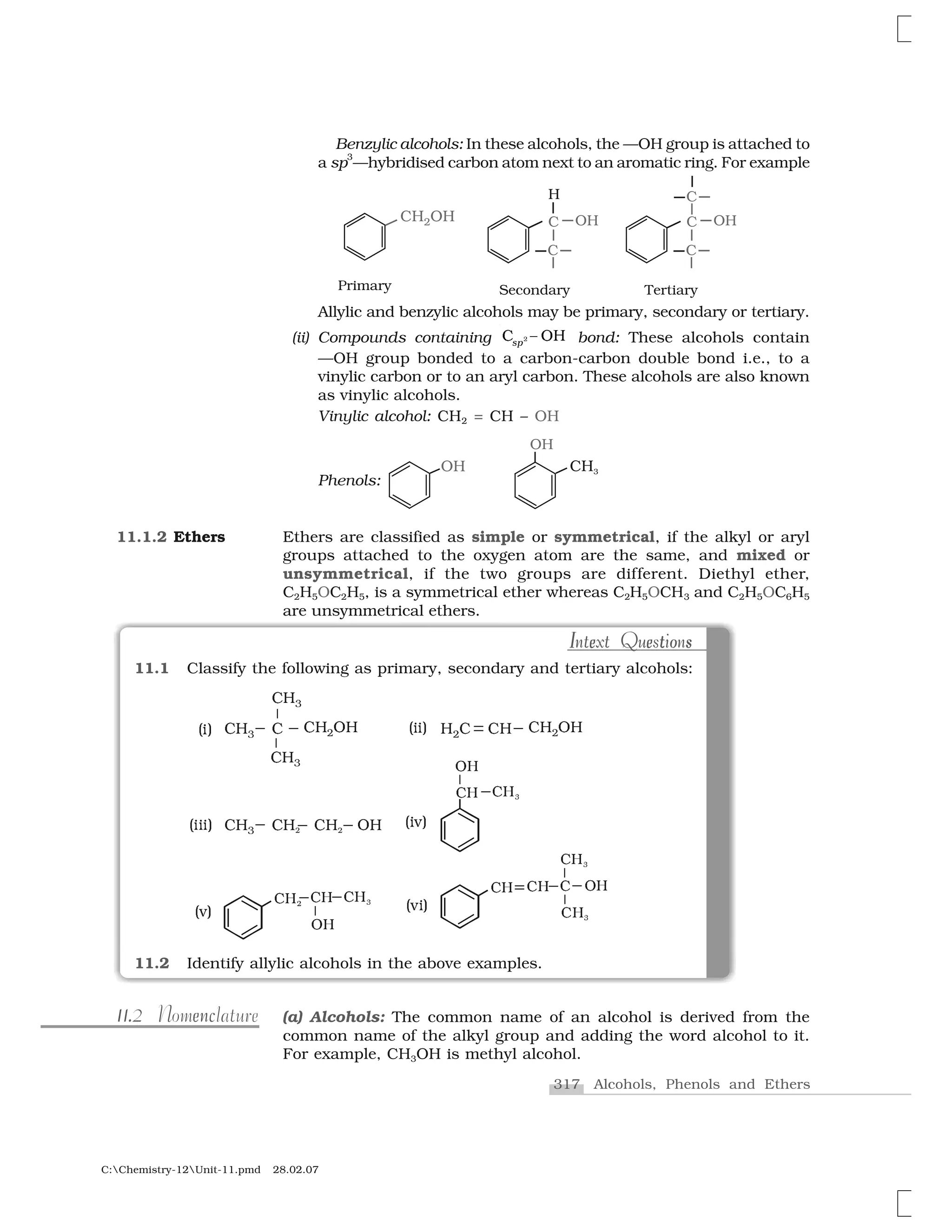
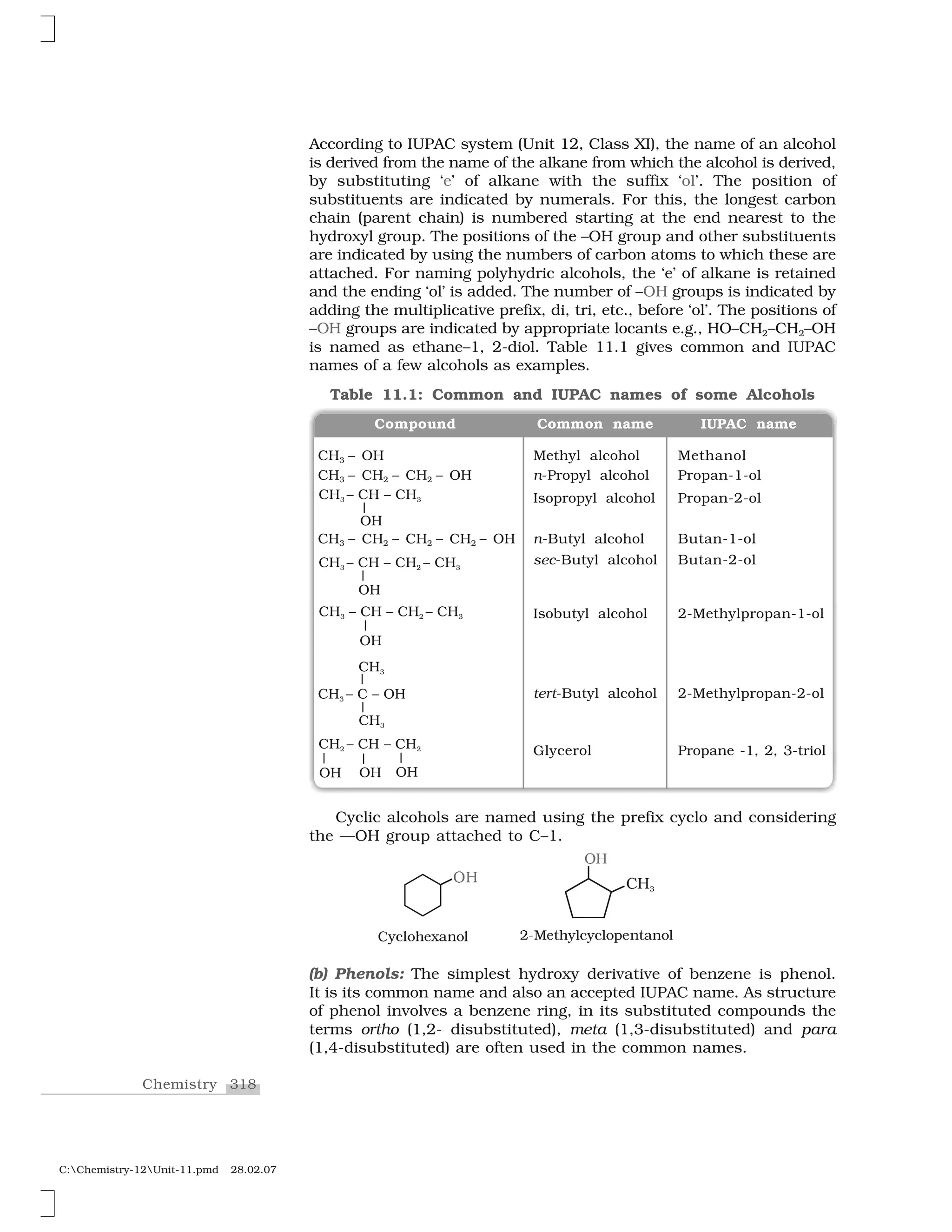
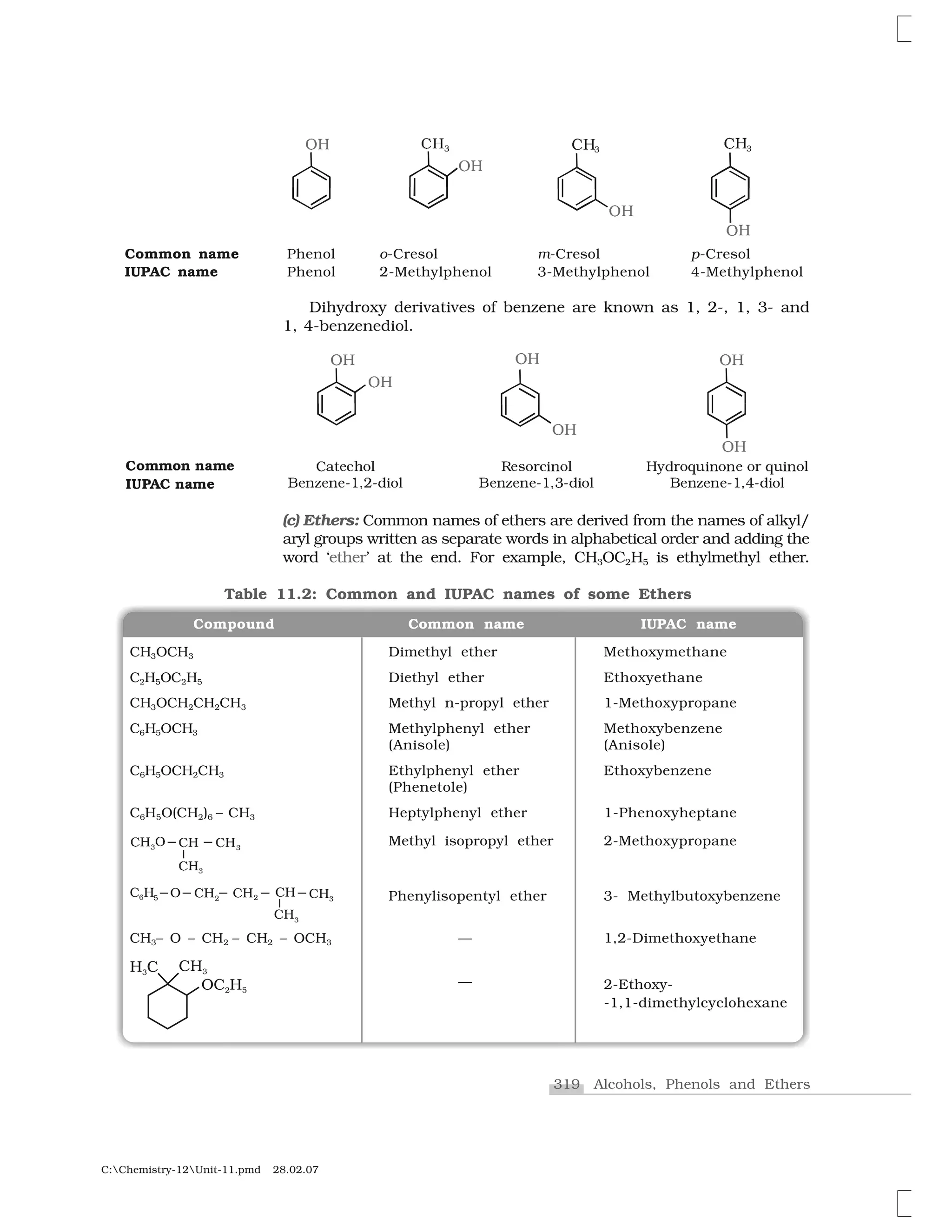

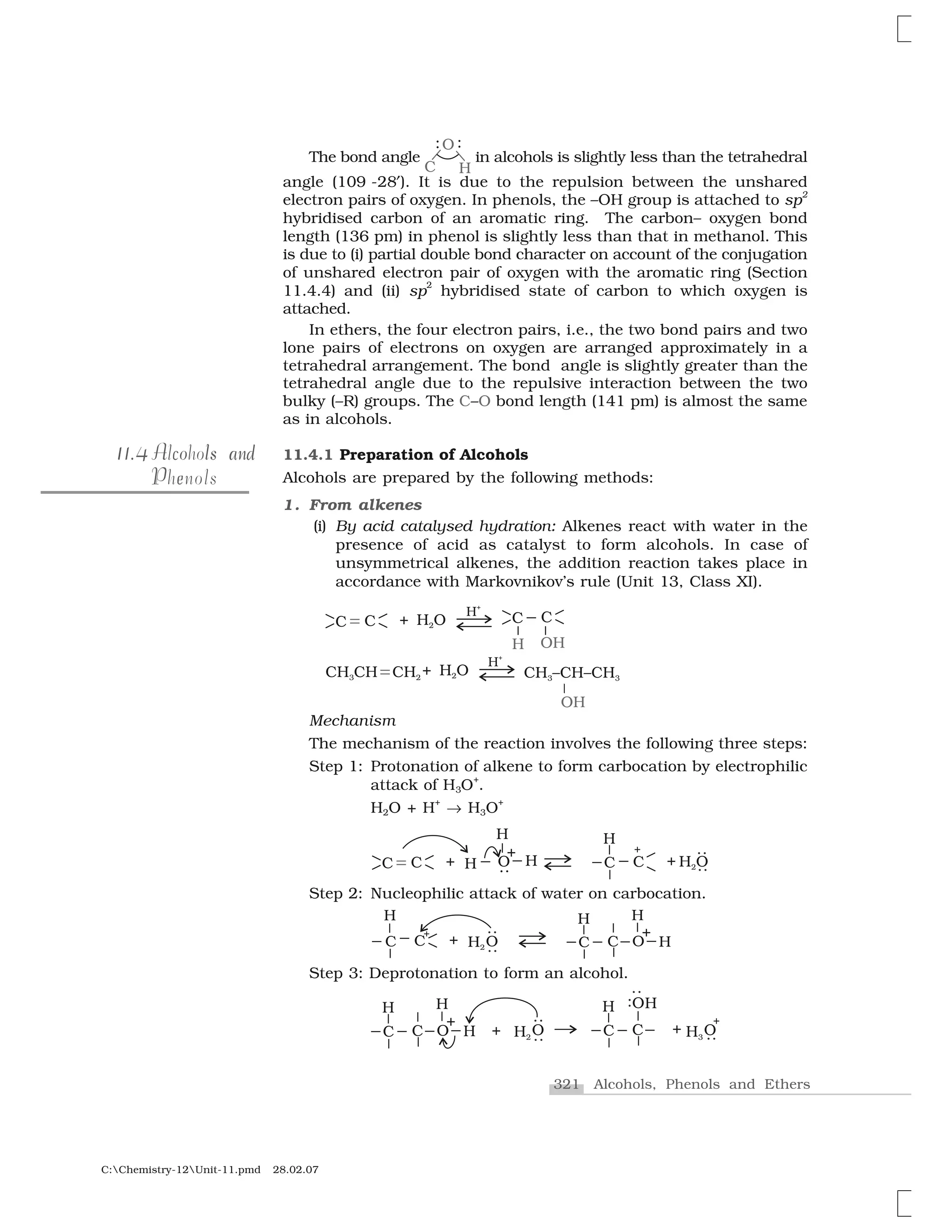
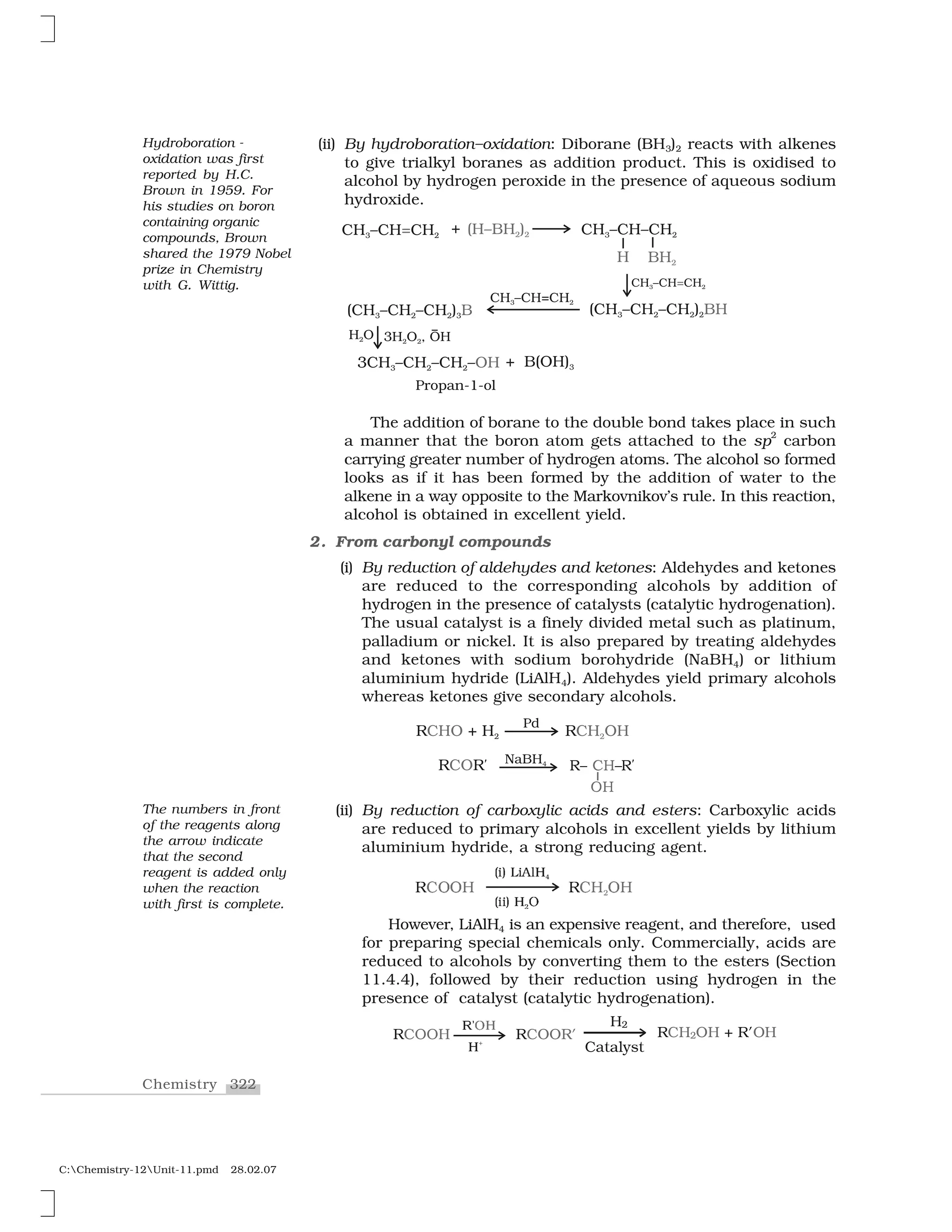
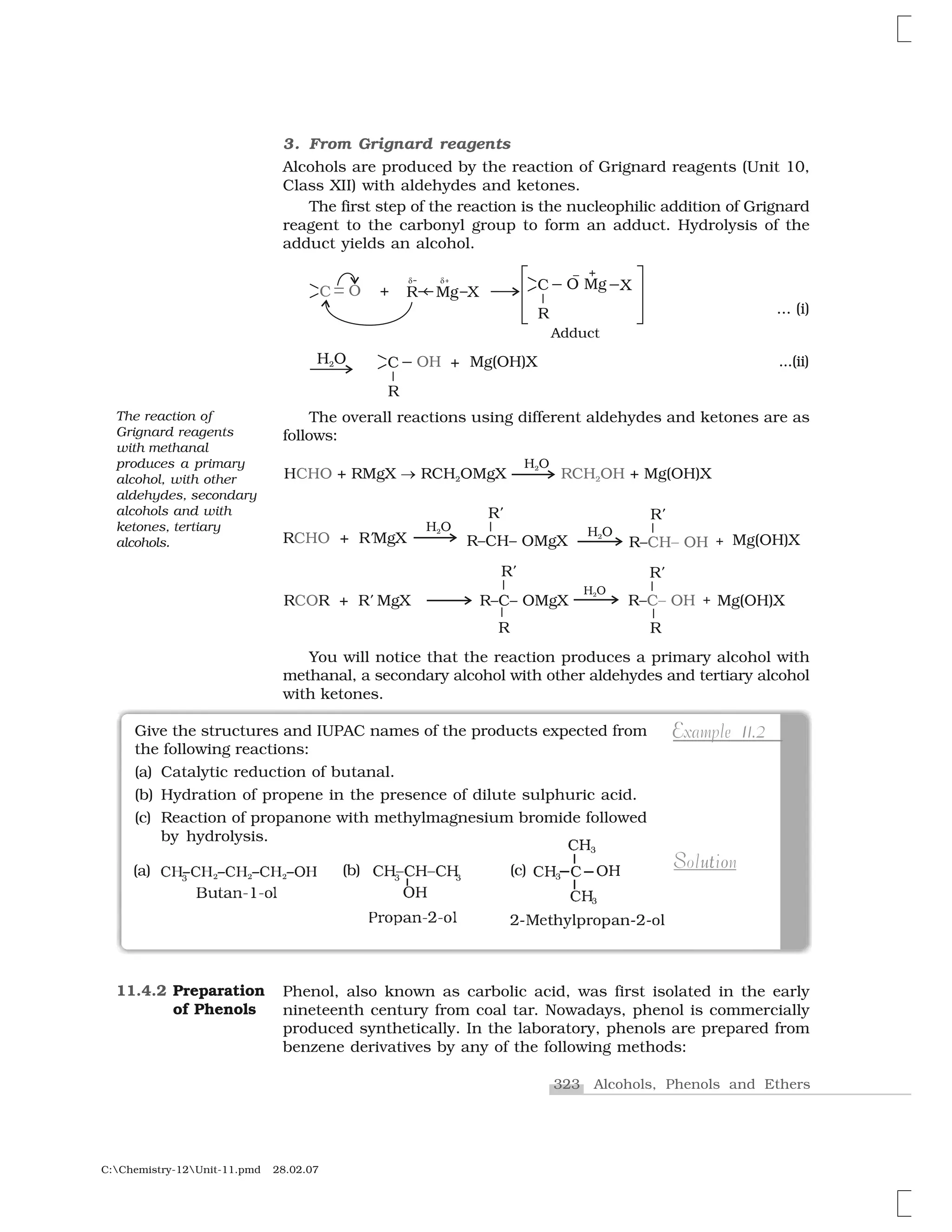
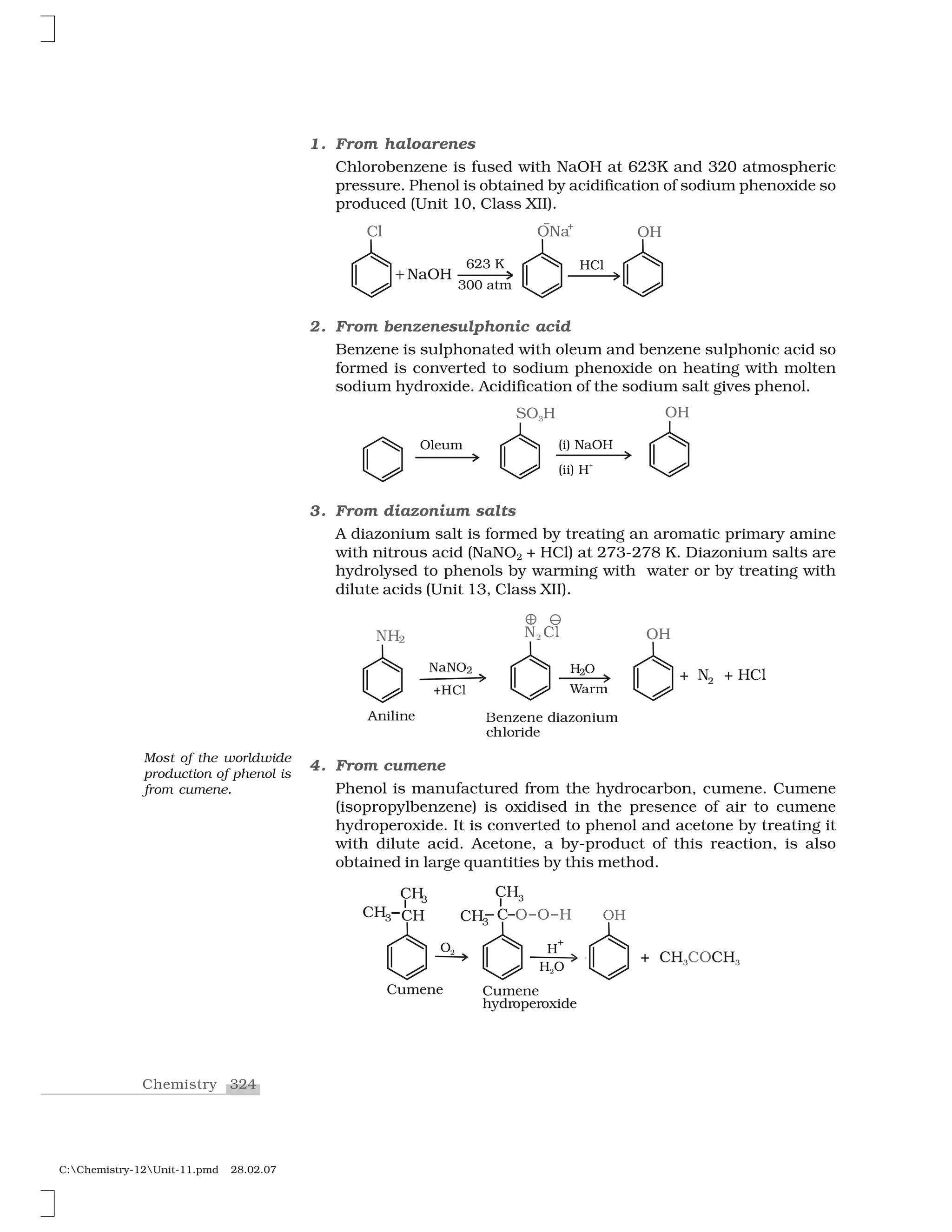
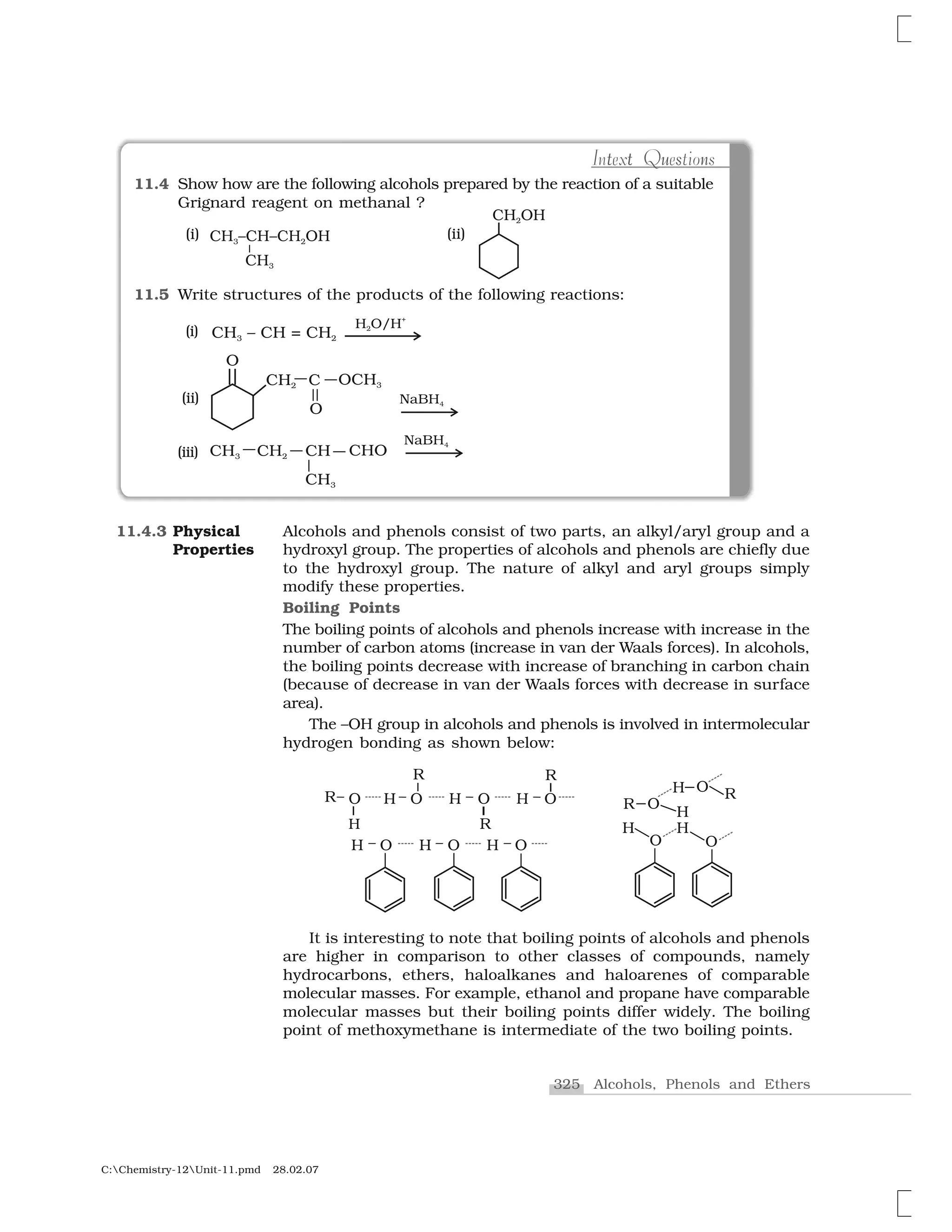
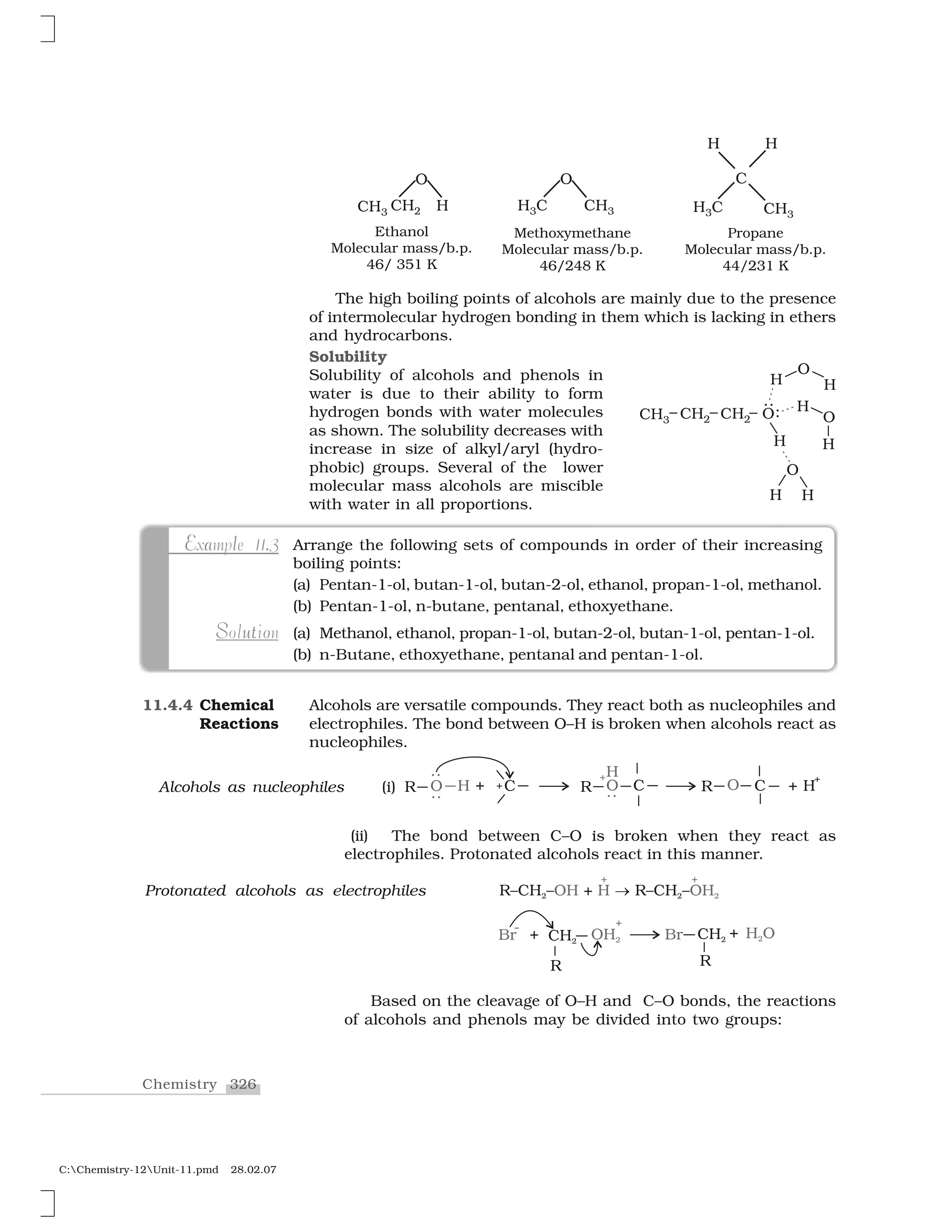
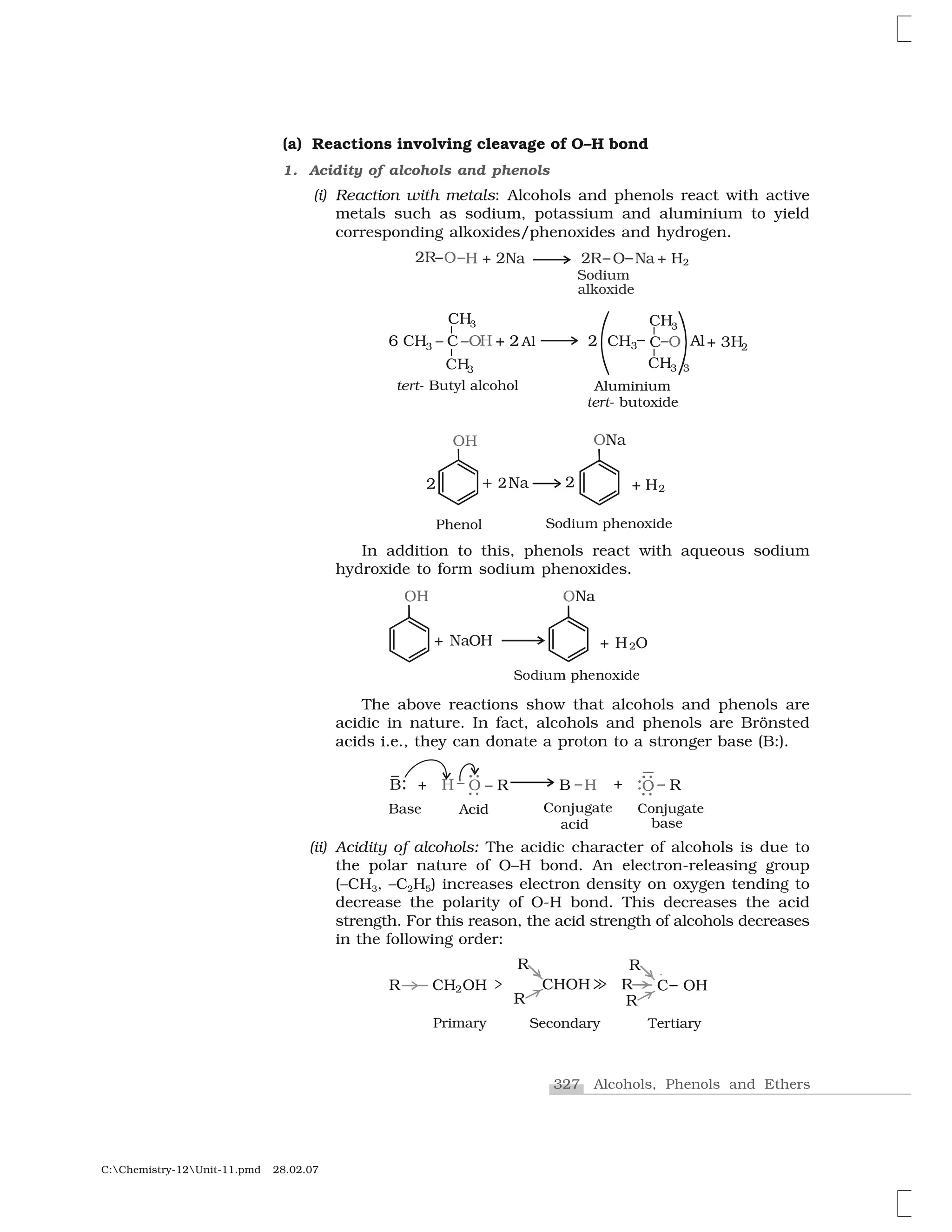
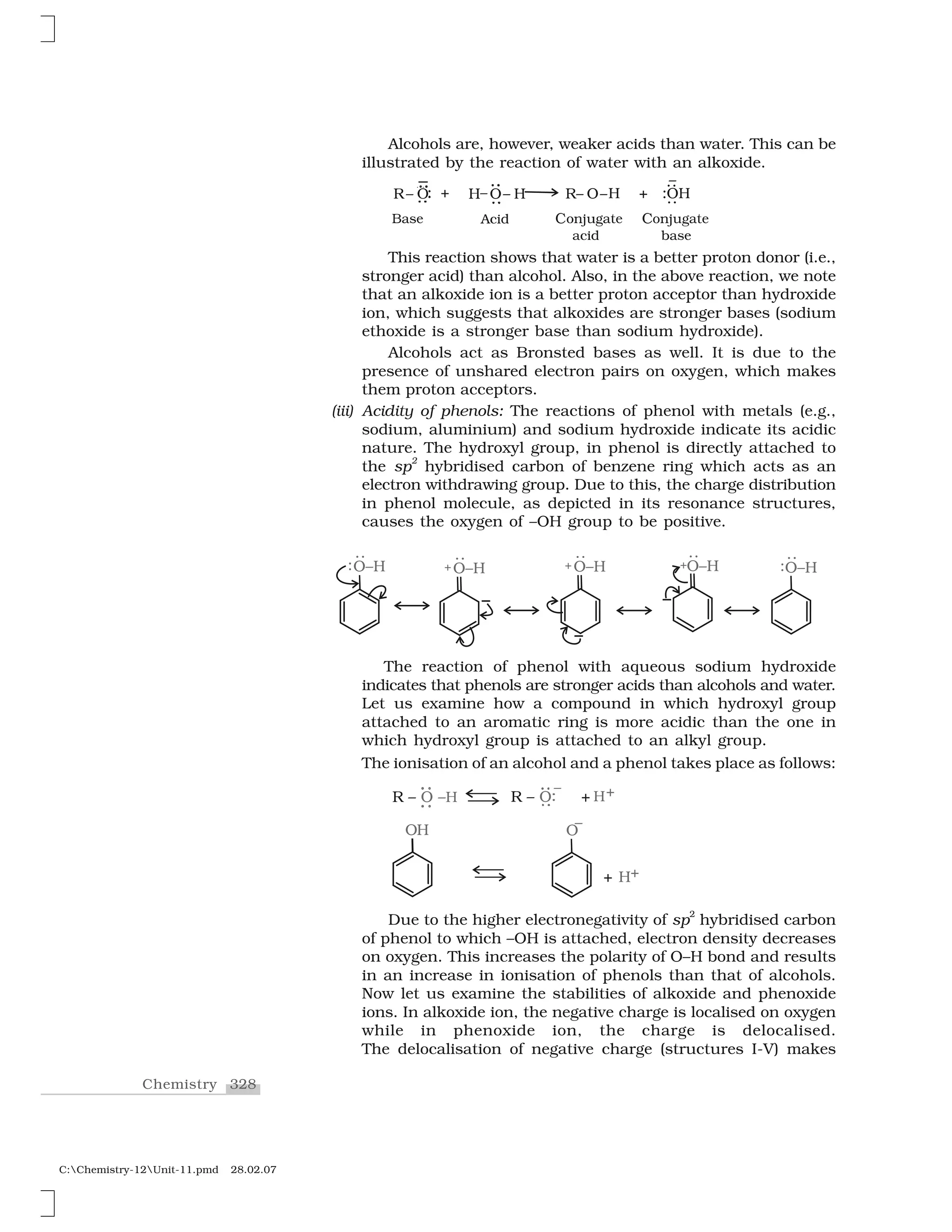
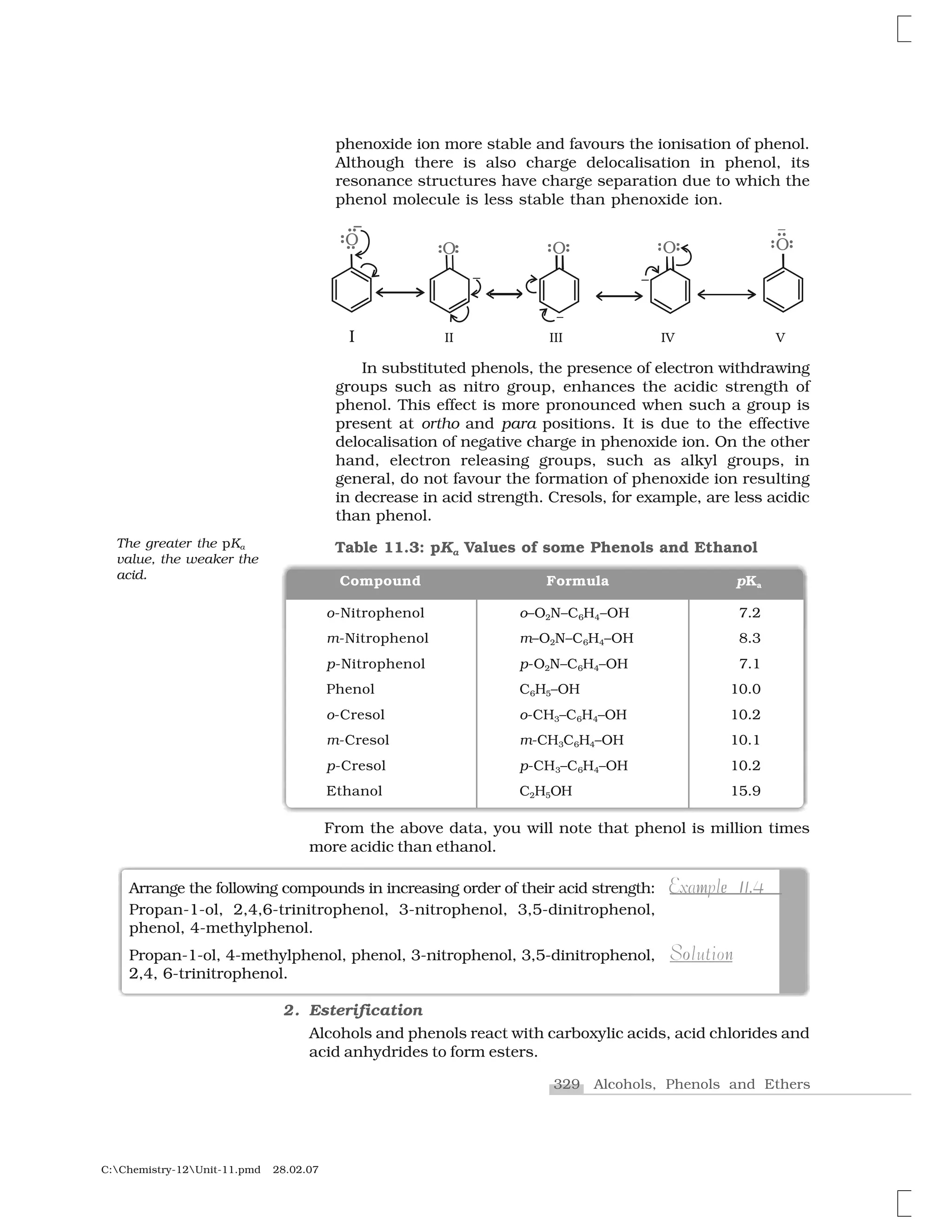
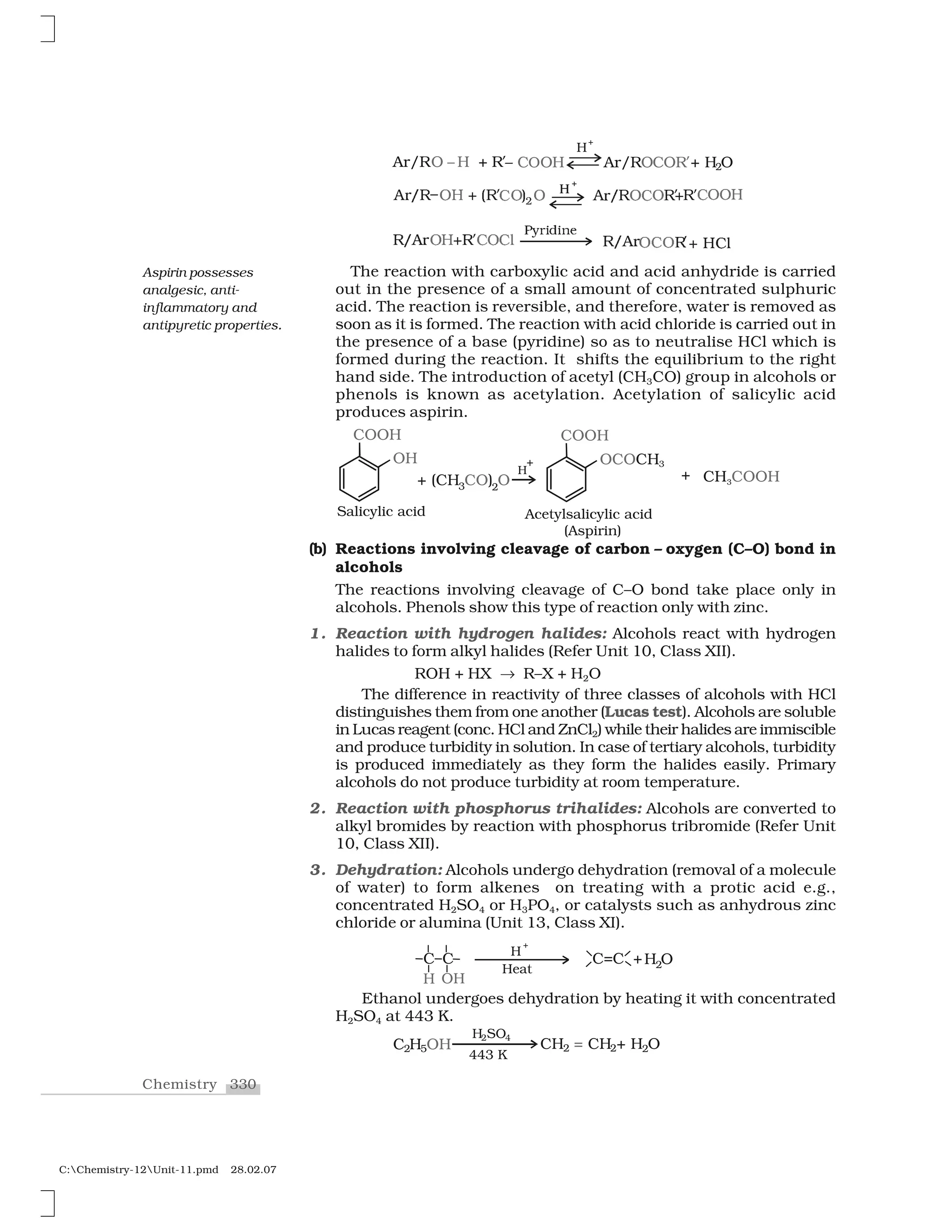


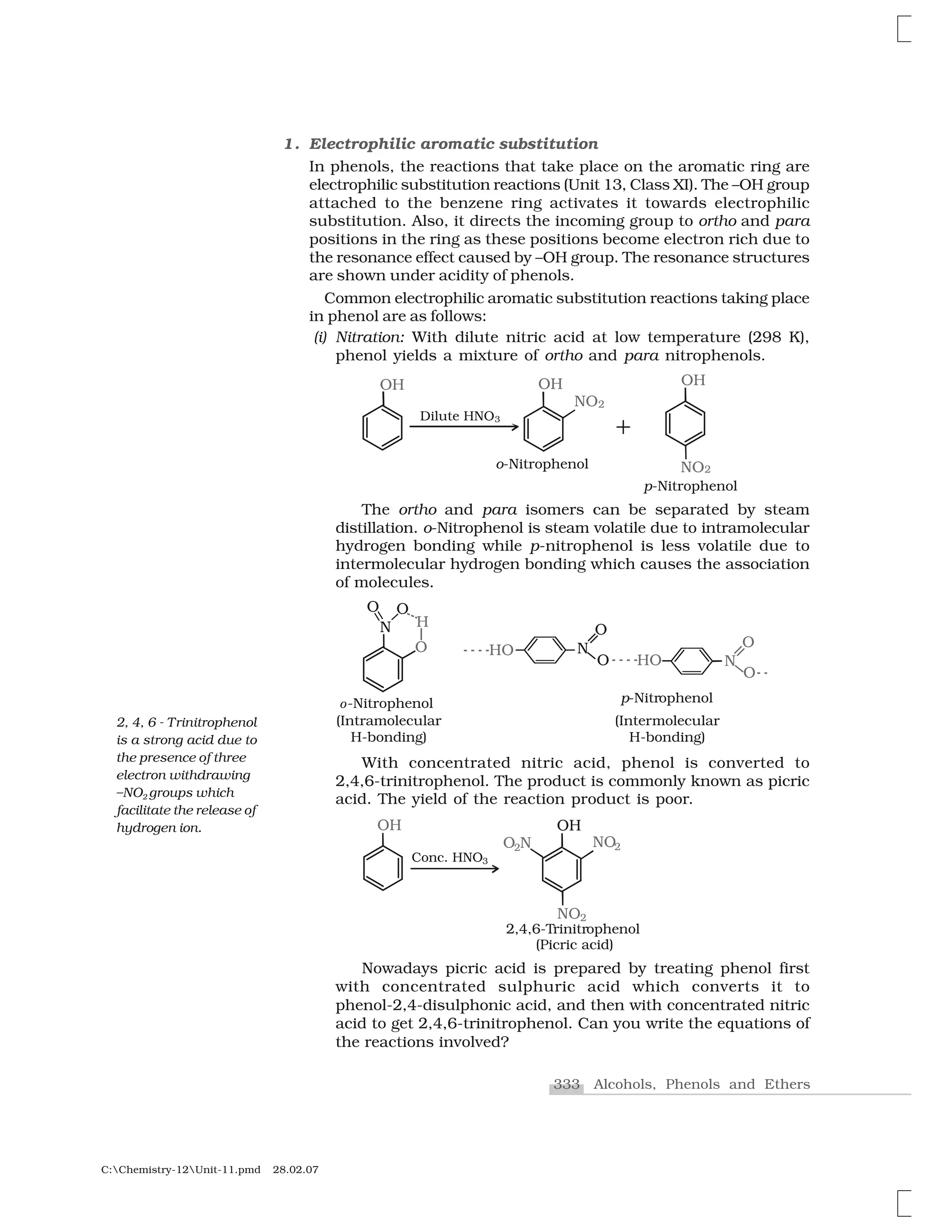
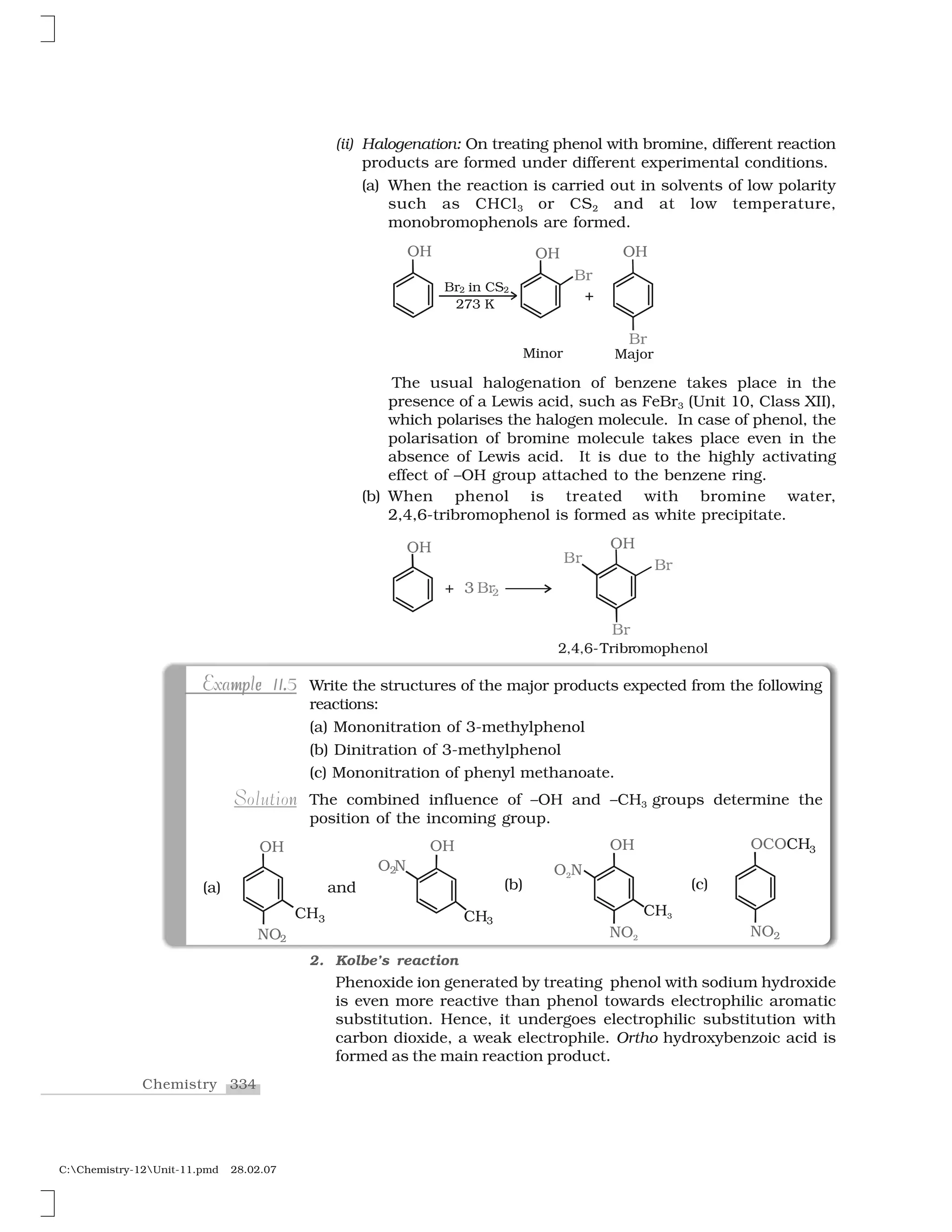
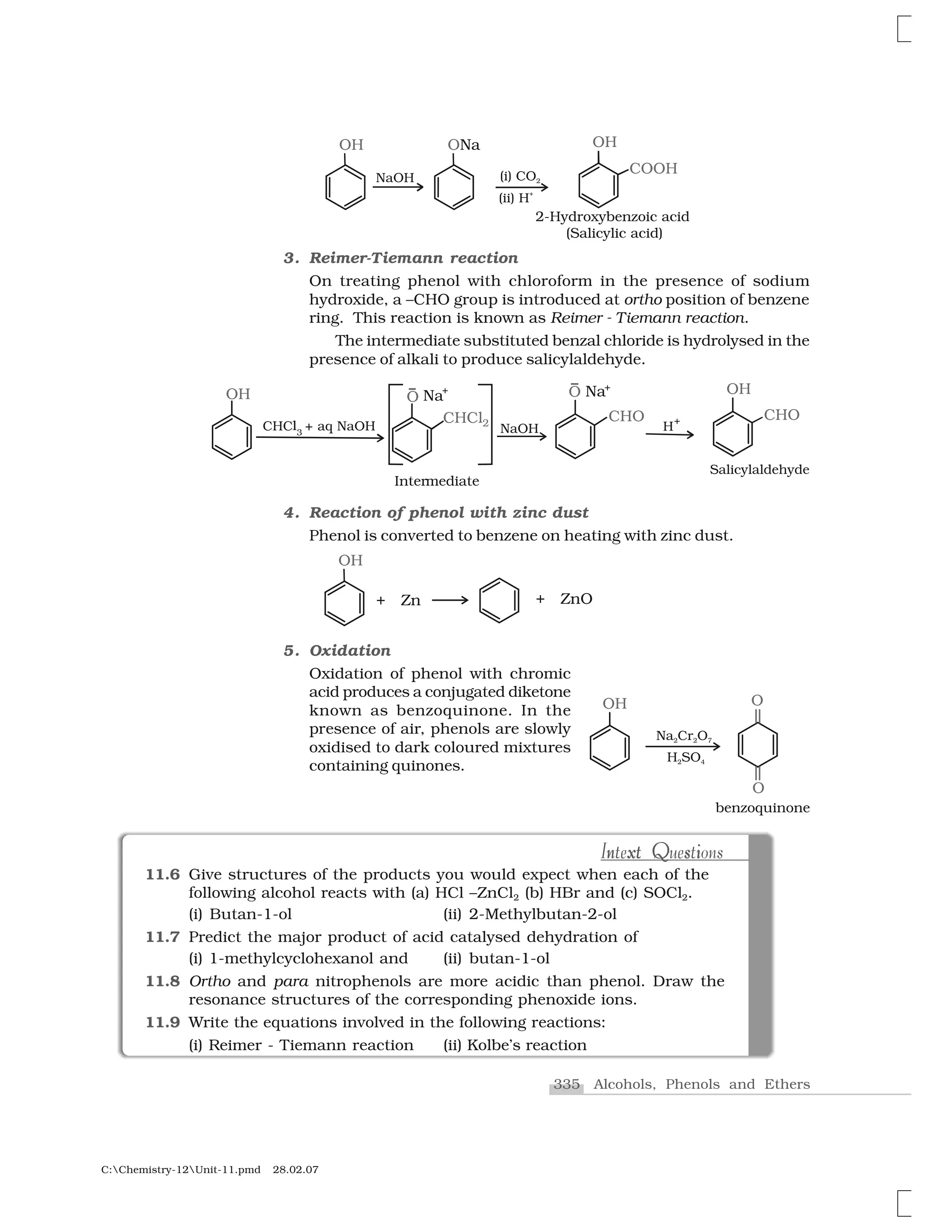


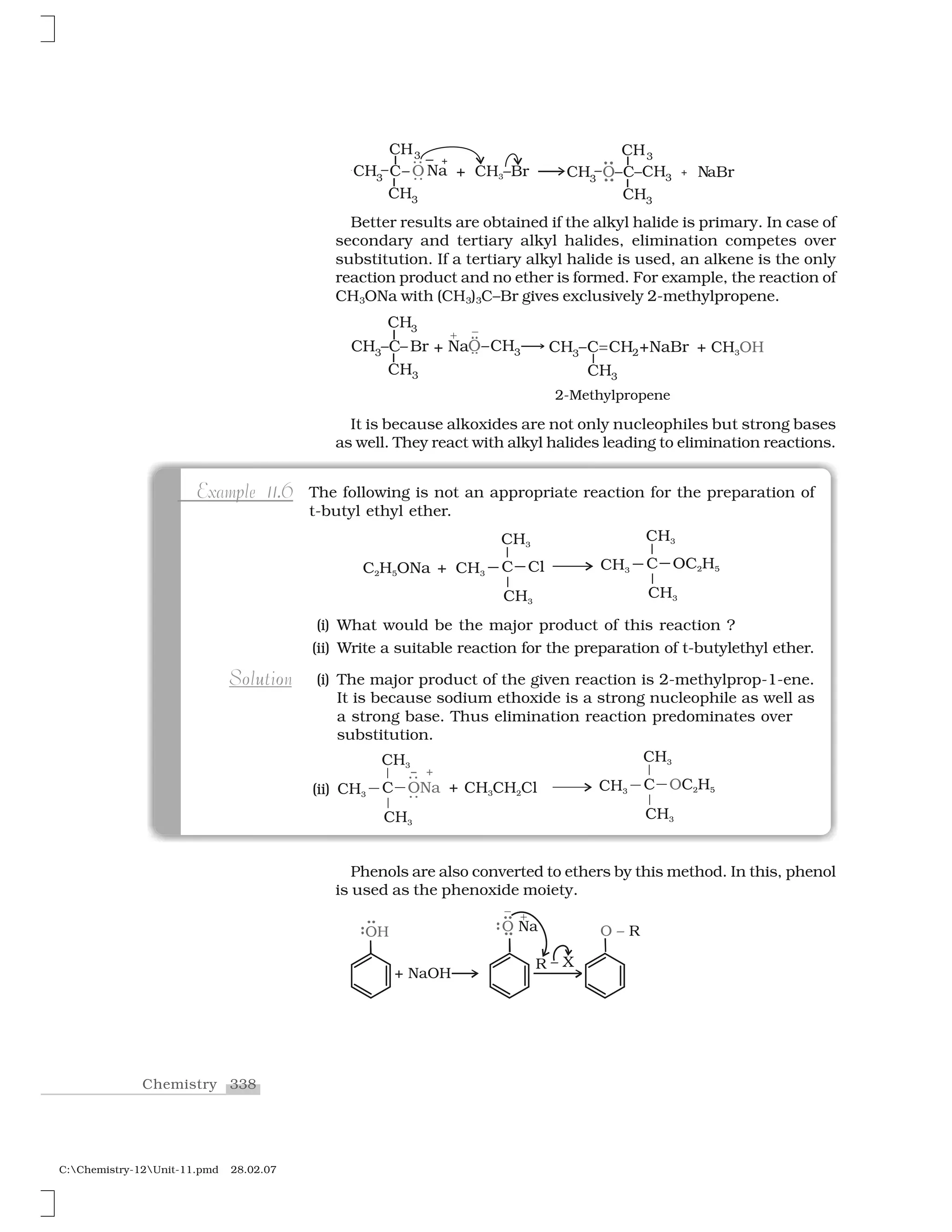
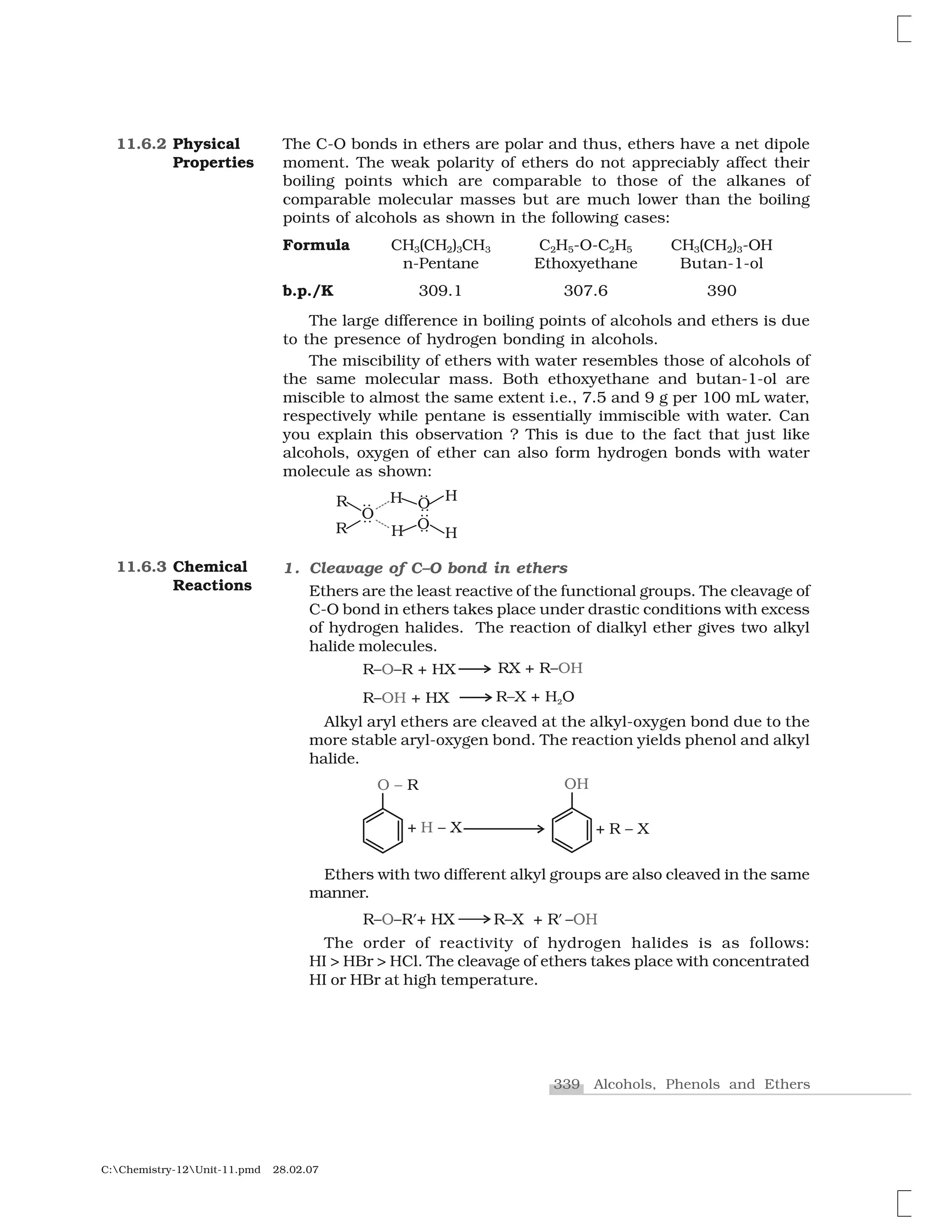
![340Chemistry
C:Chemistry-12Unit-11.pmd 28.02.07
The reaction of an ether with concentrated HI starts with protonation of ether molecule.
Step 1:
The reaction takes place with HBr or HI because these reagents are sufficiently acidic.
Step 2:
Iodide is a good nucleophile. It attacks the least substituted carbon of the oxonium
ion formed in step 1 and displaces an alcohol molecule by SN2 mechanism.
Thus, in the cleavage of mixed ethers with two different alkyl groups, the alcohol
and alkyl iodide formed, depend on the nature of alkyl groups. When primary or
secondary alkyl groups are present, it is the lower alkyl group that forms alkyl
iodide (SN2 reaction).
When HI is in excess and the reaction is carried out at high temperature,
ethanol reacts with another molecule of HI and is converted to ethyl iodide.
Step 3:
nha mMechanism
However, when one of the alkyl group is a tertiary group, the halide
formed is a tertiary halide.
❈ ❈ ❈ ✰ ❍ ✁ ❖ ✰❈ ❈ ❍✸ ✸ ✸ ✸
❈ ✸
✂✄☎
❈ ✸
❈ ✸
❖
It is because in step 2 of the reaction, the departure of leaving group
(HO–CH3) creates a more stable carbocation [(CH3)3C
+
], and the reaction
follows SN1 mechanism.
In case of anisole, methylphenyl
oxonium ion, is
formed by protonation of ether. The
bond between O–CH3 is weaker
than the bond between O–C6H5
because the carbon of phenyl
group is sp
2
hybridised and there
is a partial double bond character.
✆✝✞ ✆
✆✝✞
✆✝✞
✟
✝
✠
✆✝✞ s✡☛☞ ✆✝✞ ✆
✆✝✞
✆✝✞
✠ ✌ ✆✝ ✟✝✞
❢✍s✎ ✆✝✞ ✆
✆✝✞
✆✝✞
✆✝✞ ✆
✆✝✞
✆✝✞
✠ ✌ ■➊ ■](https://image.slidesharecdn.com/ncert-class-12-chemistry-part-2-161112165510/75/Ncert-class-12-chemistry-part-2-66-2048.jpg)
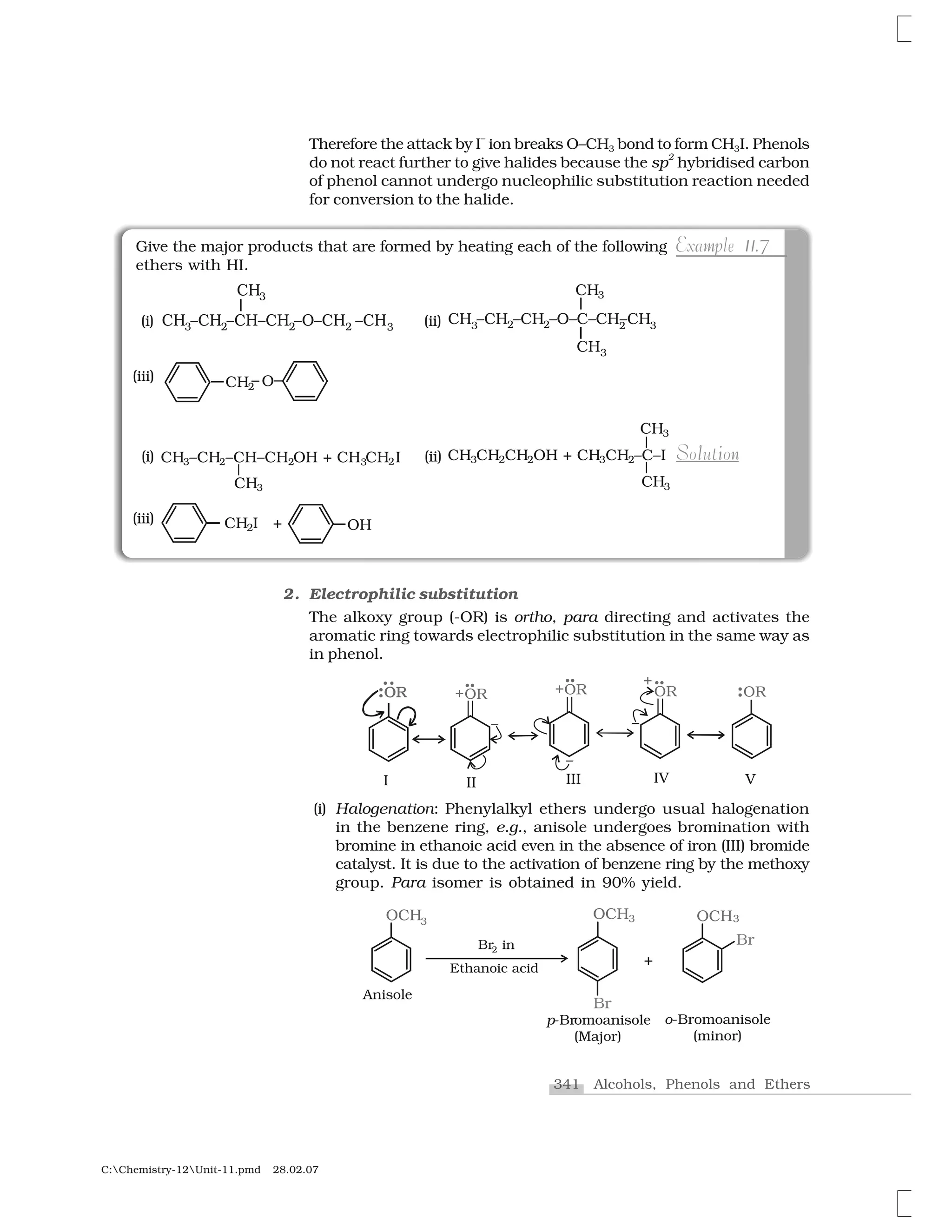
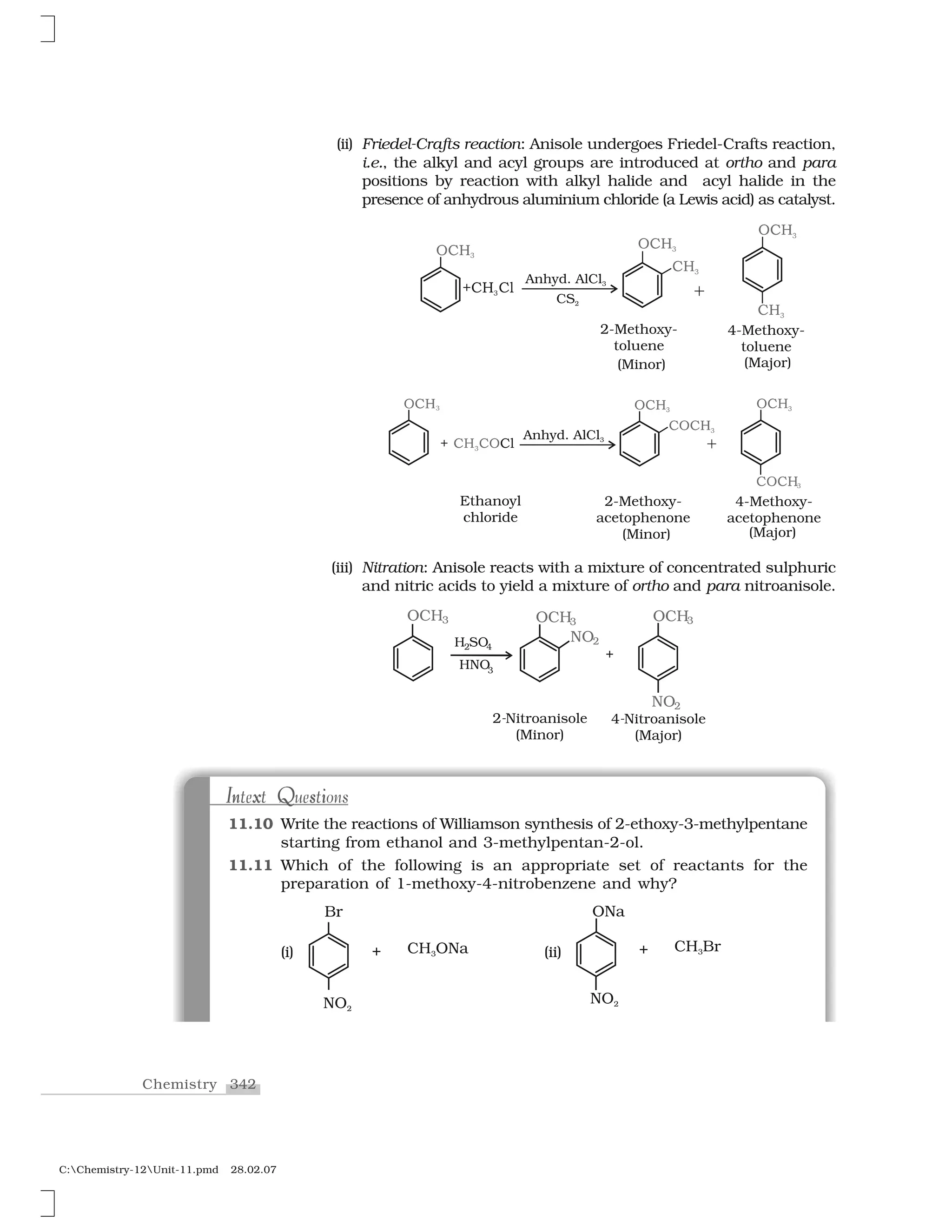
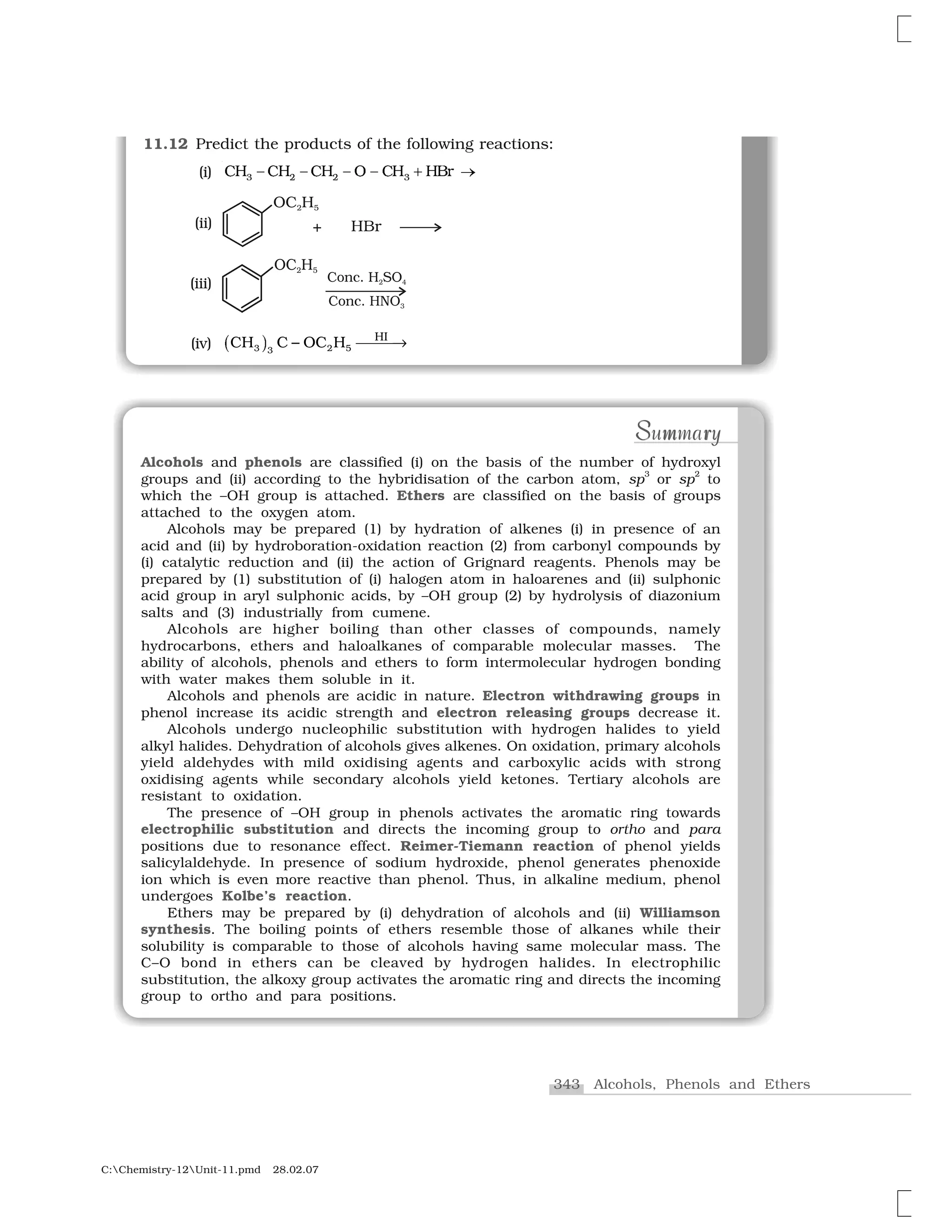
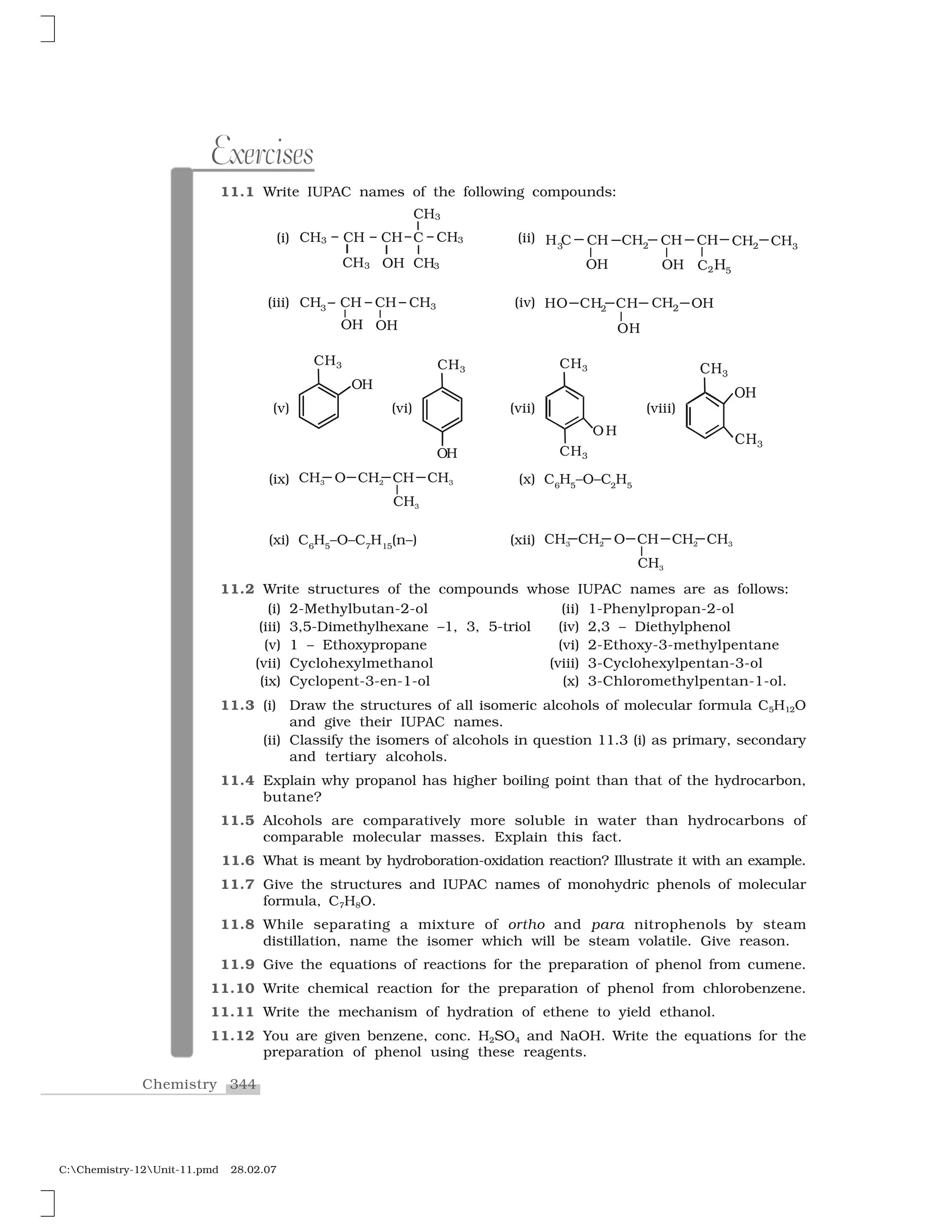
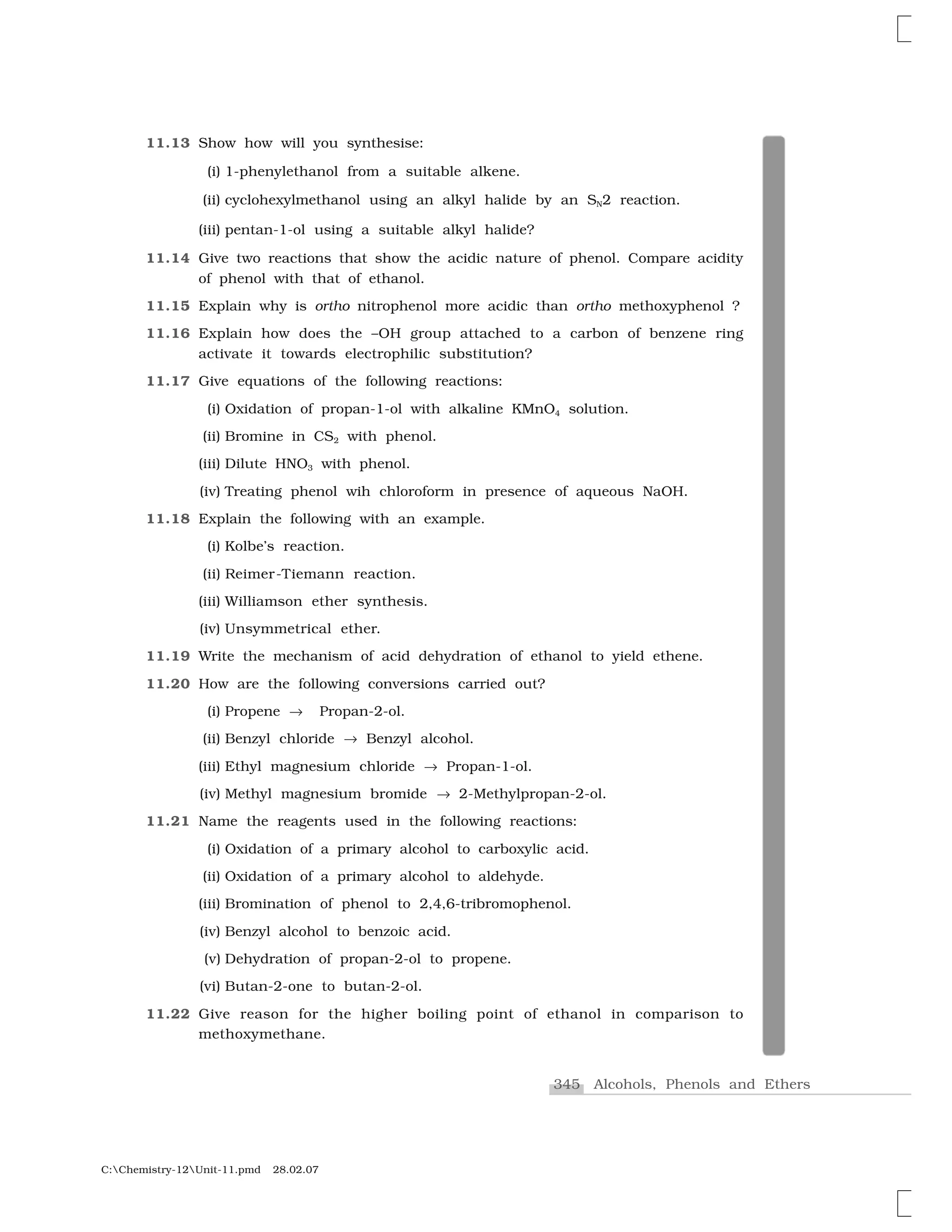
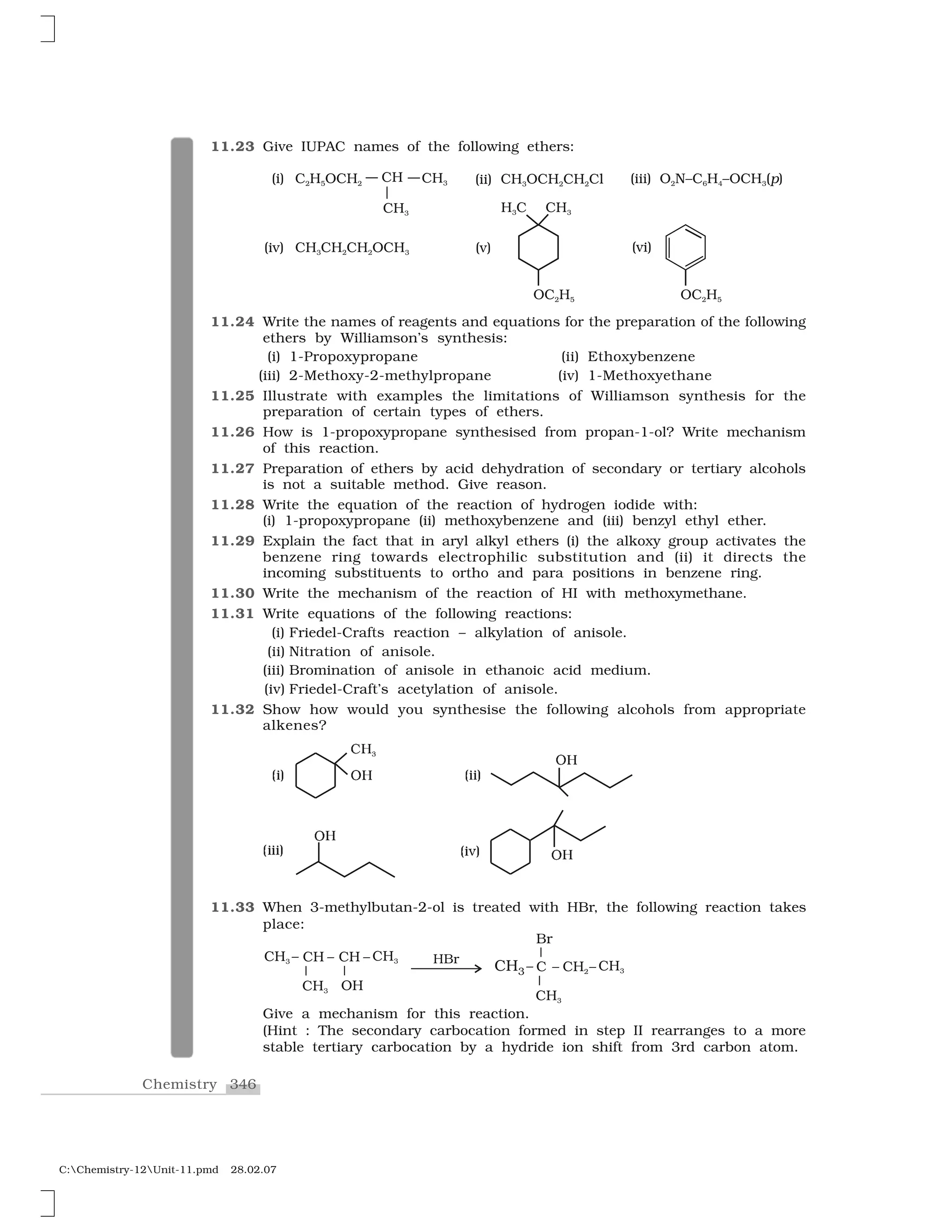
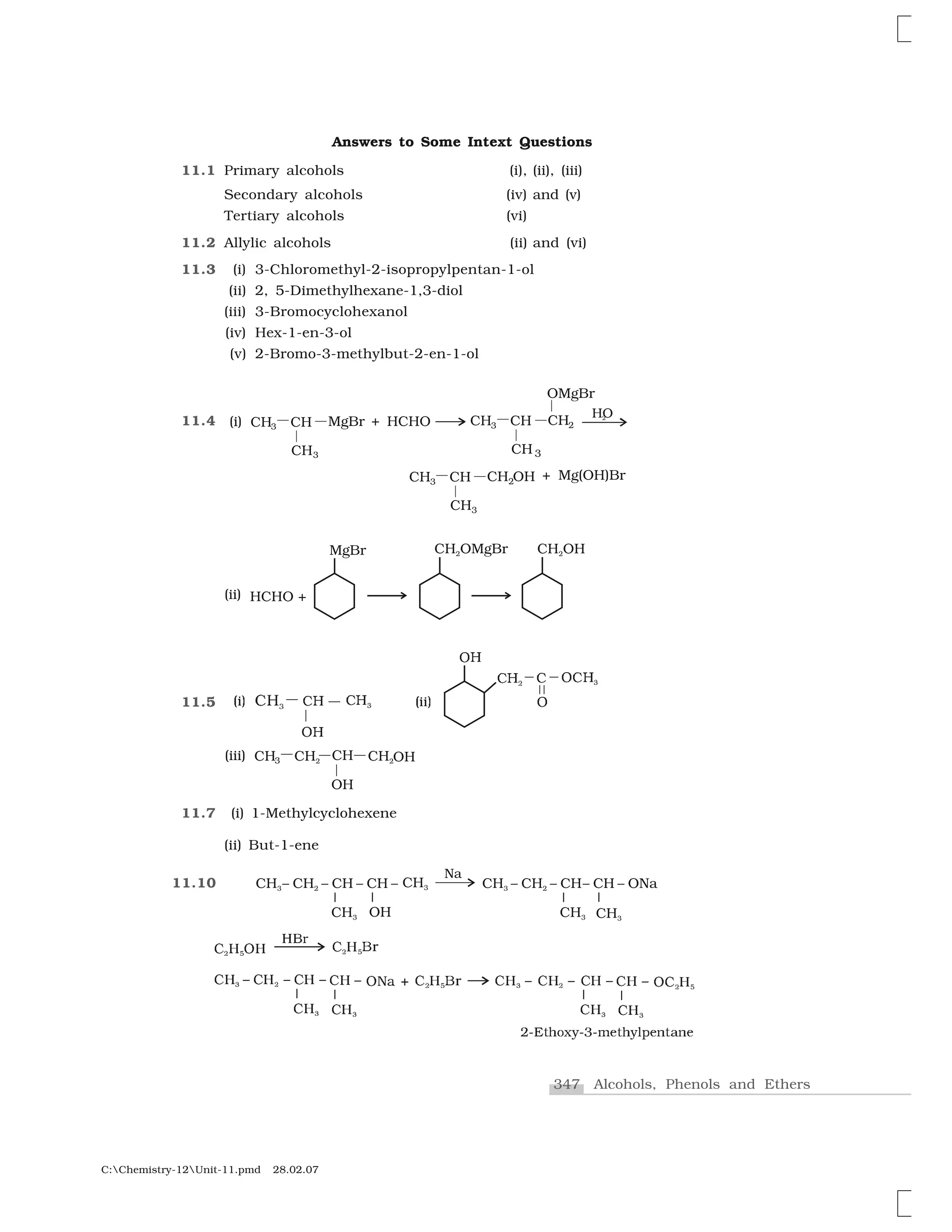
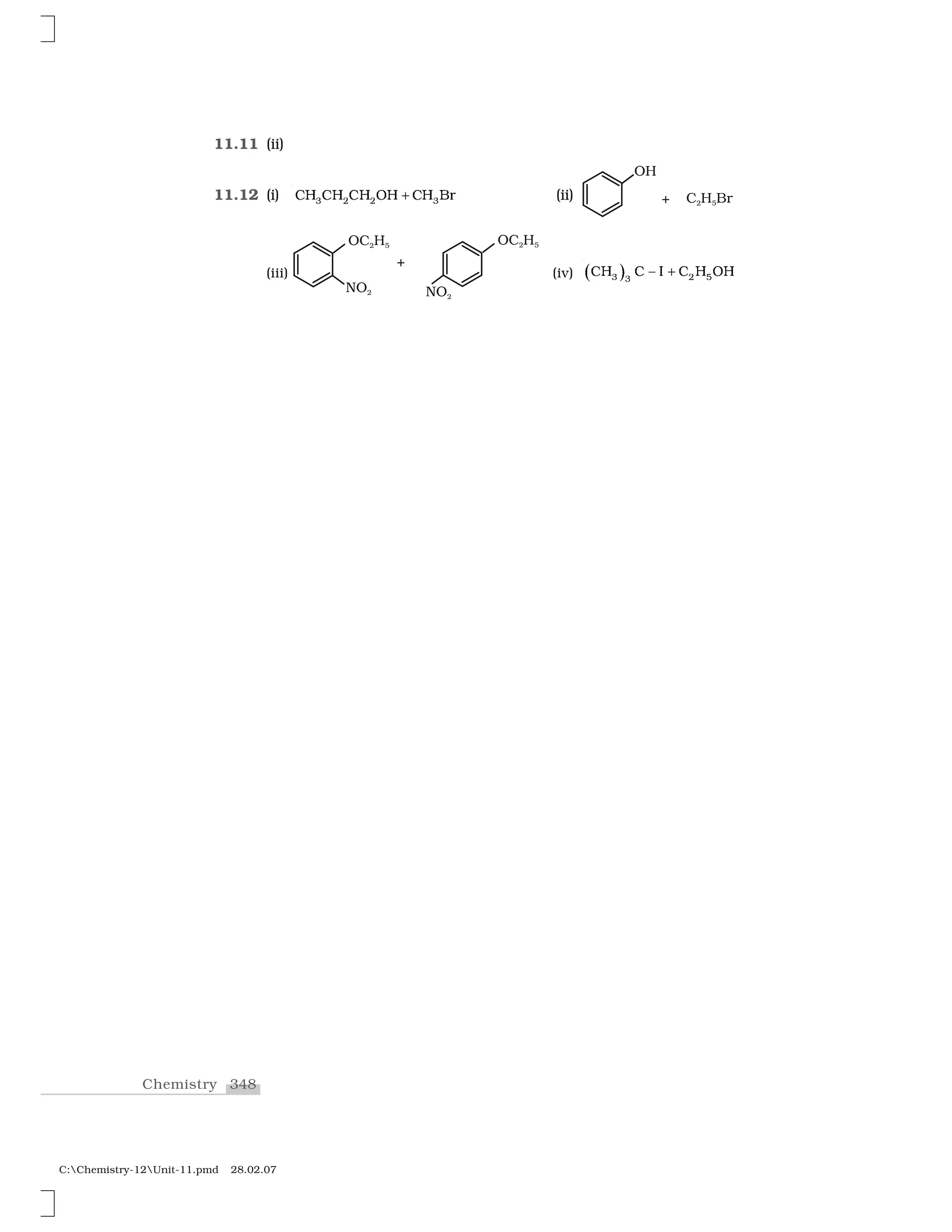
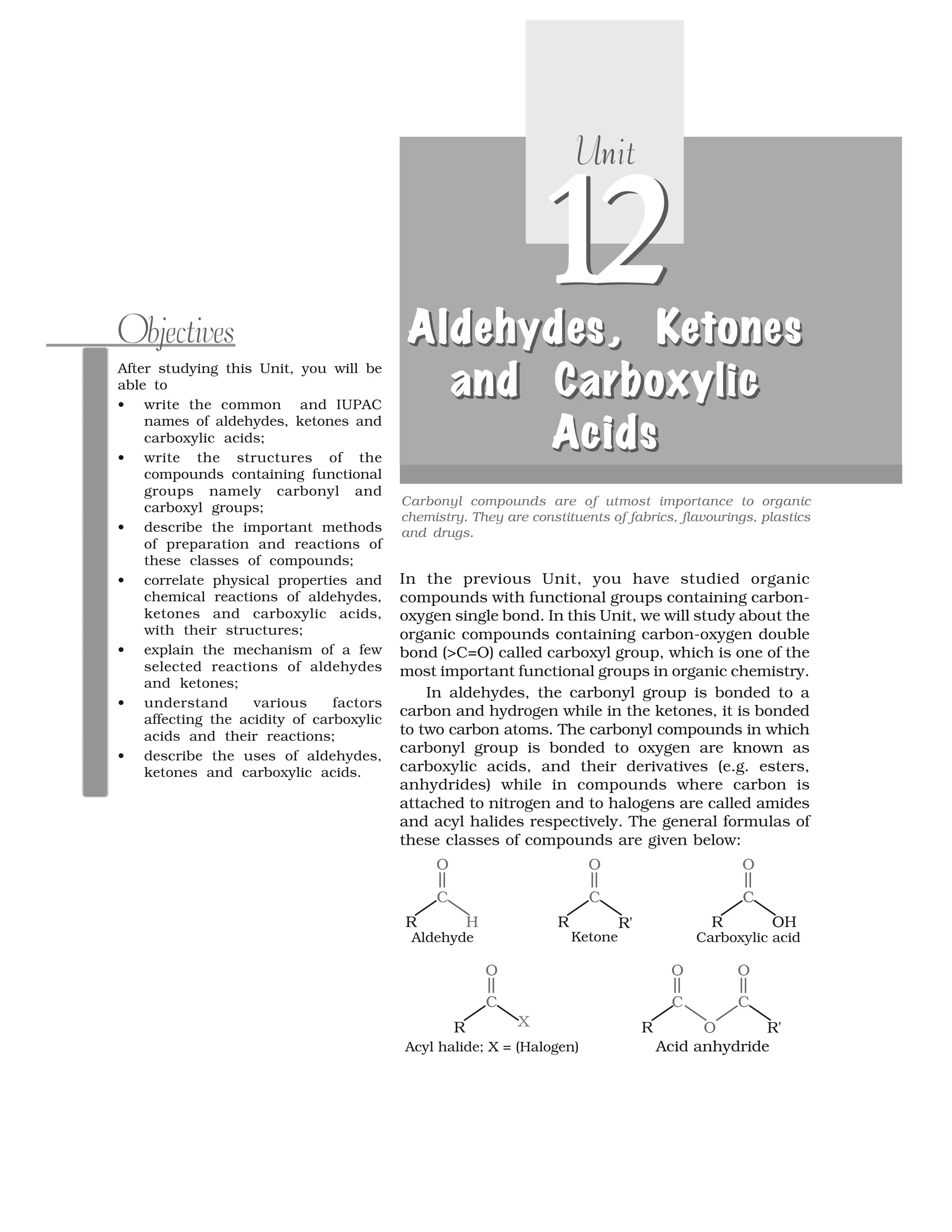
![350Chemistry
C:Chemistry-12Unit-12.pmd 28.02.07
Aldehydes, ketones and carboxylic acids are widespread in plants
and animal kingdom. They play an important role in biochemical
processes of life. They add fragrance and flavour to nature, for example,
vanillin (from vanilla beans), salicylaldehyde (from meadow sweet) and
cinnamaldehyde (from cinnamon) have very pleasant fragrances.
12.1.1
Nomenclature
I. Aldehydes and ketones
Aldehydes and ketones are the simplest and most important carbonyl
compounds.
There are two systems of nomenclature of aldehydes and ketones.
(a) Common names
Aldehydes and ketones are often called by their common names
instead of IUPAC names. The common names of most aldehydes are
derived from the common names of the corresponding carboxylic
acids [Section 12.6.1] by replacing the ending –ic of acid with aldehyde.
At the same time, the names reflect the Latin or Greek term for the
original source of the acid or aldehyde. The location of the substituent
in the carbon chain is indicated by Greek letters ✂, ✄, ☎, ✆, etc. The
✂-carbon being the one directly linked to the aldehyde group, ✄-
carbon the next, and so on. For example
112.1 N r and u tu e f Car o ro l tr c rNomenclature and Structure of Carbonyl Group
They are used in many food products and pharmaceuticals to add
flavours. Some of these families are manufactured for use as solvents
(i.e., acetone) and for preparing materials like adhesives, paints, resins,
perfumes, plastics, fabrics, etc.](https://image.slidesharecdn.com/ncert-class-12-chemistry-part-2-161112165510/75/Ncert-class-12-chemistry-part-2-76-2048.jpg)


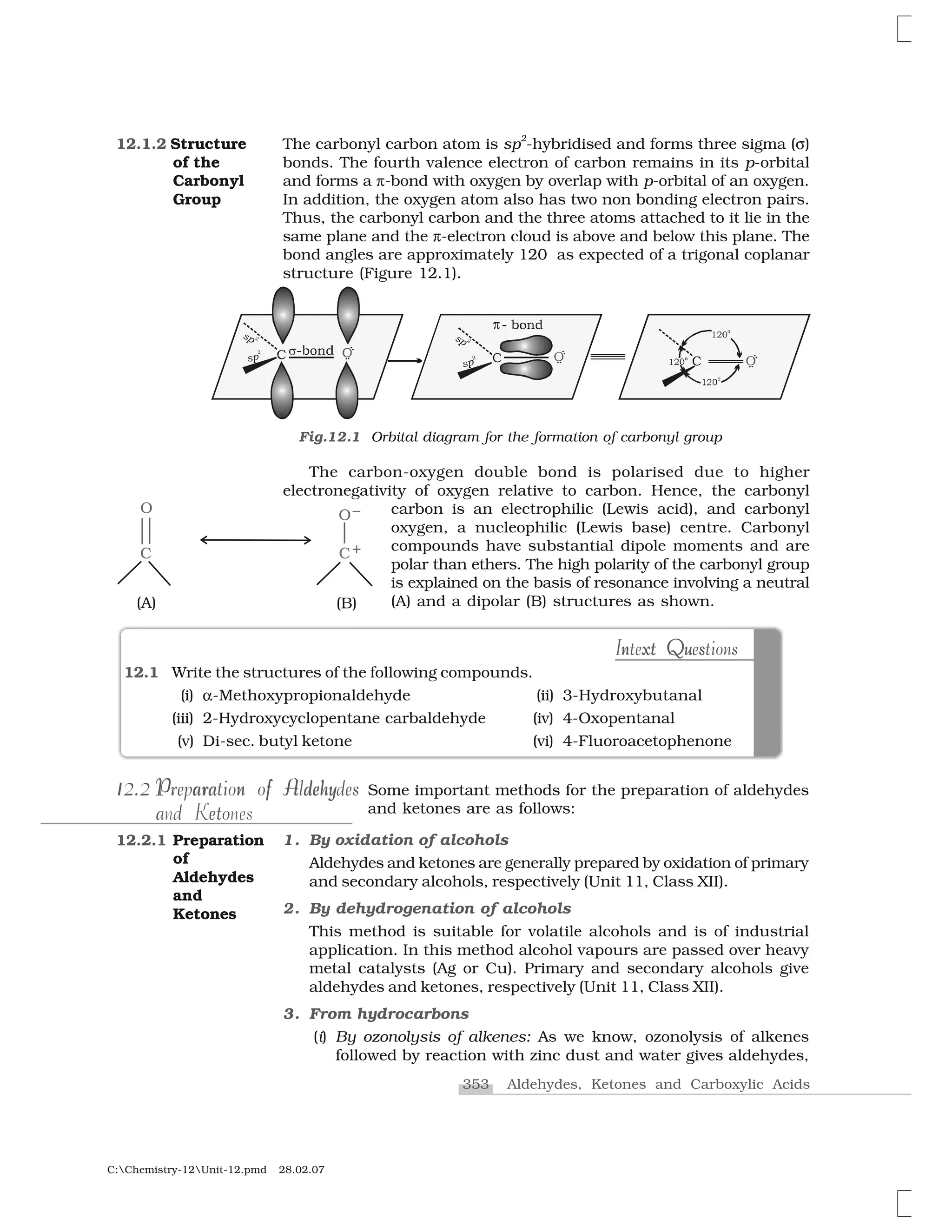
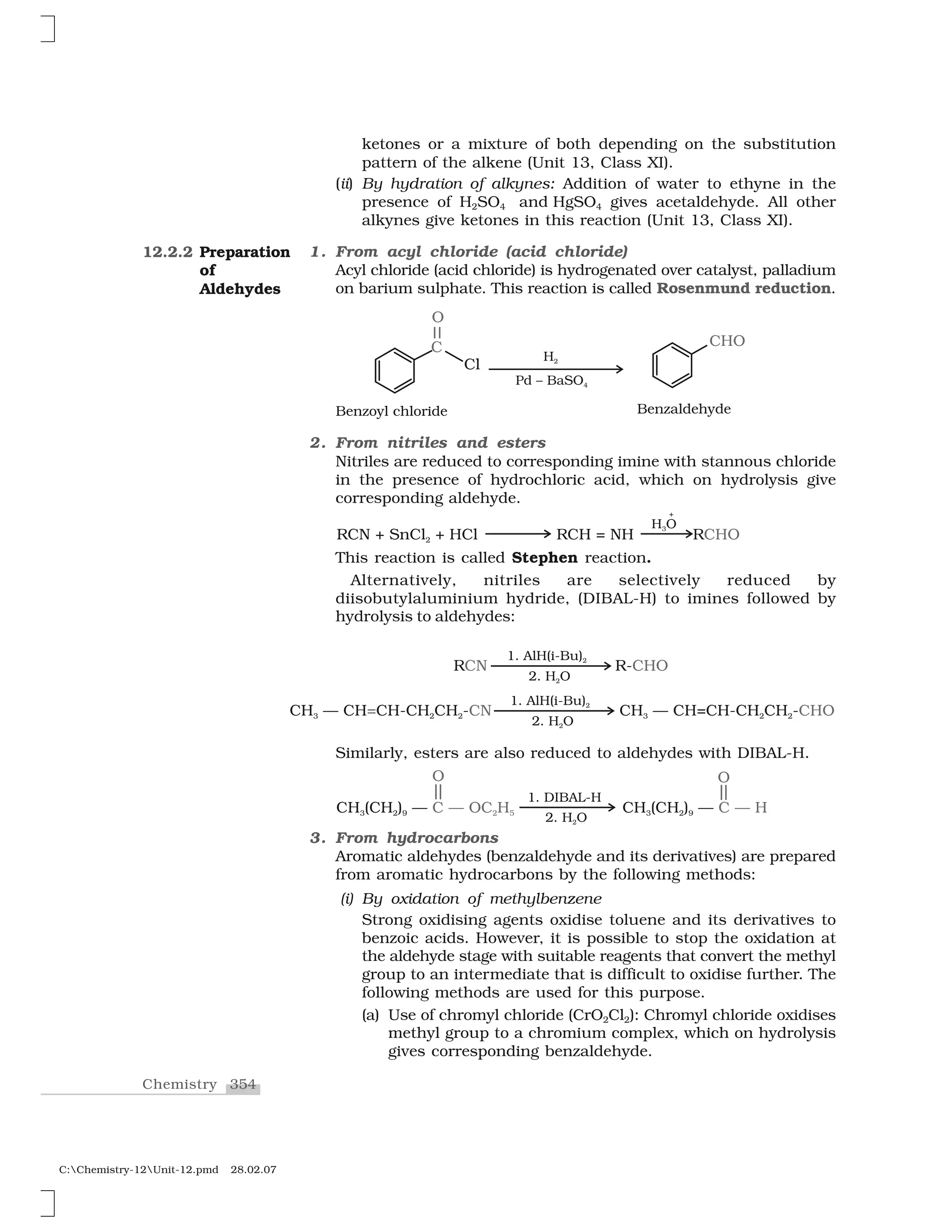
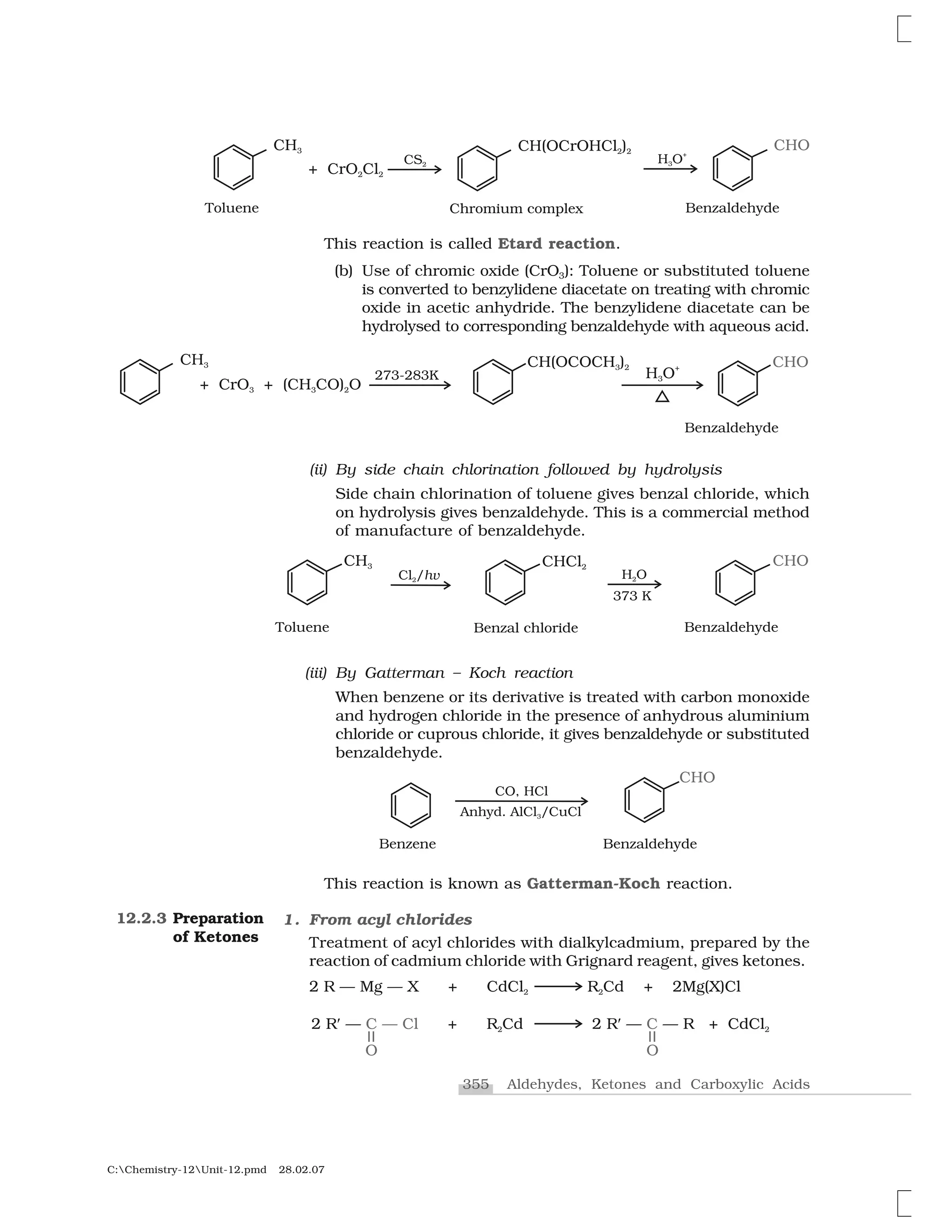
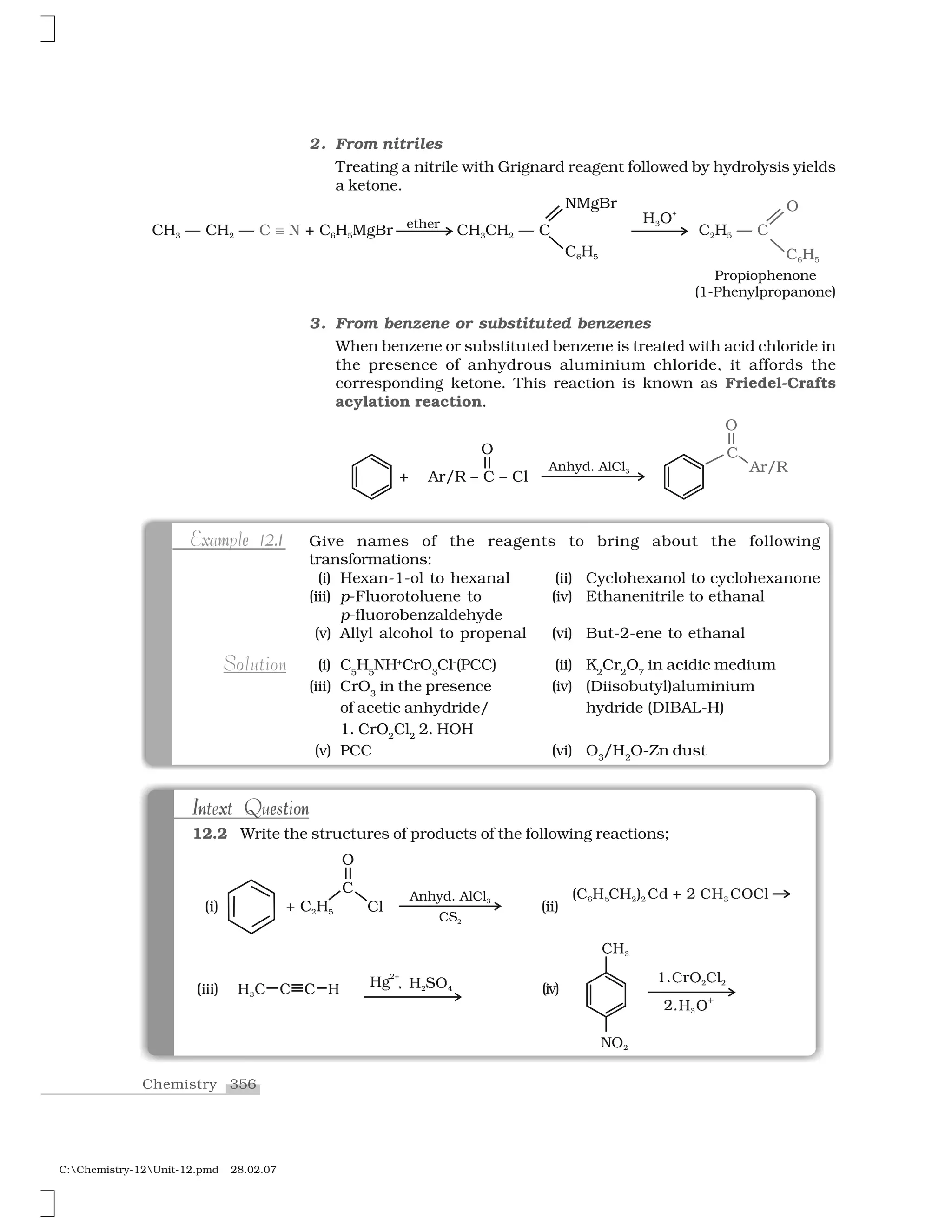


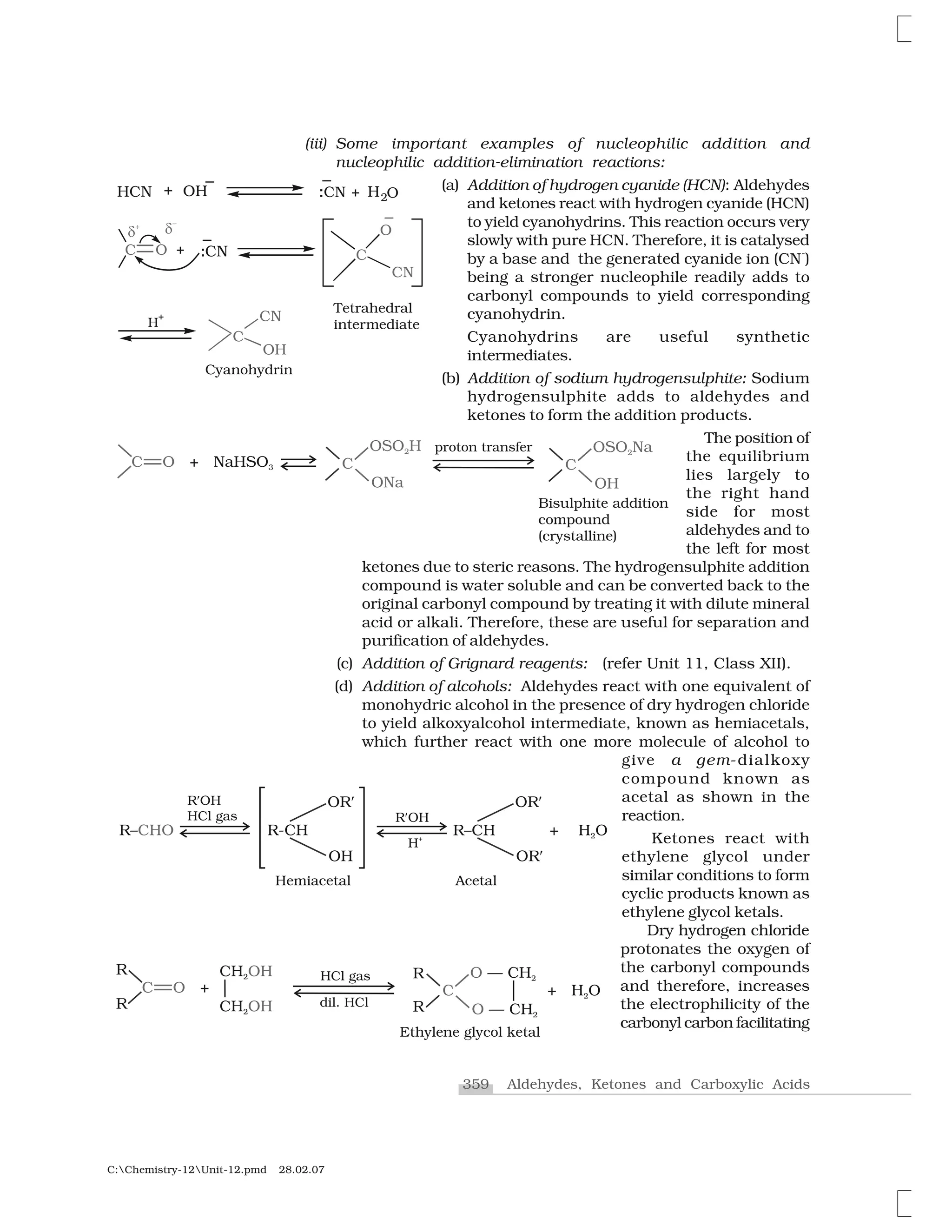
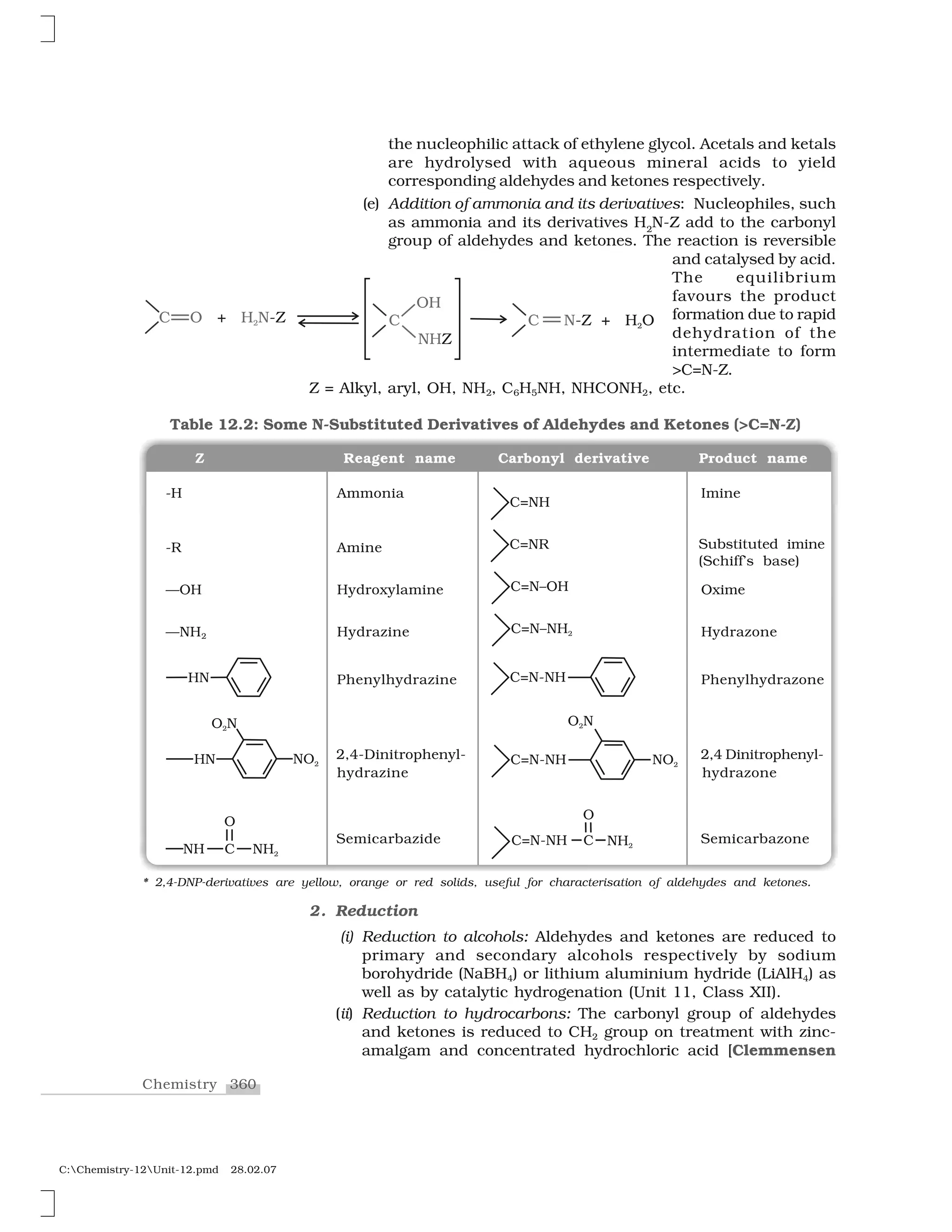
![361 Aldehydes, Ketones and Carboxylic Acids
C:Chemistry-12Unit-12.pmd 28.02.07
reduction] or with hydrazine followed by heating with sodium
or potassium hydroxide in high boiling solvent such as ethylene
glycol (Wolff-Kishner reduction).
3. Oxidation
Aldehydes differ from ketones in their oxidation reactions. Aldehydes
are easily oxidised to carboxylic acids on treatment with common
oxidising agents like nitric acid, potassium permanganate, potassium
dichromate, etc. Even mild oxidising agents, mainly Tollens’ reagent
and Fehlings’ reagent also oxidise aldehydes.
Ketones are generally oxidised under vigorous conditions, i.e.,
strong oxidising agents and at elevated temperatures. Their oxidation
involves carbon-carbon bond cleavage to afford a mixture of carboxylic
acids having lesser number of carbon atoms than the parent ketone.
The mild oxidising agents given below are used to distinguish
aldehydes from ketones:
(i) Tollens’ test: On warming an aldehyde with freshly prepared
ammoniacal silver nitrate solution (Tollens’ reagent), a bright
silver mirror is produced due to the formation of silver metal.
The aldehydes are oxidised to corresponding carboxylate anion.
The reaction occurs in alkaline medium.
(ii) Fehling’s test: Fehling reagent comprises of two solutions,
Fehling solution A and Fehling solution B. Fehling solution A is
aqueous copper sulphate and Fehling solution B is alkaline
sodium potassium tartarate (Rochelle salt). These two solutions
are mixed in equal amounts before test. On heating an aldehyde
with Fehling’s reagent, a reddish brown precipitate is obtained.
Aldehydes are oxidised to corresponding carboxylate anion.
Aromatic aldehydes do not respond to this test.
Bernhard Tollens
(1841-1918) was a
Professor of Chemistry
at the University of
Gottingen, Germany.](https://image.slidesharecdn.com/ncert-class-12-chemistry-part-2-161112165510/75/Ncert-class-12-chemistry-part-2-87-2048.jpg)

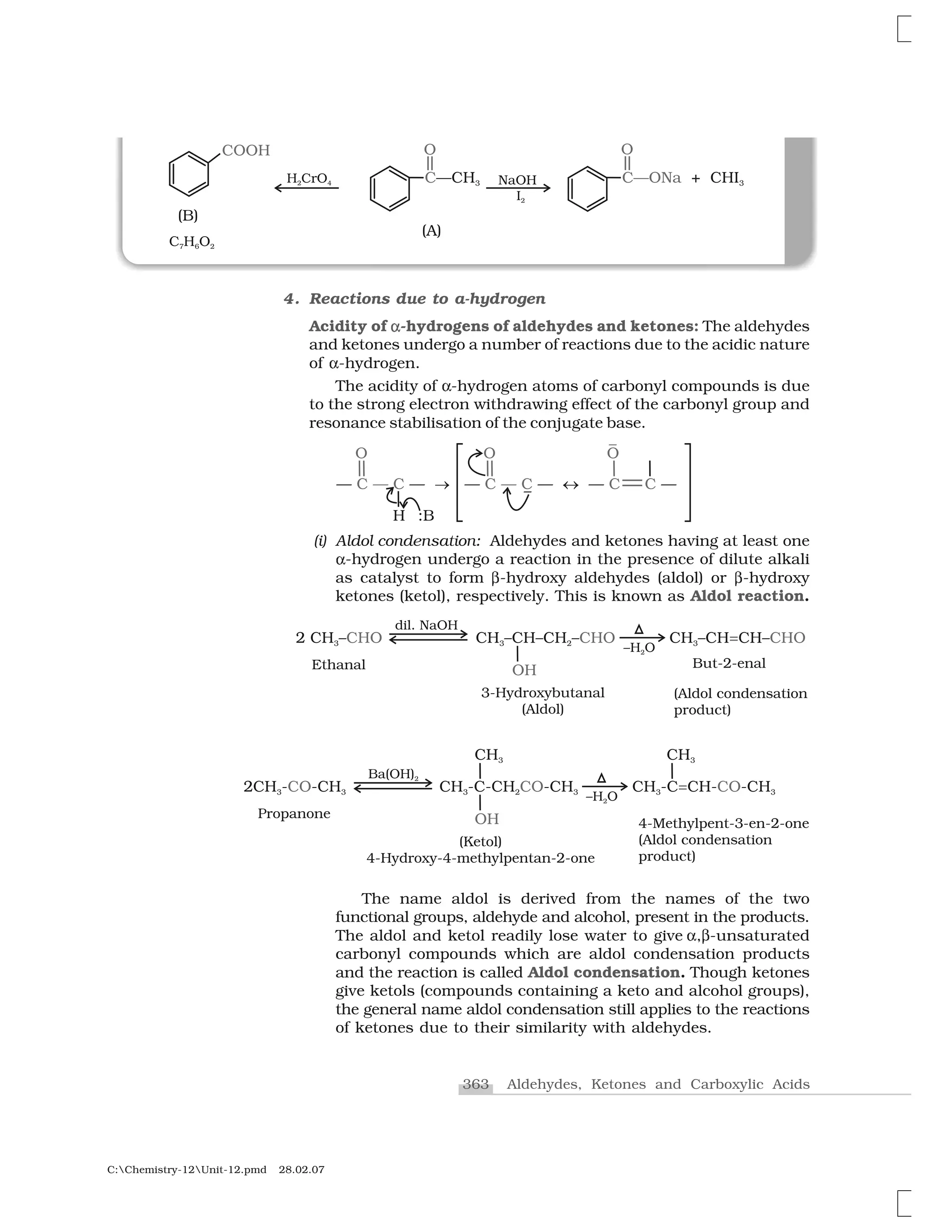
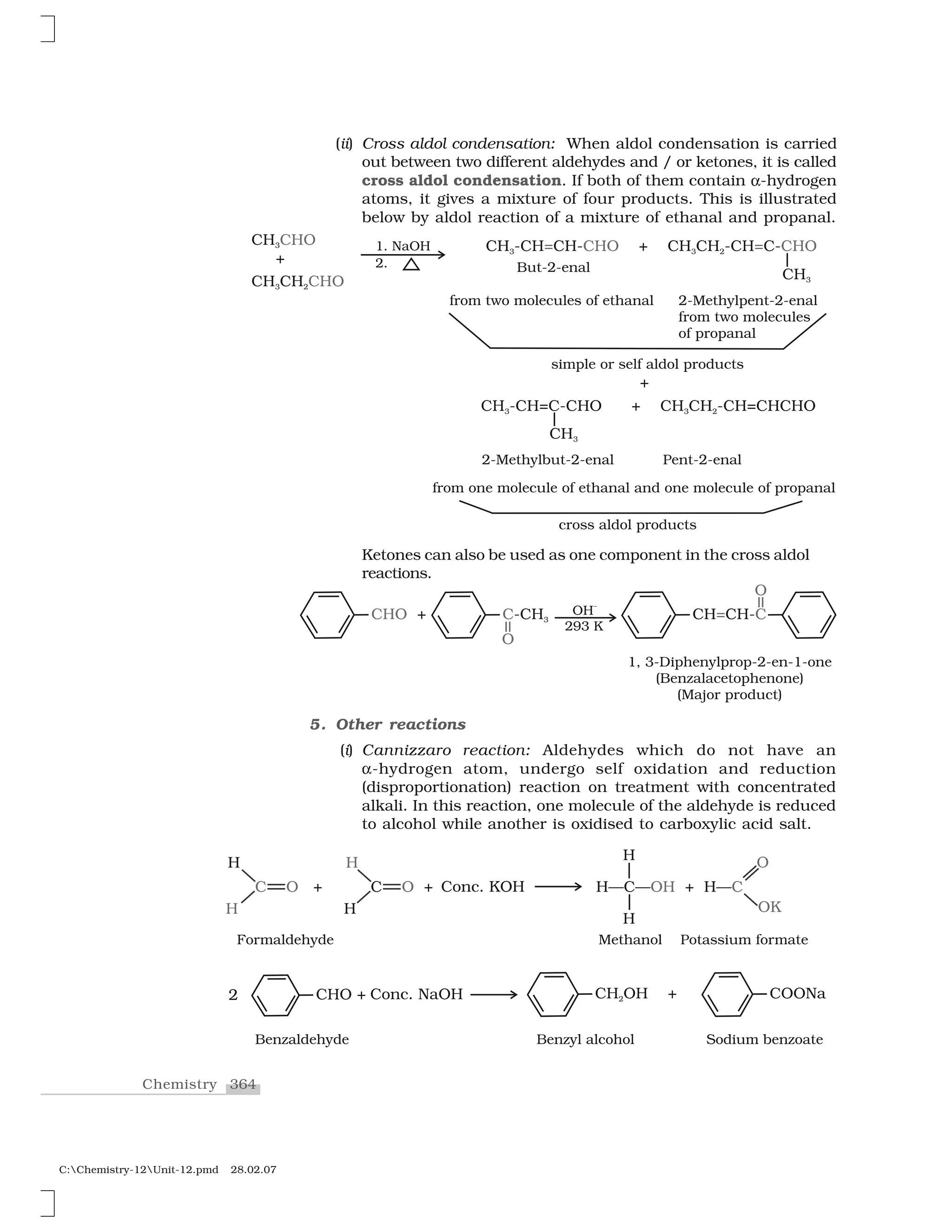
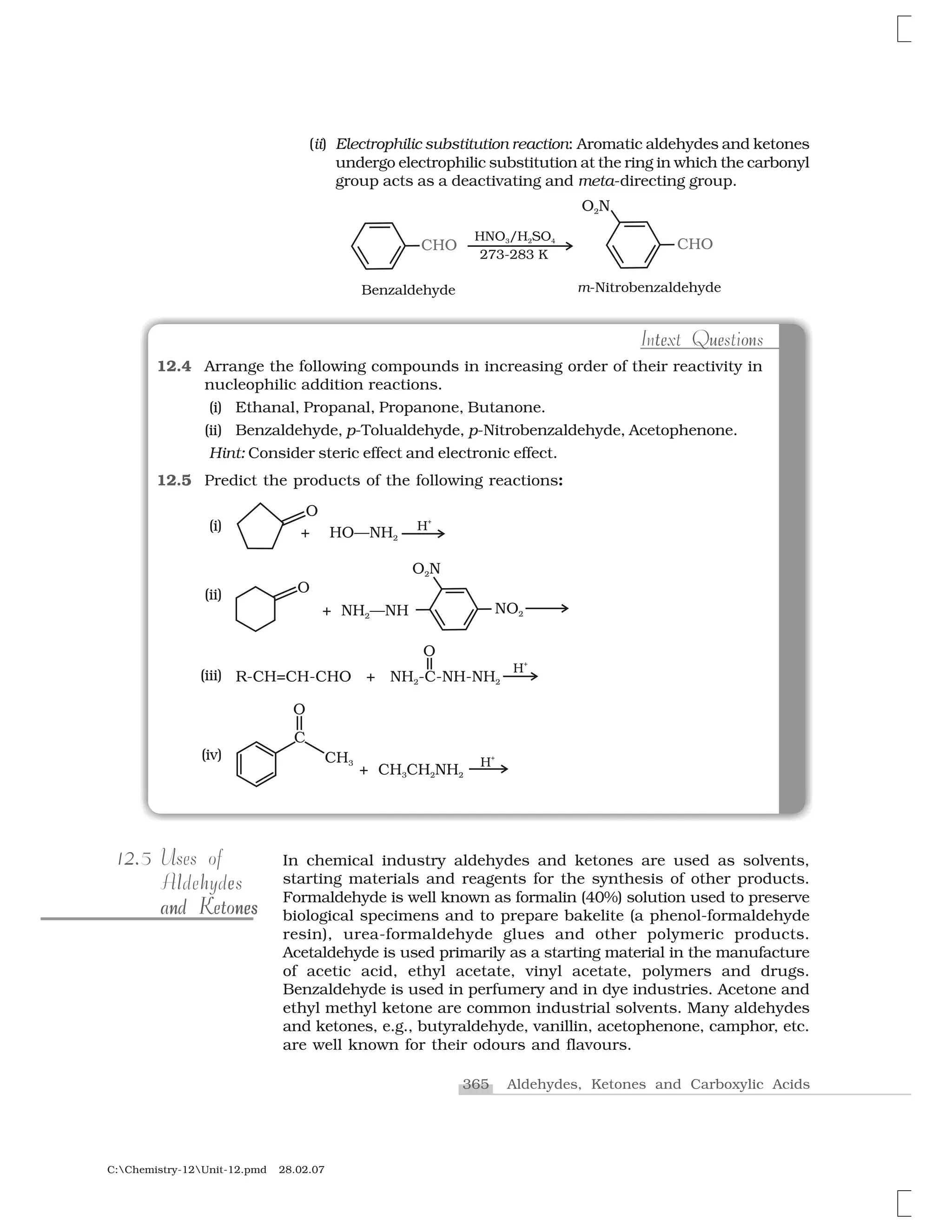
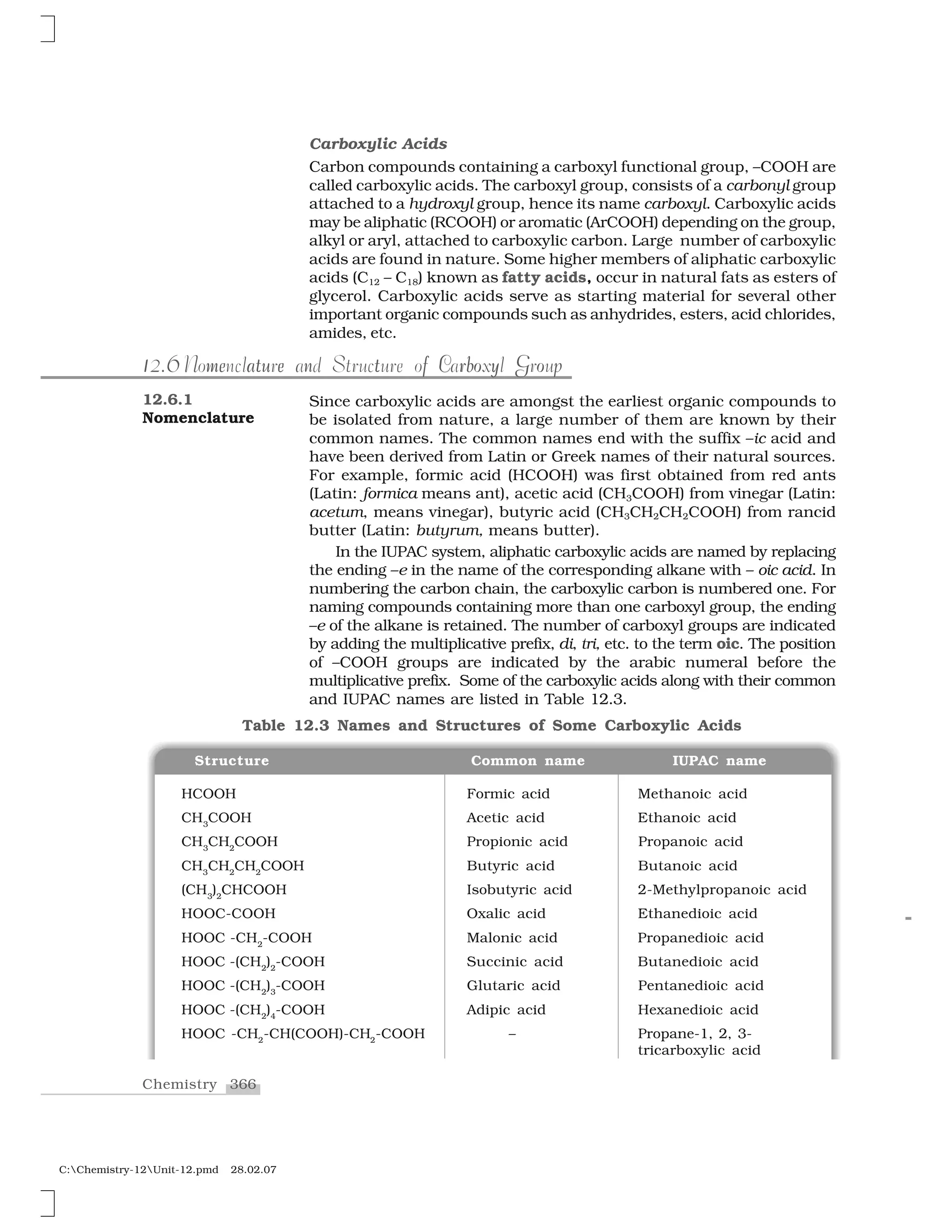
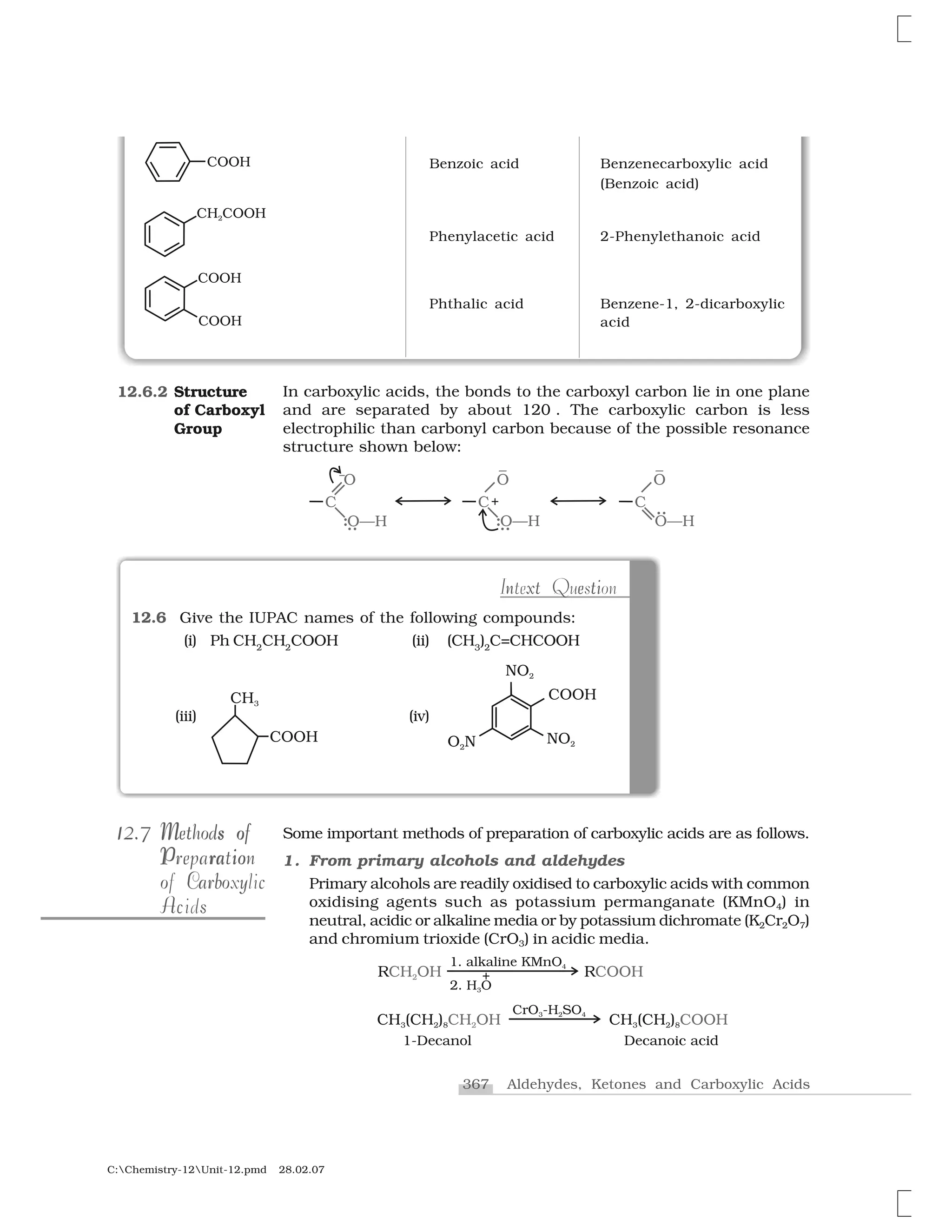


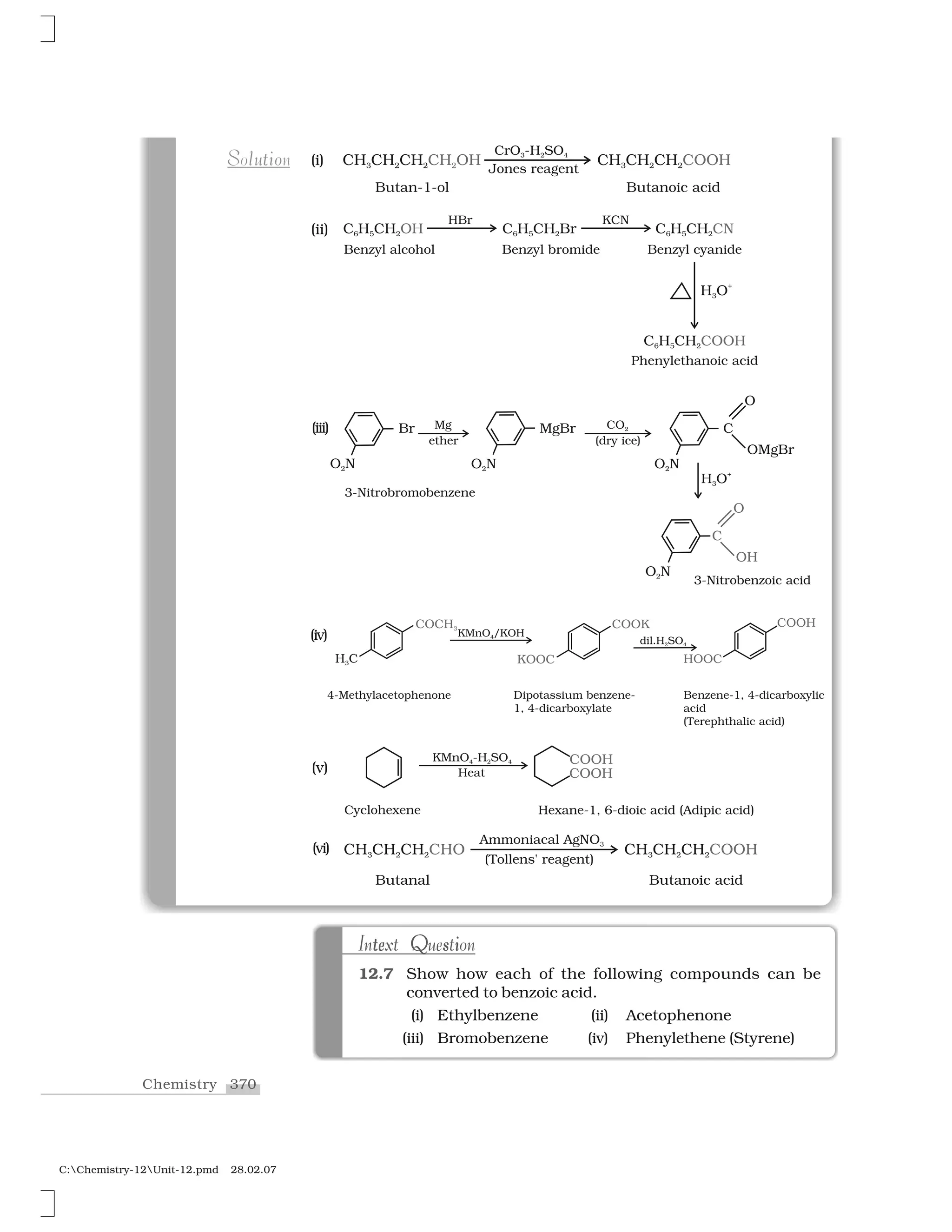
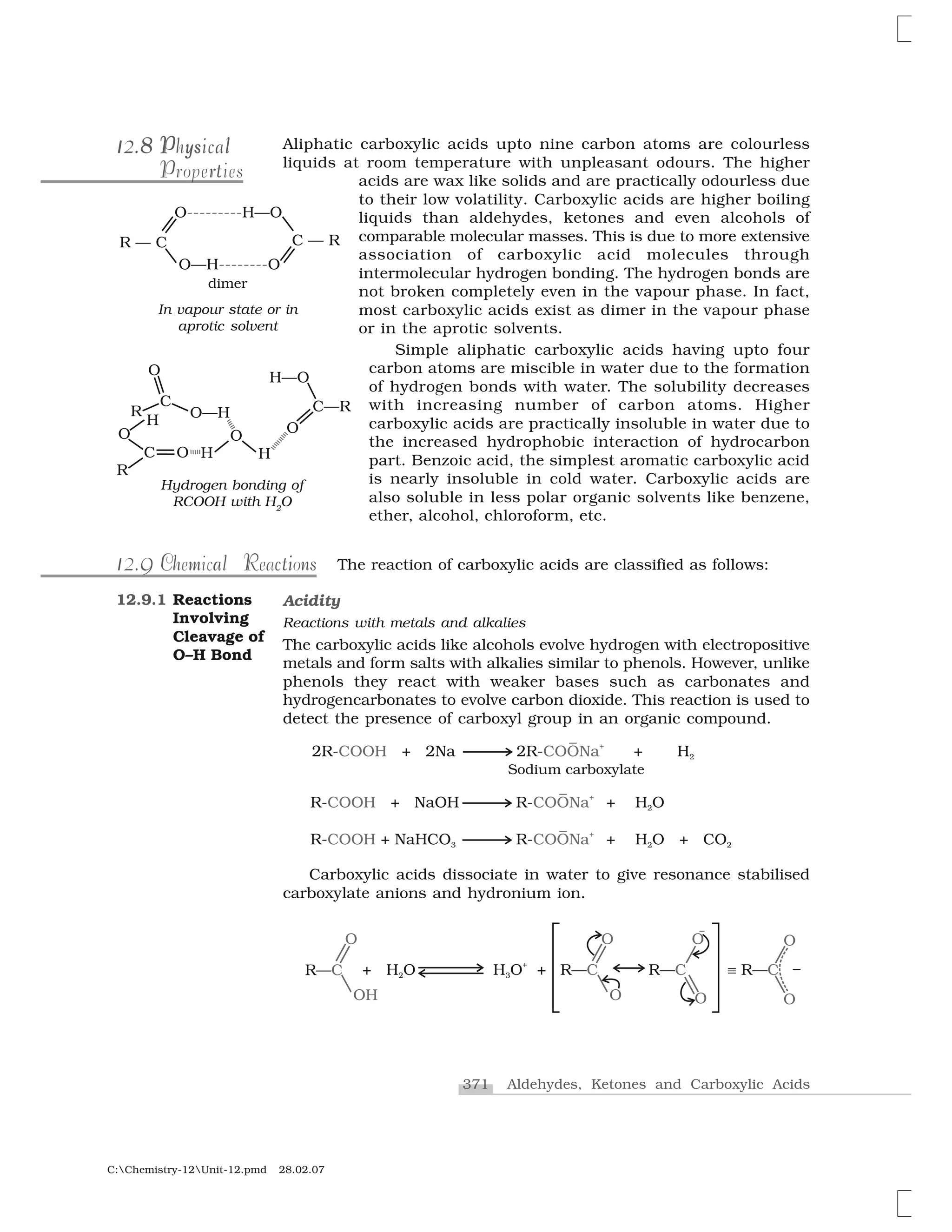

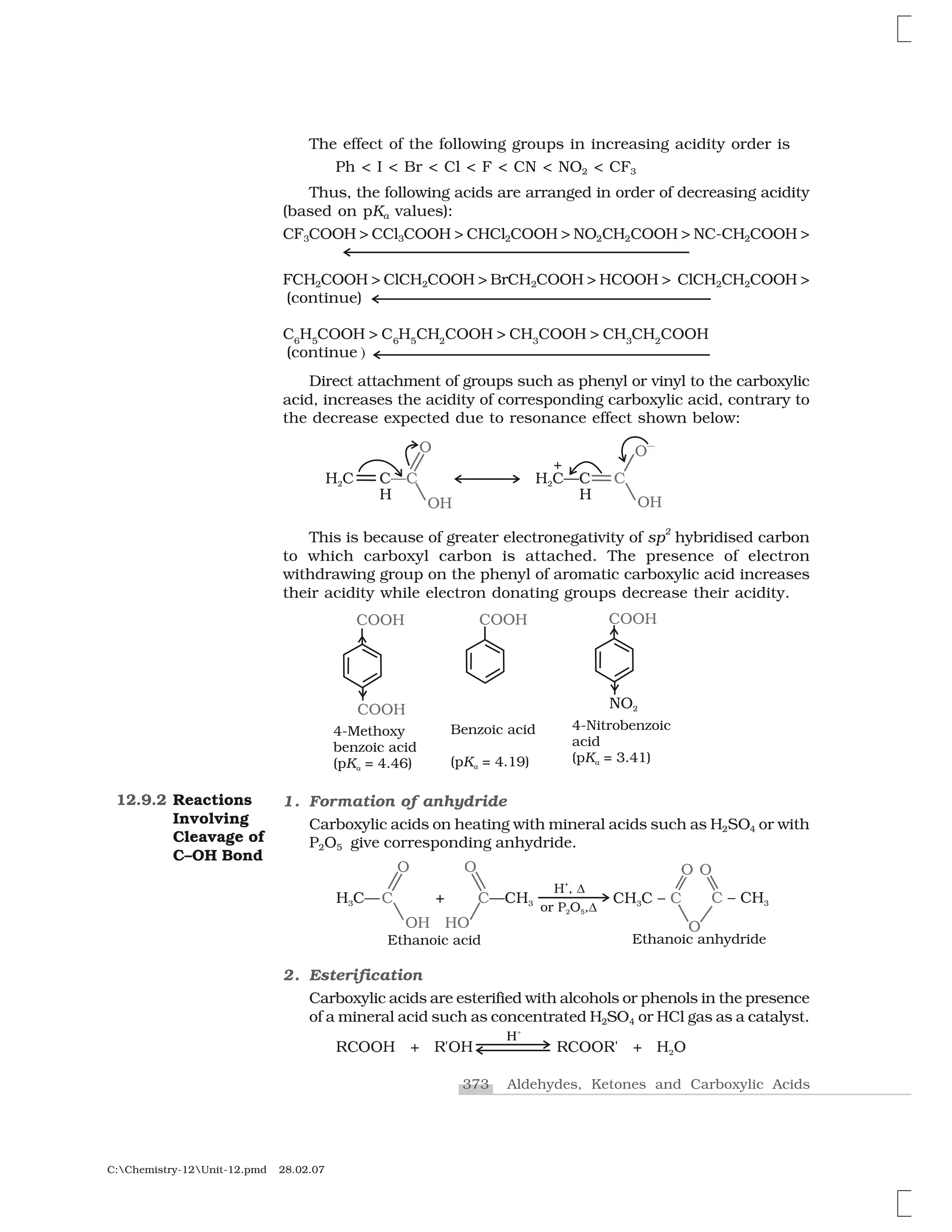
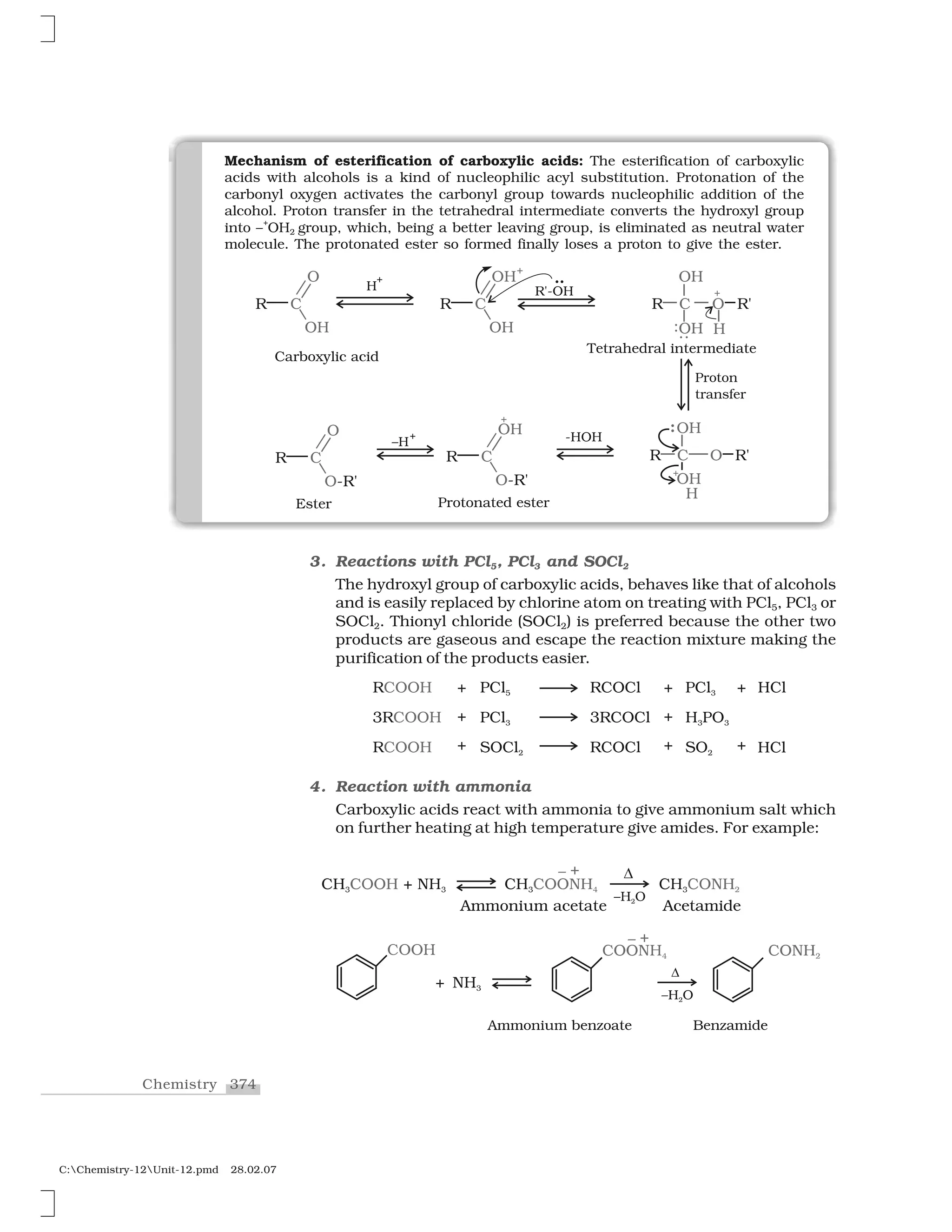

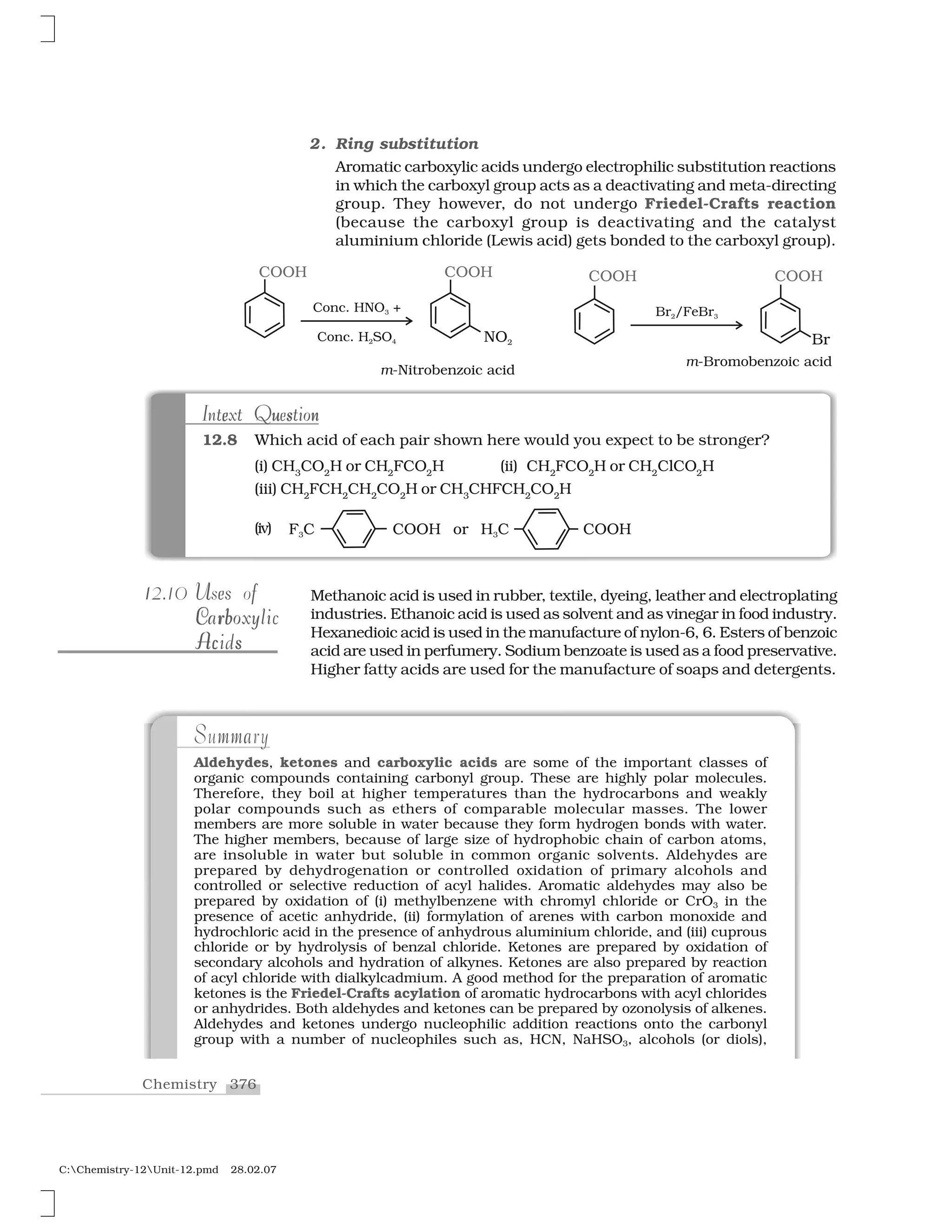
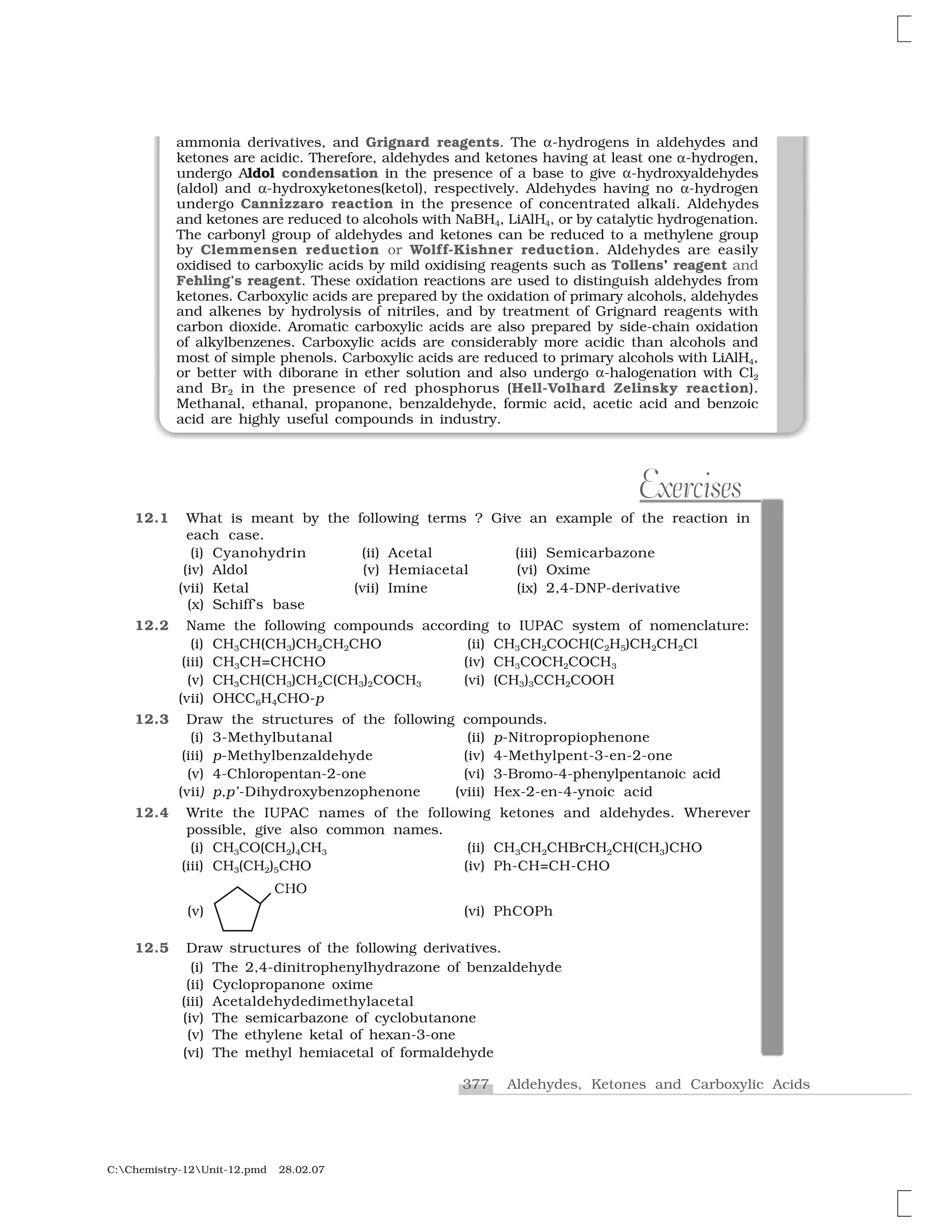


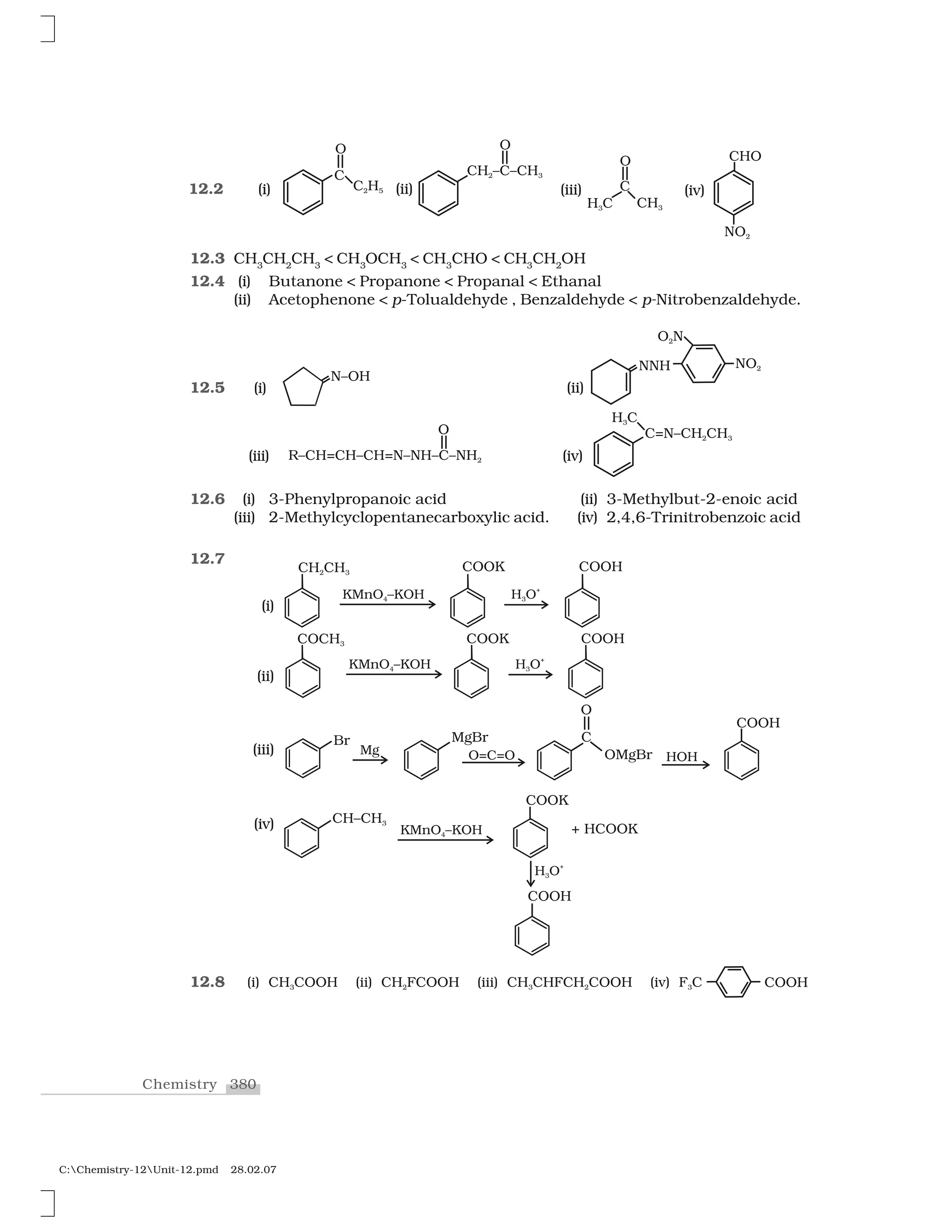

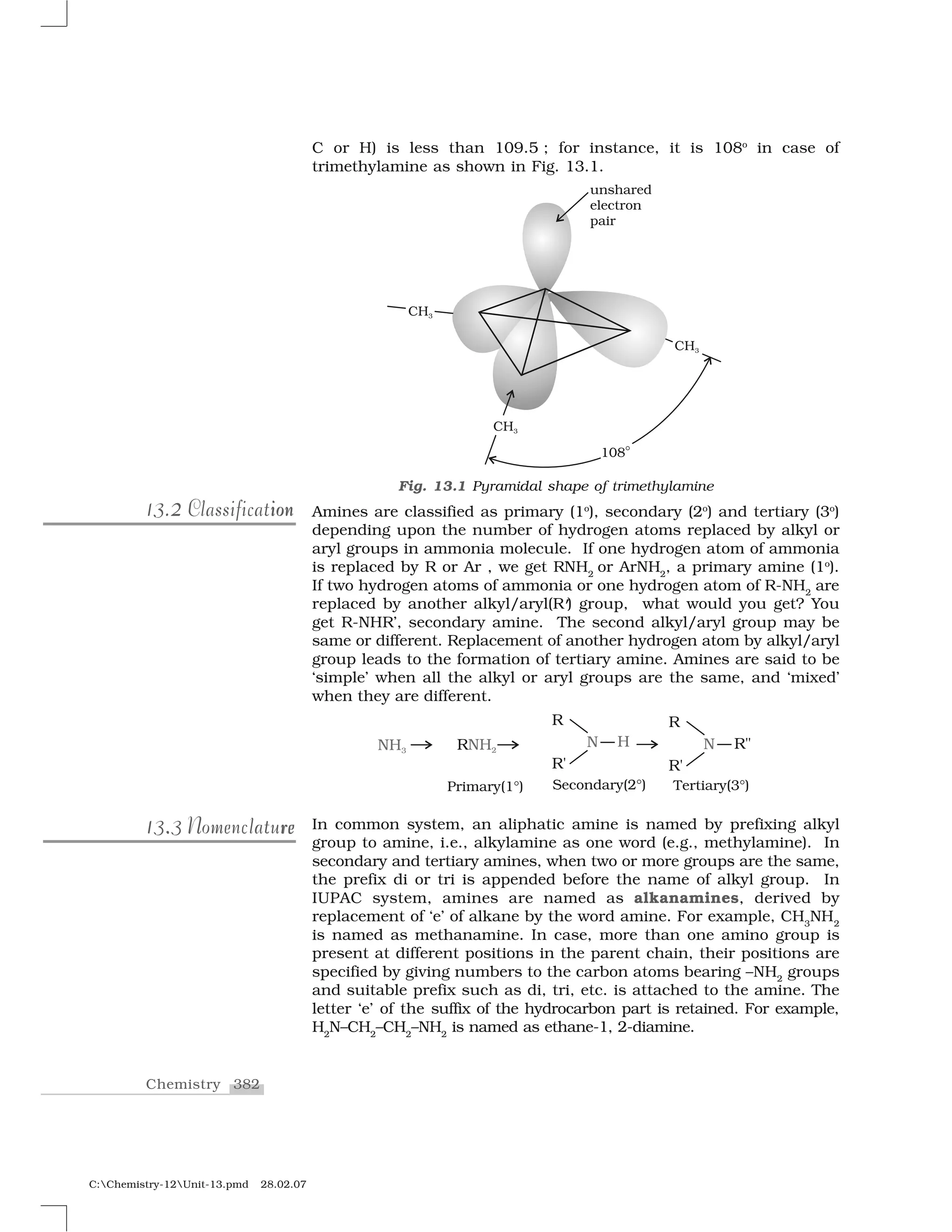
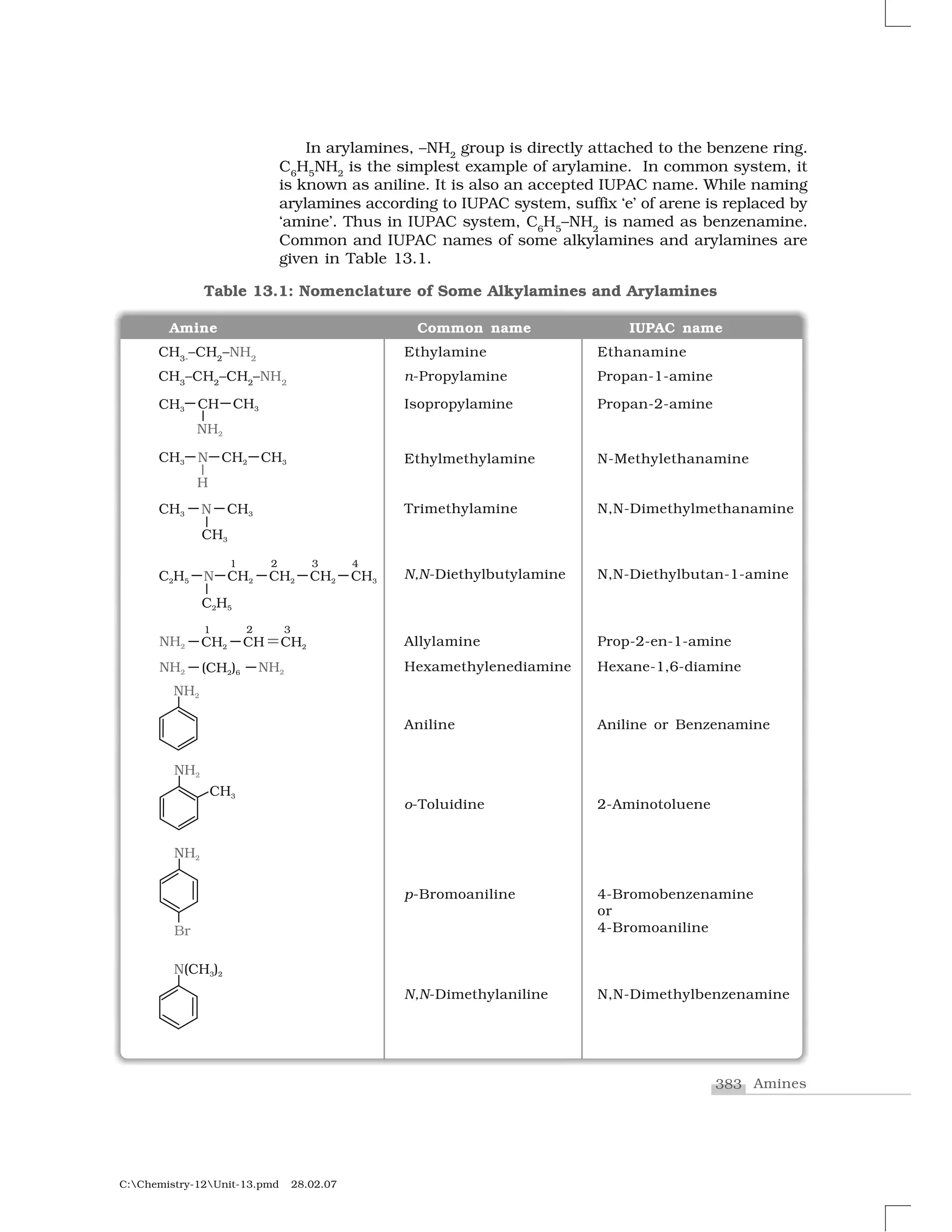



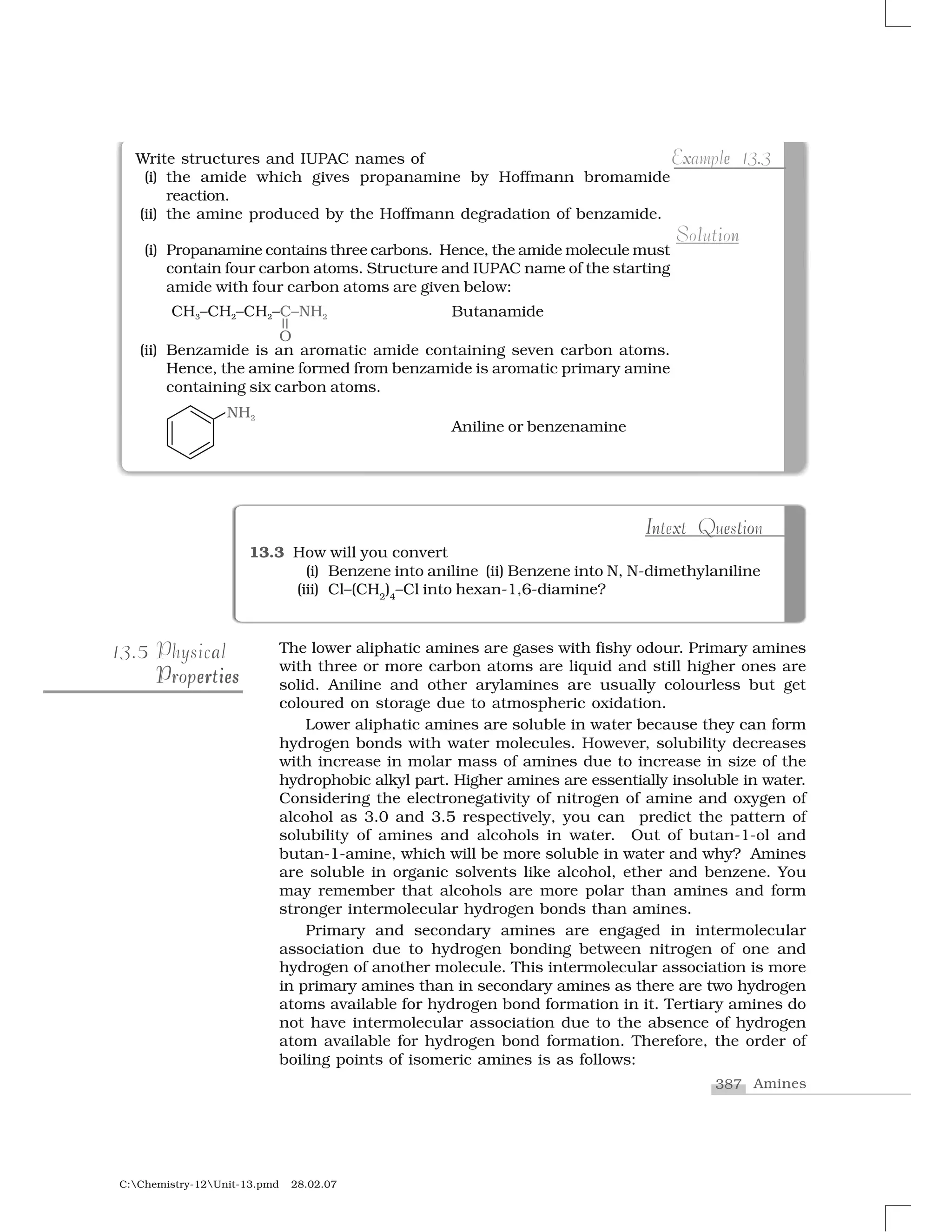
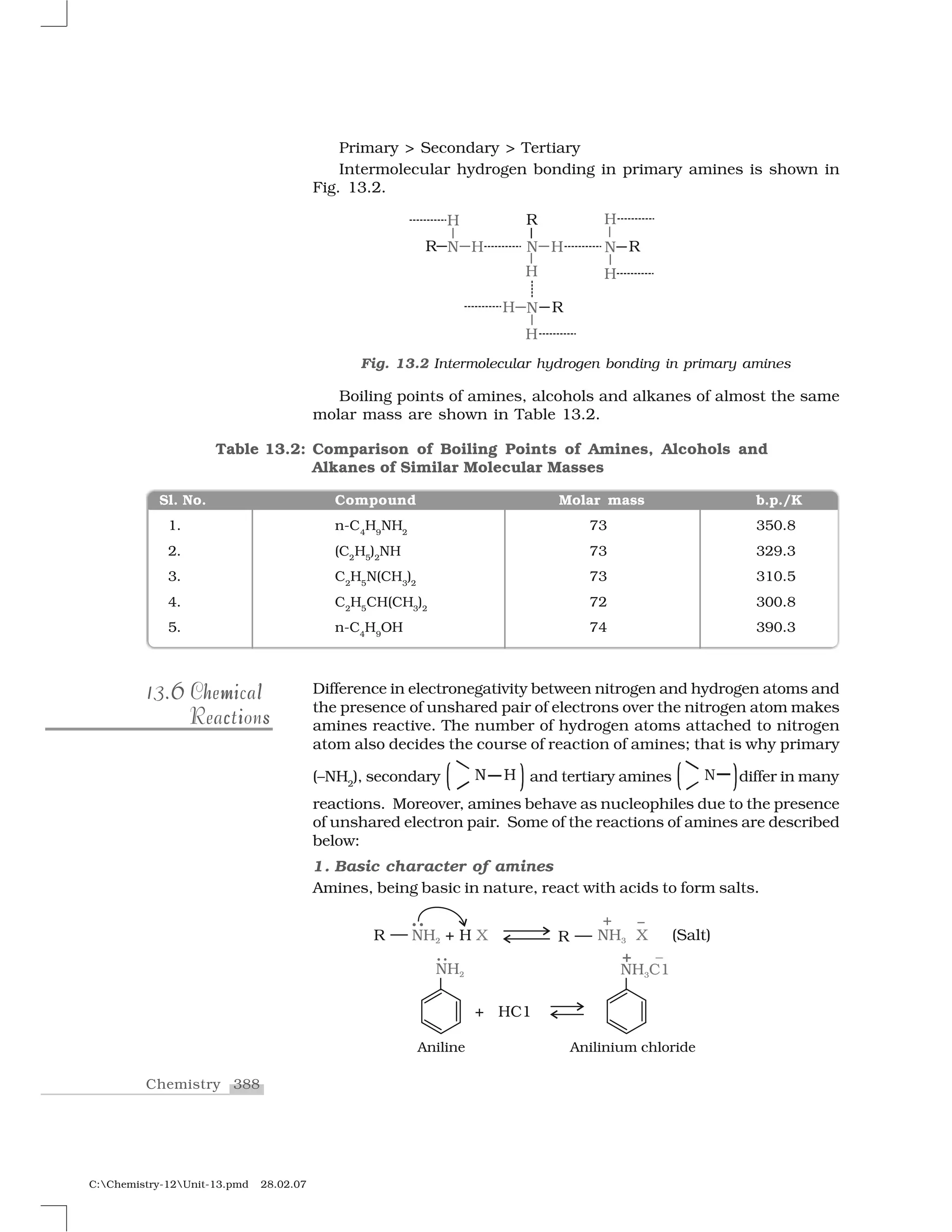
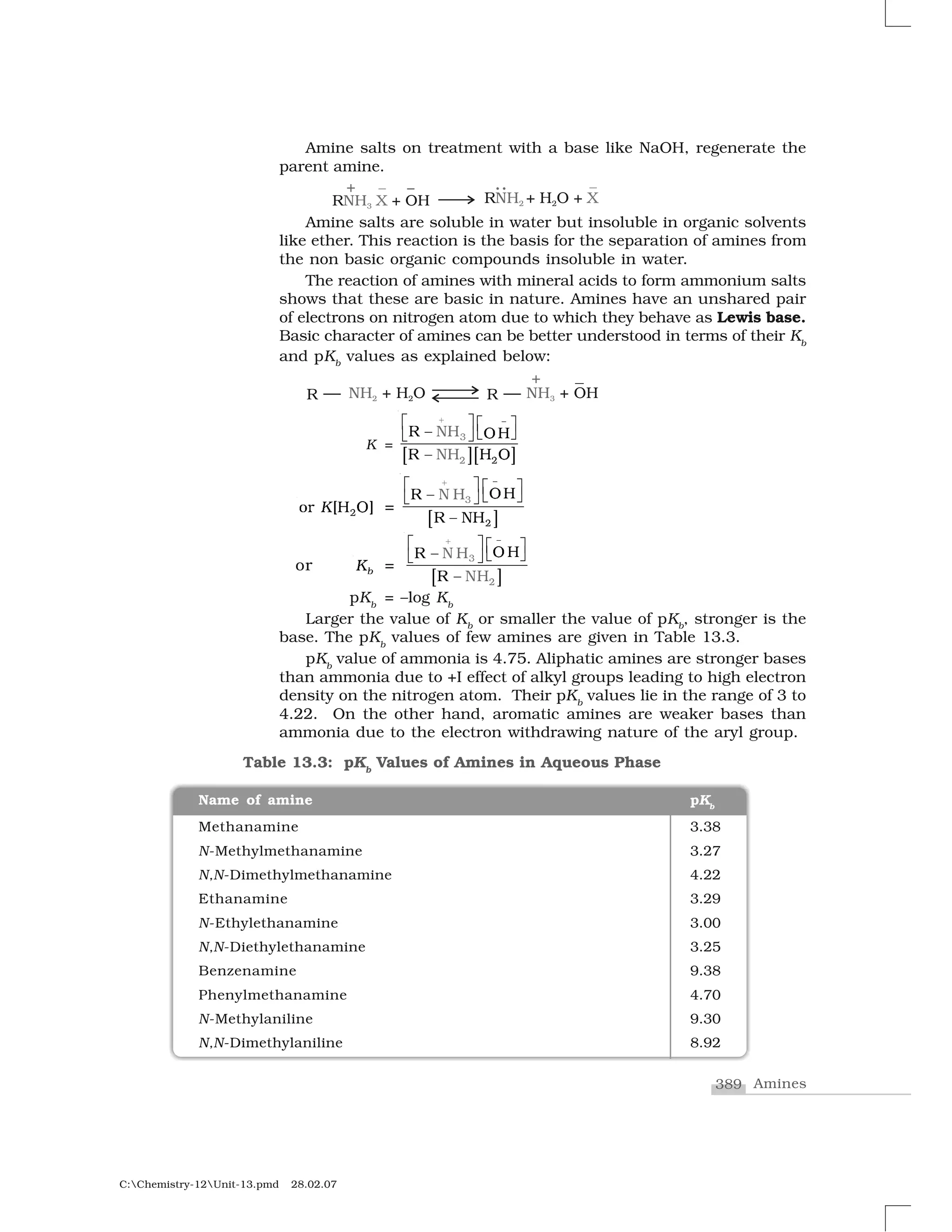
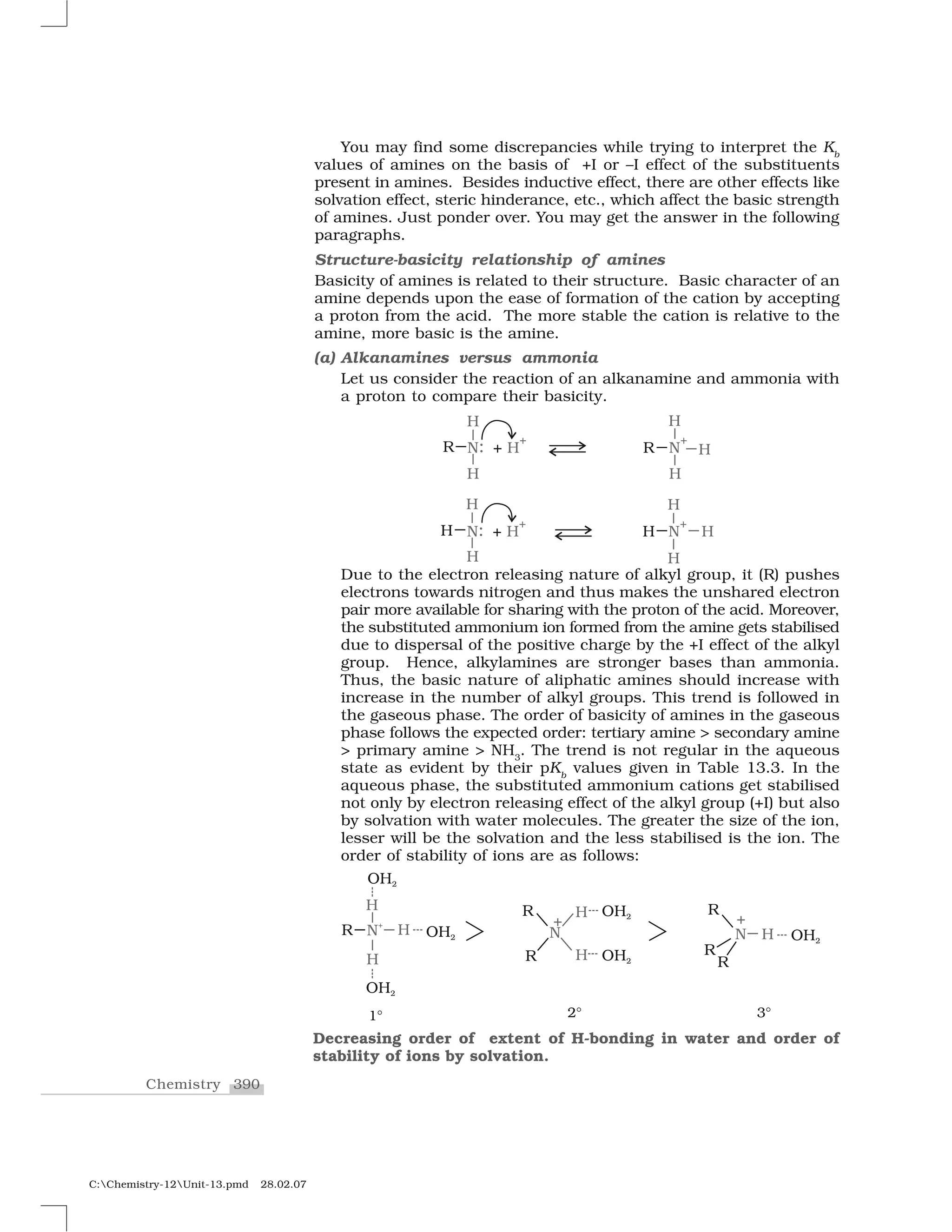
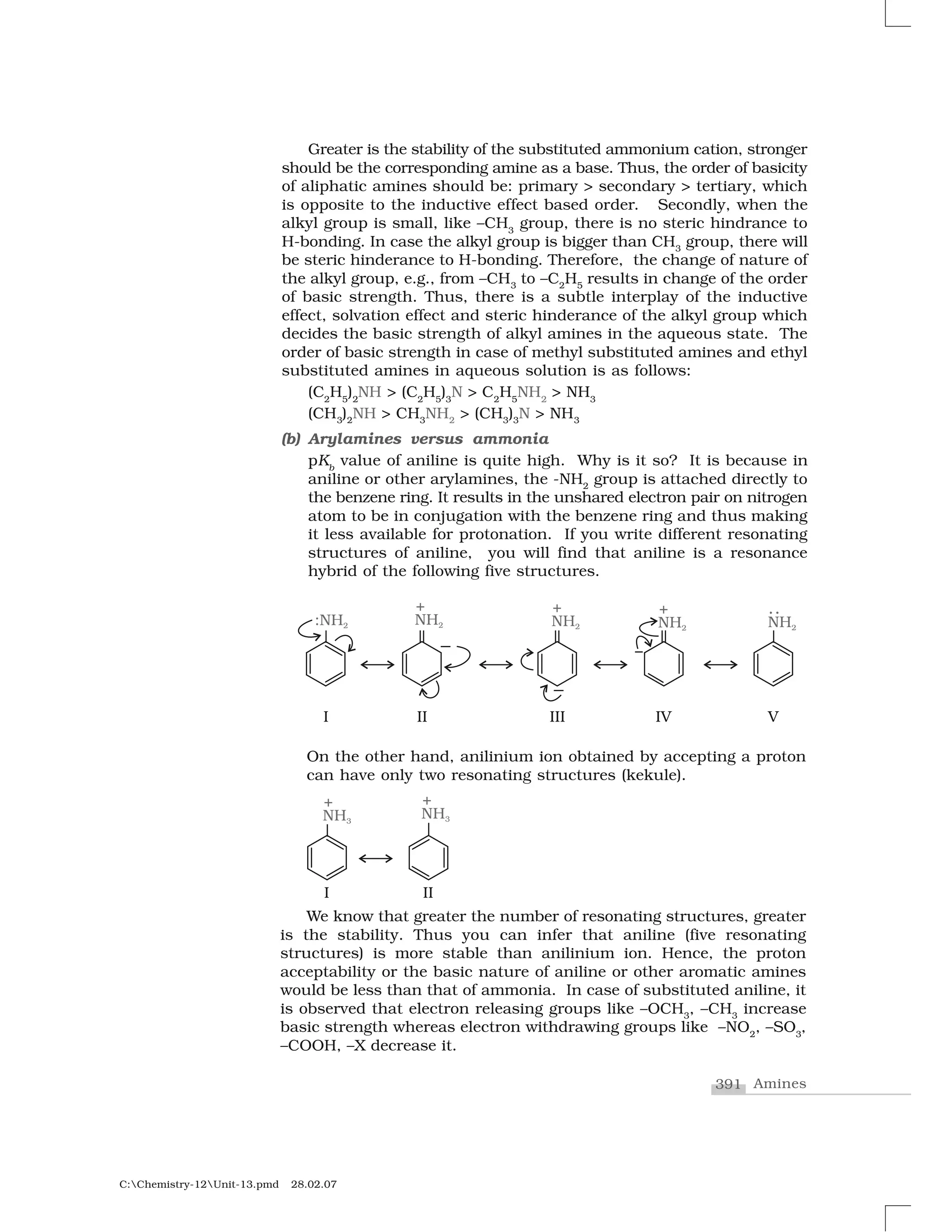
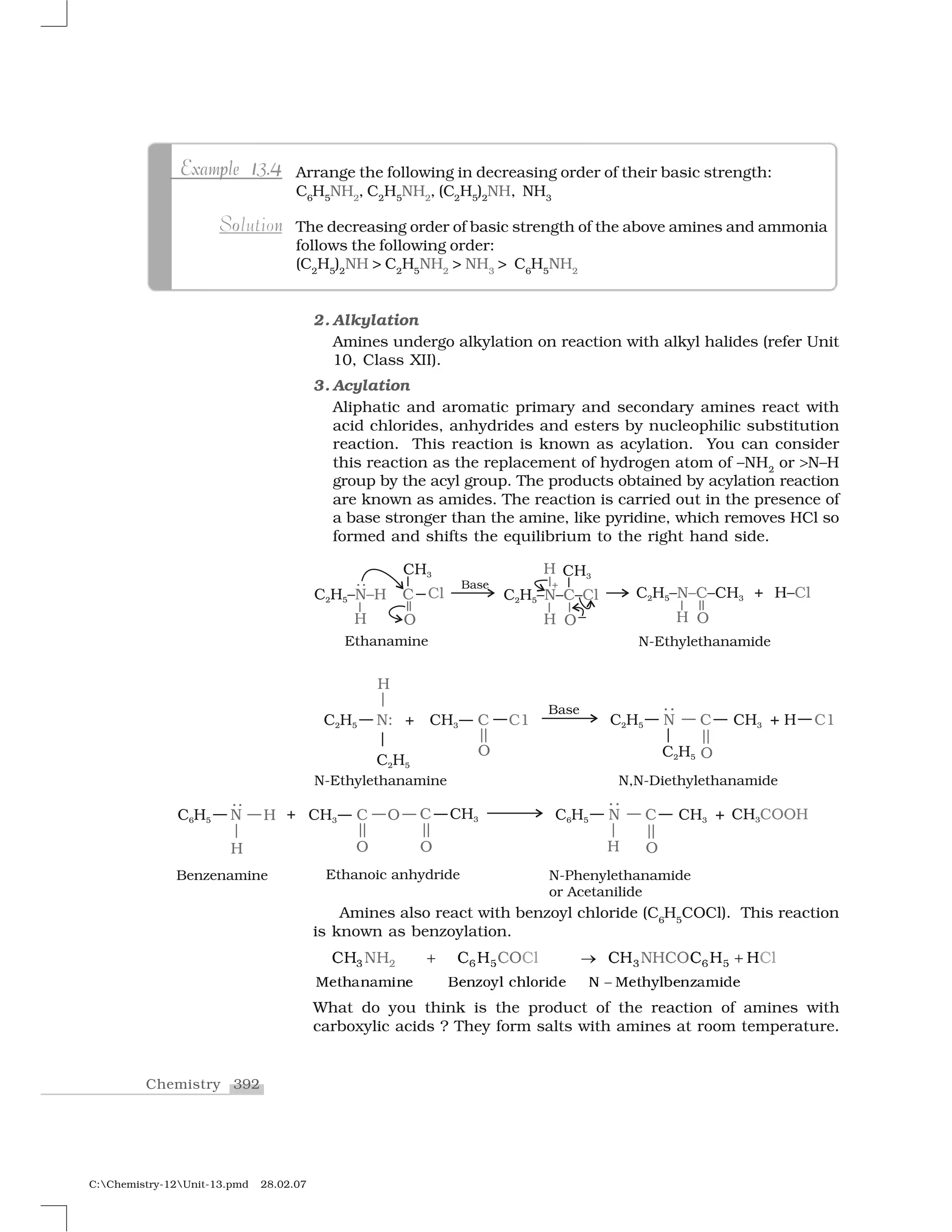

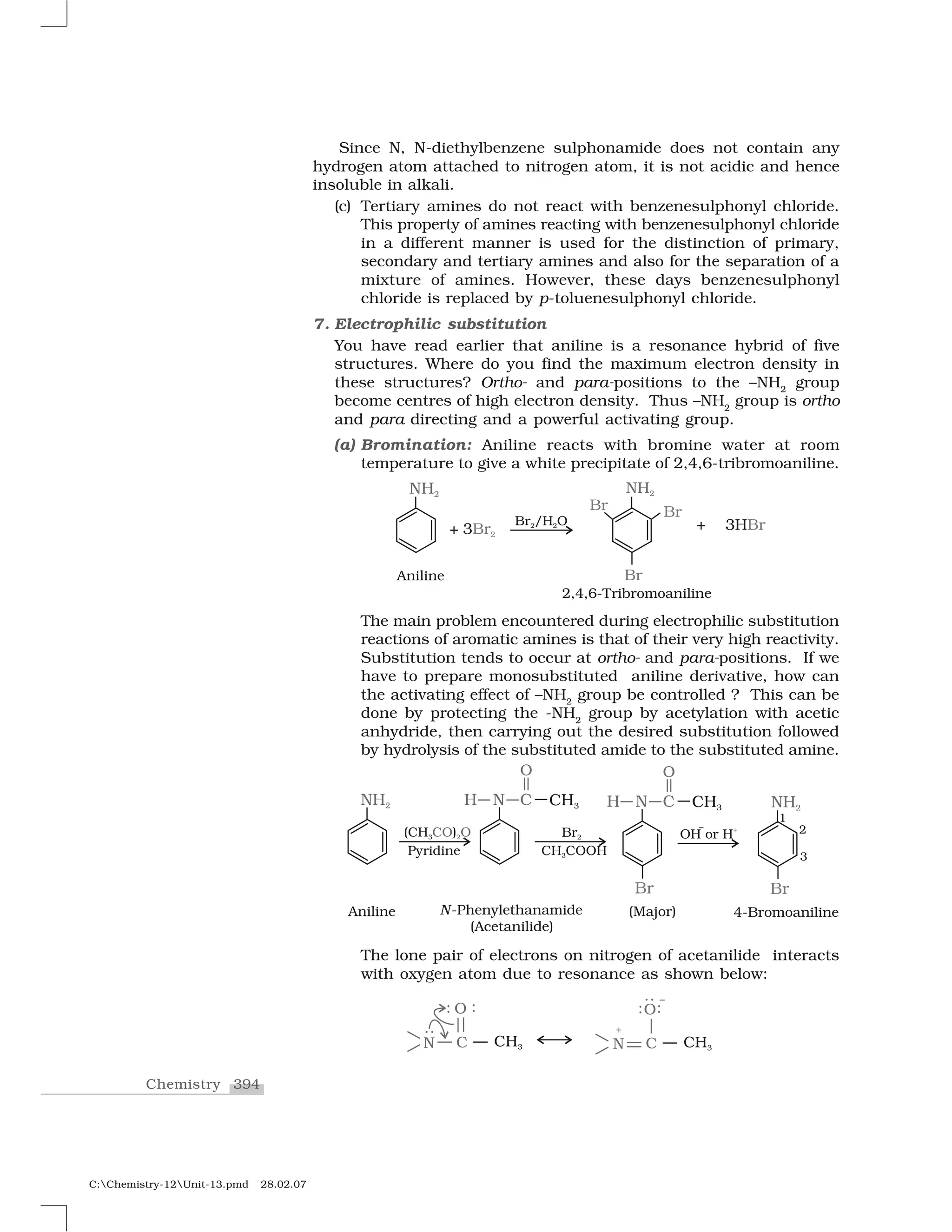
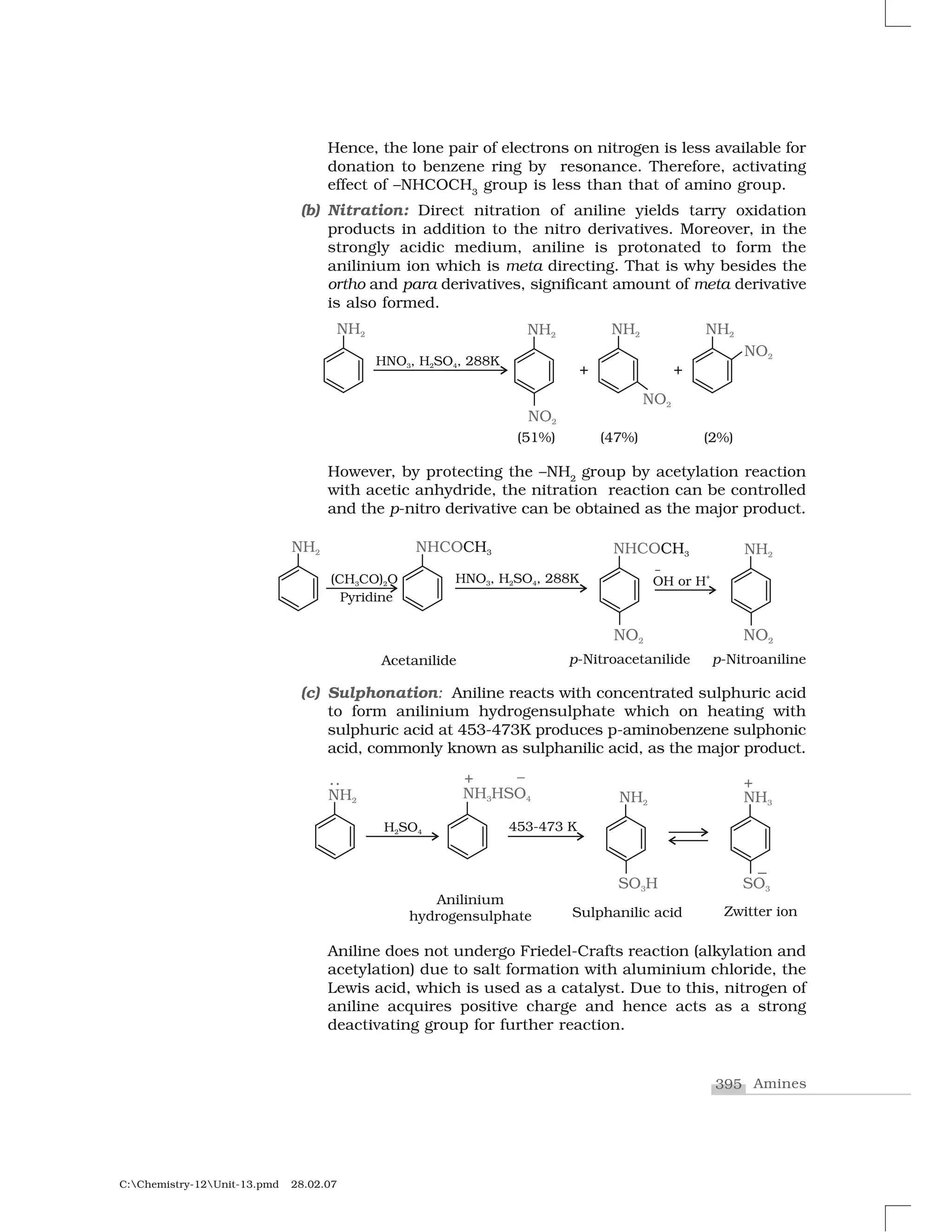
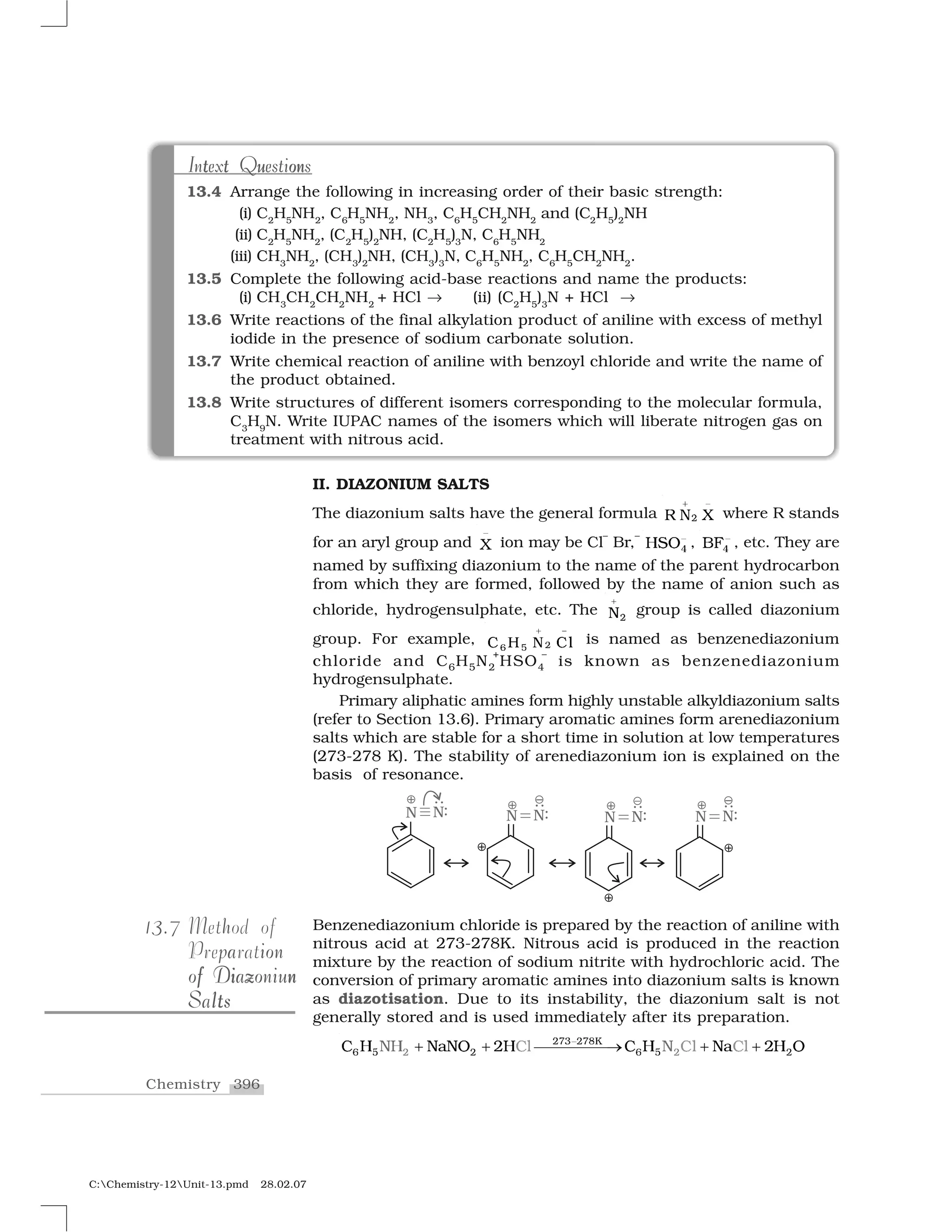

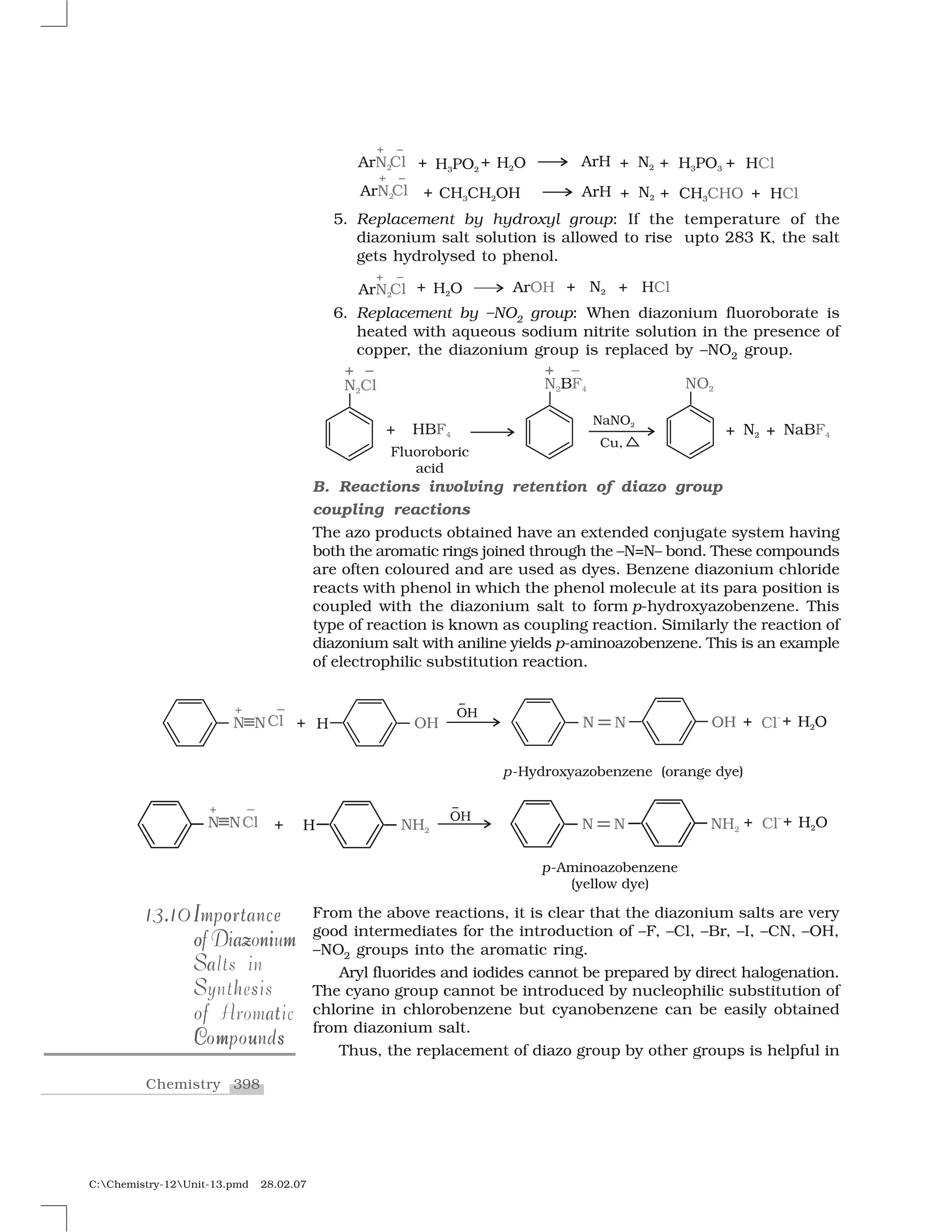


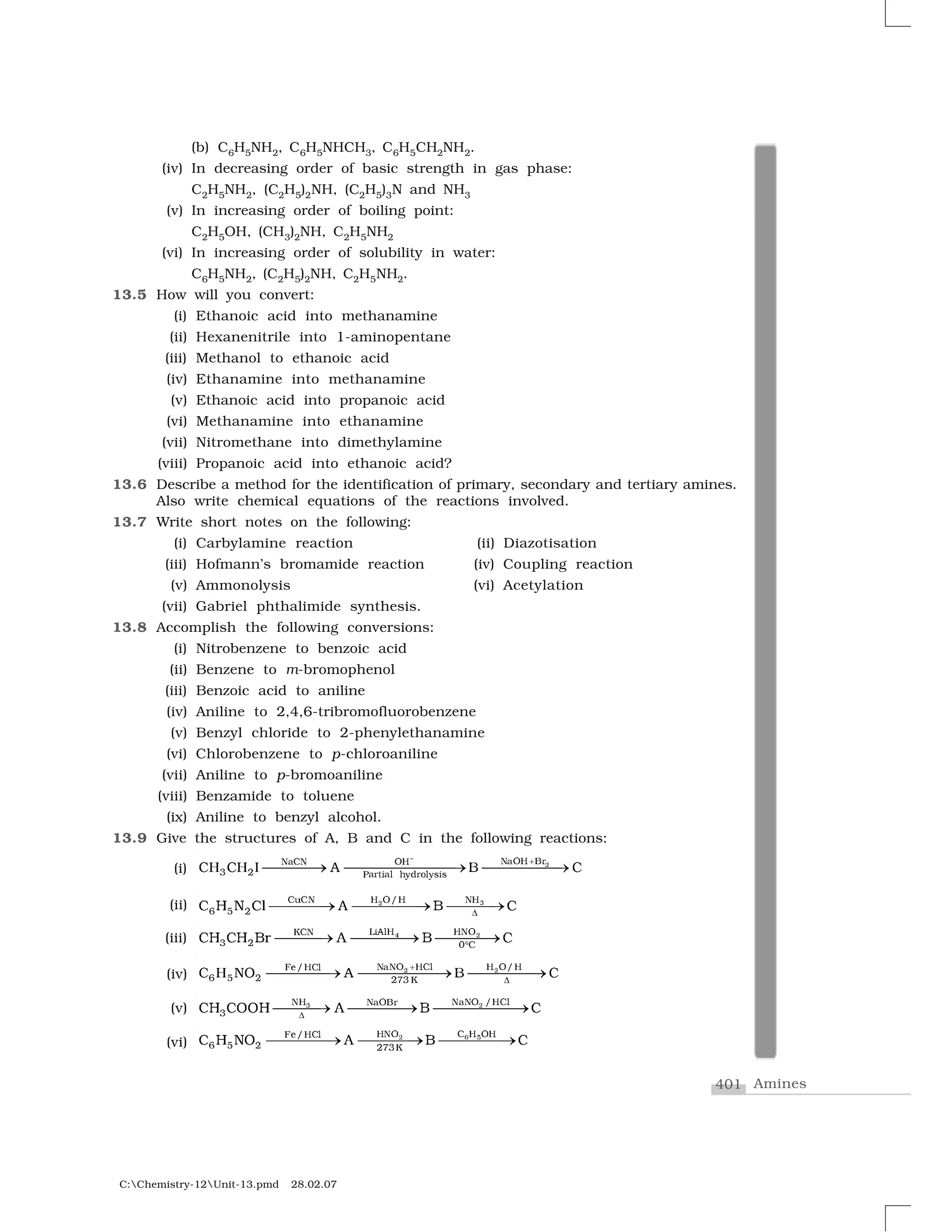


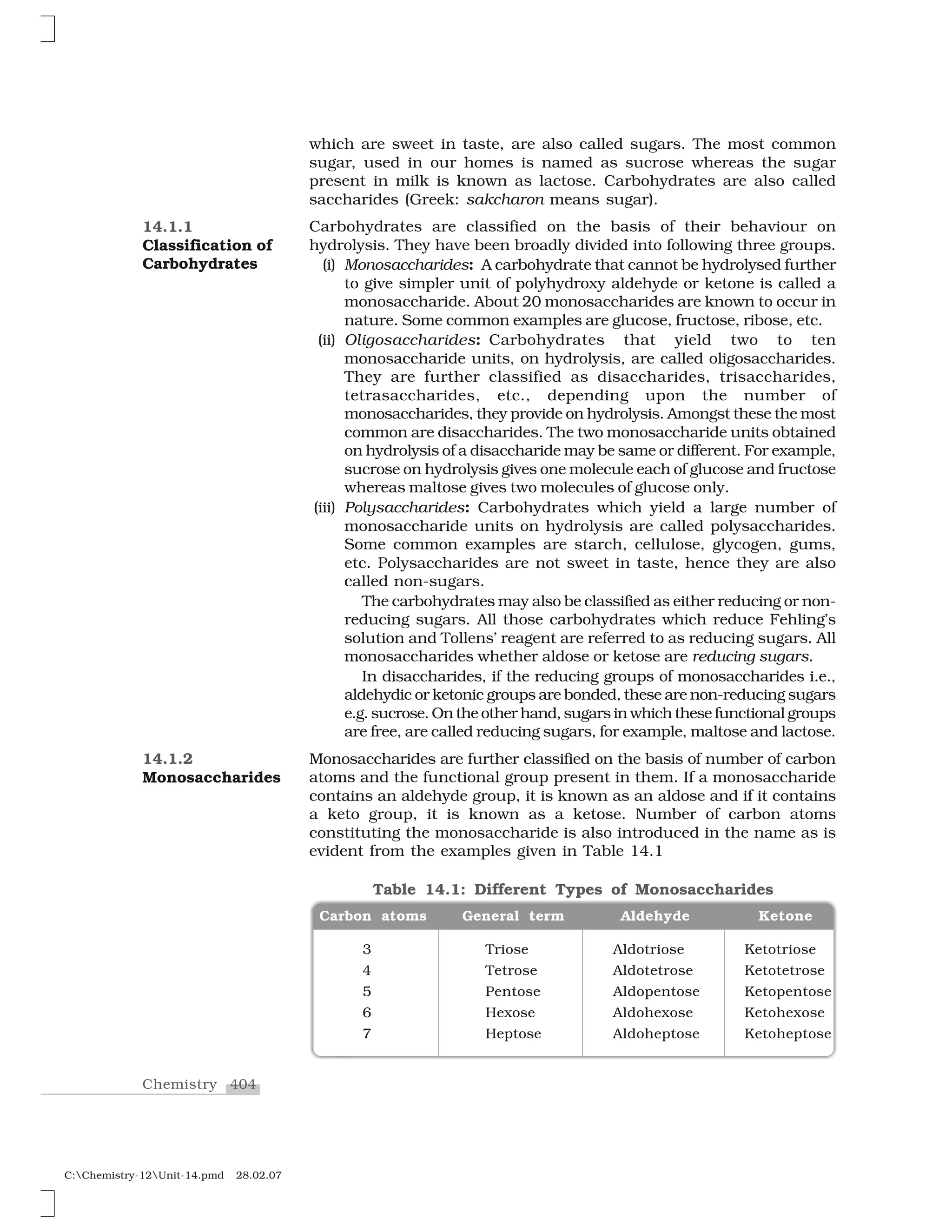

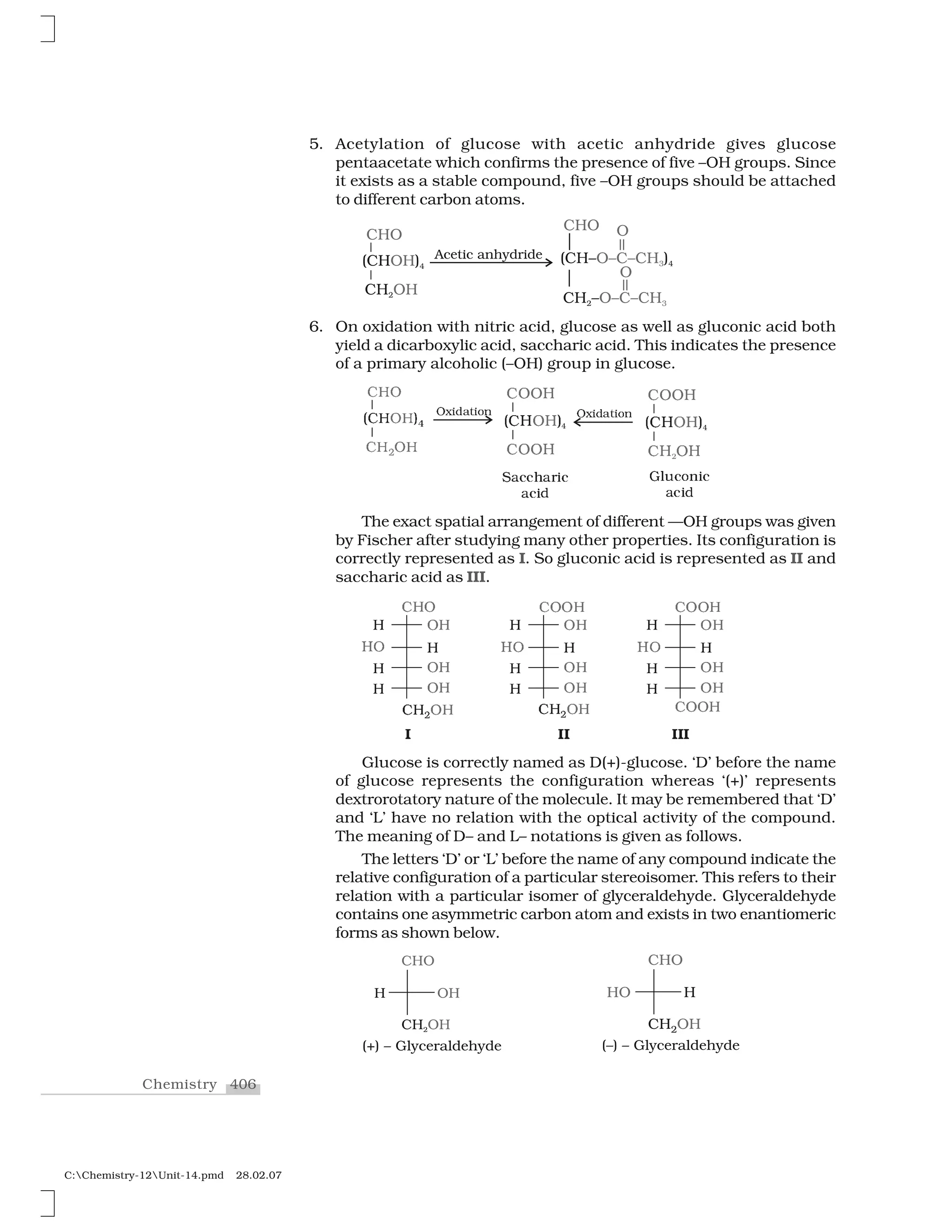

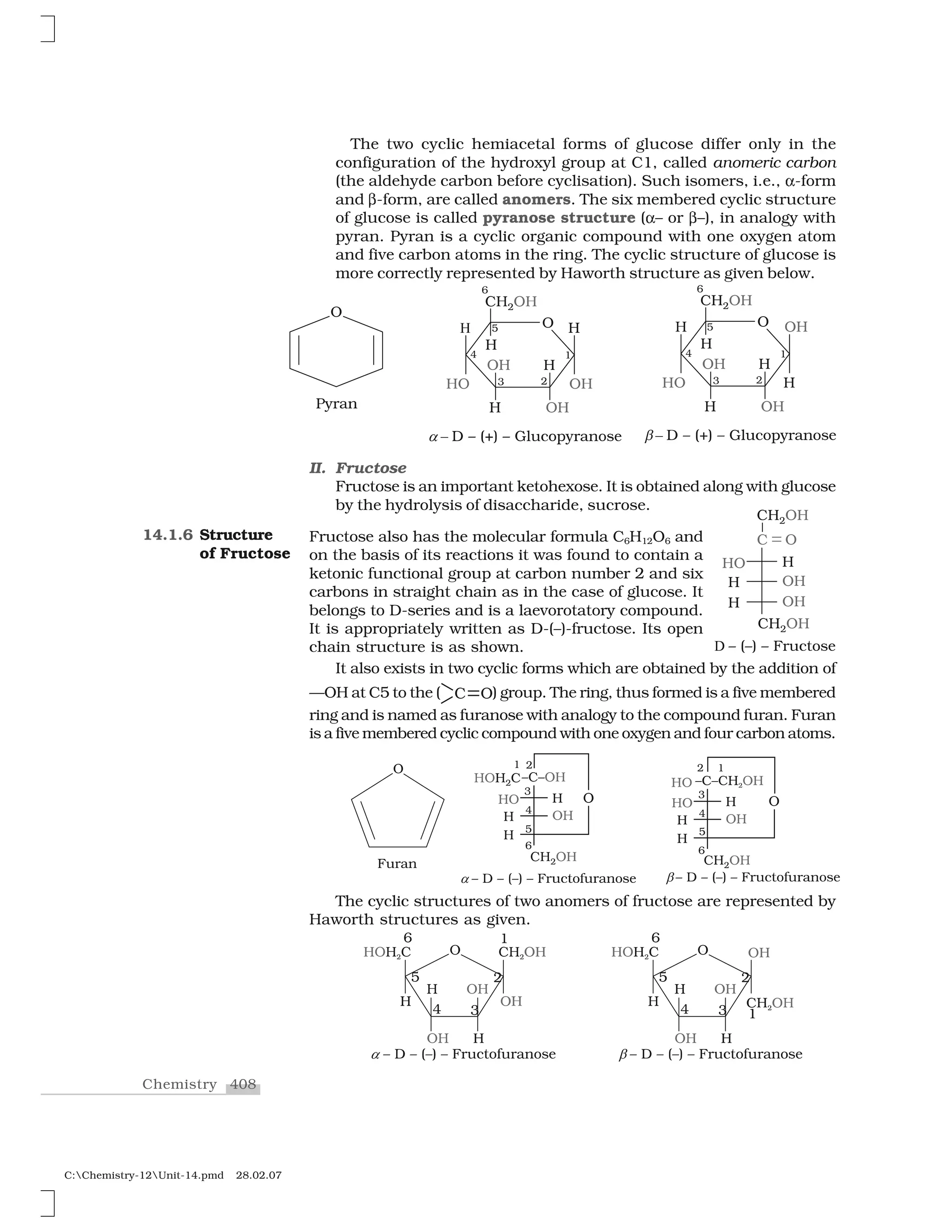
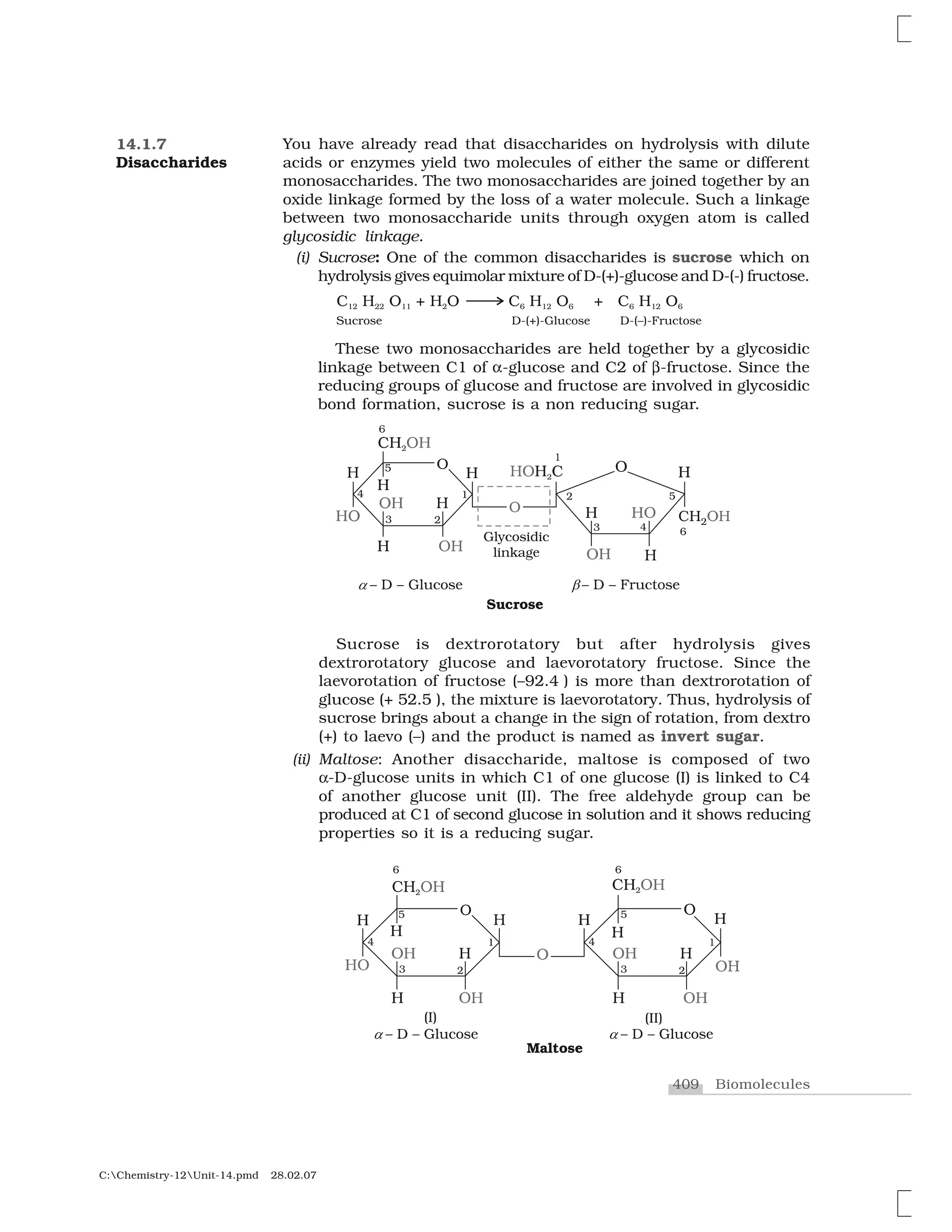
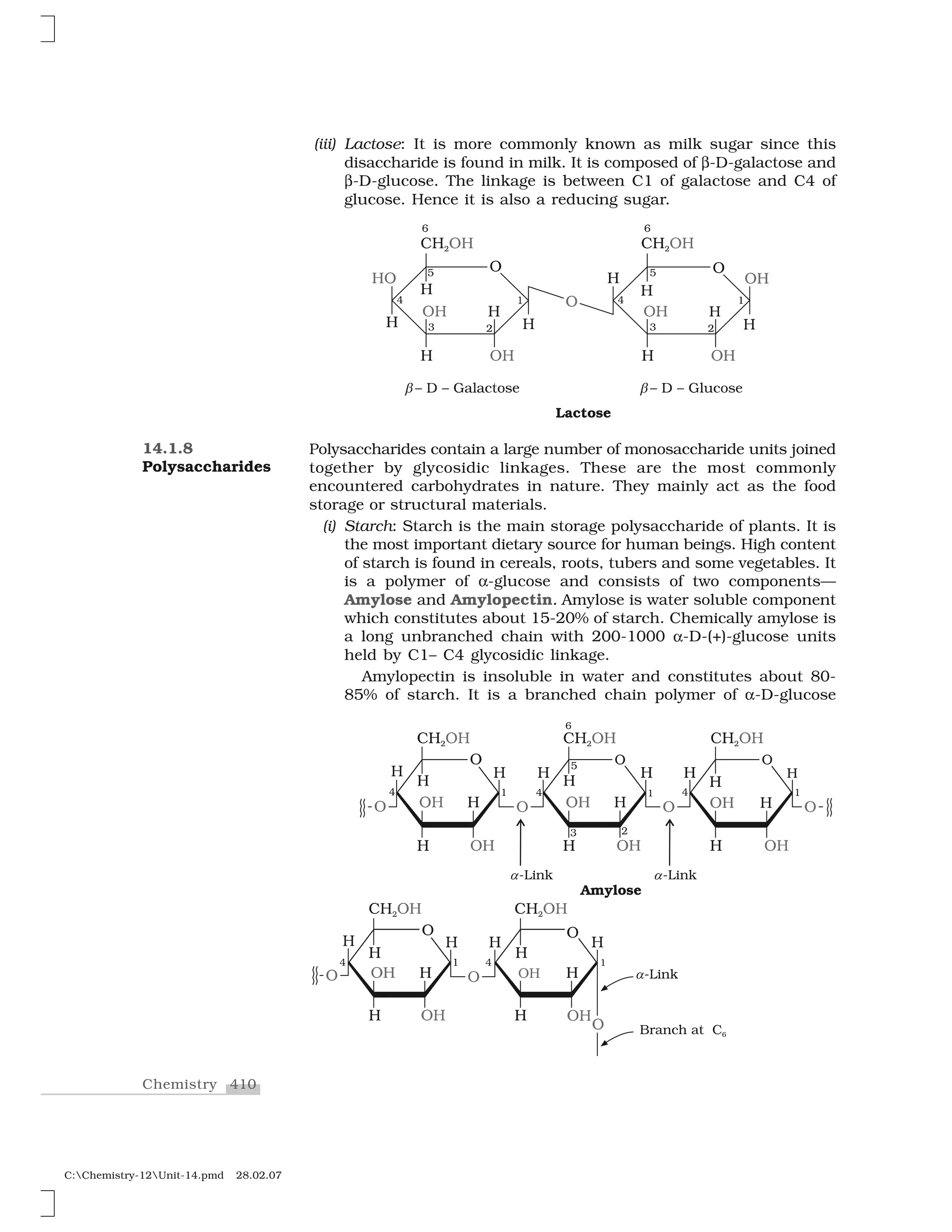
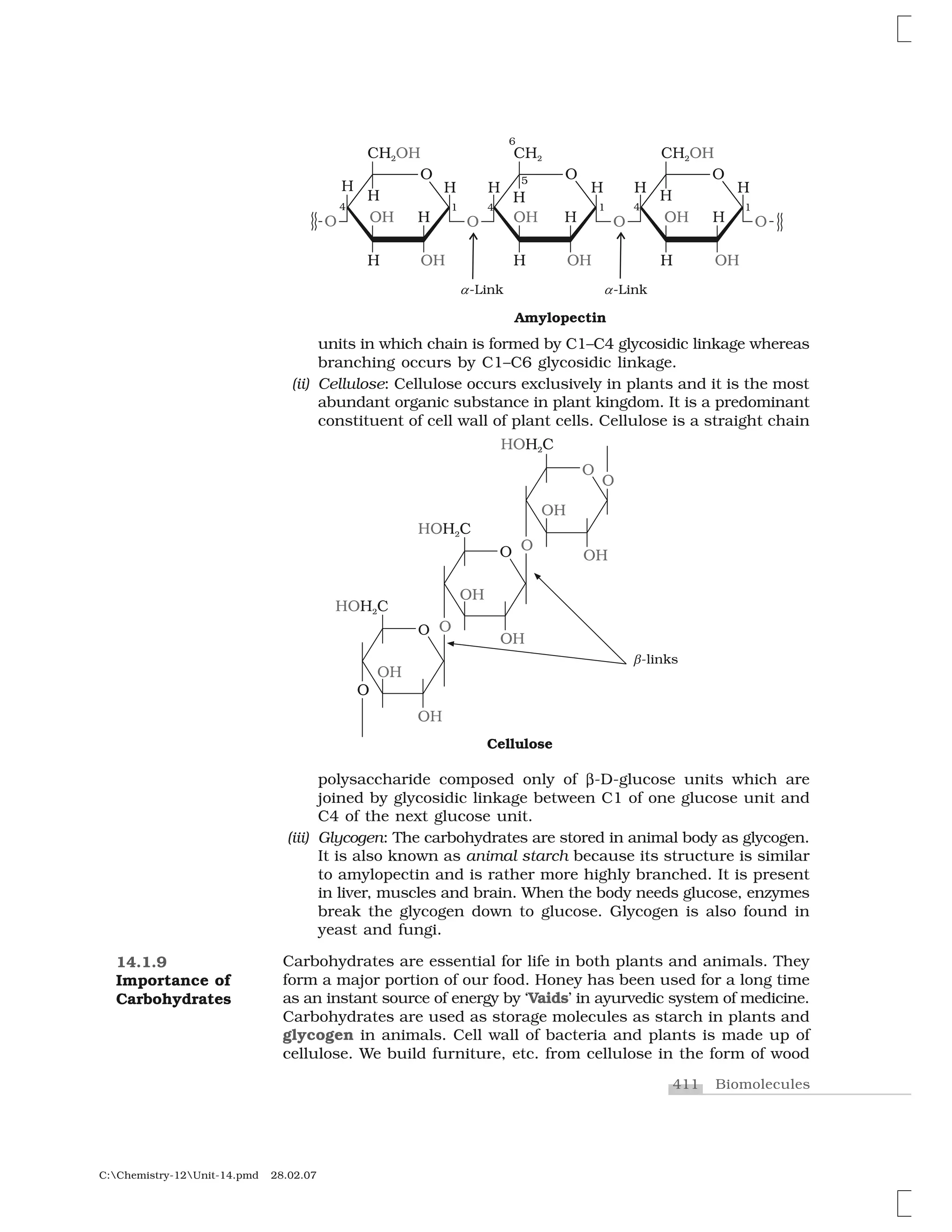

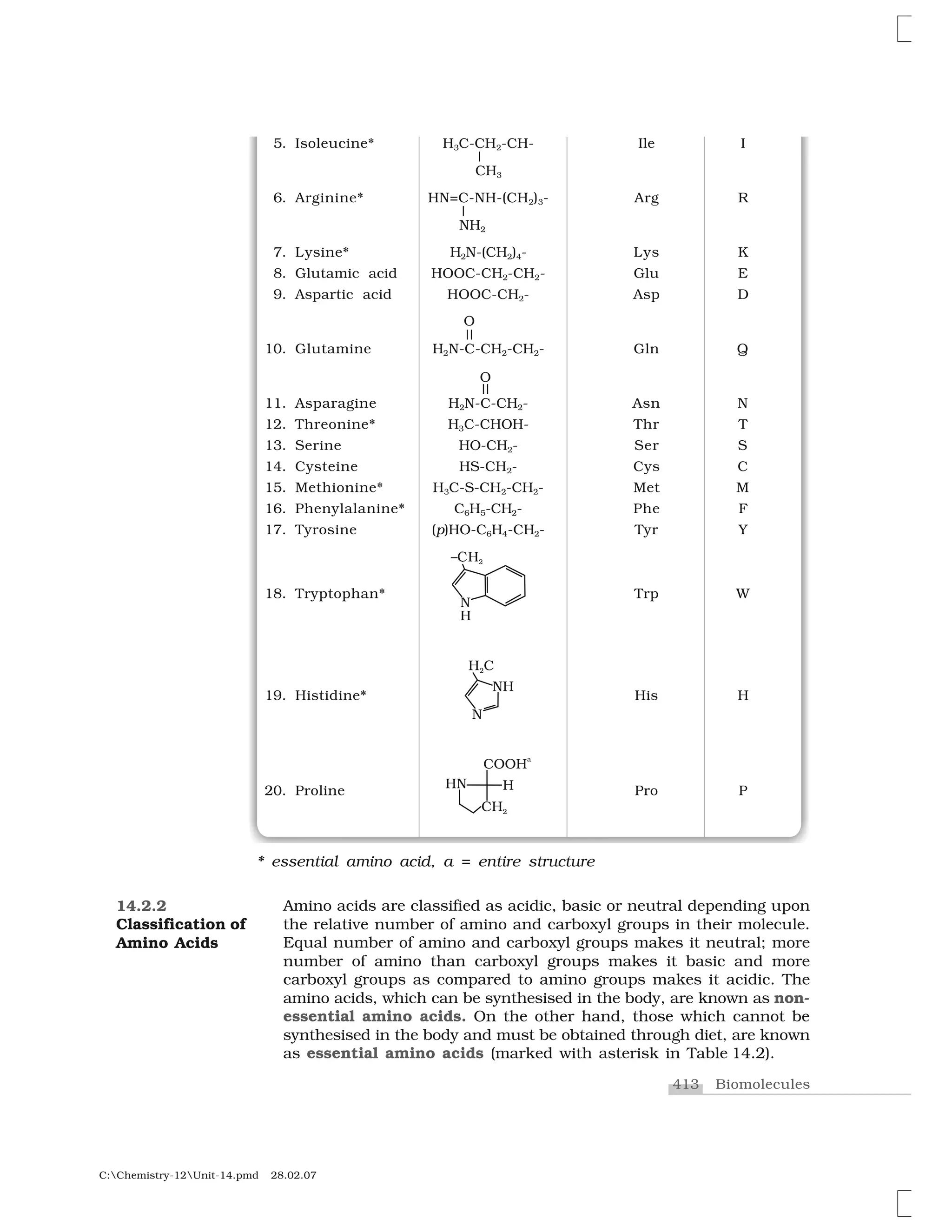
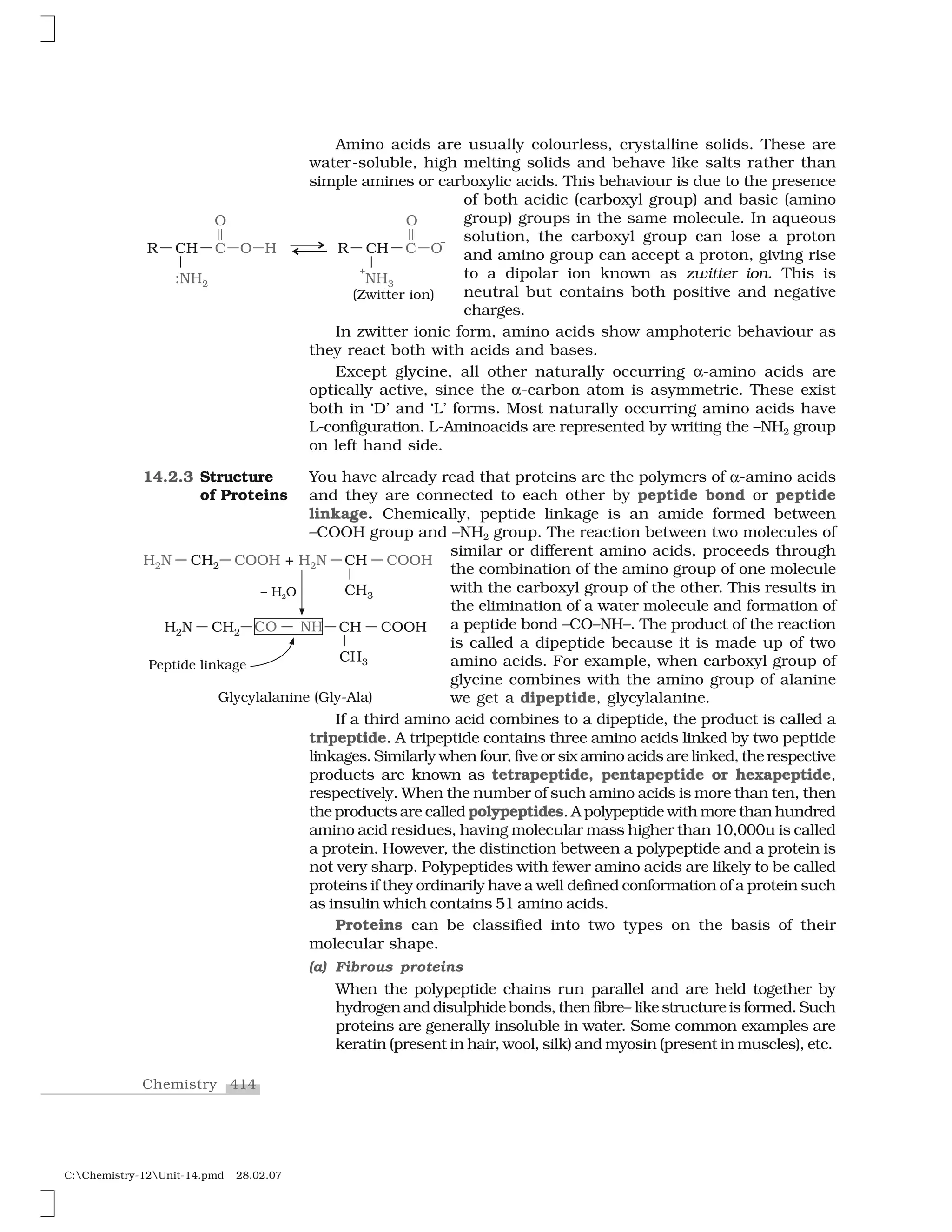
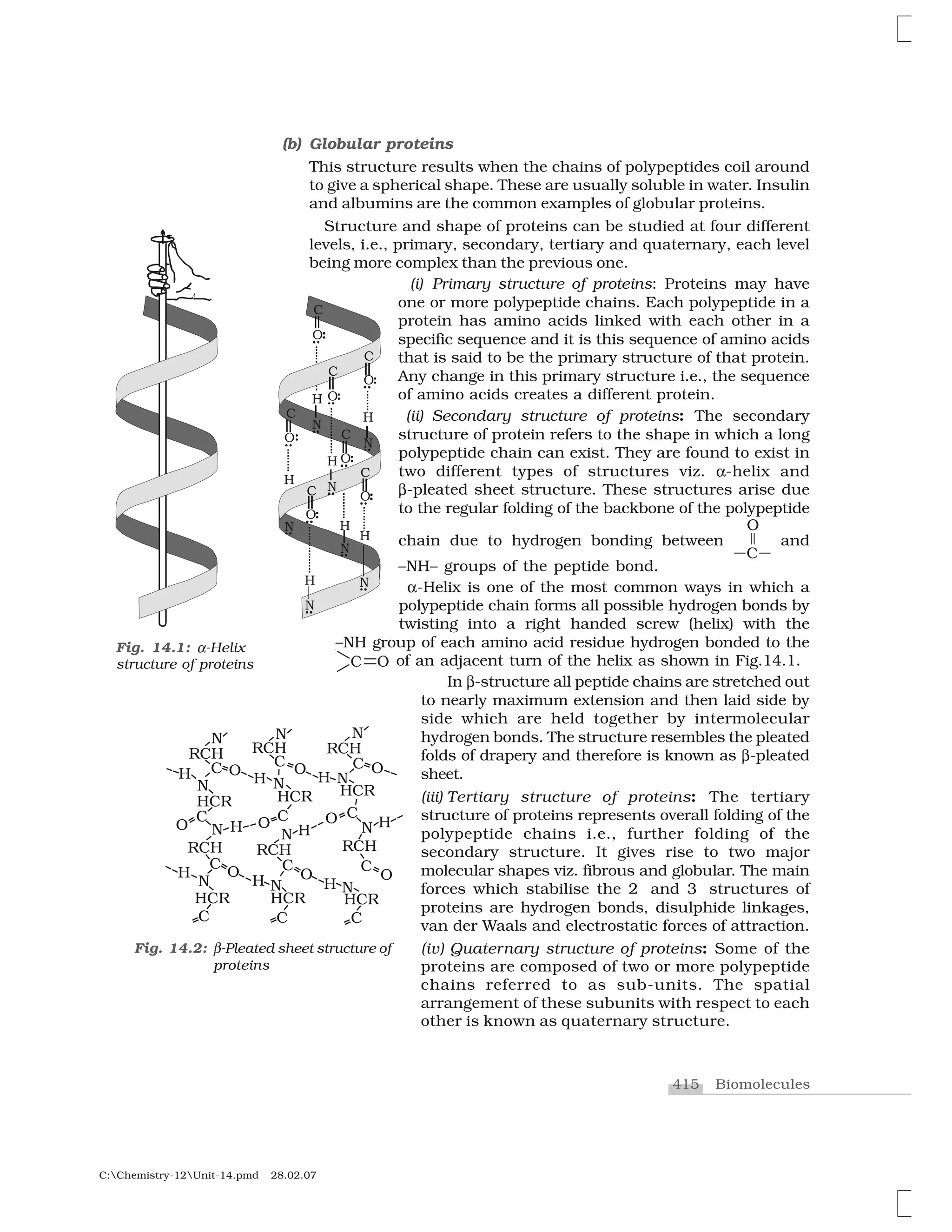
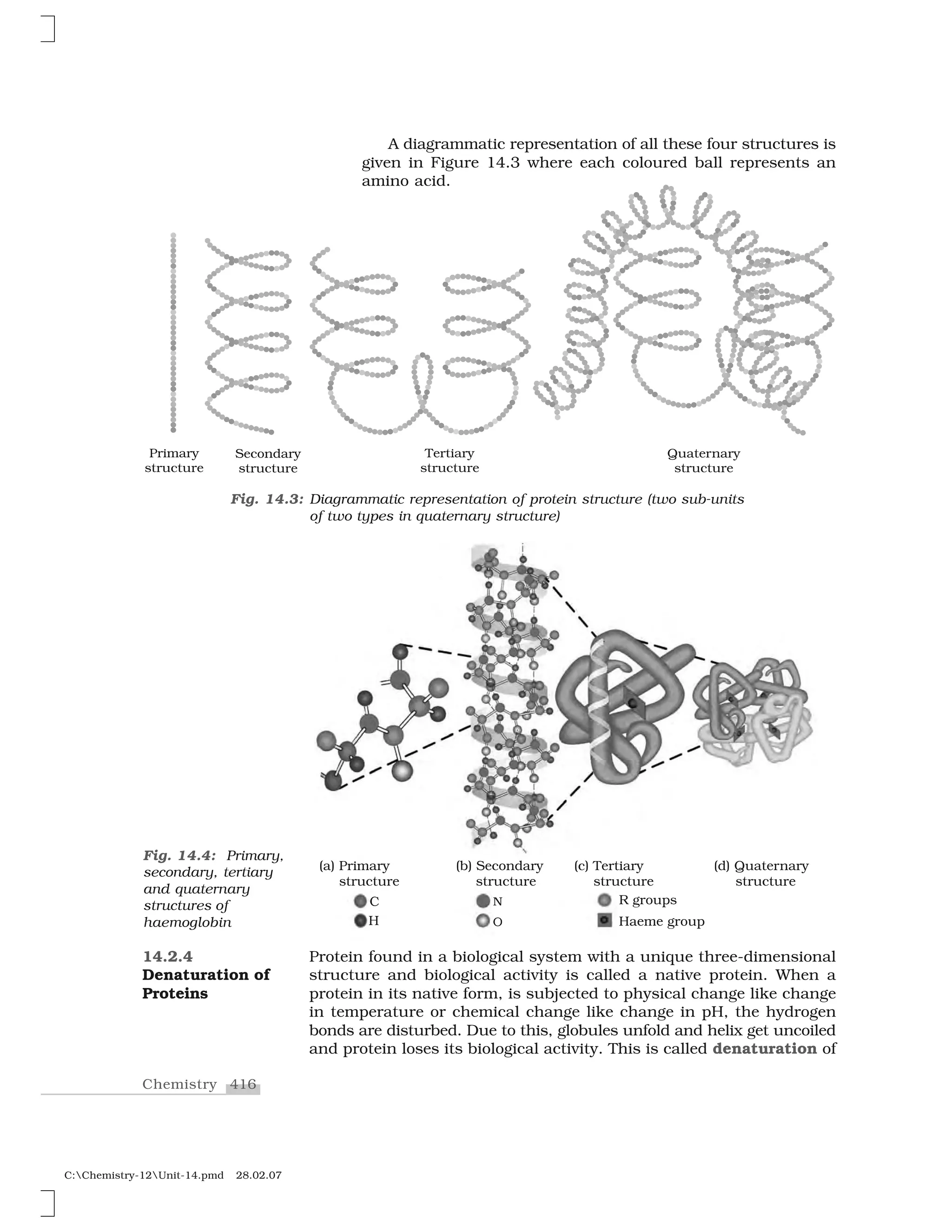
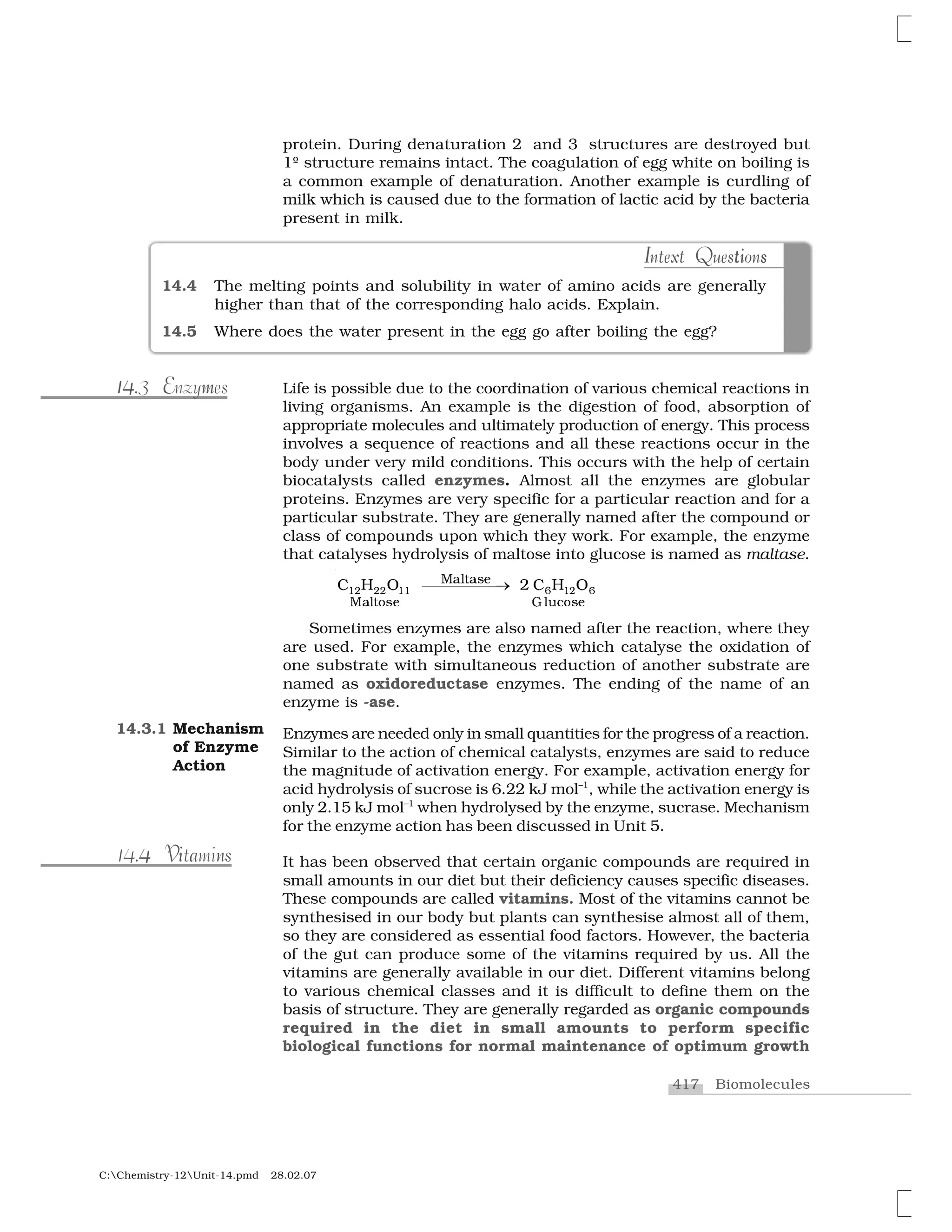

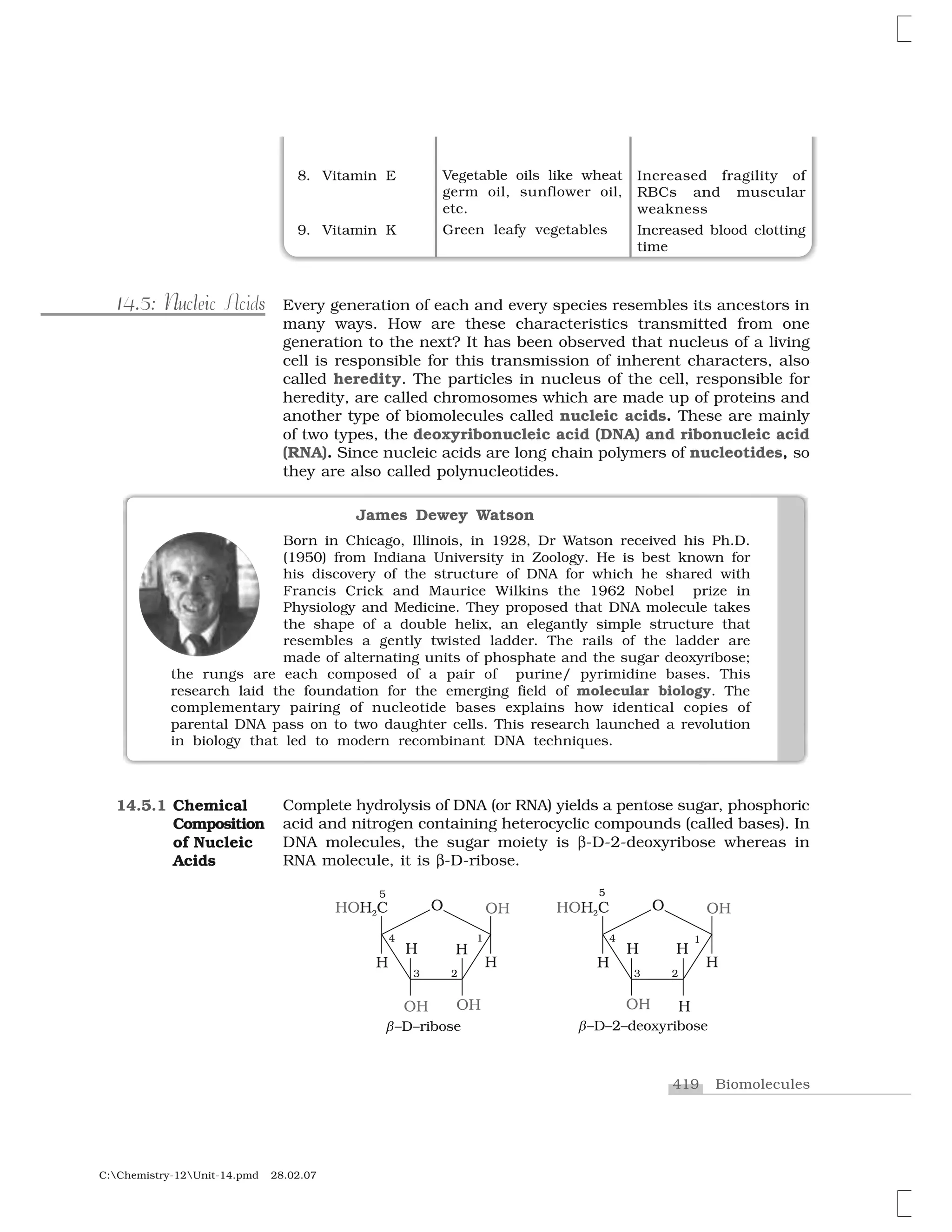
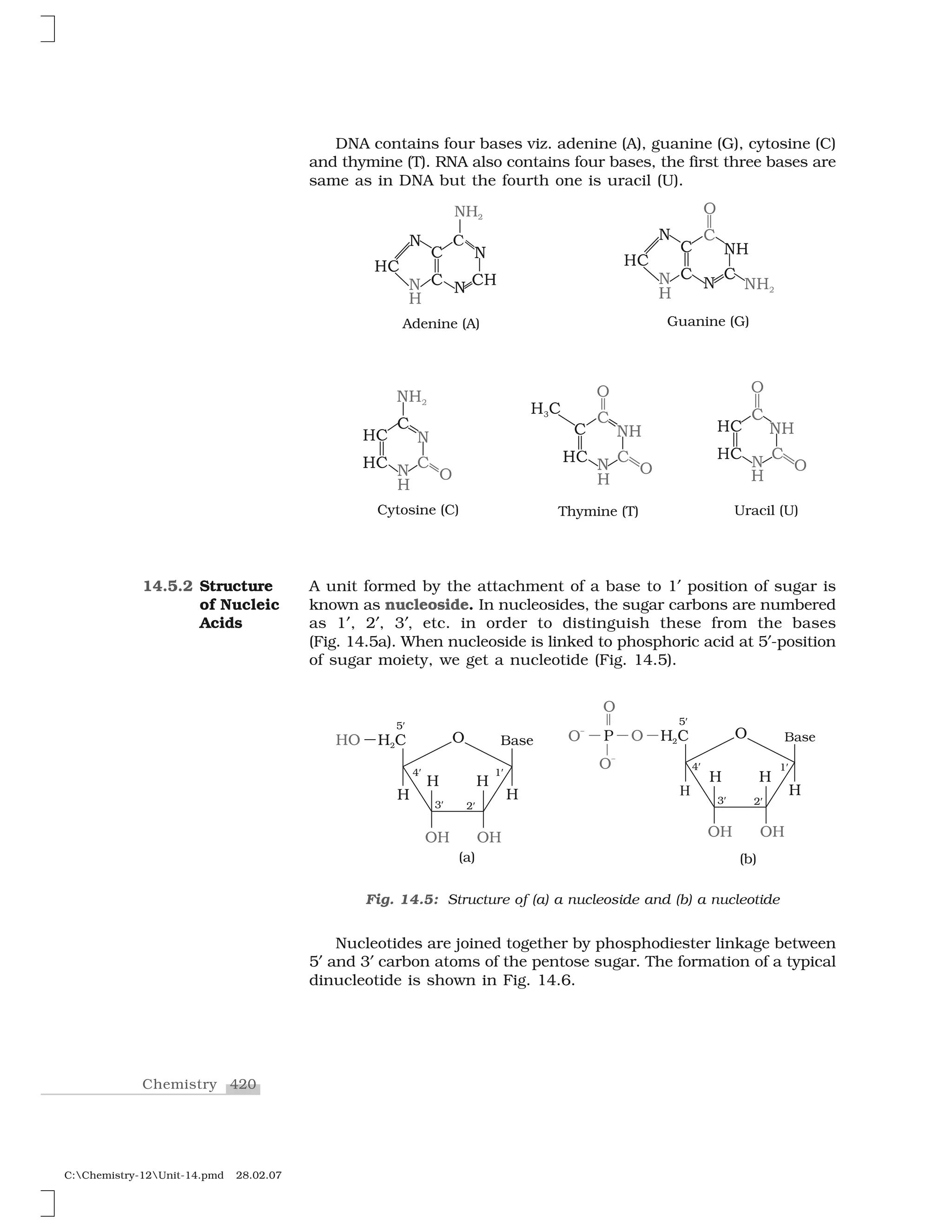
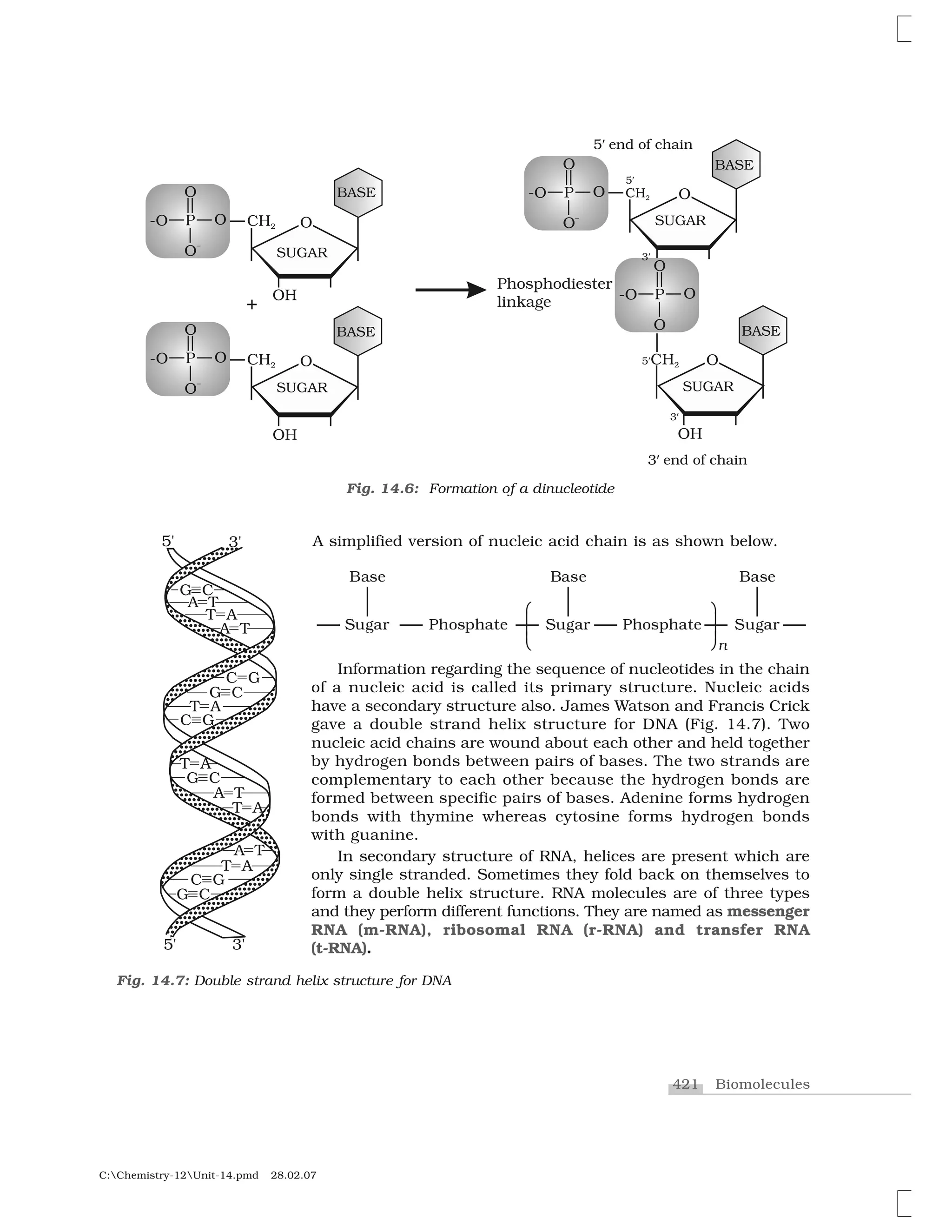
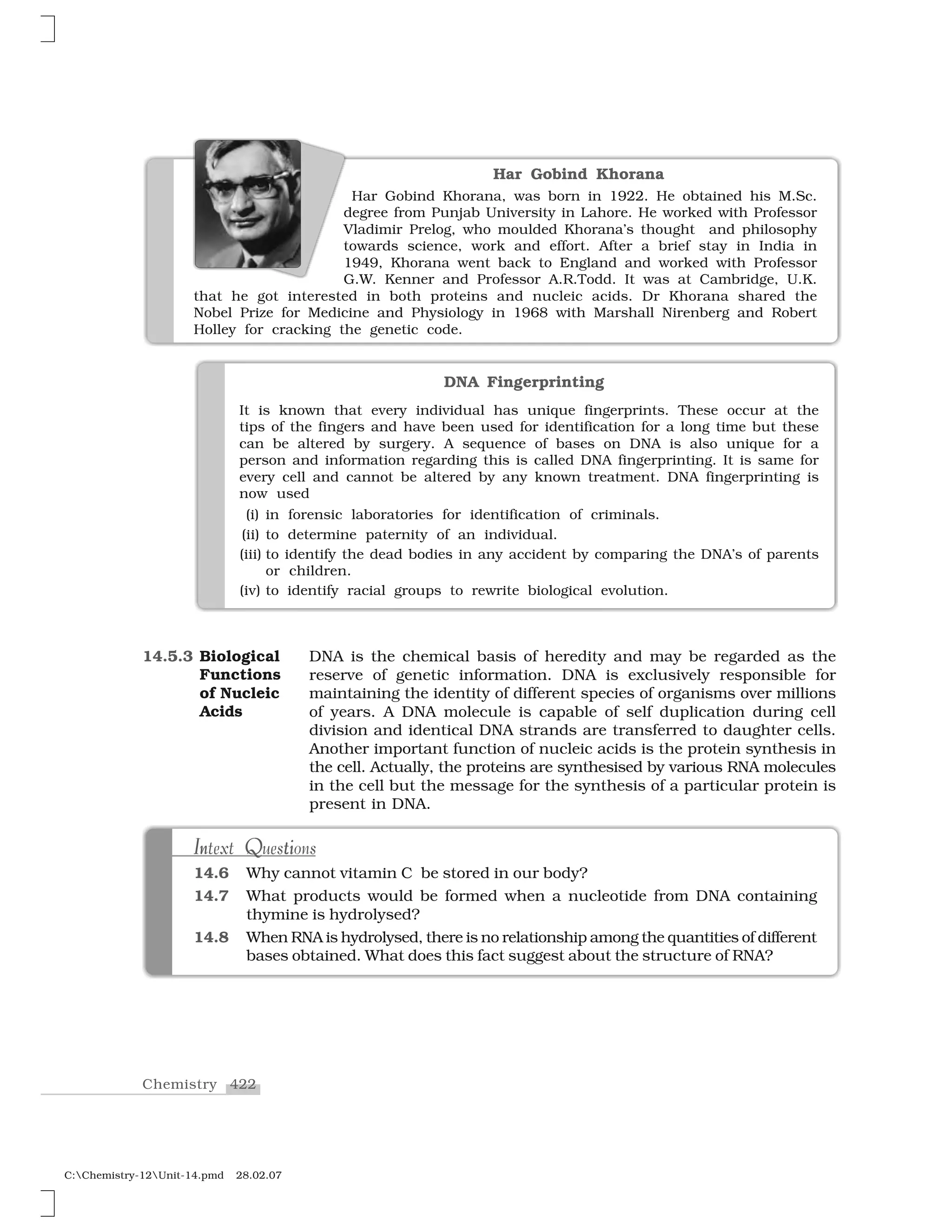
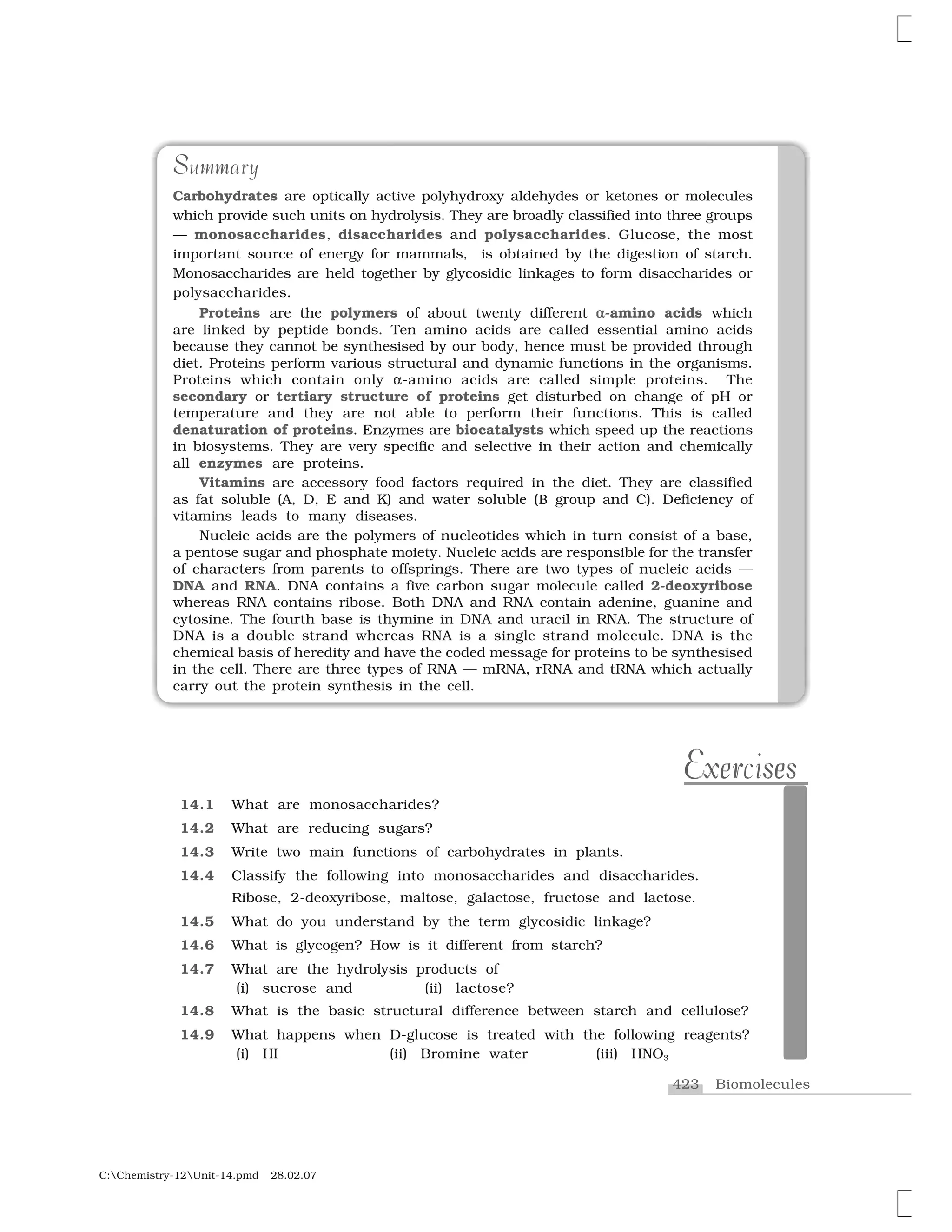
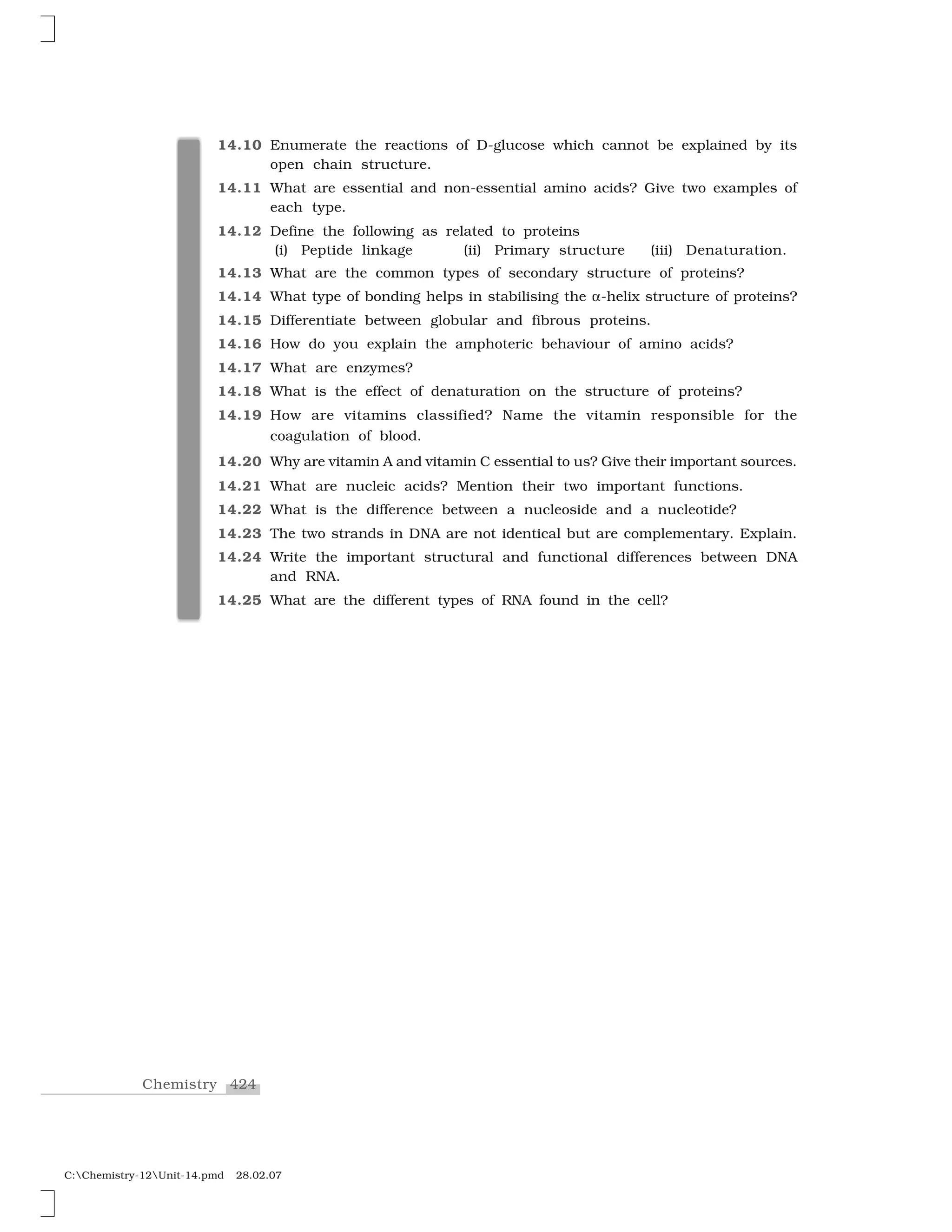
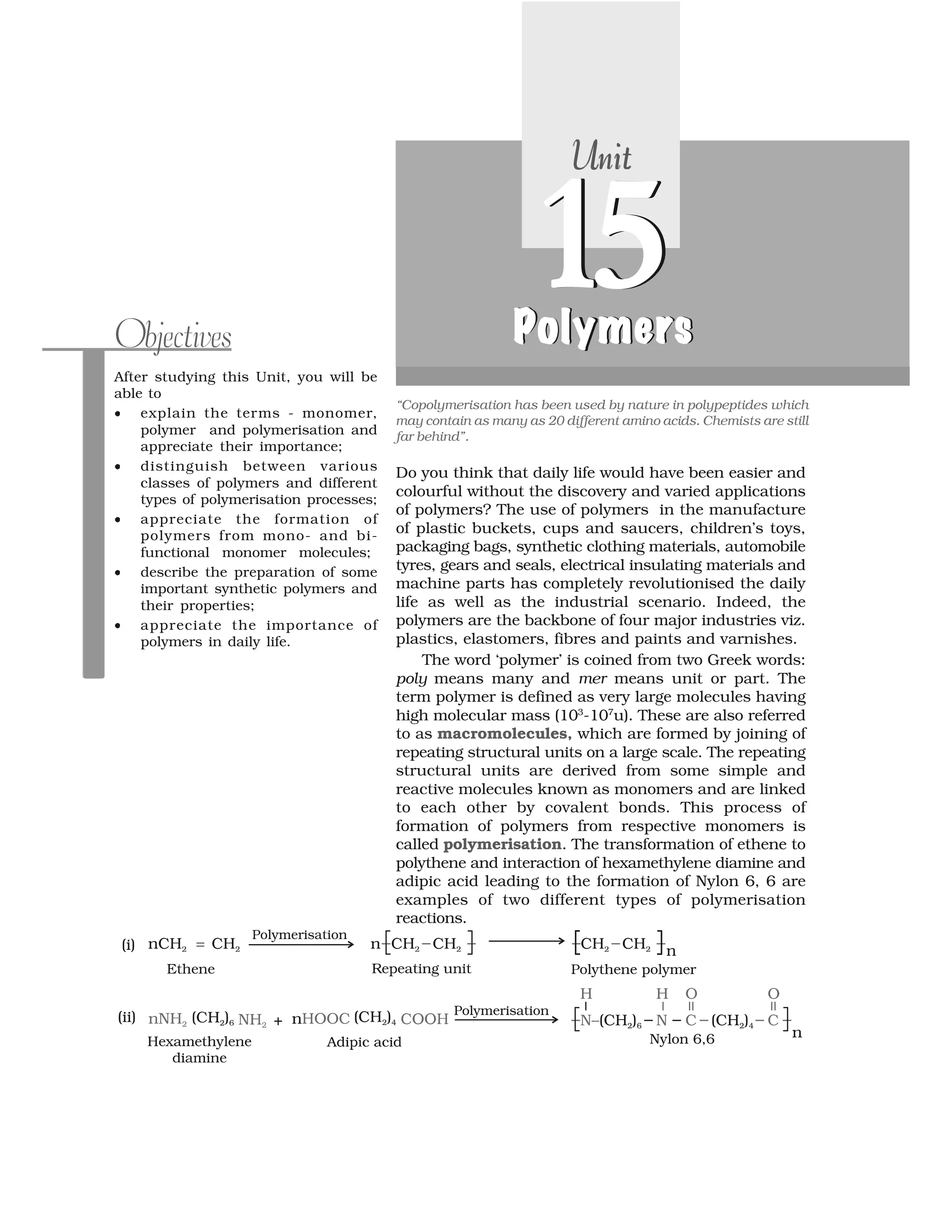
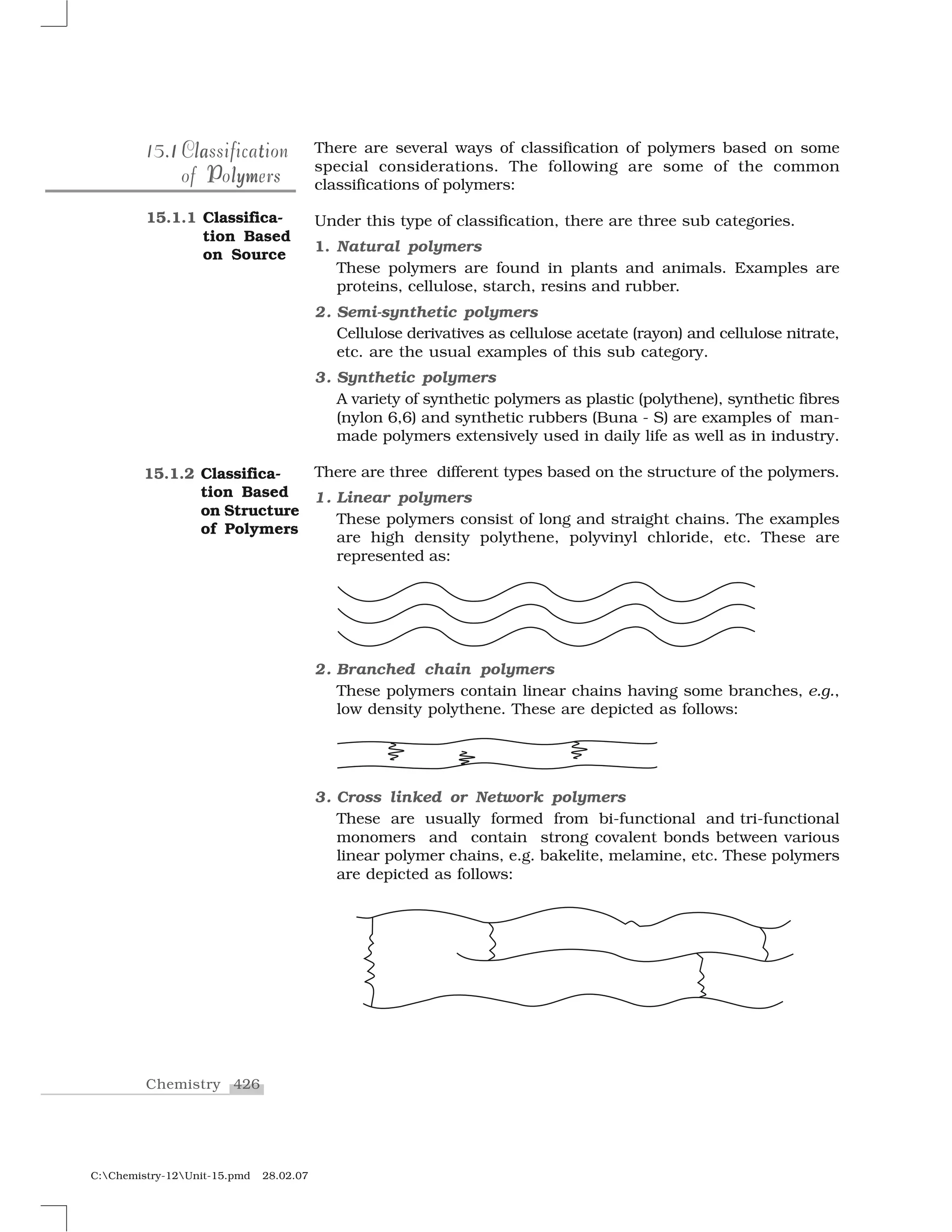
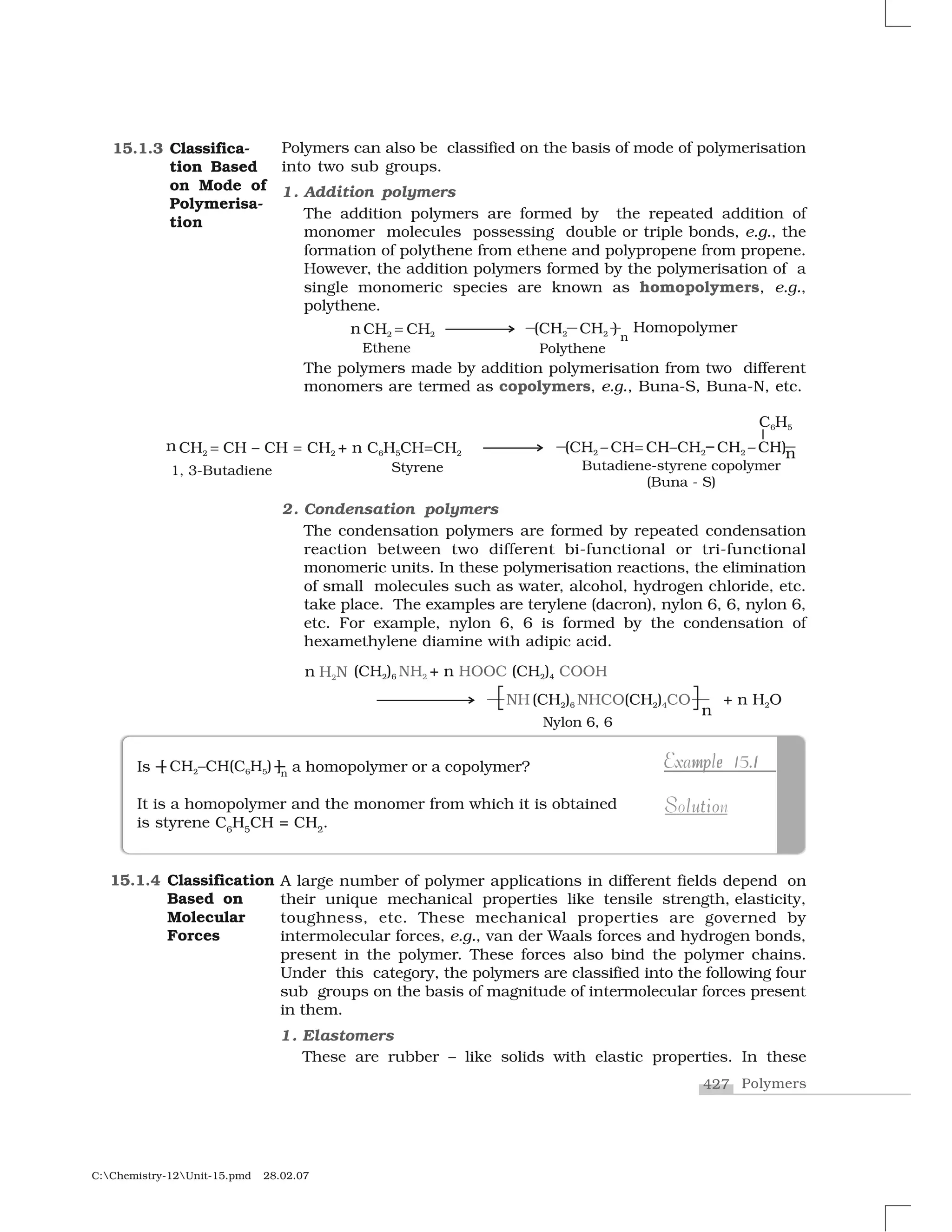

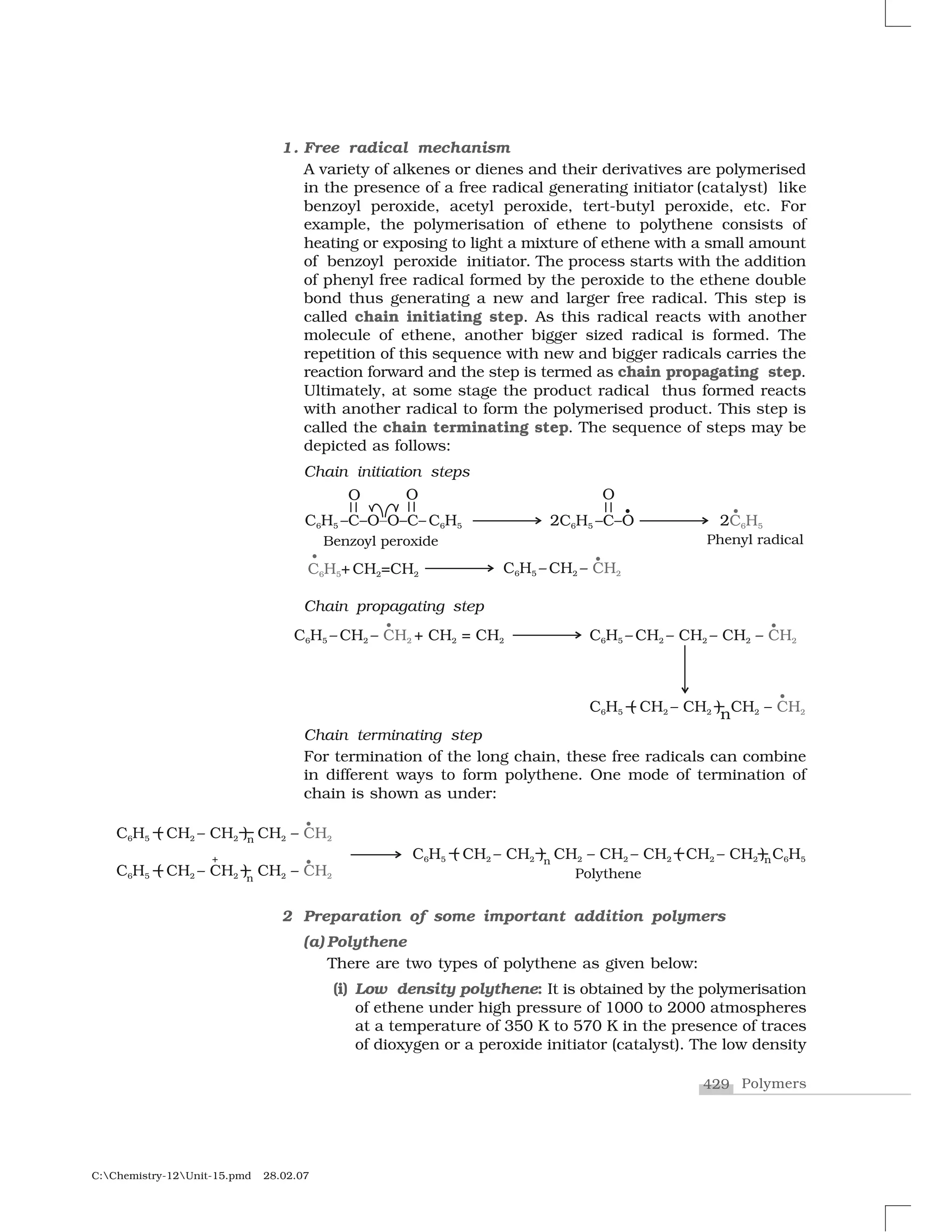

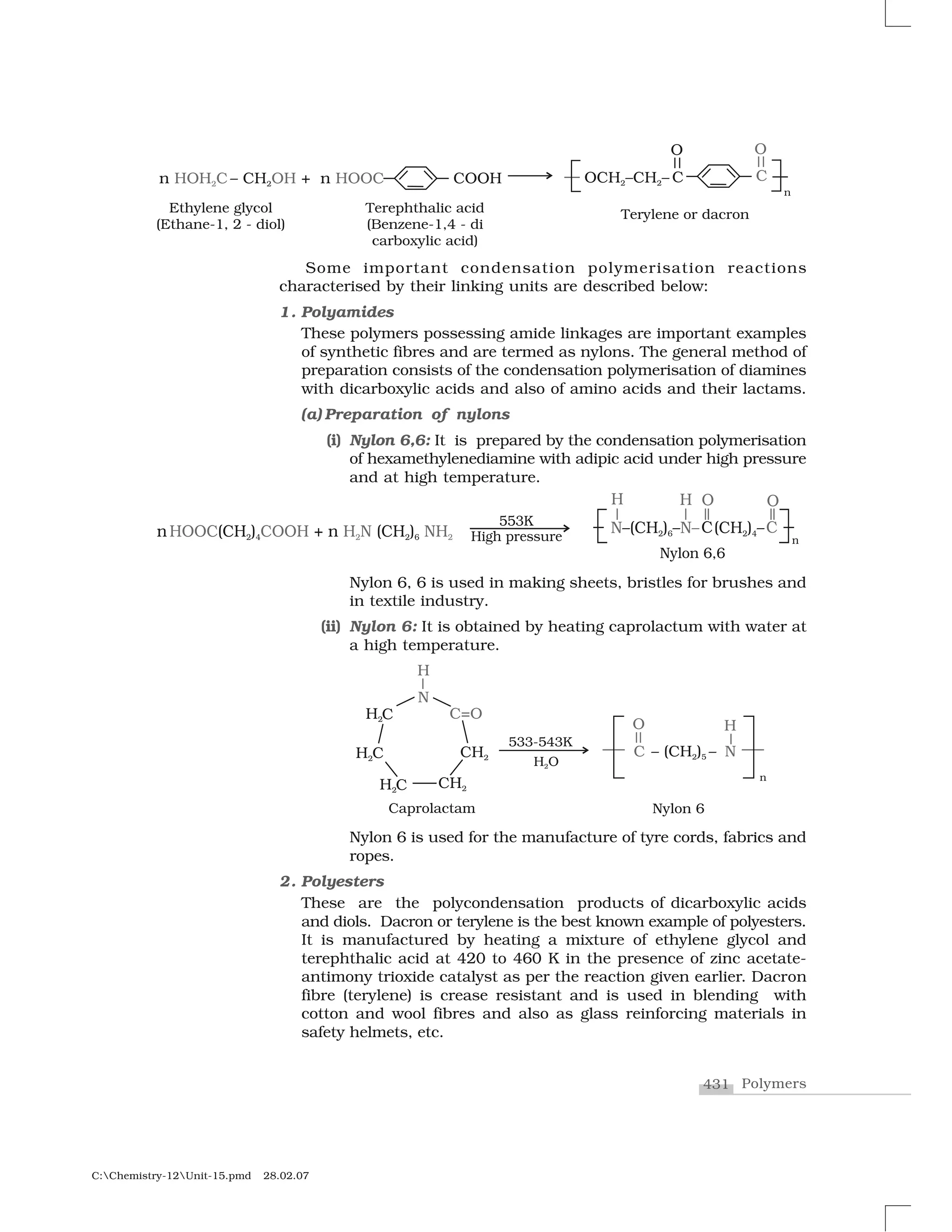
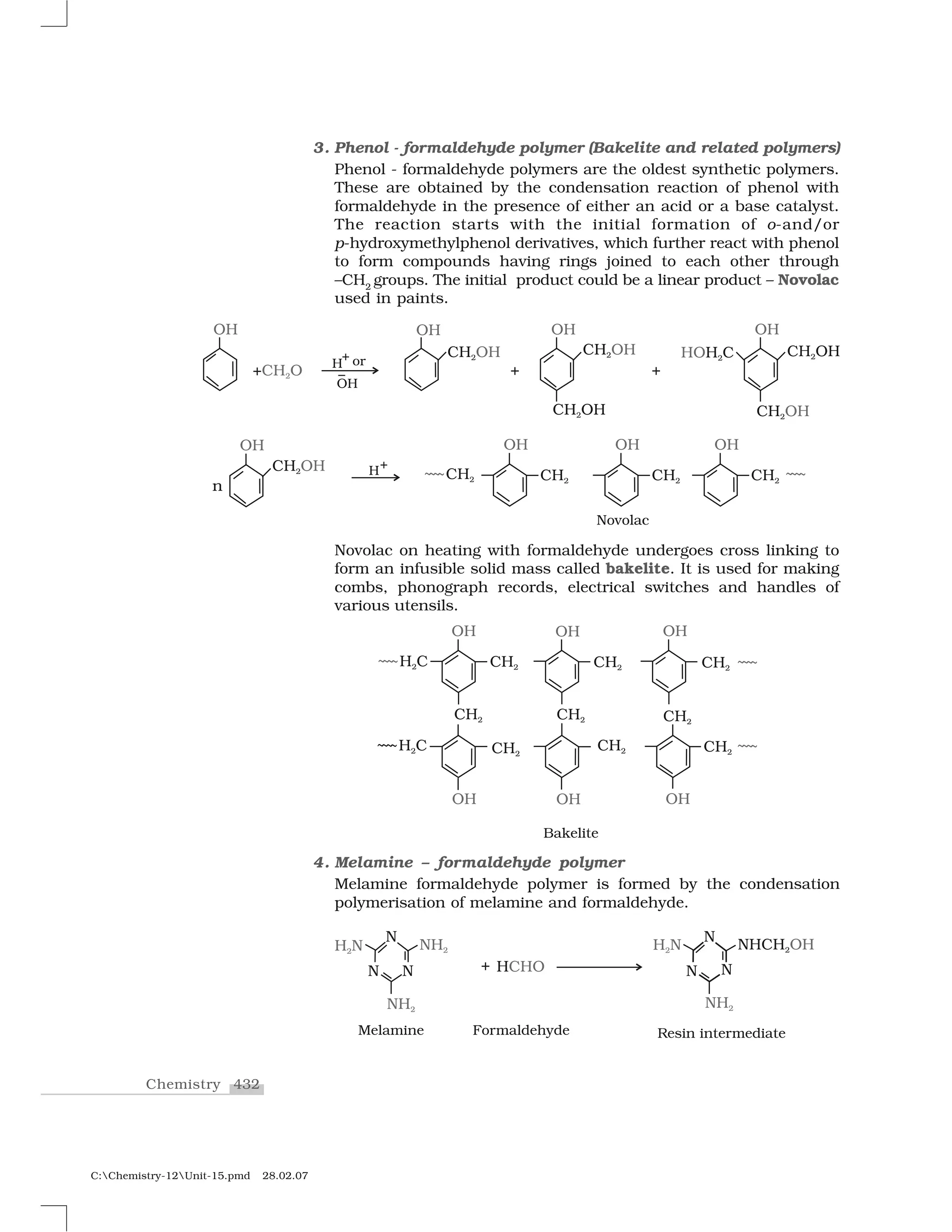
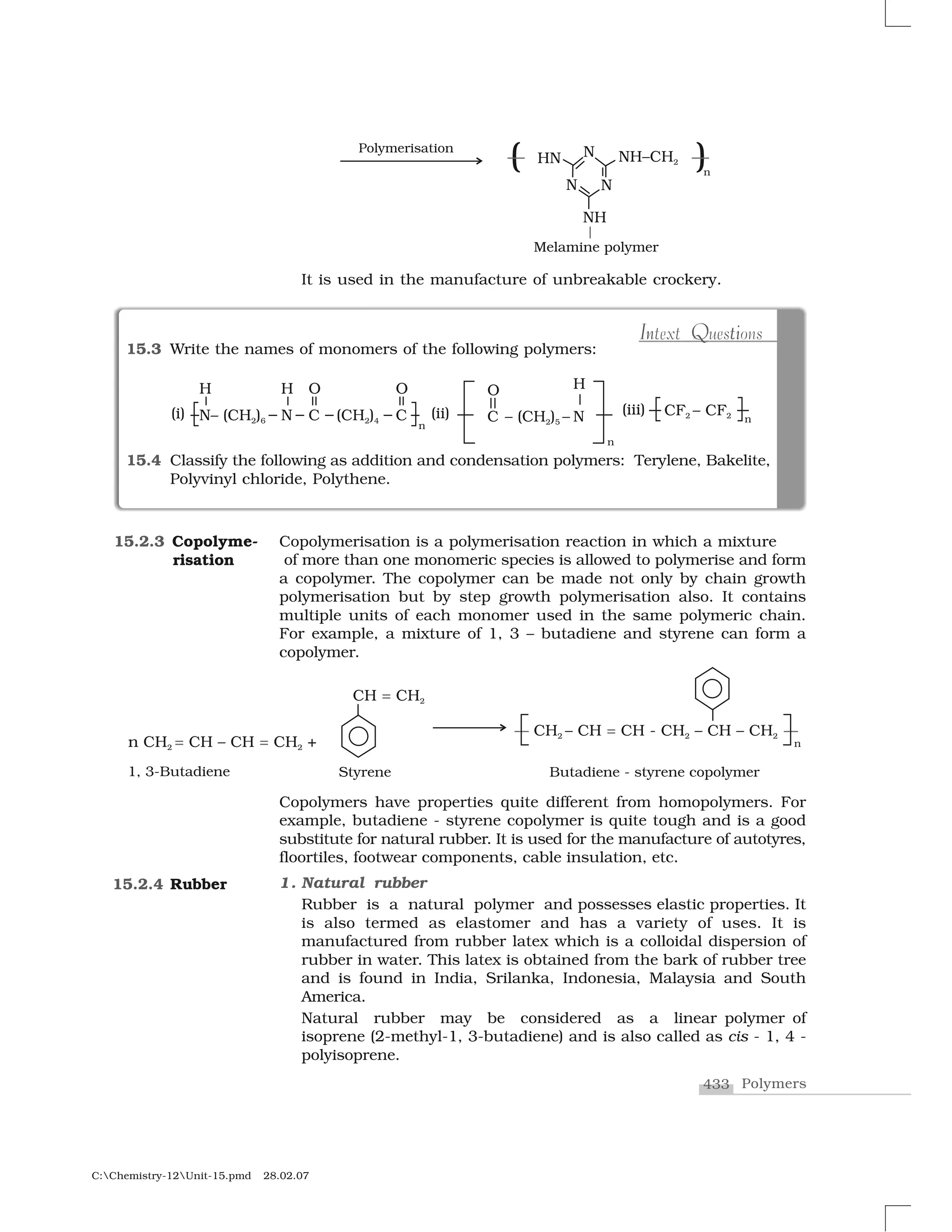
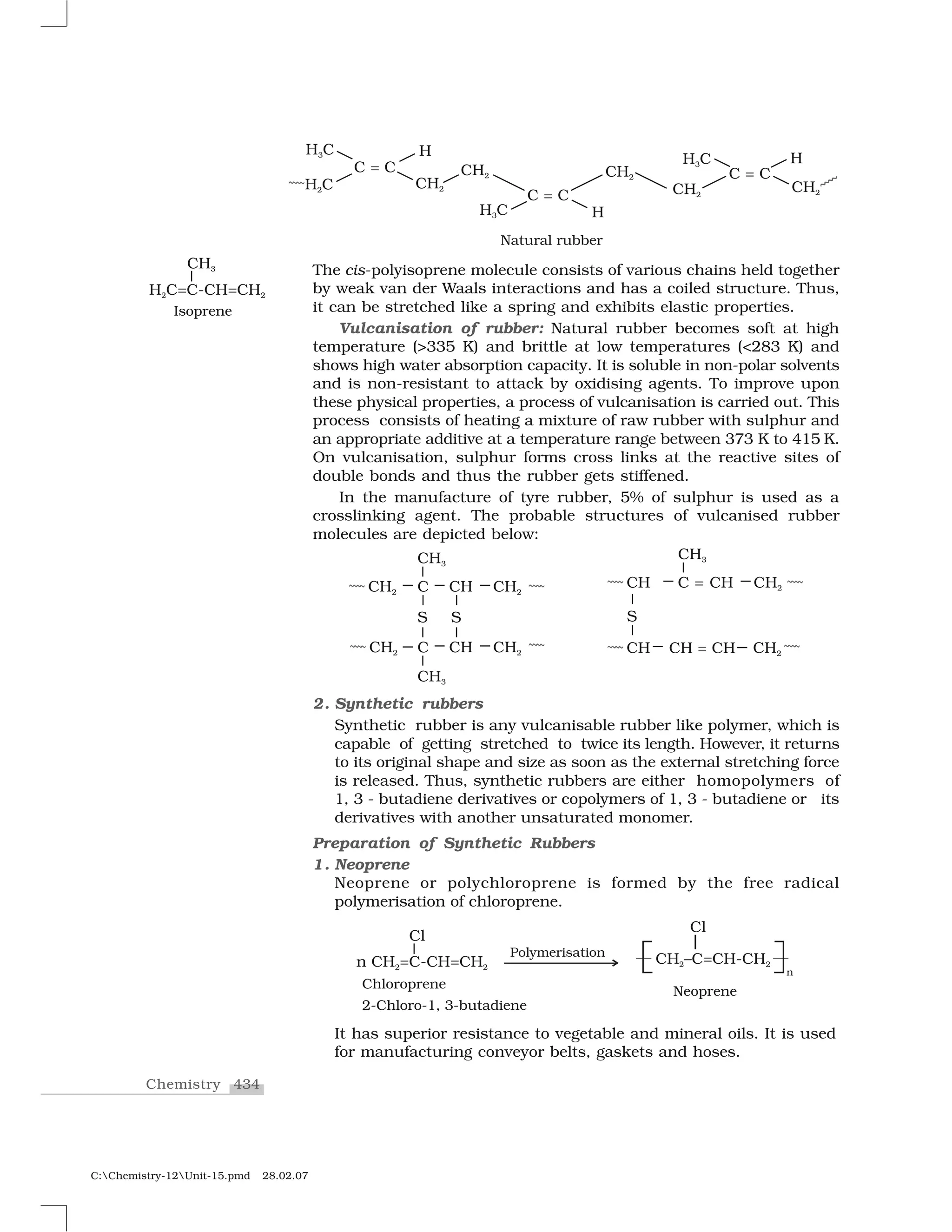
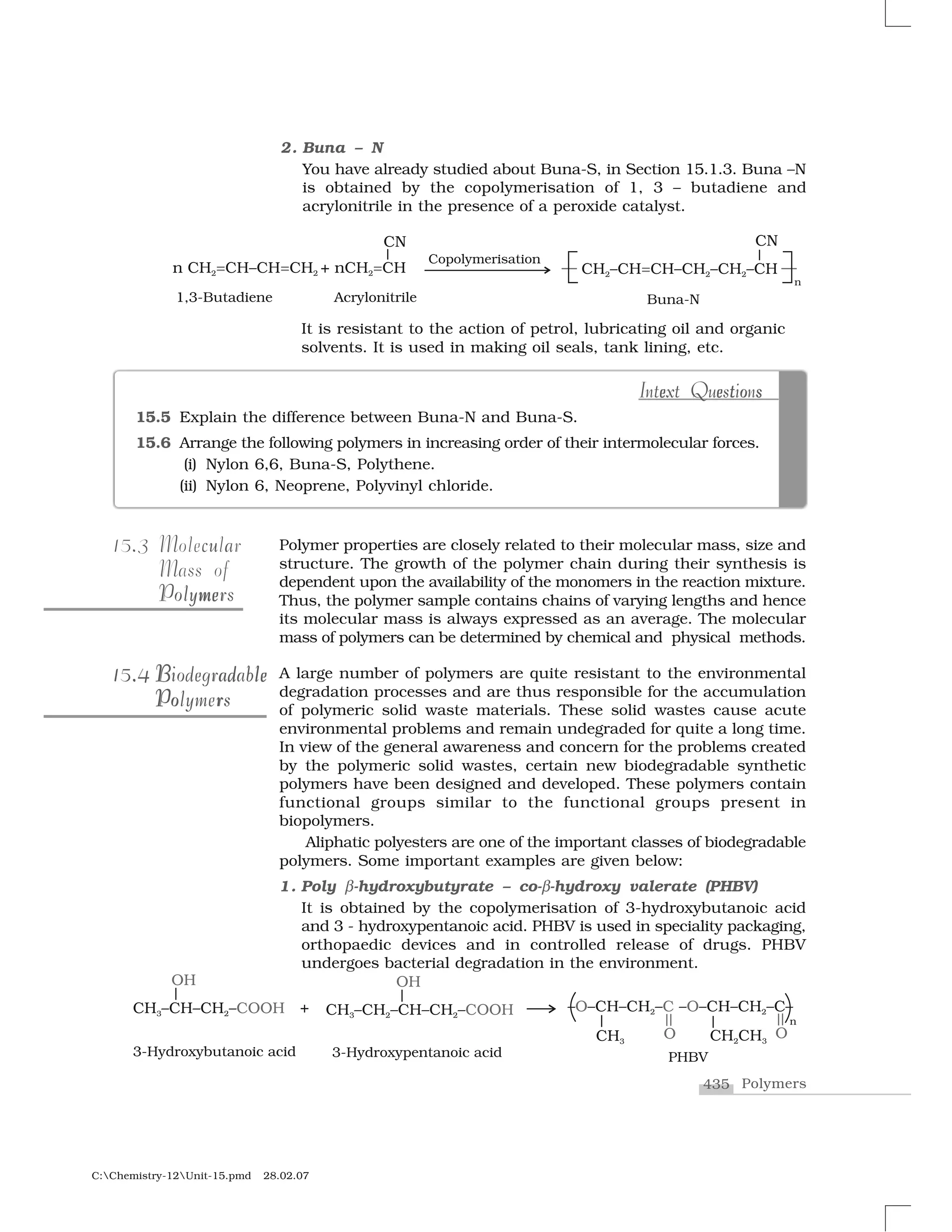
![436Chemistry
C:Chemistry-12Unit-15.pmd 28.02.07
Name of Polymer Monomer Structure Uses
Polypropene Propene Manufacture of
ropes, toys, pipes,
fibres, etc.
Polystyrene Styrene As insulator, wrapping
material, manufacture
of toys, radio and
television cabinets.
Polyvinyl chloride Vinyl chloride Manufacture of rain
(PVC) coats, hand bags, vinyl
flooring, water pipes.
Urea-formaldehyle (a) Urea For making unbreak-
Resin (b) Formaldehyde able cups and
laminated sheets.
Glyptal (a) Ethylene glycol Manufacture of
(b) Phthalic acid paints and lacquers.
Bakelite (a) Phenol For making combs,
(b) Formaldehyde electrical switches,
handles of utensils and
computer discs.
Table 15.1: Some Other Commercially Important Polymers
2. Nylon 2–nylon 6
It is an alternating polyamide copolymer of glycine (H2
N–CH2
–COOH)
and amino caproic acid [H2
N (CH2
)5
COOH] and is biodegradable.
Can you write the structure of this copolymer?
Besides, the polymers already discussed, some other commercially
important polymers along with their structures and uses are given
below in Table 15.1.
.15.5 s oPolymers of
ciomm aCommercial
m tpmp tImportanceImportance
Polymers are defined as high molecular mass macromolecules, which consist of
repeating structural units derived from the corresponding monomers. These polymers
may be of natural or synthetic origin and are classified in a number of ways.
In the presence of an organic peroxide initiator, the alkenes and their derivatives
undergo addition polymerisation or chain growth polymerisation through a free
radical mechanism. Polythene, teflon, orlon, etc. are formed by addition polymerisation
of an appropriate alkene or its derivative. Condensation polymerisation reactions are
am rySummary](https://image.slidesharecdn.com/ncert-class-12-chemistry-part-2-161112165510/75/Ncert-class-12-chemistry-part-2-162-2048.jpg)
